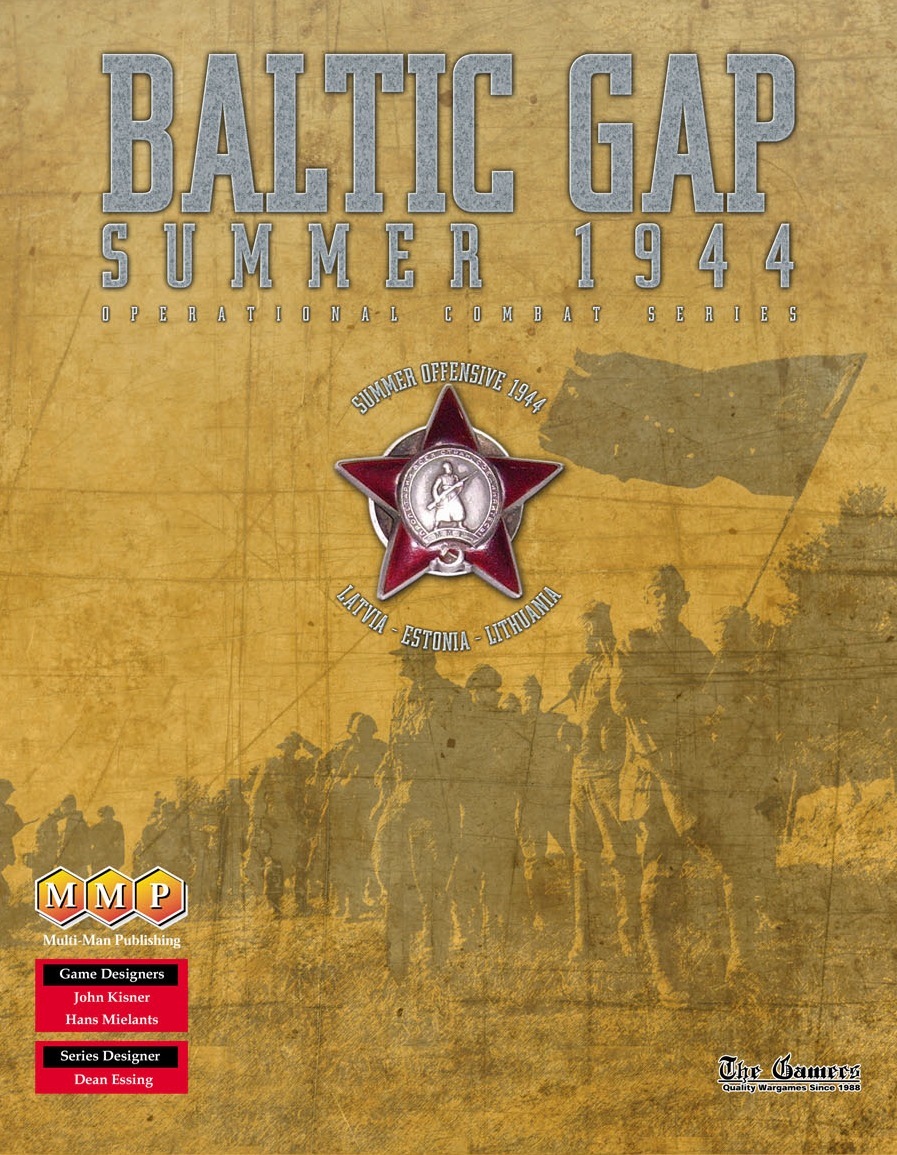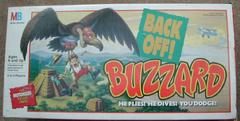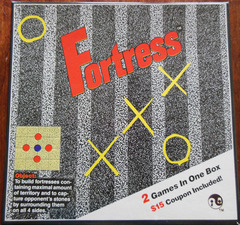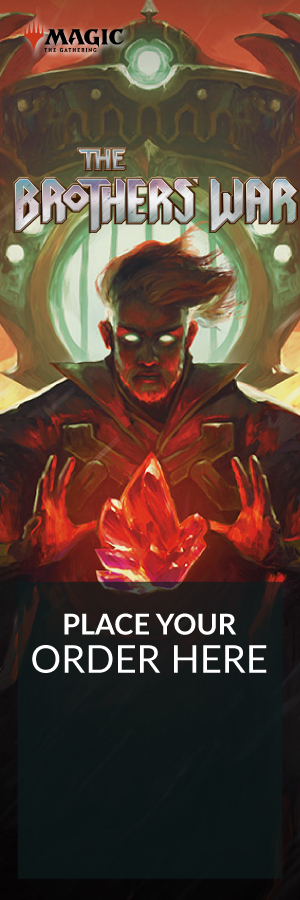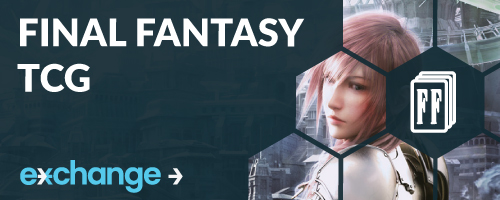[{"children":[{"parent_id":15270,"name":"Sorcery: Contested Realm - Alpha","path":"/catalog/sorcery_contested_realm_singles-sorcery_contested_realm__alpha/15271","photo_url":"","id":15271},{"parent_id":15270,"name":"Sorcery: Contested Realm - Beta","path":"/catalog/sorcery_contested_realm_singles-sorcery_contested_realm__beta/15272","photo_url":"","id":15272}],"parent_id":1,"name":"Sorcery: Contested Realm Singles","path":"/catalog/sorcery_contested_realm_singles/15270","photo_url":"","id":15270},{"children":[{"parent_id":15087,"name":"Promos","path":"/catalog/disney_lorcana_tcg_singles-promos/15088","photo_url":"","id":15088},{"parent_id":15087,"name":"The First Chapter","path":"/catalog/disney_lorcana_tcg_singles-the_first_chapter/15089","photo_url":"","id":15089},{"parent_id":15087,"name":"Rise of the Floodborn","path":"/catalog/disney_lorcana_tcg_singles-rise_of_the_floodborn/15281","photo_url":"","id":15281},{"parent_id":15087,"name":"Ursula's Return","path":"/catalog/disney_lorcana_tcg_singles-ursulas_return/15421","photo_url":"","id":15421},{"parent_id":15087,"name":"Into the Inklands","path":"/catalog/disney_lorcana_tcg_singles-into_the_inklands/15422","photo_url":"","id":15422},{"parent_id":15087,"name":"Shimmering Skies","path":"/catalog/disney_lorcana_tcg_singles-shimmering_skies/15538","photo_url":"","id":15538},{"parent_id":15087,"name":"D23 Promos","path":"/catalog/d23_promos/15554","photo_url":"","id":15554},{"parent_id":15087,"name":"Ursula's Return: Illumineer's Quest: Deep Trouble","path":"/catalog/disney_lorcana_tcg_singles-ursulas_return_illumineers_quest_deep_trouble/15555","photo_url":"","id":15555},{"parent_id":15087,"name":"Constructed Decks","path":"/catalog/disney_lorcana_tcg_singles-constructed/15556","photo_url":"","id":15556},{"parent_id":15087,"name":"Azurite Sea","path":"/catalog/disney_lorcana_tcg_singles-azurite_sea/15966","photo_url":"","id":15966},{"parent_id":15087,"name":"Archazia's Island","path":"/catalog/disney_lorcana_tcg_singles-archazias_island/16060","photo_url":"","id":16060}],"parent_id":1,"name":"Disney Lorcana TCG Singles","path":"/catalog/disney_lorcana_tcg_singles/15087","photo_url":"","id":15087},{"children":[{"parent_id":15082,"name":"Disney Lorcana Booster Boxes","path":"/catalog/disney_lorcana_tcg_sealed_products-disney_lorcana_booster_boxes/15083","photo_url":"","id":15083},{"parent_id":15082,"name":"Disney Lorcana Booster Packs","path":"/catalog/disney_lorcana_tcg_sealed_products-disney_lorcana_booster_packs/15084","photo_url":"","id":15084},{"parent_id":15082,"name":"Disney Lorcana Box Sets","path":"/catalog/disney_lorcana_tcg_sealed_products-disney_lorcana_box_sets/15085","photo_url":"","id":15085},{"parent_id":15082,"name":"Disney Lorcana Starter Decks","path":"/catalog/disney_lorcana_tcg_sealed_products-disney_lorcana_starter_decks/15086","photo_url":"","id":15086}],"parent_id":1,"name":"Disney Lorcana TCG Sealed Products","path":"/catalog/disney_lorcana_tcg_sealed_products/15082","photo_url":"","id":15082},{"children":[{"children":[{"parent_id":14792,"name":"Sword & Shield Base Set","path":"/catalog/pokemon_singles-sword__shield_sets-sword__shield_base_set/14779","photo_url":"","id":14779},{"parent_id":14792,"name":"Sword & Shield - Rebel Clash","path":"/catalog/pokemon_singles-sword__shield_sets-sword__shield__rebel_clash/14833","photo_url":"","id":14833},{"parent_id":14792,"name":"Sword & Shield - Darkness Ablaze","path":"/catalog/pokemon_singles-sword__shield_sets-sword__shield__darkness_ablaze/14901","photo_url":"","id":14901},{"parent_id":14792,"name":"Sword & Shield - Vivid Voltage","path":"/catalog/pokemon_singles-sword__shield_sets-sword__shield__vivid_voltage/15010","photo_url":"","id":15010},{"parent_id":14792,"name":"Sword & Shield - Battle Styles","path":"/catalog/pokemon_singles-sword__shield_sets-sword__shield__battle_styles/15011","photo_url":"","id":15011},{"parent_id":14792,"name":"Sword & Shield Booster Boxes","path":"/catalog/sword__shield_booster_boxes/15043","photo_url":"","id":15043},{"parent_id":14792,"name":"Sword & Shield Booster Packs","path":"/catalog/sword__shield_booster_packs/15044","photo_url":"","id":15044},{"parent_id":14792,"name":"Sword & Shield - Shining Fates","path":"/catalog/pokemon_singles-sword__shield_sets-sword__shield__shining_fates/15045","photo_url":"","id":15045},{"parent_id":14792,"name":"Sword & Shield - Astral Radiance","path":"/catalog/pokemon_singles-sword__shield_sets-sword__shield__astral_radiance/15054","photo_url":"","id":15054},{"parent_id":14792,"name":"Sword & Shield - Brilliant Stars","path":"/catalog/pokemon_singles-sword__shield_sets-sword__shield__brilliant_stars/15055","photo_url":"","id":15055},{"parent_id":14792,"name":"Sword & Shield - Evolving Skies","path":"/catalog/pokemon_singles-sword__shield_sets-sword__shield__evolving_skies/15056","photo_url":"","id":15056},{"parent_id":14792,"name":"Sword & Shield - Chilling Reign","path":"/catalog/pokemon_singles-sword__shield_sets-sword__shield__chilling_reign/15057","photo_url":"","id":15057},{"parent_id":14792,"name":"Sword & Shield - Champion's Path","path":"/catalog/pokemon_singles-sword__shield_sets-sword__shield__champions_path/15050","photo_url":"","id":15050},{"parent_id":14792,"name":"Sword & Shield - Astral Radiance - Trainer Gallery","path":"/catalog/sword__shield__astral_radiance__trainer_gallery/15512","photo_url":"","id":15512},{"parent_id":14792,"name":"Sword & Shield - Brilliant Stars - Trainer Gallery","path":"/catalog/sword__shield__brilliant_stars__trainer_gallery/15513","photo_url":"","id":15513},{"parent_id":14792,"name":"Sword & Shield - Crown Zenith","path":"/catalog/pokemon_singles-sword__shield_sets-sword__shield__crown_zenith/15514","photo_url":"","id":15514},{"parent_id":14792,"name":"Sword & Shield - Crown Zenith - Galarian Gallery","path":"/catalog/sword__shield__crown_zenith__galarian_gallery/15515","photo_url":"","id":15515},{"parent_id":14792,"name":"Sword & Shield - Fusion Strike","path":"/catalog/pokemon_singles-sword__shield_sets-sword__shield__fusion_strike/15516","photo_url":"","id":15516},{"parent_id":14792,"name":"Sword & Shield - Lost Origin","path":"/catalog/pokemon_singles-sword__shield_sets-sword__shield__lost_origin/15517","photo_url":"","id":15517},{"parent_id":14792,"name":"Sword & Shield - Lost Origin - Trainer Gallery","path":"/catalog/sword__shield__lost_origin__trainer_gallery/15518","photo_url":"","id":15518},{"parent_id":14792,"name":"Sword & Shield - Silver Tempest","path":"/catalog/pokemon_singles-sword__shield_sets-sword__shield__silver_tempest/15519","photo_url":"","id":15519},{"parent_id":14792,"name":"Sword & Shield - Silver Tempest - Trainer Gallery","path":"/catalog/sword__shield__silver_tempest__trainer_gallery/15520","photo_url":"","id":15520}],"parent_id":226,"name":"Sword & Shield Sets","path":"/catalog/pokemon_singles-sword__shield_sets/14792","photo_url":"","id":14792},{"children":[{"parent_id":13573,"name":"Lost Thunder","path":"/catalog/pokemon_singles-sun_and_moon_sets-lost_thunder/14558","photo_url":"","id":14558},{"parent_id":13573,"name":"Dragon Majesty","path":"/catalog/pokemon_singles-sun_and_moon_sets-dragon_majesty/14559","photo_url":"","id":14559},{"parent_id":13573,"name":"Celestial Storm","path":"/catalog/pokemon_singles-sun_and_moon_sets-celestial_storm/14303","photo_url":"","id":14303},{"parent_id":13573,"name":"Forbidden Light","path":"/catalog/pokemon_singles-sun_and_moon_sets-forbidden_light/13723","photo_url":"","id":13723},{"parent_id":13573,"name":"Crimson Invasion","path":"/catalog/pokemon_singles-sun_and_moon_sets-crimson_invasion/13633","photo_url":"","id":13633},{"parent_id":13573,"name":"Ultra Prism","path":"/catalog/pokemon_singles-sun_and_moon_sets-ultra_prism/13653","photo_url":"","id":13653},{"parent_id":13573,"name":"Shining Legends","path":"/catalog/pokemon_singles-sun_and_moon_sets-shining_legends/13743","photo_url":"","id":13743},{"parent_id":13573,"name":"Burning Shadows","path":"/catalog/pokemon_singles-sun_and_moon_sets-burning_shadows/13603","photo_url":"","id":13603},{"parent_id":13573,"name":"Guardians Rising","path":"/catalog/pokemon_singles-sun_and_moon_sets-guardians_rising/13593","photo_url":"","id":13593},{"parent_id":13573,"name":"Sun and Moon Base Set","path":"/catalog/pokemon_singles-sun_and_moon_sets-sun_and_moon_base_set/13583","photo_url":"","id":13583},{"parent_id":13573,"name":"Team Up","path":"/catalog/pokemon_singles-sun_and_moon_sets-team_up/14595","photo_url":"","id":14595},{"parent_id":13573,"name":"Unbroken Bonds","path":"/catalog/pokemon_singles-sun_and_moon_sets-unbroken_bonds/14635","photo_url":"","id":14635},{"parent_id":13573,"name":"Sun & Moon Trainer Kit - Alolan Sandslash & Alolan Ninetales","path":"/catalog/pokemon_singles-sun_and_moon_sets-sun__moon_trainer_kit__alolan_sandslash__alolan_ninetales/14608","photo_url":"","id":14608},{"parent_id":13573,"name":"Unified Minds","path":"/catalog/pokemon_singles-sun_and_moon_sets-unified_minds/14702","photo_url":"","id":14702},{"parent_id":13573,"name":"Cosmic Eclipse","path":"/catalog/pokemon_singles-sun_and_moon_sets-cosmic_eclipse/14748","photo_url":"","id":14748}],"parent_id":226,"name":"Sun and Moon Sets","path":"/catalog/pokemon_singles-sun_and_moon_sets/13573","photo_url":"","id":13573},{"children":[{"parent_id":9833,"name":"XY Base Set","path":"/catalog/pokemon_singles-xy_sets-xy_base_set/9843","photo_url":"","id":9843},{"parent_id":9833,"name":"XY FlashFire","path":"/catalog/pokemon_singles-xy_sets-xy_flashfire/9853","photo_url":"","id":9853},{"parent_id":9833,"name":"Furious Fists","path":"/catalog/pokemon_singles-xy_sets-furious_fists/9863","photo_url":"","id":9863},{"parent_id":9833,"name":"Phantom Forces","path":"/catalog/pokemon_singles-xy_sets-phantom_forces/9873","photo_url":"","id":9873},{"parent_id":9833,"name":"Primal Clash","path":"/catalog/pokemon_singles-xy_sets-primal_clash/9883","photo_url":"","id":9883},{"parent_id":9833,"name":"Roaring Skies","path":"/catalog/pokemon_singles-xy_sets-roaring_skies/9893","photo_url":"","id":9893},{"parent_id":9833,"name":"Ancient Origins","path":"/catalog/pokemon_singles-xy_sets-ancient_origins/9903","photo_url":"","id":9903},{"parent_id":9833,"name":"Double Crisis","path":"/catalog/pokemon_singles-xy_sets-double_crisis/9913","photo_url":"","id":9913},{"parent_id":9833,"name":"BREAKThrough","path":"/catalog/pokemon_singles-xy_sets-breakthrough/9923","photo_url":"","id":9923},{"parent_id":9833,"name":"BREAKPoint","path":"/catalog/pokemon_singles-xy_sets-breakpoint/9933","photo_url":"","id":9933},{"parent_id":9833,"name":"Generations","path":"/catalog/pokemon_singles-xy_sets-generations/9943","photo_url":"","id":9943},{"parent_id":9833,"name":"XY Fates Collide","path":"/catalog/pokemon_singles-xy_sets-xy_fates_collide/12313","photo_url":"","id":12313},{"parent_id":9833,"name":"Steam Siege","path":"/catalog/pokemon_singles-xy_sets-steam_siege/14885","photo_url":"","id":14885},{"parent_id":9833,"name":"XY Evolutions","path":"/catalog/pokemon_singles-xy_sets-xy_evolutions/14909","photo_url":"","id":14909},{"parent_id":9833,"name":"XY Kalos Starter Sets","path":"/catalog/pokemon_singles-promos-wizards_black_star_promos/15536","photo_url":"","id":15536}],"parent_id":226,"name":"XY Sets","path":"/catalog/pokemon_singles-xy_sets/9833","photo_url":"","id":9833},{"children":[{"children":[{"parent_id":325,"name":"Plasma Blast","path":"/catalog/pokemon_singles-black_and_white_sets-black_and_white-plasma_blast/8387","photo_url":"","id":8387}],"parent_id":1211,"name":"Black and White","path":"/catalog/pokemon_singles-black_and_white_sets-black_and_white/325","photo_url":"","id":325},{"parent_id":1211,"name":"Boundaries Crossed","path":"/catalog/pokemon_singles-black_and_white_sets-boundaries_crossed/677","photo_url":"","id":677},{"parent_id":1211,"name":"Dark Explorers","path":"/catalog/pokemon_singles-black_and_white_sets-dark_explorers/667","photo_url":"","id":667},{"parent_id":1211,"name":"Dragons Exalted","path":"/catalog/pokemon_singles-black_and_white_sets-dragons_exalted/668","photo_url":"","id":668},{"parent_id":1211,"name":"Emerging Powers","path":"/catalog/pokemon_singles-black_and_white_sets-emerging_powers/348","photo_url":"","id":348},{"parent_id":1211,"name":"Next Destinies","path":"/catalog/pokemon_singles-black_and_white_sets-next_destinies/321","photo_url":"","id":321},{"parent_id":1211,"name":"Noble Victories","path":"/catalog/pokemon_singles-black_and_white_sets-noble_victories/322","photo_url":"","id":322},{"parent_id":1211,"name":"Plasma Storm","path":"/catalog/pokemon_singles-black_and_white_sets-plasma_storm/1281","photo_url":"","id":1281},{"parent_id":1211,"name":"Plasma Freeze","path":"/catalog/pokemon_singles-black_and_white_sets-plasma_freeze/14880","photo_url":"","id":14880},{"parent_id":1211,"name":"Legendary Treasures","path":"/catalog/pokemon_singles-black_and_white_sets-legendary_treasures/14881","photo_url":"","id":14881}],"parent_id":226,"name":"Black and White Sets","path":"/catalog/pokemon_singles-black_and_white_sets/1211","photo_url":"","id":1211},{"children":[{"parent_id":1221,"name":"HeartGold SoulSilver","path":"/catalog/pokemon_singles-heartgold_soulsilver_sets-heartgold_soulsilver/358","photo_url":"","id":358},{"parent_id":1221,"name":"Undaunted","path":"/catalog/pokemon_singles-heartgold_soulsilver_sets-undaunted/356","photo_url":"","id":356},{"parent_id":1221,"name":"Unleashed","path":"/catalog/pokemon_singles-heartgold_soulsilver_sets-unleashed/357","photo_url":"","id":357},{"parent_id":1221,"name":"Triumphant","path":"/catalog/pokemon_singles-heartgold_soulsilver_sets-triumphant/355","photo_url":"","id":355},{"parent_id":1221,"name":"Trainer Kit","path":"/catalog/pokemon_singles-heartgold_soulsilver_sets-trainer_kit/15492","photo_url":"","id":15492}],"parent_id":226,"name":"HeartGold SoulSilver Sets","path":"/catalog/pokemon_singles-heartgold_soulsilver_sets/1221","photo_url":"","id":1221},{"children":[{"parent_id":1231,"name":"Platinum","path":"/catalog/pokemon_singles-platinum_sets-platinum/376","photo_url":"","id":376},{"parent_id":1231,"name":"Rising Rivals","path":"/catalog/pokemon_singles-platinum_sets-rising_rivals/378","photo_url":"","id":378},{"parent_id":1231,"name":"Supreme Victors","path":"/catalog/pokemon_singles-platinum_sets-supreme_victors/383","photo_url":"","id":383},{"parent_id":1231,"name":"Arceus","path":"/catalog/pokemon_singles-platinum_sets-arceus/320","photo_url":"","id":320}],"parent_id":226,"name":"Platinum Sets","path":"/catalog/pokemon_singles-platinum_sets/1231","photo_url":"","id":1231},{"children":[{"parent_id":1241,"name":"Diamond and Pearl","path":"/catalog/pokemon_singles-diamond_and_pearl_sets-diamond_and_pearl/329","photo_url":"","id":329},{"parent_id":1241,"name":"Great Encounters","path":"/catalog/pokemon_singles-diamond_and_pearl_sets-great_encounters/351","photo_url":"","id":351},{"parent_id":1241,"name":"Legends Awakened","path":"/catalog/pokemon_singles-diamond_and_pearl_sets-legends_awakened/361","photo_url":"","id":361},{"parent_id":1241,"name":"Majestic Dawn","path":"/catalog/pokemon_singles-diamond_and_pearl_sets-majestic_dawn/362","photo_url":"","id":362},{"parent_id":1241,"name":"Mysterious Treasures","path":"/catalog/pokemon_singles-diamond_and_pearl_sets-mysterious_treasures/363","photo_url":"","id":363},{"parent_id":1241,"name":"Secret Wonders","path":"/catalog/pokemon_singles-diamond_and_pearl_sets-secret_wonders/379","photo_url":"","id":379},{"parent_id":1241,"name":"Stormfront","path":"/catalog/pokemon_singles-diamond_and_pearl_sets-stormfront/382","photo_url":"","id":382},{"parent_id":1241,"name":"DP Training Kit 1 Blue","path":"/catalog/pokemon_singles-diamond_and_pearl_sets-dp_training_kit_1_blue/327","photo_url":"","id":327},{"parent_id":1241,"name":"DP Training Kit 1 Gold","path":"/catalog/pokemon_singles-diamond_and_pearl_sets-dp_training_kit_1_gold/328","photo_url":"","id":328}],"parent_id":226,"name":"Diamond and Pearl Sets","path":"/catalog/pokemon_singles-diamond_and_pearl_sets/1241","photo_url":"","id":1241},{"children":[{"parent_id":1251,"name":"EX Crystal Guardians","path":"/catalog/pokemon_singles-ex_sets-ex_crystal_guardians/330","photo_url":"","id":330},{"parent_id":1251,"name":"EX Delta Species","path":"/catalog/pokemon_singles-ex_sets-ex_delta_species/331","photo_url":"","id":331},{"parent_id":1251,"name":"EX Deoxys","path":"/catalog/pokemon_singles-ex_sets-ex_deoxys/332","photo_url":"","id":332},{"parent_id":1251,"name":"EX Dragon","path":"/catalog/pokemon_singles-ex_sets-ex_dragon/333","photo_url":"","id":333},{"parent_id":1251,"name":"EX Dragon Frontiers","path":"/catalog/pokemon_singles-ex_sets-ex_dragon_frontiers/334","photo_url":"","id":334},{"parent_id":1251,"name":"EX Emerald","path":"/catalog/pokemon_singles-ex_sets-ex_emerald/335","photo_url":"","id":335},{"parent_id":1251,"name":"EX FireRed & LeafGreen","path":"/catalog/pokemon_singles-ex_sets-ex_firered__leafgreen/336","photo_url":"","id":336},{"parent_id":1251,"name":"EX Hidden Legends","path":"/catalog/pokemon_singles-ex_sets-ex_hidden_legends/337","photo_url":"","id":337},{"parent_id":1251,"name":"EX Holon Phantoms","path":"/catalog/pokemon_singles-ex_sets-ex_holon_phantoms/338","photo_url":"","id":338},{"parent_id":1251,"name":"EX Legend Maker","path":"/catalog/pokemon_singles-ex_sets-ex_legend_maker/339","photo_url":"","id":339},{"parent_id":1251,"name":"EX Power Keepers","path":"/catalog/pokemon_singles-ex_sets-ex_power_keepers/340","photo_url":"","id":340},{"parent_id":1251,"name":"EX Ruby and Sapphire","path":"/catalog/pokemon_singles-ex_sets-ex_ruby_and_sapphire/341","photo_url":"","id":341},{"parent_id":1251,"name":"EX Sandstorm","path":"/catalog/pokemon_singles-ex_sets-ex_sandstorm/342","photo_url":"","id":342},{"parent_id":1251,"name":"EX Team Magma vs Team Aqua","path":"/catalog/pokemon_singles-ex_sets-ex_team_magma_vs_team_aqua/343","photo_url":"","id":343},{"parent_id":1251,"name":"EX Team Rocket Returns","path":"/catalog/pokemon_singles-ex_sets-ex_team_rocket_returns/344","photo_url":"","id":344},{"parent_id":1251,"name":"EX Unseen Forces","path":"/catalog/pokemon_singles-ex_sets-ex_unseen_forces/347","photo_url":"","id":347},{"parent_id":1251,"name":"EX Trainer Kit 1 Blue","path":"/catalog/pokemon_singles-ex_sets-ex_trainer_kit_1_blue/345","photo_url":"","id":345},{"parent_id":1251,"name":"EX Trainer Kit 1 Red","path":"/catalog/pokemon_singles-ex_sets-ex_trainer_kit_1_red/346","photo_url":"","id":346},{"parent_id":1251,"name":"Ex Battle Stadium","path":"/catalog/pokemon_singles-ex_battle_stadium/15051","photo_url":"","id":15051},{"parent_id":1251,"name":"EX Trainer Kit 2: Minun & Plusle","path":"/catalog/pokemon_singles-ex_sets-ex_trainer_kit_2_minun__plusle/15854","photo_url":"","id":15854}],"parent_id":226,"name":"EX Sets","path":"/catalog/pokemon_singles-ex_sets/1251","photo_url":"","id":1251},{"children":[{"parent_id":1261,"name":"BW Black Star Promos","path":"/catalog/pokemon_singles-promos-bw_black_star_promos/1291","photo_url":"","id":1291},{"parent_id":1261,"name":"Pokemon Promos","path":"/catalog/pokemon_singles-promos-pokemon_promos/377","photo_url":"","id":377},{"parent_id":1261,"name":"HGSS Black Star Promos","path":"/catalog/pokemon_singles-promos-hgss_black_star_promos/354","photo_url":"","id":354},{"parent_id":1261,"name":"SM Black Star Promos","path":"/catalog/pokemon_singles-promos-sm_black_star_promos/14578","photo_url":"","id":14578},{"parent_id":1261,"name":"Pokemon Oversized Promos","path":"/catalog/pokemon_singles-promos-pokemon_oversized_promos/14737","photo_url":"","id":14737},{"parent_id":1261,"name":"SWSH Black Star Promos","path":"/catalog/pokemon_singles-promos-swsh_black_star_promos/14773","photo_url":"","id":14773},{"parent_id":1261,"name":"XY Black Star Promos","path":"/catalog/pokemon_singles-promos-xy_black_star_promos/14884","photo_url":"","id":14884},{"parent_id":1261,"name":"SVP Black Star Promos","path":"/catalog/svp_black_star_promos/15491","photo_url":"","id":15491},{"parent_id":1261,"name":"DP Black Star Promos","path":"/catalog/pokemon_singles-dp_black_star_promos/14991","photo_url":"","id":14991},{"parent_id":1261,"name":"McDonald's Promos","path":"/catalog/mcdonalds_promos/15493","photo_url":"","id":15493},{"parent_id":1261,"name":"Nintendo Black Star Promos","path":"/catalog/pokemon_singles-promos-nintendo_black_star_promos/15494","photo_url":"","id":15494},{"parent_id":1261,"name":"Pokemon Japanese Promos","path":"/catalog/pokemon_singles-promos-pokemon_japanese_promos/15496","photo_url":"","id":15496}],"parent_id":226,"name":"Promos","path":"/catalog/pokemon_singles-promos/1261","photo_url":"","id":1261},{"children":[{"parent_id":1271,"name":"POP Series Promos 1","path":"/catalog/pokemon_singles-pop_series_promos-pop_series_promos_1/368","photo_url":"","id":368},{"parent_id":1271,"name":"POP Series Promos 2","path":"/catalog/pokemon_singles-pop_series_promos-pop_series_promos_2/369","photo_url":"","id":369},{"parent_id":1271,"name":"POP Series Promos 3","path":"/catalog/pokemon_singles-pop_series_promos-pop_series_promos_3/370","photo_url":"","id":370},{"parent_id":1271,"name":"POP Series Promos 4","path":"/catalog/pokemon_singles-pop_series_promos-pop_series_promos_4/371","photo_url":"","id":371},{"parent_id":1271,"name":"POP Series Promos 5","path":"/catalog/pokemon_singles-pop_series_promos-pop_series_promos_5/372","photo_url":"","id":372},{"parent_id":1271,"name":"POP Series Promos 6","path":"/catalog/pokemon_singles-pop_series_promos-pop_series_promos_6/373","photo_url":"","id":373},{"parent_id":1271,"name":"POP Series Promos 7","path":"/catalog/pokemon_singles-pop_series_promos-pop_series_promos_7/374","photo_url":"","id":374},{"parent_id":1271,"name":"POP Series Promos 8","path":"/catalog/pokemon_singles-pop_series_promos-pop_series_promos_8/375","photo_url":"","id":375},{"parent_id":1271,"name":"POP Series Promos 9","path":"/catalog/pop_series_promos_9/15495","photo_url":"","id":15495}],"parent_id":226,"name":"Pop Series Promos","path":"/catalog/pokemon_singles-pop_series_promos/1271","photo_url":"","id":1271},{"parent_id":226,"name":"Aquapolis","path":"/catalog/pokemon_singles-aquapolis/319","photo_url":"","id":319},{"parent_id":226,"name":"Call of Legends","path":"/catalog/pokemon_singles-call_of_legends/326","photo_url":"","id":326},{"parent_id":226,"name":"Dragon Vault","path":"/catalog/pokemon_singles-dragon_vault/678","photo_url":"","id":678},{"parent_id":226,"name":"Expedition","path":"/catalog/pokemon_singles-expedition/349","photo_url":"","id":349},{"parent_id":226,"name":"Fossil","path":"/catalog/pokemon_singles-fossil/350","photo_url":"","id":350},{"parent_id":226,"name":"Gym Challange","path":"/catalog/pokemon_singles-gym_challange/352","photo_url":"","id":352},{"parent_id":226,"name":"Gym Heroes","path":"/catalog/pokemon_singles-gym_heroes/353","photo_url":"","id":353},{"parent_id":226,"name":"Jungle","path":"/catalog/pokemon_singles-jungle/359","photo_url":"","id":359},{"parent_id":226,"name":"Legendary Collection","path":"/catalog/pokemon_singles-legendary_collection/360","photo_url":"","id":360},{"parent_id":226,"name":"Neo Destiny","path":"/catalog/pokemon_singles-neo_destiny/364","photo_url":"","id":364},{"parent_id":226,"name":"Neo Discovery","path":"/catalog/pokemon_singles-neo_discovery/365","photo_url":"","id":365},{"parent_id":226,"name":"Neo Genesis","path":"/catalog/pokemon_singles-neo_genesis/366","photo_url":"","id":366},{"parent_id":226,"name":"Neo Revelation","path":"/catalog/pokemon_singles-neo_revelation/367","photo_url":"","id":367},{"parent_id":226,"name":"Skyridge","path":"/catalog/pokemon_singles-skyridge/380","photo_url":"","id":380},{"parent_id":226,"name":"Southern Islands","path":"/catalog/pokemon_singles-southern_islands/381","photo_url":"","id":381},{"parent_id":226,"name":"Team Rocket","path":"/catalog/pokemon_singles-team_rocket/384","photo_url":"","id":384},{"parent_id":226,"name":"Base Set 2","path":"/catalog/pokemon_singles-base_set_2/12593","photo_url":"","id":12593},{"parent_id":226,"name":"Base Set (Shadowless)","path":"/catalog/pokemon_singles-base_set_shadowless/14633","photo_url":"","id":14633},{"parent_id":226,"name":"Base Set","path":"/catalog/pokemon_singles-base_set/324","photo_url":"","id":324},{"parent_id":226,"name":"Detective Pikachu","path":"/catalog/pokemon_singles-detective_pikachu/14687","photo_url":"","id":14687},{"parent_id":226,"name":"Hidden Fates","path":"/catalog/pokemon_singles-hidden_fates/14729","photo_url":"","id":14729},{"parent_id":226,"name":"Theme Deck Exclusives","path":"/catalog/pokemon_singles-theme_deck_exclusives/14701","photo_url":"","id":14701},{"parent_id":226,"name":"Mewtwo vs Genesect Deck Kit","path":"/catalog/pokemon_singles-mewtwo_vs_genesect_deck_kit/14882","photo_url":"","id":14882},{"parent_id":226,"name":"XY Trainer Kit: Latios and Latias","path":"/catalog/pokemon_singles-xy_trainer_kit_latios_and_latias/14883","photo_url":"","id":14883},{"parent_id":226,"name":"Battle Academy","path":"/catalog/pokemon_singles-battle_academy/14988","photo_url":"","id":14988},{"parent_id":226,"name":"Black & White Trainer Kit: Excadrill & Zoroark","path":"/catalog/pokemon_singles-black__white_trainer_kit_excadrill__zoroark/14989","photo_url":"","id":14989},{"parent_id":226,"name":"DP Trainer Kit: Manaphy & Lucario","path":"/catalog/pokemon_singles-dp_trainer_kit_manaphy__lucario/14990","photo_url":"","id":14990},{"parent_id":226,"name":"Celebrations: Classic Collection","path":"/catalog/pokemon_singles-celebrations_classic_collection/15049","photo_url":"","id":15049},{"parent_id":226,"name":"Celebrations","path":"/catalog/pokemon_singles-celebrations/15346","photo_url":"","id":15346},{"parent_id":226,"name":"First Partner Pack","path":"/catalog/pokemon_singles-first_partner_pack/15356","photo_url":"","id":15356},{"parent_id":226,"name":"Champion's Path","path":"/catalog/pokemon_singles-champions_path/15357","photo_url":"","id":15357},{"parent_id":226,"name":"XY Trainer Kit: Noivern & Sylveon","path":"/catalog/pokemon_singles-xy_trainer_kit_noivern__sylveon/15358","photo_url":"","id":15358},{"parent_id":226,"name":"XY Trainer Kit: Bisharp & Wigglytuff","path":"/catalog/pokemon_singles-xy_trainer_kit_bisharp__wigglytuff/15359","photo_url":"","id":15359},{"parent_id":226,"name":"Pokemon Bulk Singles","path":"/catalog/pokemon_singles-pokemon_bulk_singles/15380","photo_url":"","id":15380},{"parent_id":226,"name":"Pokemon Go","path":"/catalog/pokemon_singles-pokemon_go/15382","photo_url":"","id":15382},{"parent_id":226,"name":"Pokemon Legendary Collection","path":"/catalog/pokemon_singles-pokemon_legendary_collection/15383","photo_url":"","id":15383},{"parent_id":226,"name":"Pokemon Rumble","path":"/catalog/pokemon_singles-pokemon_rumble/15384","photo_url":"","id":15384},{"parent_id":226,"name":"Pokemon TCGO Code Cards","path":"/catalog/pokemon_singles-pokemon_tcgo_code_cards/15497","photo_url":"","id":15497},{"parent_id":226,"name":"Pokemon: Trading Card Game Classic","path":"/catalog/pokemon_singles-pokemon_trading_card_game_classic/15498","photo_url":"","id":15498},{"children":[{"parent_id":15499,"name":"Scarlet & Violet - 151","path":"/catalog/pokemon_singles-scarlet__violet_sets-scarlet__violet__151/15095","photo_url":"","id":15095},{"parent_id":15499,"name":"Scarlet & Violet - Base Set","path":"/catalog/pokemon_singles-scarlet__violet_sets-scarlet__violet__base_set/15094","photo_url":"","id":15094},{"parent_id":15499,"name":"Scarlet & Violet - Obsidian Flames","path":"/catalog/pokemon_singles-scarlet__violet_sets-scarlet__violet__obsidian_flames/15500","photo_url":"","id":15500},{"parent_id":15499,"name":"Scarlet & Violet - Paldea Evolved","path":"/catalog/pokemon_singles-scarlet__violet_sets-scarlet__violet__paldea_evolved/15501","photo_url":"","id":15501},{"parent_id":15499,"name":"Scarlet & Violet - Paldean Fates","path":"/catalog/pokemon_singles-scarlet__violet_sets-scarlet__violet__paldean_fates/15502","photo_url":"","id":15502},{"parent_id":15499,"name":"Scarlet & Violet - Paradox Rift","path":"/catalog/pokemon_singles-scarlet__violet_sets-scarlet__violet__paradox_rift/15503","photo_url":"","id":15503},{"parent_id":15499,"name":"Scarlet & Violet - Temporal Forces","path":"/catalog/pokemon_singles-scarlet__violet_sets-scarlet__violet__temporal_forces/15504","photo_url":"","id":15504},{"parent_id":15499,"name":"Scarlet & Violet - Twilight Masquerade","path":"/catalog/pokemon_singles-scarlet__violet_sets-scarlet__violet__twilight_masquerade/15505","photo_url":"","id":15505},{"parent_id":15499,"name":"Scarlet & Violet - Shrouded Fable","path":"/catalog/pokemon_singles-scarlet__violet_sets-scarlet__violet__shrouded_fable/15856","photo_url":"","id":15856},{"parent_id":15499,"name":"Scarlet & Violet - Stellar Crown","path":"/catalog/pokemon_singles-scarlet__violet_sets-scarlet__violet__stellar_crown/15857","photo_url":"","id":15857}],"parent_id":226,"name":"Scarlet & Violet Sets","path":"/catalog/pokemon_singles-scarlet__violet_sets/15499","photo_url":"","id":15499},{"children":[{"parent_id":15506,"name":"Pokemon Topps Mewtwo Strikes Back","path":"/catalog/pokemon_topps_mewtwo_strikes_back/15507","photo_url":"","id":15507},{"parent_id":15506,"name":"Pokemon Topps Pikachu's Vacation","path":"/catalog/pokemon_topps_pikachus_vacation/15508","photo_url":"","id":15508},{"parent_id":15506,"name":"Pokemon Topps Series 1","path":"/catalog/pokemon_topps_series_1/15509","photo_url":"","id":15509},{"parent_id":15506,"name":"Pokemon Topps Series 2","path":"/catalog/pokemon_topps_series_2/15510","photo_url":"","id":15510},{"parent_id":15506,"name":"Pokemon Topps Series 3","path":"/catalog/pokemon_topps_series_3/15511","photo_url":"","id":15511}],"parent_id":226,"name":"Pokemon Topps","path":"/catalog/pokemon_singles-pokemon_topps/15506","photo_url":"","id":15506},{"children":[{"parent_id":15521,"name":"World Championship 2004 Singles","path":"/catalog/pokemon_singles-world_championship-world_championship_2004_singles/15522","photo_url":"","id":15522},{"parent_id":15521,"name":"World Championship 2005 Singles","path":"/catalog/pokemon_singles-world_championship-world_championship_2005_singles/15523","photo_url":"","id":15523},{"parent_id":15521,"name":"World Championship 2006 Singles","path":"/catalog/pokemon_singles-world_championship-world_championship_2006_singles/15524","photo_url":"","id":15524},{"parent_id":15521,"name":"World Championship 2007 Singles","path":"/catalog/pokemon_singles-world_championship-world_championship_2007_singles/15525","photo_url":"","id":15525},{"parent_id":15521,"name":"World Championship 2008 Singles","path":"/catalog/pokemon_singles-world_championship-world_championship_2008_singles/15526","photo_url":"","id":15526},{"parent_id":15521,"name":"World Championship 2009 Singles","path":"/catalog/pokemon_singles-world_championship-world_championship_2009_singles/15527","photo_url":"","id":15527},{"parent_id":15521,"name":"World Championship 2010 Singles","path":"/catalog/pokemon_singles-world_championship-world_championship_2010_singles/15528","photo_url":"","id":15528},{"parent_id":15521,"name":"World Championship 2011 Singles","path":"/catalog/pokemon_singles-world_championship-world_championship_2011_singles/15529","photo_url":"","id":15529},{"parent_id":15521,"name":"World Championship 2012 Singles","path":"/catalog/pokemon_singles-world_championship-world_championship_2012_singles/15530","photo_url":"","id":15530},{"parent_id":15521,"name":"World Championship 2013 Singles","path":"/catalog/pokemon_singles-world_championship-world_championship_2013_singles/15531","photo_url":"","id":15531},{"parent_id":15521,"name":"World Championship 2014 Singles","path":"/catalog/pokemon_singles-world_championship-world_championship_2014_singles/15532","photo_url":"","id":15532},{"parent_id":15521,"name":"World Championship 2015 Singles","path":"/catalog/pokemon_singles-world_championship-world_championship_2015_singles/15533","photo_url":"","id":15533},{"parent_id":15521,"name":"World Championship 2016 Singles","path":"/catalog/pokemon_singles-world_championship-world_championship_2016_singles/15539","photo_url":"","id":15539},{"parent_id":15521,"name":"World Championship 2017 Singles","path":"/catalog/pokemon_singles-world_championship-world_championship_2017_singles/15540","photo_url":"","id":15540},{"parent_id":15521,"name":"World Championship 2018 Singles","path":"/catalog/pokemon_singles-world_championship-world_championship_2018_singles/15541","photo_url":"","id":15541},{"parent_id":15521,"name":"World Championship 2019 Singles","path":"/catalog/pokemon_singles-world_championship-world_championship_2019_singles/15542","photo_url":"","id":15542},{"parent_id":15521,"name":"World Championship 2022 Singles","path":"/catalog/pokemon_singles-world_championship-world_championship_2022_singles/15543","photo_url":"","id":15543}],"parent_id":226,"name":"World Championship","path":"/catalog/world_championship/15521","photo_url":"","id":15521},{"parent_id":226,"name":"Trick or Trade BOOster Bundle 2023","path":"/catalog/pokemon_singles-trick_or_trade_booster_bundle_2023/15534","photo_url":"","id":15534},{"parent_id":226,"name":"Trick or Trade Halloween Promo","path":"/catalog/pokemon_singles-trick_or_trade_halloween_promo/15535","photo_url":"","id":15535},{"parent_id":226,"name":"XY Trainer Kit: Pikachu Libre & Suicune","path":"/catalog/pokemon_singles-xy_trainer_kit_pikachu_libre__suicune/15537","photo_url":"","id":15537},{"parent_id":226,"name":"Prize Pack Series Cards","path":"/catalog/pokemon_singles-prize_pack_series_cards/15855","photo_url":"","id":15855},{"parent_id":226,"name":"Trick or Trade Booster Bundle 2024","path":"/catalog/pokemon_singles-trick_or_trade_booster_bundle_2024/15858","photo_url":"","id":15858},{"parent_id":226,"name":"Wizards Black Star Promos","path":"/catalog/pokemon_singles-wizards_black_star_promos/15859","photo_url":"","id":15859}],"parent_id":1,"name":"Pokemon Singles","path":"/catalog/pokemon_singles/226","photo_url":"","id":226},{"children":[{"parent_id":385,"name":"Pokemon Booster Boxes","path":"/catalog/pokemon_sealed_products-pokemon_booster_boxes/386","photo_url":"","id":386},{"parent_id":385,"name":"Pokemon Booster Packs","path":"/catalog/pokemon_sealed_products-pokemon_booster_packs/387","photo_url":"","id":387},{"parent_id":385,"name":"Pokemon Preconstructed Theme Decks","path":"/catalog/pokemon_sealed_products-pokemon_preconstructed_theme_decks/388","photo_url":"","id":388},{"parent_id":385,"name":"Pokemon Tins & Box Sets","path":"/catalog/pokemon_sealed_products-pokemon_tins__box_sets/1301","photo_url":"","id":1301},{"parent_id":385,"name":"Pokemon Blister Packs","path":"/catalog/pokemon_sealed_products-pokemon_blister_packs/12563","photo_url":"","id":12563},{"parent_id":385,"name":"Pokemon Build and Battle Boxes","path":"/catalog/pokemon_sealed_products-pokemon_build_and_battle_boxes/14776","photo_url":"","id":14776},{"parent_id":385,"name":"Pokemon Collectible Figures","path":"/catalog/pokemon_collectible_figures/15381","photo_url":"","id":15381},{"parent_id":385,"name":"Pokemon Pins","path":"/catalog/pokemon_pins/15385","photo_url":"","id":15385},{"parent_id":385,"name":"Pokemon Prerelease Packs","path":"/catalog/pokemon_sealed_products-pokemon_prerelease_packs/16026","photo_url":"","id":16026},{"parent_id":385,"name":"Pokemon Starters","path":"/catalog/pokemon_sealed_products-pokemon_starters/16027","photo_url":"","id":16027},{"parent_id":385,"name":"Pokemon World Championship Decks","path":"/catalog/pokemon_sealed_products-pokemon_world_championship_decks/16028","photo_url":"","id":16028}],"parent_id":1,"name":"Pokemon Sealed Products","path":"/catalog/pokemon_sealed_products/385","photo_url":"","id":385},{"children":[{"parent_id":8,"name":"Kaldheim","path":"/catalog/magic_the_gathering_singles-kaldheim/15007","photo_url":"","id":15007},{"parent_id":8,"name":"Commander Legends","path":"/catalog/magic_the_gathering_singles-commander_legends/14995","photo_url":"","id":14995},{"parent_id":8,"name":"Zendikar Rising","path":"/catalog/magic_the_gathering_singles-zendikar_rising/14900","photo_url":"","id":14900},{"parent_id":8,"name":"Zendikar Rising Expeditions","path":"/catalog/magic_the_gathering_singles-zendikar_rising_expeditions/14997","photo_url":"","id":14997},{"parent_id":8,"name":"Ikoria: Lair of Behemoths","path":"/catalog/magic_the_gathering_singles-ikoria_lair_of_behemoths/14811","photo_url":"","id":14811},{"parent_id":8,"name":"Theros Beyond Death","path":"/catalog/magic_the_gathering_singles-theros_beyond_death/14777","photo_url":"","id":14777},{"parent_id":8,"name":"Secret Lair Drop Series","path":"/catalog/magic_the_gathering_singles-secret_lair_drop_series/14772","photo_url":"","id":14772},{"parent_id":8,"name":"Throne of Eldraine","path":"/catalog/magic_the_gathering_singles-throne_of_eldraine/14726","photo_url":"","id":14726},{"parent_id":8,"name":"Modern Horizons","path":"/catalog/magic_the_gathering_singles-modern_horizons/14689","photo_url":"","id":14689},{"parent_id":8,"name":"War Of The Spark","path":"/catalog/magic_the_gathering_singles-war_of_the_spark/14631","photo_url":"","id":14631},{"parent_id":8,"name":"War of the Spark Mythic Edition","path":"/catalog/magic_the_gathering_singles-war_of_the_spark_mythic_edition/14680","photo_url":"","id":14680},{"children":[{"parent_id":14592,"name":"Ravnica Allegiance","path":"/catalog/magic_the_gathering_singles-ravinca_allegiance_block-ravnica_allegiance/14573","photo_url":"","id":14573},{"parent_id":14592,"name":"Ravnica Allegiance Guild Kits","path":"/catalog/magic_the_gathering_singles-ravinca_allegiance_block-ravnica_allegiance_guild_kits/14593","photo_url":"","id":14593},{"parent_id":14592,"name":"Ravnica Allegiance Mythic Edition","path":"/catalog/magic_the_gathering_singles-ravinca_allegiance_block-ravnica_allegiance_mythic_edition/14594","photo_url":"","id":14594}],"parent_id":8,"name":"Ravinca Allegiance Block","path":"/catalog/magic_the_gathering_singles-ravinca_allegiance_block/14592","photo_url":"","id":14592},{"children":[{"parent_id":14576,"name":"Guilds of Ravnica","path":"/catalog/magic_the_gathering_singles-guilds_of_ravnica_block-guilds_of_ravnica/14554","photo_url":"","id":14554},{"parent_id":14576,"name":"Guilds of Ravnica - Guild Kits","path":"/catalog/magic_the_gathering_singles-guilds_of_ravnica_block-guilds_of_ravnica__guild_kits/14574","photo_url":"","id":14574},{"parent_id":14576,"name":"Guilds of Ravnica - Mythic Edition","path":"/catalog/magic_the_gathering_singles-guilds_of_ravnica_block-guilds_of_ravnica__mythic_edition/14577","photo_url":"","id":14577}],"parent_id":8,"name":"Guilds of Ravnica Block","path":"/catalog/magic_the_gathering_singles-guilds_of_ravnica_block/14576","photo_url":"","id":14576},{"children":[{"parent_id":65,"name":"Core Set 2021","path":"/catalog/magic_the_gathering_singles-core_sets-core_set_2021/14875","photo_url":"","id":14875},{"parent_id":65,"name":"Promo Pack: Core Set 2020","path":"/catalog/magic_the_gathering_singles-core_sets-promo_pack_core_set_2020/14707","photo_url":"","id":14707},{"parent_id":65,"name":"Core Set 2020","path":"/catalog/magic_the_gathering_singles-core_sets-core_set_2020/14692","photo_url":"","id":14692},{"parent_id":65,"name":"Core Set 2019","path":"/catalog/magic_the_gathering_singles-core_sets-core_set_2019/14143","photo_url":"","id":14143},{"parent_id":65,"name":"Origins","path":"/catalog/magic_the_gathering_singles-core_sets-origins/8693","photo_url":"","id":8693},{"parent_id":65,"name":"Magic 2015","path":"/catalog/magic_the_gathering_singles-core_sets-magic_2015/8623","photo_url":"","id":8623},{"parent_id":65,"name":"Magic 2014","path":"/catalog/magic_the_gathering_singles-core_sets-magic_2014/8265","photo_url":"","id":8265},{"parent_id":65,"name":"Magic 2013","path":"/catalog/magic_the_gathering_singles-core_sets-magic_2013/662","photo_url":"","id":662},{"parent_id":65,"name":"Magic 2012","path":"/catalog/magic_the_gathering_singles-core_sets-magic_2012/306","photo_url":"","id":306},{"parent_id":65,"name":"Magic 2011","path":"/catalog/magic_the_gathering_singles-core_sets-magic_2011/274","photo_url":"","id":274},{"parent_id":65,"name":"Magic 2010","path":"/catalog/magic_the_gathering_singles-core_sets-magic_2010/224","photo_url":"","id":224},{"parent_id":65,"name":"10th Edition","path":"/catalog/magic_the_gathering_singles-core_sets-10th_edition/76","photo_url":"","id":76},{"parent_id":65,"name":"9th Edition","path":"/catalog/magic_the_gathering_singles-core_sets-9th_edition/75","photo_url":"","id":75},{"parent_id":65,"name":"8th Edition","path":"/catalog/magic_the_gathering_singles-core_sets-8th_edition/74","photo_url":"","id":74},{"parent_id":65,"name":"7th Edition","path":"/catalog/magic_the_gathering_singles-core_sets-7th_edition/73","photo_url":"","id":73},{"parent_id":65,"name":"6th Edition","path":"/catalog/magic_the_gathering_singles-core_sets-6th_edition/72","photo_url":"","id":72},{"parent_id":65,"name":"5th Edition","path":"/catalog/magic_the_gathering_singles-core_sets-5th_edition/71","photo_url":"","id":71},{"parent_id":65,"name":"4th Edition","path":"/catalog/magic_the_gathering_singles-core_sets-4th_edition/70","photo_url":"","id":70},{"parent_id":65,"name":"3rd Edition","path":"/catalog/magic_the_gathering_singles-core_sets-3rd_edition/69","photo_url":"","id":69},{"parent_id":65,"name":"Unlimited","path":"/catalog/magic_the_gathering_singles-core_sets-unlimited/68","photo_url":"","id":68},{"parent_id":65,"name":"Beta","path":"/catalog/magic_the_gathering_singles-core_sets-beta/67","photo_url":"","id":67},{"parent_id":65,"name":"Alpha","path":"/catalog/magic_the_gathering_singles-core_sets-alpha/66","photo_url":"","id":66},{"parent_id":65,"name":"Promo Pack: Core Set 2021","path":"/catalog/magic_the_gathering_singles-core_sets-promo_pack_core_set_2021/14902","photo_url":"","id":14902}],"parent_id":8,"name":"Core Sets","path":"/catalog/magic_the_gathering_singles-core_sets/65","photo_url":"","id":65},{"parent_id":8,"name":"Dominaria","path":"/catalog/magic_the_gathering_singles-dominaria/13563","photo_url":"","id":13563},{"children":[{"parent_id":12733,"name":"Rivals of Ixalan","path":"/catalog/magic_the_gathering_singles-ixalan_block-rivals_of_ixalan/13543","photo_url":"","id":13543},{"parent_id":12733,"name":"Ixalan","path":"/catalog/magic_the_gathering_singles-ixalan_block-ixalan/12743","photo_url":"","id":12743},{"parent_id":12733,"name":"Explorers of Ixalan","path":"/catalog/magic_the_gathering_singles-ixalan_block-explorers_of_ixalan/14193","photo_url":"","id":14193}],"parent_id":8,"name":"Ixalan Block","path":"/catalog/magic_the_gathering_singles-ixalan_block/12733","photo_url":"","id":12733},{"children":[{"parent_id":12714,"name":"Hour of Devastation","path":"/catalog/magic_the_gathering_singles-amonkhet_block-hour_of_devastation/12753","photo_url":"","id":12753},{"parent_id":12714,"name":"Amonkhet Invocations - Masterpiece Series","path":"/catalog/magic_the_gathering_singles-amonkhet_block-amonkhet_invocations__masterpiece_series/12717","photo_url":"","id":12717},{"parent_id":12714,"name":"Amonkhet","path":"/catalog/magic_the_gathering_singles-amonkhet_block-amonkhet/12716","photo_url":"","id":12716}],"parent_id":8,"name":"Amonkhet Block","path":"/catalog/magic_the_gathering_singles-amonkhet_block/12714","photo_url":"","id":12714},{"children":[{"parent_id":12623,"name":"Kaladesh","path":"/catalog/magic_the_gathering_singles-kaladesh_block-kaladesh/12633","photo_url":"","id":12633},{"parent_id":12623,"name":"Aether Revolt","path":"/catalog/magic_the_gathering_singles-kaladesh_block-aether_revolt/12715","photo_url":"","id":12715},{"parent_id":12623,"name":"Kaladesh Inventions - Masterpiece Series","path":"/catalog/magic_the_gathering_singles-kaladesh_block-kaladesh_inventions__masterpiece_series/12643","photo_url":"","id":12643}],"parent_id":8,"name":"Kaladesh Block","path":"/catalog/magic_the_gathering_singles-kaladesh_block/12623","photo_url":"","id":12623},{"children":[{"parent_id":9443,"name":"Shadows Over Innistrad","path":"/catalog/magic_the_gathering_singles-shadows_over_innistrad_block-shadows_over_innistrad/12363","photo_url":"","id":12363},{"parent_id":9443,"name":"Eldritch moon","path":"/catalog/magic_the_gathering_singles-shadows_over_innistrad_block-eldritch_moon/12613","photo_url":"","id":12613}],"parent_id":8,"name":"Shadows Over Innistrad Block","path":"/catalog/magic_the_gathering_singles-shadows_over_innistrad_block/9443","photo_url":"","id":9443},{"children":[{"parent_id":9193,"name":"Battle for Zendikar","path":"/catalog/magic_the_gathering_singles-battle_for_zendikar_block-battle_for_zendikar/9203","photo_url":"","id":9203},{"parent_id":9193,"name":"Oath of the Gatewatch","path":"/catalog/magic_the_gathering_singles-battle_for_zendikar_block-oath_of_the_gatewatch/9433","photo_url":"","id":9433},{"parent_id":9193,"name":"Battle for Zendikar Expedition Lands","path":"/catalog/magic_the_gathering_singles-battle_for_zendikar_block-battle_for_zendikar_expedition_lands/9213","photo_url":"","id":9213}],"parent_id":8,"name":"Battle for Zendikar Block","path":"/catalog/magic_the_gathering_singles-battle_for_zendikar_block/9193","photo_url":"","id":9193},{"children":[{"parent_id":8653,"name":"Khans of Tarkir","path":"/catalog/magic_the_gathering_singles-khans_of_tarkir_block-khans_of_tarkir/8663","photo_url":"","id":8663},{"parent_id":8653,"name":"Fate Reforged","path":"/catalog/magic_the_gathering_singles-khans_of_tarkir_block-fate_reforged/8703","photo_url":"","id":8703},{"parent_id":8653,"name":"Dragons of Tarkir","path":"/catalog/magic_the_gathering_singles-khans_of_tarkir_block-dragons_of_tarkir/8713","photo_url":"","id":8713}],"parent_id":8,"name":"Khans of Tarkir Block","path":"/catalog/magic_the_gathering_singles-khans_of_tarkir_block/8653","photo_url":"","id":8653},{"children":[{"parent_id":8391,"name":"Theros","path":"/catalog/magic_the_gathering_singles-theros_block-theros/8392","photo_url":"","id":8392},{"parent_id":8391,"name":"Born of the Gods","path":"/catalog/magic_the_gathering_singles-theros_block-born_of_the_gods/8633","photo_url":"","id":8633},{"parent_id":8391,"name":"Journey into Nyx","path":"/catalog/magic_the_gathering_singles-theros_block-journey_into_nyx/8643","photo_url":"","id":8643}],"parent_id":8,"name":"Theros Block","path":"/catalog/magic_the_gathering_singles-theros_block/8391","photo_url":"","id":8391},{"children":[{"parent_id":674,"name":"Return to Ravnica","path":"/catalog/magic_the_gathering_singles-return_to_ravnica_block-return_to_ravnica/676","photo_url":"","id":676},{"parent_id":674,"name":"Gatecrash","path":"/catalog/magic_the_gathering_singles-return_to_ravnica_block-gatecrash/684","photo_url":"","id":684},{"parent_id":674,"name":"Dragon's Maze","path":"/catalog/magic_the_gathering_singles-return_to_ravnica_block-dragons_maze/1331","photo_url":"","id":1331}],"parent_id":8,"name":"Return to Ravnica Block","path":"/catalog/magic_the_gathering_singles-return_to_ravnica_block/674","photo_url":"","id":674},{"children":[{"parent_id":309,"name":"Innistrad","path":"/catalog/magic_the_gathering_singles-innistrad_block-innistrad/310","photo_url":"","id":310},{"parent_id":309,"name":"Dark Ascension","path":"/catalog/magic_the_gathering_singles-innistrad_block-dark_ascension/317","photo_url":"","id":317},{"parent_id":309,"name":"Avacyn Restored","path":"/catalog/magic_the_gathering_singles-innistrad_block-avacyn_restored/661","photo_url":"","id":661}],"parent_id":8,"name":"Innistrad Block","path":"/catalog/magic_the_gathering_singles-innistrad_block/309","photo_url":"","id":309},{"children":[{"parent_id":276,"name":"Scars of Mirrodin","path":"/catalog/magic_the_gathering_singles-scars_of_mirrodin_block-scars_of_mirrodin/278","photo_url":"","id":278},{"parent_id":276,"name":"Mirrodin Besieged","path":"/catalog/magic_the_gathering_singles-scars_of_mirrodin_block-mirrodin_besieged/299","photo_url":"","id":299},{"parent_id":276,"name":"New Phyrexia","path":"/catalog/magic_the_gathering_singles-scars_of_mirrodin_block-new_phyrexia/304","photo_url":"","id":304}],"parent_id":8,"name":"Scars of Mirrodin Block","path":"/catalog/magic_the_gathering_singles-scars_of_mirrodin_block/276","photo_url":"","id":276},{"children":[{"parent_id":220,"name":"Zendikar","path":"/catalog/magic_the_gathering_singles-zendikar_block-zendikar/222","photo_url":"","id":222},{"parent_id":220,"name":"Worldwake","path":"/catalog/magic_the_gathering_singles-zendikar_block-worldwake/266","photo_url":"","id":266},{"parent_id":220,"name":"Rise of the Eldrazi","path":"/catalog/magic_the_gathering_singles-zendikar_block-rise_of_the_eldrazi/268","photo_url":"","id":268}],"parent_id":8,"name":"Zendikar Block","path":"/catalog/magic_the_gathering_singles-zendikar_block/220","photo_url":"","id":220},{"children":[{"parent_id":207,"name":"Shards of Alara","path":"/catalog/magic_the_gathering_singles-shards_of_alara_block-shards_of_alara/209","photo_url":"","id":209},{"parent_id":207,"name":"Conflux","path":"/catalog/magic_the_gathering_singles-shards_of_alara_block-conflux/213","photo_url":"","id":213},{"parent_id":207,"name":"Alara Reborn","path":"/catalog/magic_the_gathering_singles-shards_of_alara_block-alara_reborn/219","photo_url":"","id":219}],"parent_id":8,"name":"Shards of Alara Block","path":"/catalog/magic_the_gathering_singles-shards_of_alara_block/207","photo_url":"","id":207},{"children":[{"parent_id":138,"name":"Shadowmoor","path":"/catalog/magic_the_gathering_singles-shadowmoor_block-shadowmoor/144","photo_url":"","id":144},{"parent_id":138,"name":"Eventide","path":"/catalog/magic_the_gathering_singles-shadowmoor_block-eventide/146","photo_url":"","id":146}],"parent_id":8,"name":"Shadowmoor Block","path":"/catalog/magic_the_gathering_singles-shadowmoor_block/138","photo_url":"","id":138},{"children":[{"parent_id":90,"name":"Morningtide","path":"/catalog/magic_the_gathering_singles-lorwyn_block-morningtide/136","photo_url":"","id":136},{"parent_id":90,"name":"Lorwyn","path":"/catalog/magic_the_gathering_singles-lorwyn_block-lorwyn/91","photo_url":"","id":91}],"parent_id":8,"name":"Lorwyn Block","path":"/catalog/magic_the_gathering_singles-lorwyn_block/90","photo_url":"","id":90},{"children":[{"parent_id":16,"name":"Time Spiral","path":"/catalog/magic_the_gathering_singles-time_spiral_block-time_spiral/18","photo_url":"","id":18},{"parent_id":16,"name":"Timeshifted","path":"/catalog/magic_the_gathering_singles-time_spiral_block-timeshifted/308","photo_url":"","id":308},{"parent_id":16,"name":"Planar Chaos","path":"/catalog/magic_the_gathering_singles-time_spiral_block-planar_chaos/17","photo_url":"","id":17},{"parent_id":16,"name":"Future Sight","path":"/catalog/magic_the_gathering_singles-time_spiral_block-future_sight/15","photo_url":"","id":15}],"parent_id":8,"name":"Time Spiral Block","path":"/catalog/magic_the_gathering_singles-time_spiral_block/16","photo_url":"","id":16},{"children":[{"parent_id":19,"name":"Ravnica","path":"/catalog/magic_the_gathering_singles-ravnica_block-ravnica/22","photo_url":"","id":22},{"parent_id":19,"name":"Guildpact","path":"/catalog/magic_the_gathering_singles-ravnica_block-guildpact/21","photo_url":"","id":21},{"parent_id":19,"name":"Dissension","path":"/catalog/magic_the_gathering_singles-ravnica_block-dissension/20","photo_url":"","id":20}],"parent_id":8,"name":"Ravnica Block","path":"/catalog/magic_the_gathering_singles-ravnica_block/19","photo_url":"","id":19},{"children":[{"parent_id":23,"name":"Champions of Kamigawa","path":"/catalog/magic_the_gathering_singles-kamigawa_block-champions_of_kamigawa/26","photo_url":"","id":26},{"parent_id":23,"name":"Betrayers of Kamigawa","path":"/catalog/magic_the_gathering_singles-kamigawa_block-betrayers_of_kamigawa/25","photo_url":"","id":25},{"parent_id":23,"name":"Saviors of Kamigawa","path":"/catalog/magic_the_gathering_singles-kamigawa_block-saviors_of_kamigawa/24","photo_url":"","id":24}],"parent_id":8,"name":"Kamigawa Block","path":"/catalog/magic_the_gathering_singles-kamigawa_block/23","photo_url":"","id":23},{"children":[{"parent_id":27,"name":"Mirrodin","path":"/catalog/magic_the_gathering_singles-mirrodin_block-mirrodin/30","photo_url":"","id":30},{"parent_id":27,"name":"Darksteel","path":"/catalog/magic_the_gathering_singles-mirrodin_block-darksteel/29","photo_url":"","id":29},{"parent_id":27,"name":"Fifth Dawn","path":"/catalog/magic_the_gathering_singles-mirrodin_block-fifth_dawn/28","photo_url":"","id":28}],"parent_id":8,"name":"Mirrodin Block","path":"/catalog/magic_the_gathering_singles-mirrodin_block/27","photo_url":"","id":27},{"children":[{"parent_id":31,"name":"Onslaught","path":"/catalog/magic_the_gathering_singles-onslaught_block-onslaught/34","photo_url":"","id":34},{"parent_id":31,"name":"Legions","path":"/catalog/magic_the_gathering_singles-onslaught_block-legions/33","photo_url":"","id":33},{"parent_id":31,"name":"Scourge","path":"/catalog/magic_the_gathering_singles-onslaught_block-scourge/32","photo_url":"","id":32}],"parent_id":8,"name":"Onslaught Block","path":"/catalog/magic_the_gathering_singles-onslaught_block/31","photo_url":"","id":31},{"children":[{"parent_id":35,"name":"Odyssey","path":"/catalog/magic_the_gathering_singles-odyssey_block-odyssey/38","photo_url":"","id":38},{"parent_id":35,"name":"Torment","path":"/catalog/magic_the_gathering_singles-odyssey_block-torment/37","photo_url":"","id":37},{"parent_id":35,"name":"Judgment","path":"/catalog/magic_the_gathering_singles-odyssey_block-judgment/36","photo_url":"","id":36}],"parent_id":8,"name":"Odyssey Block","path":"/catalog/magic_the_gathering_singles-odyssey_block/35","photo_url":"","id":35},{"children":[{"parent_id":39,"name":"Invasion","path":"/catalog/magic_the_gathering_singles-invasion_block-invasion/42","photo_url":"","id":42},{"parent_id":39,"name":"Planeshift","path":"/catalog/magic_the_gathering_singles-invasion_block-planeshift/41","photo_url":"","id":41},{"parent_id":39,"name":"Apocalypse","path":"/catalog/magic_the_gathering_singles-invasion_block-apocalypse/40","photo_url":"","id":40}],"parent_id":8,"name":"Invasion Block","path":"/catalog/magic_the_gathering_singles-invasion_block/39","photo_url":"","id":39},{"children":[{"parent_id":43,"name":"Mercadian Masques","path":"/catalog/magic_the_gathering_singles-masques_block-mercadian_masques/46","photo_url":"","id":46},{"parent_id":43,"name":"Nemesis","path":"/catalog/magic_the_gathering_singles-masques_block-nemesis/45","photo_url":"","id":45},{"parent_id":43,"name":"Prophecy","path":"/catalog/magic_the_gathering_singles-masques_block-prophecy/44","photo_url":"","id":44}],"parent_id":8,"name":"Masques Block","path":"/catalog/magic_the_gathering_singles-masques_block/43","photo_url":"","id":43},{"children":[{"parent_id":47,"name":"Urza's Saga","path":"/catalog/magic_the_gathering_singles-saga_block-urzas_saga/50","photo_url":"","id":50},{"parent_id":47,"name":"Urza's Legacy","path":"/catalog/magic_the_gathering_singles-saga_block-urzas_legacy/49","photo_url":"","id":49},{"parent_id":47,"name":"Urza's Destiny","path":"/catalog/magic_the_gathering_singles-saga_block-urzas_destiny/48","photo_url":"","id":48}],"parent_id":8,"name":"Saga Block","path":"/catalog/magic_the_gathering_singles-saga_block/47","photo_url":"","id":47},{"children":[{"parent_id":51,"name":"Tempest","path":"/catalog/magic_the_gathering_singles-tempest_block-tempest/54","photo_url":"","id":54},{"parent_id":51,"name":"Stronghold","path":"/catalog/magic_the_gathering_singles-tempest_block-stronghold/53","photo_url":"","id":53},{"parent_id":51,"name":"Exodus","path":"/catalog/magic_the_gathering_singles-tempest_block-exodus/52","photo_url":"","id":52}],"parent_id":8,"name":"Tempest Block","path":"/catalog/magic_the_gathering_singles-tempest_block/51","photo_url":"","id":51},{"children":[{"parent_id":55,"name":"Mirage","path":"/catalog/magic_the_gathering_singles-mirage_block-mirage/58","photo_url":"","id":58},{"parent_id":55,"name":"Visions","path":"/catalog/magic_the_gathering_singles-mirage_block-visions/57","photo_url":"","id":57},{"parent_id":55,"name":"Weatherlight","path":"/catalog/magic_the_gathering_singles-mirage_block-weatherlight/56","photo_url":"","id":56}],"parent_id":8,"name":"Mirage Block","path":"/catalog/magic_the_gathering_singles-mirage_block/55","photo_url":"","id":55},{"children":[{"parent_id":14,"name":"Ice Age","path":"/catalog/magic_the_gathering_singles-ice_age_block-ice_age/10","photo_url":"","id":10},{"parent_id":14,"name":"Alliances","path":"/catalog/magic_the_gathering_singles-ice_age_block-alliances/9","photo_url":"","id":9},{"parent_id":14,"name":"ColdSnap","path":"/catalog/magic_the_gathering_singles-ice_age_block-coldsnap/11","photo_url":"","id":11}],"parent_id":8,"name":"Ice Age Block","path":"/catalog/magic_the_gathering_singles-ice_age_block/14","photo_url":"","id":14},{"children":[{"parent_id":59,"name":"Arabian Nights","path":"/catalog/magic_the_gathering_singles-stand_alone_sets-arabian_nights/64","photo_url":"","id":64},{"parent_id":59,"name":"Antiquities","path":"/catalog/magic_the_gathering_singles-stand_alone_sets-antiquities/63","photo_url":"","id":63},{"parent_id":59,"name":"Legends","path":"/catalog/magic_the_gathering_singles-stand_alone_sets-legends/62","photo_url":"","id":62},{"parent_id":59,"name":"The Dark","path":"/catalog/magic_the_gathering_singles-stand_alone_sets-the_dark/61","photo_url":"","id":61},{"parent_id":59,"name":"Fallen Empires","path":"/catalog/magic_the_gathering_singles-stand_alone_sets-fallen_empires/60","photo_url":"","id":60},{"parent_id":59,"name":"Homelands","path":"/catalog/magic_the_gathering_singles-stand_alone_sets-homelands/217","photo_url":"","id":217},{"parent_id":59,"name":"Conspiracy","path":"/catalog/magic_the_gathering_singles-stand_alone_sets-conspiracy/12663","photo_url":"","id":12663},{"parent_id":59,"name":"Conspiracy 2: Take the Crown","path":"/catalog/magic_the_gathering_singles-stand_alone_sets-conspiracy_2_take_the_crown/12683","photo_url":"","id":12683}],"parent_id":8,"name":"Stand Alone Sets","path":"/catalog/magic_the_gathering_singles-stand_alone_sets/59","photo_url":"","id":59},{"children":[{"parent_id":77,"name":"Double Masters","path":"/catalog/magic_the_gathering_singles-special_editions-double_masters/14899","photo_url":"","id":14899},{"parent_id":77,"name":"Masters 25","path":"/catalog/magic_the_gathering_singles-special_editions-masters_25/14203","photo_url":"","id":14203},{"parent_id":77,"name":"Ultimate Masters","path":"/catalog/magic_the_gathering_singles-special_editions-ultimate_masters/14564","photo_url":"","id":14564},{"parent_id":77,"name":"Ultimate Masters Box Toppers","path":"/catalog/magic_the_gathering_singles-special_editions-ultimate_masters_box_toppers/14563","photo_url":"","id":14563},{"parent_id":77,"name":"Eternal Masters","path":"/catalog/magic_the_gathering_singles-special_editions-eternal_masters/12583","photo_url":"","id":12583},{"parent_id":77,"name":"Modern Masters 2017","path":"/catalog/magic_the_gathering_singles-special_editions-modern_masters_2017/12727","photo_url":"","id":12727},{"parent_id":77,"name":"Modern Masters 2015","path":"/catalog/magic_the_gathering_singles-special_editions-modern_masters_2015/9473","photo_url":"","id":9473},{"parent_id":77,"name":"Modern Masters","path":"/catalog/magic_the_gathering_singles-special_editions-modern_masters/8263","photo_url":"","id":8263},{"parent_id":77,"name":"Signature Spellbook: Jace","path":"/catalog/magic_the_gathering_singles-special_editions-signature_spellbook_jace/14163","photo_url":"","id":14163},{"parent_id":77,"name":"Battlebond","path":"/catalog/magic_the_gathering_singles-special_editions-battlebond/13643","photo_url":"","id":13643},{"parent_id":77,"name":"Iconic Masters","path":"/catalog/magic_the_gathering_singles-special_editions-iconic_masters/13663","photo_url":"","id":13663},{"parent_id":77,"name":"Chronicles","path":"/catalog/magic_the_gathering_singles-special_editions-chronicles/88","photo_url":"","id":88},{"parent_id":77,"name":"Beatdown","path":"/catalog/magic_the_gathering_singles-special_editions-beatdown/84","photo_url":"","id":84},{"parent_id":77,"name":"Unstable","path":"/catalog/magic_the_gathering_singles-special_editions-unstable/13813","photo_url":"","id":13813},{"parent_id":77,"name":"Unglued","path":"/catalog/magic_the_gathering_singles-special_editions-unglued/89","photo_url":"","id":89},{"parent_id":77,"name":"Unhinged","path":"/catalog/magic_the_gathering_singles-special_editions-unhinged/82","photo_url":"","id":82},{"parent_id":77,"name":"Starter 1999","path":"/catalog/magic_the_gathering_singles-special_editions-starter_1999/81","photo_url":"","id":81},{"parent_id":77,"name":"Portal 3 Kingdoms","path":"/catalog/magic_the_gathering_singles-special_editions-portal_3_kingdoms/80","photo_url":"","id":80},{"parent_id":77,"name":"Portal Second Age","path":"/catalog/magic_the_gathering_singles-special_editions-portal_second_age/79","photo_url":"","id":79},{"parent_id":77,"name":"Portal 1","path":"/catalog/magic_the_gathering_singles-special_editions-portal_1/78","photo_url":"","id":78},{"parent_id":77,"name":"Battle Royale","path":"/catalog/magic_the_gathering_singles-special_editions-battle_royale/318","photo_url":"","id":318},{"parent_id":77,"name":"Planechase","path":"/catalog/magic_the_gathering_singles-special_editions-planechase/673","photo_url":"","id":673},{"parent_id":77,"name":"Archenemy","path":"/catalog/magic_the_gathering_singles-special_editions-archenemy/282","photo_url":"","id":282},{"parent_id":77,"name":"Archenemy Schemes","path":"/catalog/magic_the_gathering_singles-special_editions-archenemy_schemes/284","photo_url":"","id":284},{"parent_id":77,"name":"Anthologies","path":"/catalog/magic_the_gathering_singles-special_editions-anthologies/286","photo_url":"","id":286},{"parent_id":77,"name":"From the Vault: Twenty","path":"/catalog/magic_the_gathering_singles-special_editions-from_the_vault_twenty/8390","photo_url":"","id":8390},{"parent_id":77,"name":"From the Vault: Transform","path":"/catalog/magic_the_gathering_singles-special_editions-from_the_vault_transform/14233","photo_url":"","id":14233},{"parent_id":77,"name":"From the Vault: Relics","path":"/catalog/magic_the_gathering_singles-special_editions-from_the_vault_relics/316","photo_url":"","id":316},{"parent_id":77,"name":"From the Vault: Realms","path":"/catalog/magic_the_gathering_singles-special_editions-from_the_vault_realms/8389","photo_url":"","id":8389},{"parent_id":77,"name":"From The Vault: Lore","path":"/catalog/magic_the_gathering_singles-special_editions-from_the_vault_lore/14243","photo_url":"","id":14243},{"parent_id":77,"name":"From the Vault: Legends","path":"/catalog/magic_the_gathering_singles-special_editions-from_the_vault_legends/315","photo_url":"","id":315},{"parent_id":77,"name":"From the Vault: Exiled","path":"/catalog/magic_the_gathering_singles-special_editions-from_the_vault_exiled/314","photo_url":"","id":314},{"parent_id":77,"name":"From the Vault: Dragons","path":"/catalog/magic_the_gathering_singles-special_editions-from_the_vault_dragons/313","photo_url":"","id":313},{"parent_id":77,"name":"From the Vault: Angels","path":"/catalog/magic_the_gathering_singles-special_editions-from_the_vault_angels/9513","photo_url":"","id":9513},{"parent_id":77,"name":"From the Vault: Annihilation","path":"/catalog/magic_the_gathering_singles-special_editions-from_the_vault_annihilation/9523","photo_url":"","id":9523},{"parent_id":77,"name":"Premium Deck Series: Graveborn","path":"/catalog/magic_the_gathering_singles-special_editions-premium_deck_series_graveborn/670","photo_url":"","id":670},{"parent_id":77,"name":"Premium Deck Series: Slivers","path":"/catalog/magic_the_gathering_singles-special_editions-premium_deck_series_slivers/671","photo_url":"","id":671},{"parent_id":77,"name":"Premium Deck Series: Fire & Lightning","path":"/catalog/magic_the_gathering_singles-special_editions-premium_deck_series_fire__lightning/672","photo_url":"","id":672},{"parent_id":77,"name":"Planechase 2012","path":"/catalog/magic_the_gathering_singles-special_editions-planechase_2012/12693","photo_url":"","id":12693},{"parent_id":77,"name":"Commander Anthology","path":"/catalog/magic_the_gathering_singles-special_editions-commander_anthology/13993","photo_url":"","id":13993},{"parent_id":77,"name":"Commander Anthology Vol. II","path":"/catalog/magic_the_gathering_singles-special_editions-commander_anthology_vol_ii/14153","photo_url":"","id":14153},{"parent_id":77,"name":"Modern Event Deck","path":"/catalog/magic_the_gathering_singles-special_editions-modern_event_deck/14253","photo_url":"","id":14253},{"parent_id":77,"name":"Deckmasters","path":"/catalog/magic_the_gathering_singles-special_editions-deckmasters/14872","photo_url":"","id":14872},{"parent_id":77,"name":"Jumpstart","path":"/catalog/magic_the_gathering_singles-special_editions-jumpstart/14876","photo_url":"","id":14876},{"parent_id":77,"name":"Mystery Booster","path":"/catalog/magic_the_gathering_singles-special_editions-mystery_booster/14786","photo_url":"","id":14786},{"parent_id":77,"name":"Mystery Booster - Convention Edition Playtest Cards","path":"/catalog/magic_the_gathering_singles-special_editions-mystery_booster__convention_edition_playtest_cards/14787","photo_url":"","id":14787},{"parent_id":77,"name":"Game Night 2019","path":"/catalog/magic_the_gathering_singles-special_editions-game_night_2019/14762","photo_url":"","id":14762},{"parent_id":77,"name":"Signature Spellbook: Chandra","path":"/catalog/magic_the_gathering_singles-special_editions-signature_spellbook_chandra/14903","photo_url":"","id":14903},{"parent_id":77,"name":"Archenemy: Nicol Bolas","path":"/catalog/magic_the_gathering_singles-special_editions-archenemy_nicol_bolas/14993","photo_url":"","id":14993},{"parent_id":77,"name":"Game Night 2018","path":"/catalog/magic_the_gathering_singles-special_editions-game_night_2018/14982","photo_url":"","id":14982}],"parent_id":8,"name":"Special Editions","path":"/catalog/magic_the_gathering_singles-special_editions/77","photo_url":"","id":77},{"children":[{"parent_id":108,"name":"Arena Promos","path":"/catalog/magic_the_gathering_singles-magic_promos-arena_promos/131","photo_url":"","id":131},{"parent_id":108,"name":"FNM Promos","path":"/catalog/magic_the_gathering_singles-magic_promos-fnm_promos/129","photo_url":"","id":129},{"parent_id":108,"name":"Judge Rewards Promos","path":"/catalog/magic_the_gathering_singles-magic_promos-judge_rewards_promos/300","photo_url":"","id":300},{"parent_id":108,"name":"Player Rewards Promos","path":"/catalog/magic_the_gathering_singles-magic_promos-player_rewards_promos/125","photo_url":"","id":125},{"parent_id":108,"name":"Book Insert Promos","path":"/catalog/magic_the_gathering_singles-magic_promos-book_insert_promos/119","photo_url":"","id":119},{"parent_id":108,"name":"Apac Land Promos","path":"/catalog/magic_the_gathering_singles-magic_promos-apac_land_promos/110","photo_url":"","id":110},{"parent_id":108,"name":"Guru Land Promos","path":"/catalog/magic_the_gathering_singles-magic_promos-guru_land_promos/117","photo_url":"","id":117},{"parent_id":108,"name":"Euro Land Promos","path":"/catalog/magic_the_gathering_singles-magic_promos-euro_land_promos/115","photo_url":"","id":115},{"parent_id":108,"name":"Token Promos","path":"/catalog/magic_the_gathering_singles-magic_promos-token_promos/113","photo_url":"","id":113},{"parent_id":108,"name":"JSS Promos","path":"/catalog/magic_the_gathering_singles-magic_promos-jss_promos/301","photo_url":"","id":301},{"parent_id":108,"name":"Unique & Misc Promos","path":"/catalog/magic_the_gathering_singles-magic_promos-unique__misc_promos/302","photo_url":"","id":302},{"parent_id":108,"name":"Pre-Release Promos","path":"/catalog/magic_the_gathering_singles-magic_promos-prerelease_promos/303","photo_url":"","id":303},{"parent_id":108,"name":"Promo Pack: Ikoria: Lair of Behemoths","path":"/catalog/magic_the_gathering_singles-magic_promos-promo_pack_ikoria_lair_of_behemoths/14873","photo_url":"","id":14873},{"parent_id":108,"name":"Promo Pack: Theros Beyond Death","path":"/catalog/magic_the_gathering_singles-magic_promos-promo_pack_theros_beyond_death/14785","photo_url":"","id":14785},{"parent_id":108,"name":"Promo Pack: Throne of Eldraine","path":"/catalog/magic_the_gathering_singles-magic_promos-promo_pack_throne_of_eldraine/14727","photo_url":"","id":14727}],"parent_id":8,"name":"Magic Promos","path":"/catalog/magic_the_gathering_singles-magic_promos/108","photo_url":"","id":108},{"children":[{"parent_id":14023,"name":"Jiang Yanggu & Mu Yanling","path":"/catalog/magic_the_gathering_singles-global_series-jiang_yanggu__mu_yanling/14003","photo_url":"","id":14003}],"parent_id":8,"name":"Global Series","path":"/catalog/magic_the_gathering_singles-global_series/14023","photo_url":"","id":14023},{"parent_id":8,"name":"Art Series: Modern Horizons","path":"/catalog/magic_the_gathering_singles-art_series_modern_horizons/14690","photo_url":"","id":14690},{"parent_id":8,"name":"War of the Spark - Japanese Alternate Art","path":"/catalog/magic_the_gathering_singles-war_of_the_spark__japanese_alternate_art/14871","photo_url":"","id":14871},{"parent_id":8,"name":"Starter 2000","path":"/catalog/magic_the_gathering_singles-starter_2000/14983","photo_url":"","id":14983},{"parent_id":8,"name":"Challenger Decks 2020 Tokens","path":"/catalog/magic_the_gathering_singles-challenger_decks_2020_tokens/14994","photo_url":"","id":14994},{"children":[{"parent_id":15008,"name":"Duel Decks: Zendikar vs. Eldrazi","path":"/catalog/magic_the_gathering_singles-duel_decks-duel_decks_zendikar_vs_eldrazi/14263","photo_url":"","id":14263},{"parent_id":15008,"name":"Duel Decks: Venser vs. Koth","path":"/catalog/magic_the_gathering_singles-duel_decks-duel_decks_venser_vs_koth/14173","photo_url":"","id":14173},{"parent_id":15008,"name":"Duel Decks: Speed vs. Cunning","path":"/catalog/magic_the_gathering_singles-duel_decks-duel_decks_speed_vs_cunning/14273","photo_url":"","id":14273},{"parent_id":15008,"name":"Duel Decks: Sorin vs. Tibalt","path":"/catalog/magic_the_gathering_singles-duel_decks-duel_decks_sorin_vs_tibalt/14183","photo_url":"","id":14183},{"parent_id":15008,"name":"Duel Decks: Phyrexia vs. the Coalition","path":"/catalog/magic_the_gathering_singles-duel_decks-duel_decks_phyrexia_vs_the_coalition/298","photo_url":"","id":298},{"parent_id":15008,"name":"Duel Decks: Nissa vs. Ob Nixilis","path":"/catalog/magic_the_gathering_singles-duel_decks-duel_decks_nissa_vs_ob_nixilis/14223","photo_url":"","id":14223},{"parent_id":15008,"name":"Duel Decks: Mind vs. Might","path":"/catalog/magic_the_gathering_singles-duel_decks-duel_decks_mind_vs_might/14213","photo_url":"","id":14213},{"parent_id":15008,"name":"Duel Decks: Merfolk vs. Goblins","path":"/catalog/magic_the_gathering_singles-duel_decks-duel_decks_merfolk_vs_goblins/13983","photo_url":"","id":13983},{"parent_id":15008,"name":"Duel Decks: Knights vs. Dragons","path":"/catalog/magic_the_gathering_singles-duel_decks-duel_decks_knights_vs_dragons/311","photo_url":"","id":311},{"parent_id":15008,"name":"Duel Decks: Jace vs. Vraska","path":"/catalog/magic_the_gathering_singles-duel_decks-duel_decks_jace_vs_vraska/9573","photo_url":"","id":9573},{"parent_id":15008,"name":"Duel Decks: Jace vs. Chandra","path":"/catalog/magic_the_gathering_singles-duel_decks-duel_decks_jace_vs_chandra/296","photo_url":"","id":296},{"parent_id":15008,"name":"Duel Decks: Izzet vs. Golgari","path":"/catalog/magic_the_gathering_singles-duel_decks-duel_decks_izzet_vs_golgari/9563","photo_url":"","id":9563},{"parent_id":15008,"name":"Duel Decks: Heroes vs. Monsters","path":"/catalog/magic_the_gathering_singles-duel_decks-duel_decks_heroes_vs_monsters/9553","photo_url":"","id":9553},{"parent_id":15008,"name":"Duel Decks: Garruk vs. Liliana","path":"/catalog/magic_the_gathering_singles-duel_decks-duel_decks_garruk_vs_liliana/294","photo_url":"","id":294},{"parent_id":15008,"name":"Duel Decks: Elspeth vs. Tezzeret","path":"/catalog/magic_the_gathering_singles-duel_decks-duel_decks_elspeth_vs_tezzeret/290","photo_url":"","id":290},{"parent_id":15008,"name":"Duel Decks: Elves vs. Inventors","path":"/catalog/magic_the_gathering_singles-duel_decks-duel_decks_elves_vs_inventors/14013","photo_url":"","id":14013},{"parent_id":15008,"name":"Duel Decks: Elves vs. Goblins","path":"/catalog/magic_the_gathering_singles-duel_decks-duel_decks_elves_vs_goblins/292","photo_url":"","id":292},{"parent_id":15008,"name":"Duel Decks: Divine vs. Demonic","path":"/catalog/magic_the_gathering_singles-duel_decks-duel_decks_divine_vs_demonic/288","photo_url":"","id":288},{"parent_id":15008,"name":"Duel Decks: Elspeth vs. Kiora","path":"/catalog/magic_the_gathering_singles-duel_decks-duel_decks_elspeth_vs_kiora/9543","photo_url":"","id":9543},{"parent_id":15008,"name":"Duel Decks: Blessed vs. Cursed","path":"/catalog/magic_the_gathering_singles-duel_decks-duel_decks_blessed_vs_cursed/12503","photo_url":"","id":12503},{"parent_id":15008,"name":"Duel Decks: Ajani vs. Nicol Bolas","path":"/catalog/magic_the_gathering_singles-duel_decks-duel_decks_ajani_vs_nicol_bolas/312","photo_url":"","id":312},{"parent_id":15008,"name":"Duel Deck Anthology","path":"/catalog/magic_the_gathering_singles-duel_decks-duel_deck_anthology/9533","photo_url":"","id":9533}],"parent_id":8,"name":"Duel Decks","path":"/catalog/magic_the_gathering_singles-duel_decks/15008","photo_url":"","id":15008},{"children":[{"parent_id":15009,"name":"Commander","path":"/catalog/magic_the_gathering_singles-commander_sets-commander/305","photo_url":"","id":305},{"parent_id":15009,"name":"Commander 2013","path":"/catalog/magic_the_gathering_singles-commander_sets-commander_2013/9483","photo_url":"","id":9483},{"parent_id":15009,"name":"Commander 2014","path":"/catalog/magic_the_gathering_singles-commander_sets-commander_2014/9493","photo_url":"","id":9493},{"parent_id":15009,"name":"Commander 2015","path":"/catalog/magic_the_gathering_singles-commander_sets-commander_2015/9503","photo_url":"","id":9503},{"parent_id":15009,"name":"Commander 2016","path":"/catalog/magic_the_gathering_singles-commander_sets-commander_2016/12673","photo_url":"","id":12673},{"parent_id":15009,"name":"Commander 2017","path":"/catalog/magic_the_gathering_singles-commander_sets-commander_2017/14283","photo_url":"","id":14283},{"parent_id":15009,"name":"Commander 2018","path":"/catalog/magic_the_gathering_singles-commander_sets-commander_2018/14293","photo_url":"","id":14293},{"parent_id":15009,"name":"Commander 2019","path":"/catalog/magic_the_gathering_singles-commander_sets-commander_2019/14712","photo_url":"","id":14712},{"parent_id":15009,"name":"Oversized Commander","path":"/catalog/magic_the_gathering_singles-commander_sets-oversized_commander/307","photo_url":"","id":307},{"parent_id":15009,"name":"Commander 2020","path":"/catalog/magic_the_gathering_singles-commander_sets-commander_2020/14814","photo_url":"","id":14814},{"parent_id":15009,"name":"Commander Collection: Green","path":"/catalog/magic_the_gathering_singles-commander_sets-commander_collection_green/14992","photo_url":"","id":14992},{"parent_id":15009,"name":"Commander 2021","path":"/catalog/magic_the_gathering_singles-commander_sets-commander_2021/15046","photo_url":"","id":15046}],"parent_id":8,"name":"Commander Sets","path":"/catalog/magic_the_gathering_singles-commander_sets/15009","photo_url":"","id":15009},{"parent_id":8,"name":"Time Spiral Remastered","path":"/catalog/magic_the_gathering_singles-time_spiral_remastered/15039","photo_url":"","id":15039},{"parent_id":8,"name":"Strixhaven: School of Mages","path":"/catalog/magic_the_gathering_singles-strixhaven_school_of_mages/15040","photo_url":"","id":15040},{"parent_id":8,"name":"Strixhaven: Mystical Archives","path":"/catalog/magic_the_gathering_singles-strixhaven_mystical_archives/15041","photo_url":"","id":15041},{"parent_id":8,"name":"Innistrad: Midnight Hunt","path":"/catalog/magic_the_gathering_singles-innistrad_midnight_hunt/15047","photo_url":"","id":15047},{"parent_id":8,"name":"Innistrad: Crimson Vow","path":"/catalog/magic_the_gathering_singles-innistrad_crimson_vow/15048","photo_url":"","id":15048},{"parent_id":8,"name":"Commander Legends: Battle for Baldur's Gate","path":"/catalog/magic_the_gathering_singles-commander_legends_battle_for_baldurs_gate/15070","photo_url":"","id":15070},{"parent_id":8,"name":"Outlaws of Thunder Junction","path":"/catalog/magic_the_gathering_singles-outlaws_of_thunder_junction/15437","photo_url":"","id":15437},{"parent_id":8,"name":"Universes Beyond: Assassin's Creed","path":"/catalog/magic_the_gathering_singles-universes_beyond_assassins_creed/15453","photo_url":"","id":15453},{"parent_id":8,"name":"Modern Horizons 3","path":"/catalog/magic_the_gathering_singles-modern_horizons_3/15454","photo_url":"","id":15454},{"parent_id":8,"name":"Modern Horizons 2","path":"/catalog/magic_the_gathering_singles-modern_horizons_2/15455","photo_url":"","id":15455},{"parent_id":8,"name":"Adventures in the Forgotten Realms","path":"/catalog/magic_the_gathering_singles-adventures_in_the_forgotten_realms/15824","photo_url":"","id":15824},{"parent_id":8,"name":"Alternate 4th Edition","path":"/catalog/magic_the_gathering_singles-alternate_4th_edition/15825","photo_url":"","id":15825},{"parent_id":8,"name":"Art Series: Adventures in the Forgotten Realms","path":"/catalog/magic_the_gathering_singles-art_series_adventures_in_the_forgotten_realms/15826","photo_url":"","id":15826},{"parent_id":8,"name":"Art Series: Bloomburrow","path":"/catalog/magic_the_gathering_singles-art_series_bloomburrow/15827","photo_url":"","id":15827},{"parent_id":8,"name":"Art Series: Commander Legends: Battle for Baldur's Gate","path":"/catalog/magic_the_gathering_singles-art_series_commander_legends_battle_for_baldurs_gate/15828","photo_url":"","id":15828},{"parent_id":8,"name":"Art Series: Commander Masters","path":"/catalog/magic_the_gathering_singles-art_series_commander_masters/15829","photo_url":"","id":15829},{"parent_id":8,"name":"Art Series: Dominaria United","path":"/catalog/magic_the_gathering_singles-art_series_dominaria_united/15830","photo_url":"","id":15830},{"parent_id":8,"name":"Art Series: Innistrad: Crimson Vow","path":"/catalog/magic_the_gathering_singles-art_series_innistrad_crimson_vow/15831","photo_url":"","id":15831},{"parent_id":8,"name":"Art Series: Innistrad: Midnight Hunt","path":"/catalog/magic_the_gathering_singles-art_series_innistrad_midnight_hunt/15862","photo_url":"","id":15862},{"parent_id":8,"name":"Art Series: Kaldheim","path":"/catalog/art_series_kaldheim/15863","photo_url":"","id":15863},{"parent_id":8,"name":"Art Series: Kamigawa: Neon Dynasty","path":"/catalog/magic_the_gathering_singles-art_series_kamigawa_neon_dynasty/15864","photo_url":"","id":15864},{"parent_id":8,"name":"Art Series: March of the Machine","path":"/catalog/magic_the_gathering_singles-art_series_march_of_the_machine/15869","photo_url":"","id":15869},{"parent_id":8,"name":"Art Series: Modern Horizons 2","path":"/catalog/magic_the_gathering_singles-art_series_modern_horizons_2/15870","photo_url":"","id":15870},{"parent_id":8,"name":"Art Series: Modern Horizons 3","path":"/catalog/magic_the_gathering_singles-art_series_modern_horizons_3/15872","photo_url":"","id":15872},{"parent_id":8,"name":"Art Series: Murders at Karlov Manor","path":"/catalog/magic_the_gathering_singles-art_series_murders_at_karlov_manor/15873","photo_url":"","id":15873},{"parent_id":8,"name":"Art Series: Outlaws of Thunder Junction","path":"/catalog/magic_the_gathering_singles-art_series_outlaws_of_thunder_junction/15874","photo_url":"","id":15874},{"parent_id":8,"name":"Art Series: Phyrexia: All Will Be One","path":"/catalog/magic_the_gathering_singles-art_series_phyrexia_all_will_be_one/15875","photo_url":"","id":15875},{"parent_id":8,"name":"Art Series: Ravnica Remastered","path":"/catalog/art_series_ravnica_remastered/15876","photo_url":"","id":15876},{"parent_id":8,"name":"Art Series: Streets of New Capenna","path":"/catalog/magic_the_gathering_singles-art_series_streets_of_new_capenna/15877","photo_url":"","id":15877},{"parent_id":8,"name":"Art Series: Strixhaven","path":"/catalog/magic_the_gathering_singles-art_series_strixhaven/15878","photo_url":"","id":15878},{"parent_id":8,"name":"Art Series: The Brothers' War","path":"/catalog/magic_the_gathering_singles-art_series_the_brothers_war/15879","photo_url":"","id":15879},{"parent_id":8,"name":"Art Series: The Lord of the Rings: Tales of Middle-earth","path":"/catalog/magic_the_gathering_singles-art_series_the_lord_of_the_rings_tales_of_middleearth/15880","photo_url":"","id":15880},{"parent_id":8,"name":"Art Series: The Lost Caverns of Ixalan","path":"/catalog/magic_the_gathering_singles-art_series_the_lost_caverns_of_ixalan/15881","photo_url":"","id":15881},{"parent_id":8,"name":"Art Series: Universes Beyond: Assassin's Creed","path":"/catalog/magic_the_gathering_singles-art_series_universes_beyond_assassins_creed/15882","photo_url":"","id":15882},{"parent_id":8,"name":"Art Series: Wilds of Eldraine","path":"/catalog/magic_the_gathering_singles-art_series_wilds_of_eldraine/15883","photo_url":"","id":15883},{"parent_id":8,"name":"Art Series: Zendikar Rising","path":"/catalog/magic_the_gathering_singles-art_series_zendikar_rising/15884","photo_url":"","id":15884},{"parent_id":8,"name":"Avacyn Restored","path":"/catalog/avacyn_restored/15885","photo_url":"","id":15885},{"parent_id":8,"name":"Battle the Horde","path":"/catalog/magic_the_gathering_singles-battle_the_horde/15886","photo_url":"","id":15886},{"parent_id":8,"name":"Bloomburrow","path":"/catalog/magic_the_gathering_singles-bloomburrow/15887","photo_url":"","id":15887},{"parent_id":8,"name":"Book & Media Promos","path":"/catalog/magic_the_gathering_singles-book__media_promos/15888","photo_url":"","id":15888},{"parent_id":8,"name":"Challenger Decks 2022 Tokens","path":"/catalog/magic_the_gathering_singles-challenger_decks_2022_tokens/15889","photo_url":"","id":15889},{"parent_id":8,"name":"Clash Pack Promos","path":"/catalog/magic_the_gathering_singles-clash_pack_promos/15890","photo_url":"","id":15890},{"parent_id":8,"name":"Coldsnap Theme Deck Reprints","path":"/catalog/coldsnap_theme_deck_reprints/15891","photo_url":"","id":15891},{"parent_id":8,"name":"Collectors' Edition","path":"/catalog/magic_the_gathering_singles-collectors_edition/15892","photo_url":"","id":15892},{"parent_id":8,"name":"Art Series: Duskmourn: House of Horror","path":"/catalog/magic_the_gathering_singles-art_series_duskmourn_house_of_horror/15934","photo_url":"","id":15934},{"parent_id":8,"name":"Collectors' Edition - International","path":"/catalog/magic_the_gathering_singles-collectors_edition__international/15935","photo_url":"","id":15935},{"parent_id":8,"name":"MPS Promos","path":"/catalog/magic_the_gathering_singles-mps_promos/15947","photo_url":"","id":15947},{"parent_id":8,"name":"MTG Arena Code Code Cards","path":"/catalog/magic_the_gathering_singles-mtg_arena_code_code_cards/15948","photo_url":"","id":15948},{"parent_id":8,"name":"MTG: Special Guests","path":"/catalog/magic_the_gathering_singles-mtg_special_guests/15949","photo_url":"","id":15949},{"parent_id":8,"name":"Mystery Booster - Retail Exclusives","path":"/catalog/magic_the_gathering_singles-mystery_booster__retail_exclusives/15950","photo_url":"","id":15950},{"parent_id":8,"name":"Mystery Booster 2","path":"/catalog/magic_the_gathering_singles-mystery_booster_2/15951","photo_url":"","id":15951},{"parent_id":8,"name":"Outlaws of Thunder Junction: Breaking News","path":"/catalog/magic_the_gathering_singles-outlaws_of_thunder_junction_breaking_news/15952","photo_url":"","id":15952},{"parent_id":8,"name":"Outlaws of Thunder Junction: The Big Score","path":"/catalog/magic_the_gathering_singles-outlaws_of_thunder_junction_the_big_score/15953","photo_url":"","id":15953},{"parent_id":8,"name":"Oversized Magic Card Promos","path":"/catalog/magic_the_gathering_singles-oversized_magic_card_promos/15954","photo_url":"","id":15954},{"parent_id":8,"name":"Phyrexia: All Will Be One","path":"/catalog/magic_the_gathering_singles-phyrexia_all_will_be_one/15955","photo_url":"","id":15955},{"parent_id":8,"name":"Pioneer Challenge Decks 2021","path":"/catalog/magic_the_gathering_singles-pioneer_challenge_decks_2021/15956","photo_url":"","id":15956},{"parent_id":8,"name":"Planechase - Planes","path":"/catalog/magic_the_gathering_singles-planechase__planes/15957","photo_url":"","id":15957},{"parent_id":8,"name":"Planechase 2012 Oversized Cards","path":"/catalog/magic_the_gathering_singles-planechase_2012_oversized_cards/15958","photo_url":"","id":15958},{"parent_id":8,"name":"Ponies: The Galloping","path":"/catalog/magic_the_gathering_singles-ponies_the_galloping/15959","photo_url":"","id":15959},{"parent_id":8,"name":"Prerelease & Release Promos","path":"/catalog/magic_the_gathering_singles-prerelease__release_promos/15960","photo_url":"","id":15960},{"parent_id":8,"name":"Prerelease Promo: Duskmourn: House of Horror","path":"/catalog/magic_the_gathering_singles-prerelease_promo_duskmourn_house_of_horror/15961","photo_url":"","id":15961},{"parent_id":8,"name":"Promo Pack: Adventures in the Forgotten Realms","path":"/catalog/magic_the_gathering_singles-promo_pack_adventures_in_the_forgotten_realms/15962","photo_url":"","id":15962},{"parent_id":8,"name":"Promo Pack: Bloomburrow","path":"/catalog/magic_the_gathering_singles-promo_pack_bloomburrow/15963","photo_url":"","id":15963},{"parent_id":8,"name":"Pioneer Challenger Decks 2022","path":"/catalog/magic_the_gathering_singles-pioneer_challenger_decks_2022/15967","photo_url":"","id":15967},{"parent_id":8,"name":"Planechase Anthology","path":"/catalog/magic_the_gathering_singles-planechase_anthology/15968","photo_url":"","id":15968},{"parent_id":8,"name":"Prerelease Promo: Foundations","path":"/catalog/magic_the_gathering_singles-prerelease_promo_foundations/15969","photo_url":"","id":15969},{"parent_id":8,"name":"Art Series: Foundations","path":"/catalog/magic_the_gathering_singles-art_series_foundations/15970","photo_url":"","id":15970},{"parent_id":8,"name":"Promo Pack: Dominaria United","path":"/catalog/magic_the_gathering_singles-promo_pack_dominaria_united/16022","photo_url":"","id":16022},{"parent_id":8,"name":"Promo Pack: Duskmourn: House of Horror","path":"/catalog/magic_the_gathering_singles-promo_pack_duskmourn_house_of_horror/16023","photo_url":"","id":16023},{"parent_id":8,"name":"Aetherdrift","path":"/catalog/magic_the_gathering_singles-aetherdrift/16024","photo_url":"","id":16024},{"parent_id":8,"name":"Ravnica Remastered","path":"/catalog/magic_the_gathering_singles-ravnica_remastered/16029","photo_url":"","id":16029},{"parent_id":8,"name":"Ravnica: Clue Edition","path":"/catalog/magic_the_gathering_singles-ravnica_clue_edition/16030","photo_url":"","id":16030},{"children":[{"parent_id":16031,"name":"Alas de luz Wings of light","path":"/catalog/magic_the_gathering_singles-salvat_magic_encyclopedia_inserts-alas_de_luz_wings_of_light/16032","photo_url":"","id":16032},{"parent_id":16031,"name":"Angels Deck","path":"/catalog/magic_the_gathering_singles-salvat_magic_encyclopedia_inserts-angels_deck/16033","photo_url":"","id":16033},{"parent_id":16031,"name":"Elves Deck","path":"/catalog/elves_deck/16061","photo_url":"","id":16061},{"parent_id":16031,"name":"Eones de maldad","path":"/catalog/magic_the_gathering_singles-salvat_magic_encyclopedia_inserts-salvat_magic_encyclopedia_inserts/16062","photo_url":"","id":16062},{"parent_id":16031,"name":"Escamas de furia","path":"/catalog/escamas_de_furia/16063","photo_url":"","id":16063},{"parent_id":16031,"name":"Garras de venganza","path":"/catalog/garras_de_venganza/16064","photo_url":"","id":16064},{"parent_id":16031,"name":"Gritos de ira","path":"/catalog/gritos_de_ira/16065","photo_url":"","id":16065}],"parent_id":8,"name":"Salvat Magic Encyclopedia Inserts","path":"/catalog/magic_the_gathering_singles-salvat_magic_encyclopedia_inserts/16031","photo_url":"","id":16031},{"parent_id":8,"name":"Art Series: Aetherdrift","path":"/catalog/magic_the_gathering_singles-art_series_aetherdrift/16038","photo_url":"","id":16038}],"parent_id":1,"name":"Magic: The Gathering Singles","path":"/catalog/magic_the_gathering_singles/8","photo_url":"","id":8},{"children":[{"parent_id":12,"name":"MTG Bundles/Fat Packs","path":"/catalog/funko_products-funko_pop_vinyls/105","photo_url":"","id":105},{"parent_id":12,"name":"MTG Booster Packs","path":"/catalog/funko_products-funko_pop_vinyls/101","photo_url":"","id":101},{"parent_id":12,"name":"MTG Booster Boxes","path":"/catalog/funko_products-funko_pop_vinyls/100","photo_url":"","id":100},{"parent_id":12,"name":"MTG Theme Decks","path":"/catalog/funko_products-funko_pop_vinyls/132","photo_url":"","id":132},{"parent_id":12,"name":"MTG Starter Decks","path":"/catalog/funko_products-funko_pop_vinyls/280","photo_url":"","id":280},{"parent_id":12,"name":"MTG Box Sets","path":"/catalog/magic_the_gathering_sealed_products-mtg_box_sets/1311","photo_url":"","id":1311},{"parent_id":12,"name":"Magic World Championship Decks","path":"/catalog/funko_products-funko_fabrikations/1321","photo_url":"","id":1321},{"parent_id":12,"name":"MTG Prerelease Kits","path":"/catalog/funko_products-funko_home_series/12553","photo_url":"","id":12553},{"parent_id":12,"name":"MTG Preconstructed Decks (Theme Decks, Intro Packs, Planeswalker Decks)","path":"/catalog/funko_products-funko_idolz/15068","photo_url":"","id":15068},{"parent_id":12,"name":"30th Anniversary Edition","path":"/catalog/funko_products-funko_legacy_action_figures/15093","photo_url":"","id":15093},{"parent_id":12,"name":"MTG Sealed Land Packs","path":"/catalog/mtg_sealed_land_packs/15479","photo_url":"","id":15479},{"parent_id":12,"name":"MTG Player's Guides","path":"/catalog/mtg_players_guides/15480","photo_url":"","id":15480}],"parent_id":1,"name":"Magic: The Gathering Sealed Products","path":"/catalog/funko_products/12","photo_url":"","id":12},{"children":[{"parent_id":228,"name":"Legendary Duelists: Duels From the Deep","path":"/catalog/yugioh_singles-legendary_duelists_duels_from_the_deep/15081","photo_url":"","id":15081},{"parent_id":228,"name":"2020 Tins of Lost Memories","path":"/catalog/yugioh_singles-2020_tins_of_lost_memories/14981","photo_url":"","id":14981},{"parent_id":228,"name":"Rise of the Duelist","path":"/catalog/yugioh_singles-rise_of_the_duelist/14907","photo_url":"","id":14907},{"parent_id":228,"name":"Battles of Legend: Armageddon","path":"/catalog/yugioh_singles-battles_of_legend_armageddon/14887","photo_url":"","id":14887},{"parent_id":228,"name":"Legendary Duelists: Season 1","path":"/catalog/yugioh_singles-legendary_duelists_season_1/14877","photo_url":"","id":14877},{"parent_id":228,"name":"Toon Chaos","path":"/catalog/yugioh_singles-toon_chaos/14874","photo_url":"","id":14874},{"parent_id":228,"name":"Secret Slayers","path":"/catalog/yugioh_singles-secret_slayers/14810","photo_url":"","id":14810},{"parent_id":228,"name":"Structure Deck: Shaddoll Showdown","path":"/catalog/yugioh_singles-structure_deck_shaddoll_showdown/14790","photo_url":"","id":14790},{"parent_id":228,"name":"Duel Overload","path":"/catalog/yugioh_singles-duel_overload/14789","photo_url":"","id":14789},{"parent_id":228,"name":"Ignition Assault","path":"/catalog/yugioh_singles-ignition_assault/14782","photo_url":"","id":14782},{"parent_id":228,"name":"Ignition Assault: Special Edition","path":"/catalog/yugioh_singles-ignition_assault_special_edition/14788","photo_url":"","id":14788},{"parent_id":228,"name":"The Dark Side of Dimensions Movie Pack: Secret Edition","path":"/catalog/yugioh_singles-the_dark_side_of_dimensions_movie_pack_secret_edition/14780","photo_url":"","id":14780},{"parent_id":228,"name":"Legendary Duelists: Magical Hero","path":"/catalog/yugioh_singles-legendary_duelists_magical_hero/14778","photo_url":"","id":14778},{"parent_id":228,"name":"Dark Neostorm","path":"/catalog/yugioh_singles-dark_neostorm/14636","photo_url":"","id":14636},{"parent_id":228,"name":"Duel Power","path":"/catalog/yugioh_singles-duel_power/14632","photo_url":"","id":14632},{"parent_id":228,"name":"Savage Strike","path":"/catalog/yugioh_singles-savage_strike/14579","photo_url":"","id":14579},{"parent_id":228,"name":"Battles Of Legend - Light's Revenge","path":"/catalog/yugioh_singles-battles_of_legend__lights_revenge/14423","photo_url":"","id":14423},{"children":[{"parent_id":14637,"name":"Soul Fusion","path":"/catalog/yugioh_singles-booster_set_cards_vrains-soul_fusion/14556","photo_url":"","id":14556},{"parent_id":14637,"name":"Cybernetic Horizon","path":"/catalog/yugioh_singles-booster_set_cards_vrains-cybernetic_horizon/14383","photo_url":"","id":14383},{"parent_id":14637,"name":"Flames of Destruction","path":"/catalog/yugioh_singles-booster_set_cards_vrains-flames_of_destruction/13553","photo_url":"","id":13553},{"parent_id":14637,"name":"Extreme Force","path":"/catalog/yugioh_singles-booster_set_cards_vrains-extreme_force/13973","photo_url":"","id":13973},{"parent_id":14637,"name":"Circuit Break","path":"/catalog/yugioh_singles-booster_set_cards_vrains-circuit_break/14353","photo_url":"","id":14353},{"parent_id":14637,"name":"Code of the Duelist","path":"/catalog/yugioh_singles-booster_set_cards_vrains-code_of_the_duelist/14343","photo_url":"","id":14343}],"parent_id":228,"name":"Booster Set Cards (VRAINS)","path":"/catalog/yugioh_singles-booster_set_cards_vrains/14637","photo_url":"","id":14637},{"children":[{"parent_id":9223,"name":"Breakers of Shadow","path":"/catalog/yugioh_singles-booster_set_cards_arcv-breakers_of_shadow/9593","photo_url":"","id":9593},{"parent_id":9223,"name":"Dimension of Chaos","path":"/catalog/yugioh_singles-booster_set_cards_arcv-dimension_of_chaos/9603","photo_url":"","id":9603},{"parent_id":9223,"name":"Clash of Rebellions","path":"/catalog/yugioh_singles-booster_set_cards_arcv-clash_of_rebellions/9613","photo_url":"","id":9613},{"parent_id":9223,"name":"Crossed Souls","path":"/catalog/yugioh_singles-booster_set_cards_arcv-crossed_souls/9623","photo_url":"","id":9623},{"parent_id":9223,"name":"Secrets of Eternity","path":"/catalog/yugioh_singles-booster_set_cards_arcv-secrets_of_eternity/9633","photo_url":"","id":9633},{"parent_id":9223,"name":"The New Challengers","path":"/catalog/yugioh_singles-booster_set_cards_arcv-the_new_challengers/9643","photo_url":"","id":9643},{"parent_id":9223,"name":"Duelist Alliance","path":"/catalog/yugioh_singles-booster_set_cards_arcv-duelist_alliance/9653","photo_url":"","id":9653},{"parent_id":9223,"name":"Shining Victories","path":"/catalog/yugioh_singles-booster_set_cards_arcv-shining_victories/12293","photo_url":"","id":12293},{"parent_id":9223,"name":"Maximum Crisis","path":"/catalog/yugioh_singles-booster_set_cards_arcv-maximum_crisis/12718","photo_url":"","id":12718},{"parent_id":9223,"name":"Invasion: Vengeance","path":"/catalog/yugioh_singles-booster_set_cards_arcv-invasion_vengeance/12722","photo_url":"","id":12722},{"parent_id":9223,"name":"Raging Tempest","path":"/catalog/yugioh_singles-booster_set_cards_arcv-raging_tempest/12721","photo_url":"","id":12721},{"parent_id":9223,"name":"The Dark Illusion","path":"/catalog/yugioh_singles-booster_set_cards_arcv-the_dark_illusion/12724","photo_url":"","id":12724},{"parent_id":9223,"name":"Secrets of Eternity: Super Edition","path":"/catalog/yugioh_singles-booster_set_cards_arcv-secrets_of_eternity_super_edition/14891","photo_url":"","id":14891}],"parent_id":228,"name":"Booster Set Cards (Arc-V)","path":"/catalog/yugioh_singles-booster_set_cards_arcv/9223","photo_url":"","id":9223},{"children":[{"parent_id":691,"name":"Primal Origin","path":"/catalog/yugioh_singles-booster_set_cards_zexal-primal_origin/9663","photo_url":"","id":9663},{"parent_id":691,"name":"Legacy of the Valiant","path":"/catalog/yugioh_singles-booster_set_cards_zexal-legacy_of_the_valiant/9673","photo_url":"","id":9673},{"parent_id":691,"name":"Shadow Specters","path":"/catalog/yugioh_singles-booster_set_cards_zexal-shadow_specters/9683","photo_url":"","id":9683},{"parent_id":691,"name":"Judgement of the Light","path":"/catalog/yugioh_singles-booster_set_cards_zexal-judgement_of_the_light/9693","photo_url":"","id":9693},{"parent_id":691,"name":"Lord of the Tachyon Galaxy","path":"/catalog/yugioh_singles-booster_set_cards_zexal-lord_of_the_tachyon_galaxy/9703","photo_url":"","id":9703},{"parent_id":691,"name":"Cosmo Blazer","path":"/catalog/yugioh_singles-booster_set_cards_zexal-cosmo_blazer/761","photo_url":"","id":761},{"parent_id":691,"name":"Abyss Rising","path":"/catalog/yugioh_singles-booster_set_cards_zexal-abyss_rising/683","photo_url":"","id":683},{"parent_id":691,"name":"Return of the Duelist","path":"/catalog/yugioh_singles-booster_set_cards_zexal-return_of_the_duelist/680","photo_url":"","id":680},{"parent_id":691,"name":"Galactic Overlord","path":"/catalog/yugioh_singles-booster_set_cards_zexal-galactic_overlord/666","photo_url":"","id":666},{"parent_id":691,"name":"Order of Chaos","path":"/catalog/yugioh_singles-booster_set_cards_zexal-order_of_chaos/543","photo_url":"","id":543},{"parent_id":691,"name":"Photon Shockwave","path":"/catalog/yugioh_singles-booster_set_cards_zexal-photon_shockwave/551","photo_url":"","id":551},{"parent_id":691,"name":"Generation Force","path":"/catalog/yugioh_singles-booster_set_cards_zexal-generation_force/501","photo_url":"","id":501}],"parent_id":228,"name":"Booster Set Cards (ZeXal)","path":"/catalog/yugioh_singles-booster_set_cards_zexal/691","photo_url":"","id":691},{"children":[{"parent_id":701,"name":"Extreme Victory","path":"/catalog/yugioh_singles-booster_set_cards_5ds-extreme_victory/475","photo_url":"","id":475},{"parent_id":701,"name":"Storm of Ragnarok","path":"/catalog/yugioh_singles-booster_set_cards_5ds-storm_of_ragnarok/590","photo_url":"","id":590},{"parent_id":701,"name":"Starstrike Blast","path":"/catalog/yugioh_singles-booster_set_cards_5ds-starstrike_blast/578","photo_url":"","id":578},{"parent_id":701,"name":"Duelist Revolution","path":"/catalog/yugioh_singles-booster_set_cards_5ds-duelist_revolution/467","photo_url":"","id":467},{"parent_id":701,"name":"The Shining Darkness","path":"/catalog/yugioh_singles-booster_set_cards_5ds-the_shining_darkness/621","photo_url":"","id":621},{"parent_id":701,"name":"Absolute Powerforce","path":"/catalog/yugioh_singles-booster_set_cards_5ds-absolute_powerforce/410","photo_url":"","id":410},{"parent_id":701,"name":"Stardust Overdrive","path":"/catalog/yugioh_singles-booster_set_cards_5ds-stardust_overdrive/576","photo_url":"","id":576},{"parent_id":701,"name":"Ancient Prophecy","path":"/catalog/yugioh_singles-booster_set_cards_5ds-ancient_prophecy/413","photo_url":"","id":413},{"parent_id":701,"name":"Raging Battle","path":"/catalog/yugioh_singles-booster_set_cards_5ds-raging_battle/558","photo_url":"","id":558},{"parent_id":701,"name":"Crimson Crisis","path":"/catalog/yugioh_singles-booster_set_cards_5ds-crimson_crisis/425","photo_url":"","id":425},{"parent_id":701,"name":"Crossroads of Chaos","path":"/catalog/yugioh_singles-booster_set_cards_5ds-crossroads_of_chaos/426","photo_url":"","id":426},{"parent_id":701,"name":"The Duelist Genesis","path":"/catalog/yugioh_singles-booster_set_cards_5ds-the_duelist_genesis/616","photo_url":"","id":616}],"parent_id":228,"name":"Booster Set Cards (5D's)","path":"/catalog/yugioh_singles-booster_set_cards_5ds/701","photo_url":"","id":701},{"children":[{"parent_id":711,"name":"Light of Destruction","path":"/catalog/yugioh_singles-booster_set_cards_gx-light_of_destruction/530","photo_url":"","id":530},{"parent_id":711,"name":"Phantom Darkness","path":"/catalog/yugioh_singles-booster_set_cards_gx-phantom_darkness/544","photo_url":"","id":544},{"parent_id":711,"name":"Gladiators Assualt","path":"/catalog/yugioh_singles-booster_set_cards_gx-gladiators_assualt/503","photo_url":"","id":503},{"parent_id":711,"name":"Tactical Evolution","path":"/catalog/yugioh_singles-booster_set_cards_gx-tactical_evolution/614","photo_url":"","id":614},{"parent_id":711,"name":"Force of the Breaker","path":"/catalog/yugioh_singles-booster_set_cards_gx-force_of_the_breaker/480","photo_url":"","id":480},{"parent_id":711,"name":"Strike of Neos","path":"/catalog/yugioh_singles-booster_set_cards_gx-strike_of_neos/592","photo_url":"","id":592},{"parent_id":711,"name":"Cyberdark Impact","path":"/catalog/yugioh_singles-booster_set_cards_gx-cyberdark_impact/427","photo_url":"","id":427},{"parent_id":711,"name":"Power of the Duelist","path":"/catalog/yugioh_singles-booster_set_cards_gx-power_of_the_duelist/555","photo_url":"","id":555},{"parent_id":711,"name":"Enemy of Justice","path":"/catalog/yugioh_singles-booster_set_cards_gx-enemy_of_justice/473","photo_url":"","id":473},{"parent_id":711,"name":"Shadow of Infinity","path":"/catalog/yugioh_singles-booster_set_cards_gx-shadow_of_infinity/564","photo_url":"","id":564},{"parent_id":711,"name":"Elemental Energy","path":"/catalog/yugioh_singles-booster_set_cards_gx-elemental_energy/470","photo_url":"","id":470},{"parent_id":711,"name":"Cybernetic Revolution","path":"/catalog/yugioh_singles-booster_set_cards_gx-cybernetic_revolution/428","photo_url":"","id":428},{"parent_id":711,"name":"The Lost Millennium","path":"/catalog/yugioh_singles-booster_set_cards_gx-the_lost_millennium/618","photo_url":"","id":618},{"parent_id":711,"name":"Flaming Eternity","path":"/catalog/yugioh_singles-booster_set_cards_gx-flaming_eternity/477","photo_url":"","id":477}],"parent_id":228,"name":"Booster Set Cards (GX)","path":"/catalog/yugioh_singles-booster_set_cards_gx/711","photo_url":"","id":711},{"children":[{"parent_id":721,"name":"Rise of Destiny","path":"/catalog/yugioh_singles-booster_set_cards_yugi-rise_of_destiny/562","photo_url":"","id":562},{"parent_id":721,"name":"Soul of the Duelist","path":"/catalog/yugioh_singles-booster_set_cards_yugi-soul_of_the_duelist/573","photo_url":"","id":573},{"parent_id":721,"name":"Ancient Sanctuary","path":"/catalog/yugioh_singles-booster_set_cards_yugi-ancient_sanctuary/414","photo_url":"","id":414},{"parent_id":721,"name":"Invasion of Chaos","path":"/catalog/yugioh_singles-booster_set_cards_yugi-invasion_of_chaos/521","photo_url":"","id":521},{"parent_id":721,"name":"Magician's Force","path":"/catalog/yugioh_singles-booster_set_cards_yugi-magicians_force/532","photo_url":"","id":532},{"parent_id":721,"name":"Dark Crisis","path":"/catalog/yugioh_singles-booster_set_cards_yugi-dark_crisis/431","photo_url":"","id":431},{"parent_id":721,"name":"Pharaonic Guardian","path":"/catalog/yugioh_singles-booster_set_cards_yugi-pharaonic_guardian/550","photo_url":"","id":550},{"parent_id":721,"name":"Labyrinth of Nightmare","path":"/catalog/yugioh_singles-booster_set_cards_yugi-labyrinth_of_nightmare/524","photo_url":"","id":524},{"parent_id":721,"name":"Pharaoh's Servant","path":"/catalog/yugioh_singles-booster_set_cards_yugi-pharaohs_servant/546","photo_url":"","id":546},{"parent_id":721,"name":"Spell Ruler","path":"/catalog/yugioh_singles-booster_set_cards_yugi-spell_ruler/574","photo_url":"","id":574},{"parent_id":721,"name":"Magic Ruler","path":"/catalog/yugioh_singles-booster_set_cards_yugi-magic_ruler/531","photo_url":"","id":531},{"parent_id":721,"name":"Metal Raiders","path":"/catalog/yugioh_singles-booster_set_cards_yugi-metal_raiders/541","photo_url":"","id":541},{"parent_id":721,"name":"Legend of Blue Eyes White Dragon","path":"/catalog/yugioh_singles-booster_set_cards_yugi-legend_of_blue_eyes_white_dragon/526","photo_url":"","id":526}],"parent_id":228,"name":"Booster Set Cards (YUGI)","path":"/catalog/yugioh_singles-booster_set_cards_yugi/721","photo_url":"","id":721},{"children":[{"parent_id":731,"name":"Premium Gold 2: Return of the Bling","path":"/catalog/yugioh_singles-gold_cards-premium_gold_2_return_of_the_bling/9823","photo_url":"","id":9823},{"parent_id":731,"name":"Premium Gold","path":"/catalog/yugioh_singles-gold_cards-premium_gold/9813","photo_url":"","id":9813},{"parent_id":731,"name":"Gold Series 5: Haunted Mine","path":"/catalog/yugioh_singles-gold_cards-gold_series_5_haunted_mine/771","photo_url":"","id":771},{"parent_id":731,"name":"Gold Series 4: Pyramids Edition","path":"/catalog/yugioh_singles-gold_cards-gold_series_4_pyramids_edition/507","photo_url":"","id":507},{"parent_id":731,"name":"Gold Series 3","path":"/catalog/yugioh_singles-gold_cards-gold_series_3/506","photo_url":"","id":506},{"parent_id":731,"name":"Gold Series 2","path":"/catalog/yugioh_singles-gold_cards-gold_series_2/505","photo_url":"","id":505},{"parent_id":731,"name":"Gold Series 1","path":"/catalog/yugioh_singles-gold_cards-gold_series_1/504","photo_url":"","id":504},{"parent_id":731,"name":"Premium Gold: Infinite Gold","path":"/catalog/yugioh_singles-gold_cards-premium_gold_infinite_gold/12433","photo_url":"","id":12433}],"parent_id":228,"name":"GOLD Cards","path":"/catalog/yugioh_singles-gold_cards/731","photo_url":"","id":731},{"children":[{"parent_id":741,"name":"Hidden Arsenal 6: Omega Xyz","path":"/catalog/yugioh_singles-hidden_arsenal_cards-hidden_arsenal_6_omega_xyz/781","photo_url":"","id":781},{"parent_id":741,"name":"Hidden Arsenal 5","path":"/catalog/yugioh_singles-hidden_arsenal_cards-hidden_arsenal_5/513","photo_url":"","id":513},{"parent_id":741,"name":"Hidden Arsenal 4: Trishulas Triumph","path":"/catalog/yugioh_singles-hidden_arsenal_cards-hidden_arsenal_4_trishulas_triumph/512","photo_url":"","id":512},{"parent_id":741,"name":"Hidden Arsenal 3","path":"/catalog/yugioh_singles-hidden_arsenal_cards-hidden_arsenal_3/510","photo_url":"","id":510},{"parent_id":741,"name":"Hidden Arsenal 2","path":"/catalog/yugioh_singles-hidden_arsenal_cards-hidden_arsenal_2/509","photo_url":"","id":509},{"parent_id":741,"name":"Hidden Arsenal","path":"/catalog/yugioh_singles-hidden_arsenal_cards-hidden_arsenal/508","photo_url":"","id":508},{"parent_id":741,"name":"Hidden Arsenal 7","path":"/catalog/yugioh_singles-hidden_arsenal_cards-hidden_arsenal_7/14897","photo_url":"","id":14897}],"parent_id":228,"name":"Hidden Arsenal Cards","path":"/catalog/yugioh_singles-hidden_arsenal_cards/741","photo_url":"","id":741},{"children":[{"parent_id":751,"name":"Dark Beginnings 2","path":"/catalog/yugioh_singles-dark_beginning_cards-dark_beginnings_2/430","photo_url":"","id":430},{"parent_id":751,"name":"Dark Beginnings 1","path":"/catalog/yugioh_singles-dark_beginning_cards-dark_beginnings_1/429","photo_url":"","id":429}],"parent_id":228,"name":"Dark Beginning Cards","path":"/catalog/yugioh_singles-dark_beginning_cards/751","photo_url":"","id":751},{"children":[{"parent_id":791,"name":"Dark Revelations 4","path":"/catalog/yugioh_singles-dark_revelation_cards-dark_revelations_4/437","photo_url":"","id":437},{"parent_id":791,"name":"Dark Revelations 3","path":"/catalog/yugioh_singles-dark_revelation_cards-dark_revelations_3/436","photo_url":"","id":436},{"parent_id":791,"name":"Dark Revelations 2","path":"/catalog/yugioh_singles-dark_revelation_cards-dark_revelations_2/435","photo_url":"","id":435},{"parent_id":791,"name":"Dark Revelations 1","path":"/catalog/yugioh_singles-dark_revelation_cards-dark_revelations_1/434","photo_url":"","id":434}],"parent_id":228,"name":"Dark Revelation Cards","path":"/catalog/yugioh_singles-dark_revelation_cards/791","photo_url":"","id":791},{"children":[{"parent_id":801,"name":"Duelist Pack 11: Crow","path":"/catalog/yugioh_singles-duelist_pack_cards-duelist_pack_11_crow/453","photo_url":"","id":453},{"parent_id":801,"name":"Duelist Pack 10: Yusei Fudo 3","path":"/catalog/yugioh_singles-duelist_pack_cards-duelist_pack_10_yusei_fudo_3/452","photo_url":"","id":452},{"parent_id":801,"name":"Duelist Pack 9 Yusei Fudo 2","path":"/catalog/yugioh_singles-duelist_pack_cards-duelist_pack_9_yusei_fudo_2/461","photo_url":"","id":461},{"parent_id":801,"name":"Duelist Pack 8 Yusei Fudo","path":"/catalog/yugioh_singles-duelist_pack_cards-duelist_pack_8_yusei_fudo/8413","photo_url":"","id":8413},{"parent_id":801,"name":"Duelist Pack 7 Jesse Anderson","path":"/catalog/yugioh_singles-duelist_pack_cards-duelist_pack_7_jesse_anderson/459","photo_url":"","id":459},{"parent_id":801,"name":"Duelist Pack 6 Jaden Yuki 3","path":"/catalog/yugioh_singles-duelist_pack_cards-duelist_pack_6_jaden_yuki_3/458","photo_url":"","id":458},{"parent_id":801,"name":"Duelist Pack 5 Aster Phoenix","path":"/catalog/yugioh_singles-duelist_pack_cards-duelist_pack_5_aster_phoenix/457","photo_url":"","id":457},{"parent_id":801,"name":"Duelist Pack 4 Zane Truesdale","path":"/catalog/yugioh_singles-duelist_pack_cards-duelist_pack_4_zane_truesdale/456","photo_url":"","id":456},{"parent_id":801,"name":"Duelist Pack 3 Jaden Yuki 2","path":"/catalog/yugioh_singles-duelist_pack_cards-duelist_pack_3_jaden_yuki_2/455","photo_url":"","id":455},{"parent_id":801,"name":"Duelist Pack 2 Chazz Princeton","path":"/catalog/yugioh_singles-duelist_pack_cards-duelist_pack_2_chazz_princeton/454","photo_url":"","id":454},{"parent_id":801,"name":"Duelist Pack 1 Jaden Yuki","path":"/catalog/yugioh_singles-duelist_pack_cards-duelist_pack_1_jaden_yuki/451","photo_url":"","id":451},{"parent_id":801,"name":"Duelist Pack: Kaiba","path":"/catalog/yugioh_singles-duelist_pack_cards-duelist_pack_kaiba/466","photo_url":"","id":466},{"parent_id":801,"name":"Duelist Pack: Yugi Moto","path":"/catalog/yugioh_singles-duelist_pack_cards-duelist_pack_yugi_moto/465","photo_url":"","id":465},{"parent_id":801,"name":"Duelist Pack Special Edition","path":"/catalog/yugioh_singles-duelist_pack_cards-duelist_pack_special_edition/464","photo_url":"","id":464},{"parent_id":801,"name":"Duelist Pack: Dimensional Guardians","path":"/catalog/yugioh_singles-duelist_pack_cards-duelist_pack_dimensional_guardians/14443","photo_url":"","id":14443}],"parent_id":228,"name":"Duelist Pack Cards","path":"/catalog/yugioh_singles-duelist_pack_cards/801","photo_url":"","id":801},{"children":[{"parent_id":811,"name":"2002 - 2003 Collectors Tins","path":"/catalog/yugioh_singles-promo_cards-2002__2003_collectors_tins/389","photo_url":"","id":389},{"parent_id":811,"name":"2004 Collectors Tins","path":"/catalog/yugioh_singles-promo_cards-2004_collectors_tins/390","photo_url":"","id":390},{"parent_id":811,"name":"2005 Collectors Tins","path":"/catalog/yugioh_singles-promo_cards-2005_collectors_tins/391","photo_url":"","id":391},{"parent_id":811,"name":"2006 Collectors Tins","path":"/catalog/yugioh_singles-promo_cards-2006_collectors_tins/392","photo_url":"","id":392},{"parent_id":811,"name":"2007 Collectors Tins","path":"/catalog/yugioh_singles-promo_cards-2007_collectors_tins/393","photo_url":"","id":393},{"parent_id":811,"name":"2008 Collectors Tins","path":"/catalog/yugioh_singles-promo_cards-2008_collectors_tins/394","photo_url":"","id":394},{"parent_id":811,"name":"2009 Collectors Tins","path":"/catalog/yugioh_singles-promo_cards-2009_collectors_tins/395","photo_url":"","id":395},{"parent_id":811,"name":"2009 Exclusive Tins","path":"/catalog/yugioh_singles-promo_cards-2009_exclusive_tins/396","photo_url":"","id":396},{"parent_id":811,"name":"2010 Collectors Tins","path":"/catalog/yugioh_singles-promo_cards-2010_collectors_tins/397","photo_url":"","id":397},{"parent_id":811,"name":"2011 Collectors Tins","path":"/catalog/yugioh_singles-promo_cards-2011_collectors_tins/398","photo_url":"","id":398},{"parent_id":811,"name":"2011 Duelist Pack Tin","path":"/catalog/yugioh_singles-promo_cards-2011_duelist_pack_tin/399","photo_url":"","id":399},{"parent_id":811,"name":"2012 Collectors Tins","path":"/catalog/yugioh_singles-promo_cards-2012_collectors_tins/669","photo_url":"","id":669},{"parent_id":811,"name":"2012 Premium Tin","path":"/catalog/yugioh_singles-promo_cards-2012_premium_tin/821","photo_url":"","id":821},{"parent_id":811,"name":"2013 Zexal Collection Tin","path":"/catalog/yugioh_singles-promo_cards-2013_zexal_collection_tin/831","photo_url":"","id":831},{"parent_id":811,"name":"5D's Manga Promos","path":"/catalog/yugioh_singles-promo_cards-5ds_manga_promos/401","photo_url":"","id":401},{"parent_id":811,"name":"5D's Tag Force 4 Promos","path":"/catalog/yugioh_singles-promo_cards-5ds_tag_force_4_promos/402","photo_url":"","id":402},{"parent_id":811,"name":"5D's Duel Transer Promotional Cards","path":"/catalog/yugioh_singles-promo_cards-5ds_duel_transer_promotional_cards/403","photo_url":"","id":403},{"parent_id":811,"name":"5D's Reverse of Arcadia Promotional Cards","path":"/catalog/yugioh_singles-promo_cards-5ds_reverse_of_arcadia_promotional_cards/404","photo_url":"","id":404},{"parent_id":811,"name":"5D's Tag Force 5 Promotional Cards","path":"/catalog/yugioh_singles-promo_cards-5ds_tag_force_5_promotional_cards/408","photo_url":"","id":408},{"parent_id":811,"name":"Forbidden Legacy 1","path":"/catalog/yugioh_singles-promo_cards-forbidden_legacy_1/478","photo_url":"","id":478},{"parent_id":811,"name":"GX Next Generation","path":"/catalog/yugioh_singles-promo_cards-gx_next_generation/493","photo_url":"","id":493},{"children":[{"parent_id":851,"name":"GX Manga Promo Series 1","path":"/catalog/yugioh_singles-promo_cards-gx_manga_promo_series-gx_manga_promo_series_1/485","photo_url":"","id":485},{"parent_id":851,"name":"GX Manga Promo Series 2","path":"/catalog/yugioh_singles-promo_cards-gx_manga_promo_series-gx_manga_promo_series_2/486","photo_url":"","id":486},{"parent_id":851,"name":"GX Manga Promo Series 3","path":"/catalog/yugioh_singles-promo_cards-gx_manga_promo_series-gx_manga_promo_series_3/487","photo_url":"","id":487},{"parent_id":851,"name":"GX Manga Promo Series 4","path":"/catalog/yugioh_singles-promo_cards-gx_manga_promo_series-gx_manga_promo_series_4/488","photo_url":"","id":488},{"parent_id":851,"name":"GX Manga Promo Series 5","path":"/catalog/yugioh_singles-promo_cards-gx_manga_promo_series-gx_manga_promo_series_5/489","photo_url":"","id":489},{"parent_id":851,"name":"GX Manga Promo Series 6","path":"/catalog/yugioh_singles-promo_cards-gx_manga_promo_series-gx_manga_promo_series_6/490","photo_url":"","id":490},{"parent_id":851,"name":"GX Manga Promo Series 7","path":"/catalog/yugioh_singles-promo_cards-gx_manga_promo_series-gx_manga_promo_series_7/871","photo_url":"","id":871},{"parent_id":851,"name":"GX Manga Promo Series 8","path":"/catalog/yugioh_singles-promo_cards-gx_manga_promo_series-gx_manga_promo_series_8/492","photo_url":"","id":492},{"parent_id":851,"name":"GX Manga Promo Series 9","path":"/catalog/yugioh_singles-promo_cards-gx_manga_promo_series-gx_manga_promo_series_9/881","photo_url":"","id":881}],"parent_id":811,"name":"GX Manga Promo Series","path":"/catalog/yugioh_singles-promo_cards-gx_manga_promo_series/851","photo_url":"","id":851},{"parent_id":811,"name":"GX Special Edition","path":"/catalog/yugioh_singles-promo_cards-gx_special_edition/494","photo_url":"","id":494},{"parent_id":811,"name":"GX Spirit Caller","path":"/catalog/yugioh_singles-promo_cards-gx_spirit_caller/495","photo_url":"","id":495},{"children":[{"parent_id":891,"name":"GX Tag Force","path":"/catalog/yugioh_singles-promo_cards-gx_tag_force-gx_tag_force/496","photo_url":"","id":496},{"parent_id":891,"name":"GX Tag Force 2","path":"/catalog/yugioh_singles-promo_cards-gx_tag_force-gx_tag_force_2/497","photo_url":"","id":497},{"parent_id":891,"name":"GX Tag Force 3","path":"/catalog/yugioh_singles-promo_cards-gx_tag_force-gx_tag_force_3/498","photo_url":"","id":498},{"parent_id":891,"name":"GX Tag Force Evolution","path":"/catalog/yugioh_singles-promo_cards-gx_tag_force-gx_tag_force_evolution/499","photo_url":"","id":499}],"parent_id":811,"name":"GX Tag Force","path":"/catalog/yugioh_singles-promo_cards-gx_tag_force/891","photo_url":"","id":891},{"parent_id":811,"name":"GX Ultimate Beginners Pack 1","path":"/catalog/yugioh_singles-promo_cards-gx_ultimate_beginners_pack_1/500","photo_url":"","id":500},{"parent_id":811,"name":"King of Cities Tour Promo","path":"/catalog/yugioh_singles-promo_cards-king_of_cities_tour_promo/523","photo_url":"","id":523},{"parent_id":811,"name":"Light and Darkness Power Pack","path":"/catalog/yugioh_singles-promo_cards-light_and_darkness_power_pack/529","photo_url":"","id":529},{"parent_id":811,"name":"Make-a-Wish Foundation Promo","path":"/catalog/yugioh_singles-promo_cards-makeawish_foundation_promo/533","photo_url":"","id":533},{"parent_id":811,"name":"Master Collection Volume 1","path":"/catalog/yugioh_singles-promo_cards-master_collection_volume_1/534","photo_url":"","id":534},{"parent_id":811,"name":"Master Collection Volume 2","path":"/catalog/yugioh_singles-promo_cards-master_collection_volume_2/535","photo_url":"","id":535},{"children":[{"parent_id":901,"name":"Mattel Action Figure Series 1","path":"/catalog/yugioh_singles-promo_cards-mattel_action_figures-mattel_action_figure_series_1/536","photo_url":"","id":536},{"parent_id":901,"name":"Mattel Action Figure Series 2","path":"/catalog/yugioh_singles-promo_cards-mattel_action_figures-mattel_action_figure_series_2/537","photo_url":"","id":537},{"parent_id":901,"name":"Mattel Action Figure Series 3","path":"/catalog/yugioh_singles-promo_cards-mattel_action_figures-mattel_action_figure_series_3/538","photo_url":"","id":538}],"parent_id":811,"name":"Mattel Action Figures","path":"/catalog/yugioh_singles-promo_cards-mattel_action_figures/901","photo_url":"","id":901},{"parent_id":811,"name":"McDonalds Promo Cards","path":"/catalog/yugioh_singles-promo_cards-mcdonalds_promo_cards/539","photo_url":"","id":539},{"parent_id":811,"name":"McDonalds Promo Cards Series 2","path":"/catalog/yugioh_singles-promo_cards-mcdonalds_promo_cards_series_2/540","photo_url":"","id":540},{"children":[{"parent_id":911,"name":"Pharaohs Tour Championship","path":"/catalog/yugioh_singles-promo_cards-pharaohs_tour_championship-pharaohs_tour_championship/547","photo_url":"","id":547},{"parent_id":911,"name":"Pharaohs Tour Championship 2","path":"/catalog/yugioh_singles-promo_cards-pharaohs_tour_championship-pharaohs_tour_championship_2/548","photo_url":"","id":548},{"parent_id":911,"name":"Pharaohs Tour Championship 3","path":"/catalog/yugioh_singles-promo_cards-pharaohs_tour_championship-pharaohs_tour_championship_3/549","photo_url":"","id":549}],"parent_id":811,"name":"Pharaohs Tour Championship","path":"/catalog/yugioh_singles-promo_cards-pharaohs_tour_championship/911","photo_url":"","id":911},{"parent_id":811,"name":"Shonen Jump Championship","path":"/catalog/yugioh_singles-promo_cards-shonen_jump_championship/566","photo_url":"","id":566},{"parent_id":811,"name":"Shonen Jump Promo","path":"/catalog/yugioh_singles-promo_cards-shonen_jump_promo/567","photo_url":"","id":567},{"parent_id":811,"name":"Twilight Edition","path":"/catalog/yugioh_singles-promo_cards-twilight_edition/637","photo_url":"","id":637},{"parent_id":811,"name":"Ultimate Edition 2","path":"/catalog/yugioh_singles-promo_cards-ultimate_edition_2/638","photo_url":"","id":638},{"children":[{"parent_id":921,"name":"World Championship 2004 GBA Promo","path":"/catalog/yugioh_singles-promo_cards-world_championship-world_championship_2004_gba_promo/639","photo_url":"","id":639},{"parent_id":921,"name":"World Championship 2005 7 Trials to Glory","path":"/catalog/yugioh_singles-promo_cards-world_championship-world_championship_2005_7_trials_to_glory/640","photo_url":"","id":640},{"parent_id":921,"name":"World Championship 2006 Ultimate Masters","path":"/catalog/yugioh_singles-promo_cards-world_championship-world_championship_2006_ultimate_masters/641","photo_url":"","id":641},{"parent_id":921,"name":"World Championship 2007","path":"/catalog/yugioh_singles-promo_cards-world_championship-world_championship_2007/642","photo_url":"","id":642},{"parent_id":921,"name":"World Championship 2008","path":"/catalog/yugioh_singles-promo_cards-world_championship-world_championship_2008/643","photo_url":"","id":643},{"parent_id":921,"name":"World Championship 2011- Over the Nexus","path":"/catalog/yugioh_singles-promo_cards-world_championship-world_championship_2011_over_the_nexus/644","photo_url":"","id":644},{"parent_id":921,"name":"World Championship Promo Pack 2010","path":"/catalog/yugioh_singles-promo_cards-world_championship-world_championship_promo_pack_2010/645","photo_url":"","id":645},{"parent_id":921,"name":"World Championship Series","path":"/catalog/yugioh_singles-promo_cards-world_championship-world_championship_series/646","photo_url":"","id":646}],"parent_id":811,"name":"World Championship","path":"/catalog/yugioh_singles-promo_cards-world_championship/921","photo_url":"","id":921},{"parent_id":811,"name":"Worldwide Edition Promos","path":"/catalog/yugioh_singles-promo_cards-worldwide_edition_promos/647","photo_url":"","id":647},{"parent_id":811,"name":"X-Saber Power Up","path":"/catalog/yugioh_singles-promo_cards-xsaber_power_up/648","photo_url":"","id":648},{"parent_id":811,"name":"Championship Series Prize Cards","path":"/catalog/yugioh_singles-promo_cards-championship_series_prize_cards/931","photo_url":"","id":931},{"parent_id":811,"name":"Yu-Gi-Oh! R Comic Book Promos","path":"/catalog/yugioh_singles-promo_cards-yugioh_r_comic_book_promos/652","photo_url":"","id":652},{"parent_id":811,"name":"ZEXAL Manga Promo Cards: Series 1","path":"/catalog/yugioh_singles-promo_cards-zexal_manga_promo_cards_series_1/941","photo_url":"","id":941},{"parent_id":811,"name":"ZEXAL Manga Promo Cards: Series 2","path":"/catalog/yugioh_singles-promo_cards-zexal_manga_promo_cards_series_2/951","photo_url":"","id":951},{"parent_id":811,"name":"Samurai Assualt","path":"/catalog/yugioh_singles-promo_cards-samurai_assualt/653","photo_url":"","id":653},{"parent_id":811,"name":"Duelist Pack Collection Tin","path":"/catalog/yugioh_singles-promo_cards-duelist_pack_collection_tin/462","photo_url":"","id":462},{"parent_id":811,"name":"Duelist Pack Exclusive TIn Promos","path":"/catalog/yugioh_singles-promo_cards-duelist_pack_exclusive_tin_promos/463","photo_url":"","id":463},{"parent_id":811,"name":"2013 Collectors Tins","path":"/catalog/yugioh_singles-promo_cards-2013_collectors_tins/14894","photo_url":"","id":14894},{"parent_id":811,"name":"Unique and Miscellaneous Promos","path":"/catalog/yugioh_singles-promo_cards-unique_and_miscellaneous_promos/14980","photo_url":"","id":14980}],"parent_id":228,"name":"Promo Cards","path":"/catalog/yugioh_singles-promo_cards/811","photo_url":"","id":811},{"children":[{"parent_id":14659,"name":"Structure Deck: Lair of Darkness","path":"/catalog/yugioh_singles-starter_deck_cards_vrains-structure_deck_lair_of_darkness/13903","photo_url":"","id":13903},{"parent_id":14659,"name":"Structure Deck: Cyberse Link","path":"/catalog/yugioh_singles-starter_deck_cards_vrains-structure_deck_cyberse_link/14313","photo_url":"","id":14313},{"parent_id":14659,"name":"Structure Deck: Powercode Link","path":"/catalog/yugioh_singles-starter_deck_cards_vrains-structure_deck_powercode_link/14403","photo_url":"","id":14403},{"parent_id":14659,"name":"Structure Deck: Wave of Light","path":"/catalog/yugioh_singles-starter_deck_cards_vrains-structure_deck_wave_of_light/14413","photo_url":"","id":14413},{"parent_id":14659,"name":"Structure Deck: Zombie Horde","path":"/catalog/yugioh_singles-starter_deck_cards_vrains-structure_deck_zombie_horde/14672","photo_url":"","id":14672},{"parent_id":14659,"name":"Starter Deck - Codebreaker","path":"/catalog/yugioh_singles-starter_deck_cards_vrains-starter_deck__codebreaker/14604","photo_url":"","id":14604},{"parent_id":14659,"name":"Starter Deck: Link Strike","path":"/catalog/yugioh_singles-starter_deck_cards_vrains-starter_deck_link_strike/14673","photo_url":"","id":14673}],"parent_id":228,"name":"Starter Deck Cards (VRAINS)","path":"/catalog/yugioh_singles-starter_deck_cards_vrains/14659","photo_url":"","id":14659},{"children":[{"parent_id":14658,"name":"Structure Deck: Seto Kaiba","path":"/catalog/yugioh_singles-starter_deck_cards_arcv-structure_deck_seto_kaiba/14363","photo_url":"","id":14363},{"parent_id":14658,"name":"Structure Deck: Dinosmasher's Fury","path":"/catalog/yugioh_singles-starter_deck_cards_arcv-structure_deck_dinosmashers_fury/14634","photo_url":"","id":14634},{"parent_id":14658,"name":"Structure Deck: Machine Reactor","path":"/catalog/yugioh_singles-starter_deck_cards_arcv-structure_deck_machine_reactor/14660","photo_url":"","id":14660},{"parent_id":14658,"name":"Structure Deck: Pendulum Domination","path":"/catalog/yugioh_singles-starter_deck_cards_arcv-structure_deck_pendulum_domination/14661","photo_url":"","id":14661},{"parent_id":14658,"name":"Structure Deck: Rise of the True Dragons","path":"/catalog/yugioh_singles-starter_deck_cards_arcv-structure_deck_rise_of_the_true_dragons/14662","photo_url":"","id":14662},{"parent_id":14658,"name":"Starter Deck: Yuya","path":"/catalog/yugioh_singles-starter_deck_cards_arcv-starter_deck_yuya/14663","photo_url":"","id":14663},{"parent_id":14658,"name":"Structure Deck: Emperor of Darkness","path":"/catalog/yugioh_singles-starter_deck_cards_arcv-structure_deck_emperor_of_darkness/14664","photo_url":"","id":14664},{"parent_id":14658,"name":"Structure Deck: Master of Pendulum","path":"/catalog/yugioh_singles-starter_deck_cards_arcv-structure_deck_master_of_pendulum/14665","photo_url":"","id":14665},{"parent_id":14658,"name":"Structure Deck: Synchron Extreme","path":"/catalog/yugioh_singles-starter_deck_cards_arcv-structure_deck_synchron_extreme/14666","photo_url":"","id":14666},{"parent_id":14658,"name":"Starter Deck: Dark Legion","path":"/catalog/yugioh_singles-starter_deck_cards_arcv-starter_deck_dark_legion/14667","photo_url":"","id":14667},{"parent_id":14658,"name":"Starter Deck: Saber Force","path":"/catalog/yugioh_singles-starter_deck_cards_arcv-starter_deck_saber_force/14668","photo_url":"","id":14668},{"parent_id":14658,"name":"Structure Deck: HERO Strike","path":"/catalog/yugioh_singles-starter_deck_cards_arcv-structure_deck_hero_strike/14669","photo_url":"","id":14669},{"parent_id":14658,"name":"Geargia Rampage","path":"/catalog/yugioh_singles-starter_deck_cards_arcv-geargia_rampage/14670","photo_url":"","id":14670},{"parent_id":14658,"name":"Super Starter: Space-Time Showdown","path":"/catalog/yugioh_singles-starter_deck_cards_arcv-super_starter_spacetime_showdown/14671","photo_url":"","id":14671}],"parent_id":228,"name":"Starter Deck Cards (Arc-V)","path":"/catalog/yugioh_singles-starter_deck_cards_arcv/14658","photo_url":"","id":14658},{"children":[{"parent_id":961,"name":"Gates of the Underworld","path":"/catalog/yugioh_singles-starter_deck_cards_zexal-gates_of_the_underworld/595","photo_url":"","id":595},{"parent_id":961,"name":"Dawn of the Xyz","path":"/catalog/yugioh_singles-starter_deck_cards_zexal-dawn_of_the_xyz/588","photo_url":"","id":588},{"parent_id":961,"name":"Dragons Collide","path":"/catalog/yugioh_singles-starter_deck_cards_zexal-dragons_collide/608","photo_url":"","id":608},{"parent_id":961,"name":"Xyz Symphony","path":"/catalog/yugioh_singles-starter_deck_cards_zexal-xyz_symphony/971","photo_url":"","id":971},{"parent_id":961,"name":"Samurai Warlords","path":"/catalog/yugioh_singles-starter_deck_cards_zexal-samurai_warlords/664","photo_url":"","id":664},{"parent_id":961,"name":"Realm of the Sea Emperor","path":"/catalog/yugioh_singles-starter_deck_cards_zexal-realm_of_the_sea_emperor/679","photo_url":"","id":679},{"parent_id":961,"name":"Onslaught of the Fire Kings","path":"/catalog/yugioh_singles-starter_deck_cards_zexal-onslaught_of_the_fire_kings/981","photo_url":"","id":981},{"parent_id":961,"name":"Kaiba Reloaded","path":"/catalog/yugioh_singles-starter_deck_cards_zexal-kaiba_reloaded/14893","photo_url":"","id":14893},{"parent_id":961,"name":"Cyber Dragon Revolution","path":"/catalog/yugioh_singles-starter_deck_cards_zexal-cyber_dragon_revolution/14896","photo_url":"","id":14896},{"parent_id":961,"name":"Yugi Reloaded","path":"/catalog/yugioh_singles-starter_deck_cards_zexal-yugi_reloaded/14898","photo_url":"","id":14898}],"parent_id":228,"name":"Starter Deck Cards (ZeXal)","path":"/catalog/yugioh_singles-starter_deck_cards_zexal/961","photo_url":"","id":961},{"children":[{"parent_id":991,"name":"Lost Sanctuary","path":"/catalog/yugioh_singles-starter_deck_cards_5ds-lost_sanctuary/610","photo_url":"","id":610},{"parent_id":991,"name":"Dragunity Legion","path":"/catalog/yugioh_singles-starter_deck_cards_5ds-dragunity_legion/609","photo_url":"","id":609},{"parent_id":991,"name":"Starter Deck: Duelist Toolbox","path":"/catalog/yugioh_singles-starter_deck_cards_5ds-starter_deck_duelist_toolbox/589","photo_url":"","id":589},{"parent_id":991,"name":"Machina Mayhem","path":"/catalog/yugioh_singles-starter_deck_cards_5ds-machina_mayhem/611","photo_url":"","id":611},{"parent_id":991,"name":"Warriors Strike","path":"/catalog/yugioh_singles-starter_deck_cards_5ds-warriors_strike/606","photo_url":"","id":606},{"parent_id":991,"name":"5D's Starter Deck 2009","path":"/catalog/yugioh_singles-starter_deck_cards_5ds-5ds_starter_deck_2009/407","photo_url":"","id":407},{"parent_id":991,"name":"Spellcaster's Command","path":"/catalog/yugioh_singles-starter_deck_cards_5ds-spellcasters_command/604","photo_url":"","id":604},{"parent_id":991,"name":"Zombie World","path":"/catalog/yugioh_singles-starter_deck_cards_5ds-zombie_world/607","photo_url":"","id":607},{"parent_id":991,"name":"2008 5D's Starter Deck","path":"/catalog/yugioh_singles-starter_deck_cards_5ds-2008_5ds_starter_deck/406","photo_url":"","id":406},{"parent_id":991,"name":"The Dark Emperor","path":"/catalog/yugioh_singles-starter_deck_cards_5ds-the_dark_emperor/605","photo_url":"","id":605},{"parent_id":991,"name":"Rise of the Dragon Lords","path":"/catalog/yugioh_singles-starter_deck_cards_5ds-rise_of_the_dragon_lords/613","photo_url":"","id":613},{"parent_id":991,"name":"Structure Deck: Marik","path":"/catalog/yugioh_singles-starter_deck_cards_5ds-structure_deck_marik/612","photo_url":"","id":612}],"parent_id":228,"name":"Starter Deck Cards (5D's)","path":"/catalog/yugioh_singles-starter_deck_cards_5ds/991","photo_url":"","id":991},{"children":[{"parent_id":1001,"name":"Syrus Truesdale","path":"/catalog/yugioh_singles-starter_deck_cards_sd-syrus_truesdale/585","photo_url":"","id":585},{"parent_id":1001,"name":"Machine Re-Volt","path":"/catalog/yugioh_singles-starter_deck_cards_sd-machine_revolt/593","photo_url":"","id":593},{"parent_id":1001,"name":"Dinosaur's Rage","path":"/catalog/yugioh_singles-starter_deck_cards_sd-dinosaurs_rage/603","photo_url":"","id":603},{"parent_id":1001,"name":"2006 Starter Deck","path":"/catalog/yugioh_singles-starter_deck_cards_sd-2006_starter_deck/579","photo_url":"","id":579},{"parent_id":1001,"name":"Invincible Fortress","path":"/catalog/yugioh_singles-starter_deck_cards_sd-invincible_fortress/601","photo_url":"","id":601},{"parent_id":1001,"name":"Lord of the Storm","path":"/catalog/yugioh_singles-starter_deck_cards_sd-lord_of_the_storm/602","photo_url":"","id":602},{"parent_id":1001,"name":"Warrior's Triumph","path":"/catalog/yugioh_singles-starter_deck_cards_sd-warriors_triumph/599","photo_url":"","id":599},{"parent_id":1001,"name":"Spellcaster's Judgment","path":"/catalog/yugioh_singles-starter_deck_cards_sd-spellcasters_judgment/600","photo_url":"","id":600},{"parent_id":1001,"name":"Blaze of Destruction","path":"/catalog/yugioh_singles-starter_deck_cards_sd-blaze_of_destruction/597","photo_url":"","id":597},{"parent_id":1001,"name":"Fury from the Deep","path":"/catalog/yugioh_singles-starter_deck_cards_sd-fury_from_the_deep/598","photo_url":"","id":598},{"parent_id":1001,"name":"Dragon's Roar","path":"/catalog/yugioh_singles-starter_deck_cards_sd-dragons_roar/594","photo_url":"","id":594},{"parent_id":1001,"name":"Zombie Madness","path":"/catalog/yugioh_singles-starter_deck_cards_sd-zombie_madness/596","photo_url":"","id":596},{"parent_id":1001,"name":"Starter Deck: Jaden Yuki","path":"/catalog/yugioh_singles-starter_deck_cards_sd-starter_deck_jaden_yuki/8403","photo_url":"","id":8403}],"parent_id":228,"name":"Starter Deck Cards (SD)","path":"/catalog/yugioh_singles-starter_deck_cards_sd/1001","photo_url":"","id":1001},{"children":[{"parent_id":1011,"name":"Yugi Evolution","path":"/catalog/yugioh_singles-starter_deck_cards_ysd-yugi_evolution/587","photo_url":"","id":587},{"parent_id":1011,"name":"Kaiba Evolution","path":"/catalog/yugioh_singles-starter_deck_cards_ysd-kaiba_evolution/583","photo_url":"","id":583},{"parent_id":1011,"name":"Starter Deck: Joey","path":"/catalog/yugioh_singles-starter_deck_cards_ysd-starter_deck_joey/581","photo_url":"","id":581},{"parent_id":1011,"name":"Starter Deck: Pegasus","path":"/catalog/yugioh_singles-starter_deck_cards_ysd-starter_deck_pegasus/584","photo_url":"","id":584},{"parent_id":1011,"name":"Starter Deck: Yugi","path":"/catalog/yugioh_singles-starter_deck_cards_ysd-starter_deck_yugi/586","photo_url":"","id":586},{"parent_id":1011,"name":"Starter Deck: Kaiba","path":"/catalog/yugioh_singles-starter_deck_cards_ysd-starter_deck_kaiba/582","photo_url":"","id":582}],"parent_id":228,"name":"Starter Deck Cards (YSD)","path":"/catalog/yugioh_singles-starter_deck_cards_ysd/1011","photo_url":"","id":1011},{"children":[{"parent_id":1021,"name":"Tournament Pack 1","path":"/catalog/yugioh_singles-tournament_pack_singles-tournament_pack_1/628","photo_url":"","id":628},{"parent_id":1021,"name":"Tournament Pack 2","path":"/catalog/yugioh_singles-tournament_pack_singles-tournament_pack_2/622","photo_url":"","id":622},{"parent_id":1021,"name":"Tournament Pack 3","path":"/catalog/yugioh_singles-tournament_pack_singles-tournament_pack_3/629","photo_url":"","id":629},{"parent_id":1021,"name":"Tournament Pack 4","path":"/catalog/yugioh_singles-tournament_pack_singles-tournament_pack_4/623","photo_url":"","id":623},{"parent_id":1021,"name":"Tournament Pack 5","path":"/catalog/yugioh_singles-tournament_pack_singles-tournament_pack_5/624","photo_url":"","id":624},{"parent_id":1021,"name":"Tournament Pack 6","path":"/catalog/yugioh_singles-tournament_pack_singles-tournament_pack_6/625","photo_url":"","id":625},{"parent_id":1021,"name":"Tournament Pack 7","path":"/catalog/yugioh_singles-tournament_pack_singles-tournament_pack_7/626","photo_url":"","id":626},{"parent_id":1021,"name":"Tournament Pack 8","path":"/catalog/yugioh_singles-tournament_pack_singles-tournament_pack_8/627","photo_url":"","id":627}],"parent_id":228,"name":"Tournament Pack Singles","path":"/catalog/yugioh_singles-tournament_pack_singles/1021","photo_url":"","id":1021},{"children":[{"parent_id":1031,"name":"Champion Pack 1","path":"/catalog/yugioh_singles-champion_pack_singles-champion_pack_1/417","photo_url":"","id":417},{"parent_id":1031,"name":"Champion Pack 2","path":"/catalog/yugioh_singles-champion_pack_singles-champion_pack_2/418","photo_url":"","id":418},{"parent_id":1031,"name":"Champion Pack 3","path":"/catalog/yugioh_singles-champion_pack_singles-champion_pack_3/419","photo_url":"","id":419},{"parent_id":1031,"name":"Champion Pack 4","path":"/catalog/yugioh_singles-champion_pack_singles-champion_pack_4/420","photo_url":"","id":420},{"parent_id":1031,"name":"Champion Pack 5","path":"/catalog/yugioh_singles-champion_pack_singles-champion_pack_5/421","photo_url":"","id":421},{"parent_id":1031,"name":"Champion Pack 6","path":"/catalog/yugioh_singles-champion_pack_singles-champion_pack_6/422","photo_url":"","id":422},{"parent_id":1031,"name":"Champion Pack 7","path":"/catalog/yugioh_singles-champion_pack_singles-champion_pack_7/423","photo_url":"","id":423},{"parent_id":1031,"name":"Champion Pack 8","path":"/catalog/yugioh_singles-champion_pack_singles-champion_pack_8/424","photo_url":"","id":424}],"parent_id":228,"name":"Champion Pack Singles","path":"/catalog/yugioh_singles-champion_pack_singles/1031","photo_url":"","id":1031},{"children":[{"parent_id":1041,"name":"Retro Pack 1","path":"/catalog/yugioh_singles-retro_pack_singles-retro_pack_1/560","photo_url":"","id":560},{"parent_id":1041,"name":"Retro Pack 2","path":"/catalog/yugioh_singles-retro_pack_singles-retro_pack_2/561","photo_url":"","id":561}],"parent_id":228,"name":"Retro Pack Singles","path":"/catalog/yugioh_singles-retro_pack_singles/1041","photo_url":"","id":1041},{"children":[{"parent_id":1051,"name":"Turbo Pack 1","path":"/catalog/yugioh_singles-turbo_pack_singles-turbo_pack_1/630","photo_url":"","id":630},{"parent_id":1051,"name":"Turbo Pack 2","path":"/catalog/yugioh_singles-turbo_pack_singles-turbo_pack_2/631","photo_url":"","id":631},{"parent_id":1051,"name":"Turbo Pack 3","path":"/catalog/yugioh_singles-turbo_pack_singles-turbo_pack_3/632","photo_url":"","id":632},{"parent_id":1051,"name":"Turbo Pack 4","path":"/catalog/yugioh_singles-turbo_pack_singles-turbo_pack_4/633","photo_url":"","id":633},{"parent_id":1051,"name":"Turbo Pack 5","path":"/catalog/yugioh_singles-turbo_pack_singles-turbo_pack_5/634","photo_url":"","id":634},{"parent_id":1051,"name":"Turbo Pack 6","path":"/catalog/yugioh_singles-turbo_pack_singles-turbo_pack_6/635","photo_url":"","id":635},{"parent_id":1051,"name":"Turbo Pack 7","path":"/catalog/yugioh_singles-turbo_pack_singles-turbo_pack_7/636","photo_url":"","id":636},{"parent_id":1051,"name":"Turbo Pack 8","path":"/catalog/yugioh_singles-turbo_pack_singles-turbo_pack_8/1061","photo_url":"","id":1061}],"parent_id":228,"name":"Turbo Pack Singles","path":"/catalog/yugioh_singles-turbo_pack_singles/1051","photo_url":"","id":1051},{"children":[{"parent_id":1071,"name":"3D Bonds Beyond TIme Movie Pack","path":"/catalog/yugioh_singles-movie_packs-3d_bonds_beyond_time_movie_pack/400","photo_url":"","id":400},{"parent_id":1071,"name":"Yu-Gi-Oh The Movie","path":"/catalog/yugioh_singles-movie_packs-yugioh_the_movie/649","photo_url":"","id":649},{"parent_id":1071,"name":"Yu-Gi-Oh The Movie Promo Exclusive Pack","path":"/catalog/yugioh_singles-movie_packs-yugioh_the_movie_promo_exclusive_pack/650","photo_url":"","id":650},{"parent_id":1071,"name":"Yu-Gi-Oh The Movie Promo Theater Pack","path":"/catalog/yugioh_singles-movie_packs-yugioh_the_movie_promo_theater_pack/651","photo_url":"","id":651},{"parent_id":1071,"name":"Duel Masters Guide","path":"/catalog/yugioh_singles-movie_packs-duel_masters_guide/441","photo_url":"","id":441}],"parent_id":228,"name":"Movie Packs","path":"/catalog/yugioh_singles-movie_packs/1071","photo_url":"","id":1071},{"children":[{"parent_id":1081,"name":"5D's Stardust Accelerator Wolrd Championship 2009","path":"/catalog/yugioh_singles-video_game_packs-5ds_stardust_accelerator_wolrd_championship_2009/405","photo_url":"","id":405},{"parent_id":1081,"name":"5D's Wheelie Breakers","path":"/catalog/yugioh_singles-video_game_packs-5ds_wheelie_breakers/409","photo_url":"","id":409},{"parent_id":1081,"name":"Capsule Monster Coliseum PS2 Promo","path":"/catalog/yugioh_singles-video_game_packs-capsule_monster_coliseum_ps2_promo/416","photo_url":"","id":416},{"parent_id":1081,"name":"Dark Duel Stories GBA Promo","path":"/catalog/yugioh_singles-video_game_packs-dark_duel_stories_gba_promo/432","photo_url":"","id":432},{"parent_id":1081,"name":"Dawn of Destiny XBOX Promo","path":"/catalog/yugioh_singles-video_game_packs-dawn_of_destiny_xbox_promo/438","photo_url":"","id":438},{"parent_id":1081,"name":"Destiny Board Traveler GBA Promo","path":"/catalog/yugioh_singles-video_game_packs-destiny_board_traveler_gba_promo/440","photo_url":"","id":440},{"parent_id":1081,"name":"Duelist of the Roses PS2 Promo","path":"/catalog/yugioh_singles-video_game_packs-duelist_of_the_roses_ps2_promo/469","photo_url":"","id":469},{"parent_id":1081,"name":"Eternal Duelist Soul GBA Promo","path":"/catalog/yugioh_singles-video_game_packs-eternal_duelist_soul_gba_promo/474","photo_url":"","id":474},{"parent_id":1081,"name":"Forbidden Memories PS Promo","path":"/catalog/yugioh_singles-video_game_packs-forbidden_memories_ps_promo/479","photo_url":"","id":479},{"parent_id":1081,"name":"GX Card Almanac","path":"/catalog/yugioh_singles-video_game_packs-gx_card_almanac/482","photo_url":"","id":482},{"parent_id":1081,"name":"GX Duel Academy GBA Promo","path":"/catalog/yugioh_singles-video_game_packs-gx_duel_academy_gba_promo/483","photo_url":"","id":483},{"parent_id":1081,"name":"Nightmare Troubador Nintendo DS Promo","path":"/catalog/yugioh_singles-video_game_packs-nightmare_troubador_nintendo_ds_promo/542","photo_url":"","id":542},{"parent_id":1081,"name":"Power of Chaos Joey the Passion PC Promo","path":"/catalog/yugioh_singles-video_game_packs-power_of_chaos_joey_the_passion_pc_promo/552","photo_url":"","id":552},{"parent_id":1081,"name":"Power of Chaos Kaiba the Revenge PC Promo","path":"/catalog/yugioh_singles-video_game_packs-power_of_chaos_kaiba_the_revenge_pc_promo/553","photo_url":"","id":553},{"parent_id":1081,"name":"Power of Chaos Yugi the Destiny PC Promo","path":"/catalog/yugioh_singles-video_game_packs-power_of_chaos_yugi_the_destiny_pc_promo/554","photo_url":"","id":554},{"parent_id":1081,"name":"Reshef of Destruction GBA Promo","path":"/catalog/yugioh_singles-video_game_packs-reshef_of_destruction_gba_promo/559","photo_url":"","id":559},{"parent_id":1081,"name":"Stairway to the Destined Duel GBA Promo","path":"/catalog/yugioh_singles-video_game_packs-stairway_to_the_destined_duel_gba_promo/575","photo_url":"","id":575},{"parent_id":1081,"name":"The Falsebound Kingdom GC Promo","path":"/catalog/yugioh_singles-video_game_packs-the_falsebound_kingdom_gc_promo/617","photo_url":"","id":617},{"parent_id":1081,"name":"The Sacred Cards GBA Promo","path":"/catalog/yugioh_singles-video_game_packs-the_sacred_cards_gba_promo/620","photo_url":"","id":620}],"parent_id":228,"name":"Video Game Packs","path":"/catalog/yugioh_singles-video_game_packs/1081","photo_url":"","id":1081},{"children":[{"parent_id":1091,"name":"Astral Pack: Booster One","path":"/catalog/yugioh_singles-astral_pack-astral_pack_booster_one/1101","photo_url":"","id":1101}],"parent_id":228,"name":"Astral Pack","path":"/catalog/yugioh_singles-astral_pack/1091","photo_url":"","id":1091},{"children":[{"parent_id":1111,"name":"Duel Terminal","path":"/catalog/yugioh_singles-video_game_packs-the_falsebound_kingdom_gc_promo/442","photo_url":"","id":442},{"parent_id":1111,"name":"Duel Terminal 1","path":"/catalog/yugioh_singles-video_game_packs-the_sacred_cards_gba_promo/443","photo_url":"","id":443},{"parent_id":1111,"name":"Duel Terminal 2","path":"/catalog/yugioh_singles/444","photo_url":"","id":444},{"parent_id":1111,"name":"Duel Terminal 3","path":"/catalog/yugioh_singles-astral_pack-astral_pack_booster_one/445","photo_url":"","id":445},{"parent_id":1111,"name":"Duel Terminal 4","path":"/catalog/yugioh_singles/446","photo_url":"","id":446},{"parent_id":1111,"name":"Duel Terminal 5","path":"/catalog/yugioh_singles-duel_terminal-duel_terminal/447","photo_url":"","id":447},{"parent_id":1111,"name":"Duel Terminal 6A","path":"/catalog/yugioh_singles-duel_terminal-duel_terminal_1/1121","photo_url":"","id":1121},{"parent_id":1111,"name":"Duel Terminal 6B","path":"/catalog/yugioh_singles-duel_terminal-duel_terminal_2/1131","photo_url":"","id":1131},{"parent_id":1111,"name":"Duel Terminal 7A","path":"/catalog/yugioh_singles-duel_terminal-duel_terminal_3/682","photo_url":"","id":682},{"parent_id":1111,"name":"Duel Terminal 7B","path":"/catalog/yugioh_singles-duel_terminal-duel_terminal_4/1141","photo_url":"","id":1141}],"parent_id":228,"name":"Duel Terminal","path":"/catalog/yugioh_singles-duel_terminal/1111","photo_url":"","id":1111},{"children":[{"parent_id":1151,"name":"Duelist League 2010 Prize Cards - DL09","path":"/catalog/yugioh_singles-duel_terminal-duel_terminal_6a/448","photo_url":"","id":448},{"parent_id":1151,"name":"Duelist League 2011 Prize Cards","path":"/catalog/yugioh_singles-duel_terminal-duel_terminal_6b/449","photo_url":"","id":449},{"parent_id":1151,"name":"Duelist League Prize Cards","path":"/catalog/yugioh_singles-duel_terminal-duel_terminal_7a/450","photo_url":"","id":450},{"parent_id":1151,"name":"Duelist League 13","path":"/catalog/yugioh_singles-duel_terminal-duel_terminal_7b/14674","photo_url":"","id":14674},{"parent_id":1151,"name":"Duelist League 14","path":"/catalog/yugioh_singles/14675","photo_url":"","id":14675},{"parent_id":1151,"name":"Duelist League 15","path":"/catalog/yugioh_singles-duelist_league-duelist_league_2010_prize_cards__dl09/14676","photo_url":"","id":14676},{"parent_id":1151,"name":"Duelist League 16","path":"/catalog/yugioh_singles-duelist_league-duelist_league_2011_prize_cards/14677","photo_url":"","id":14677},{"parent_id":1151,"name":"Duelist League 17","path":"/catalog/yugioh_singles-duelist_league-duelist_league_prize_cards/14678","photo_url":"","id":14678},{"parent_id":1151,"name":"Duelist League 18","path":"/catalog/yugioh_singles-duelist_league-duelist_league_13/14679","photo_url":"","id":14679}],"parent_id":228,"name":"Duelist League","path":"/catalog/yugioh_singles/1151","photo_url":"","id":1151},{"children":[{"parent_id":1161,"name":"Elemental Hero Collection 1","path":"/catalog/yugioh_singles-duelist_league-duelist_league_15/471","photo_url":"","id":471},{"parent_id":1161,"name":"Elemental Hero Collection 2","path":"/catalog/yugioh_singles-duelist_league-duelist_league_16/472","photo_url":"","id":472}],"parent_id":228,"name":"Elemental Hero","path":"/catalog/yugioh_singles-duelist_league/1161","photo_url":"","id":1161},{"children":[{"parent_id":1171,"name":"Hobby League Season 1","path":"/catalog/yugioh_singles-duelist_league-duelist_league_18/514","photo_url":"","id":514},{"parent_id":1171,"name":"Hobby League Season 2","path":"/catalog/yugioh_singles/515","photo_url":"","id":515},{"parent_id":1171,"name":"Hobby League Season 3","path":"/catalog/yugioh_singles-elemental_hero-elemental_hero_collection_1/516","photo_url":"","id":516},{"parent_id":1171,"name":"Hobby League Season 4","path":"/catalog/yugioh_singles-elemental_hero-elemental_hero_collection_2/517","photo_url":"","id":517},{"parent_id":1171,"name":"Hobby League Season 5","path":"/catalog/yugioh_singles/518","photo_url":"","id":518},{"parent_id":1171,"name":"Hobby League Season 6","path":"/catalog/yugioh_singles-hobby_league-hobby_league_season_1/519","photo_url":"","id":519},{"parent_id":1171,"name":"Hobby League Season 7","path":"/catalog/yugioh_singles-hobby_league-hobby_league_season_2/520","photo_url":"","id":520}],"parent_id":228,"name":"Hobby League","path":"/catalog/yugioh_singles/1171","photo_url":"","id":1171},{"children":[{"parent_id":1181,"name":"Premium Pack 1","path":"/catalog/yugioh_singles-hobby_league-hobby_league_season_4/556","photo_url":"","id":556},{"parent_id":1181,"name":"Premium Pack 2","path":"/catalog/yugioh_singles-hobby_league-hobby_league_season_5/557","photo_url":"","id":557}],"parent_id":228,"name":"Premium Pack","path":"/catalog/yugioh_singles-hobby_league/1181","photo_url":"","id":1181},{"children":[{"parent_id":1191,"name":"Sneak Preview Series 1","path":"/catalog/yugioh_singles-hobby_league-hobby_league_season_7/568","photo_url":"","id":568},{"parent_id":1191,"name":"Sneak Preview Series 2","path":"/catalog/yugioh_singles/569","photo_url":"","id":569},{"parent_id":1191,"name":"Sneak Preview Series 3","path":"/catalog/yugioh_singles-premium_pack-premium_pack_1/570","photo_url":"","id":570},{"parent_id":1191,"name":"Sneak Preview Series 4","path":"/catalog/yugioh_singles-premium_pack-premium_pack_2/571","photo_url":"","id":571},{"parent_id":1191,"name":"Sneak Preview Series 5","path":"/catalog/yugioh_singles/572","photo_url":"","id":572}],"parent_id":228,"name":"Sneak Preview Series","path":"/catalog/yugioh_singles/1191","photo_url":"","id":1191},{"children":[{"parent_id":14323,"name":"Structure Deck: Saga of Blue-Eyes White Dragon","path":"/catalog/yugioh_singles-sneak_preview_series-sneak_preview_series_2/14985","photo_url":"","id":14985},{"parent_id":14323,"name":"Structure Deck: Spirit Charmers","path":"/catalog/yugioh_singles-sneak_preview_series-sneak_preview_series_3/15017","photo_url":"","id":15017},{"parent_id":14323,"name":"Structure Deck: Freezing Chains","path":"/catalog/yugioh_singles-sneak_preview_series-sneak_preview_series_4/15022","photo_url":"","id":15022}],"parent_id":228,"name":"Structure Decks","path":"/catalog/yugioh_singles-sneak_preview_series/14323","photo_url":"","id":14323},{"children":[{"parent_id":1201,"name":"Legendary Collection","path":"/catalog/yugioh_singles/527","photo_url":"","id":527},{"parent_id":1201,"name":"Legendary Collection 2","path":"/catalog/yugioh_singles-structure_decks-structure_deck_saga_of_blueeyes_white_dragon/528","photo_url":"","id":528},{"parent_id":1201,"name":"Legendary Collection 3: Yugi's World","path":"/catalog/yugioh_singles-structure_decks-structure_deck_spirit_charmers/681","photo_url":"","id":681},{"parent_id":1201,"name":"Legendary Collection 4: Joey's World","path":"/catalog/yugioh_singles-structure_decks-structure_deck_freezing_chains/8393","photo_url":"","id":8393},{"parent_id":1201,"name":"Legendary Collection 5D's","path":"/catalog/yugioh_singles/13923","photo_url":"","id":13923},{"parent_id":1201,"name":"Legendary Collection 5D's Mega Pack","path":"/catalog/yugioh_singles-legendary_collection-legendary_collection/13933","photo_url":"","id":13933},{"parent_id":1201,"name":"Legendary Collection Kaiba","path":"/catalog/yugioh_singles-legendary_collection-legendary_collection_2/13943","photo_url":"","id":13943},{"parent_id":1201,"name":"Legendary Collection Kaiba Mega Pack","path":"/catalog/yugioh_singles-legendary_collection-legendary_collection_3_yugis_world/13953","photo_url":"","id":13953}],"parent_id":228,"name":"Legendary Collection","path":"/catalog/yugioh_singles/1201","photo_url":"","id":1201},{"children":[{"parent_id":9713,"name":"Wing Raiders","path":"/catalog/yugioh_singles-legendary_collection-legendary_collection_5ds/9723","photo_url":"","id":9723},{"parent_id":9713,"name":"Yugi's Legendary Decks","path":"/catalog/yugioh_singles-legendary_collection-legendary_collection_5ds_mega_pack/9733","photo_url":"","id":9733},{"parent_id":9713,"name":"High-Speed Riders","path":"/catalog/yugioh_singles-legendary_collection-legendary_collection_kaiba/9743","photo_url":"","id":9743},{"parent_id":9713,"name":"Dragons of Legend 2","path":"/catalog/yugioh_singles-legendary_collection-legendary_collection_kaiba_mega_pack/9753","photo_url":"","id":9753},{"parent_id":9713,"name":"World Superstars","path":"/catalog/yugioh_singles/9763","photo_url":"","id":9763},{"parent_id":9713,"name":"The Secret Forces","path":"/catalog/yugioh_singles-special_releases-wing_raiders/9773","photo_url":"","id":9773},{"parent_id":9713,"name":"Noble Knights of the Round Table","path":"/catalog/yugioh_singles-special_releases-yugis_legendary_decks/9783","photo_url":"","id":9783},{"parent_id":9713,"name":"Dragons of Legend","path":"/catalog/yugioh_singles-special_releases-highspeed_riders/9793","photo_url":"","id":9793},{"parent_id":9713,"name":"Number Hunters","path":"/catalog/yugioh_singles-special_releases-dragons_of_legend_2/9803","photo_url":"","id":9803},{"parent_id":9713,"name":"Breakers of Shadow: Special Edition","path":"/catalog/yugioh_singles-special_releases-world_superstars/12513","photo_url":"","id":12513},{"parent_id":9713,"name":"Shadows in Valhalla","path":"/catalog/yugioh_singles-special_releases-the_secret_forces/14333","photo_url":"","id":14333},{"parent_id":9713,"name":"Hidden Summoners","path":"/catalog/yugioh_singles-special_releases-noble_knights_of_the_round_table/14606","photo_url":"","id":14606},{"parent_id":9713,"name":"Legendary Duelists: White Dragon Abyss","path":"/catalog/yugioh_singles-special_releases-dragons_of_legend/14557","photo_url":"","id":14557},{"parent_id":9713,"name":"Millennium Pack","path":"/catalog/yugioh_singles-special_releases-number_hunters/12353","photo_url":"","id":12353},{"parent_id":9713,"name":"The Dark Side of Dimensions Movie Pack","path":"/catalog/yugioh_singles-special_releases-breakers_of_shadow_special_edition/12725","photo_url":"","id":12725},{"parent_id":9713,"name":"Dragons of Legend: Unleashed","path":"/catalog/yugioh_singles-special_releases-shadows_in_valhalla/12723","photo_url":"","id":12723},{"parent_id":9713,"name":"Legendary Decks II","path":"/catalog/yugioh_singles-special_releases-hidden_summoners/14639","photo_url":"","id":14639},{"parent_id":9713,"name":"Destiny Soldiers","path":"/catalog/yugioh_singles-special_releases-legendary_duelists_white_dragon_abyss/14640","photo_url":"","id":14640},{"parent_id":9713,"name":"Fusion Enforcers","path":"/catalog/yugioh_singles-special_releases-millennium_pack/12720","photo_url":"","id":12720},{"parent_id":9713,"name":"Duelist Saga","path":"/catalog/yugioh_singles-special_releases-the_dark_side_of_dimensions_movie_pack/14641","photo_url":"","id":14641},{"parent_id":9713,"name":"Spirit Warriors","path":"/catalog/yugioh_singles-special_releases-dragons_of_legend_unleashed/14393","photo_url":"","id":14393},{"parent_id":9713,"name":"Legendary Duelists: Ancient Millennium","path":"/catalog/yugioh_singles-special_releases-legendary_decks_ii/13963","photo_url":"","id":13963},{"parent_id":9713,"name":"Battle of Legends: Relentless Revenge","path":"/catalog/yugioh_singles-special_releases-destiny_soldiers/14373","photo_url":"","id":14373},{"parent_id":9713,"name":"Dark Saviors","path":"/catalog/yugioh_singles-special_releases-fusion_enforcers/13893","photo_url":"","id":13893},{"parent_id":9713,"name":"Pendulum Evolution","path":"/catalog/yugioh_singles-special_releases-duelist_saga/14433","photo_url":"","id":14433},{"parent_id":9713,"name":"Legendary Duelists","path":"/catalog/yugioh_singles-special_releases-spirit_warriors/14453","photo_url":"","id":14453}],"parent_id":228,"name":"Special Releases","path":"/catalog/yugioh_singles/9713","photo_url":"","id":9713},{"children":[{"parent_id":14879,"name":"Ra Yellow Mega-Pack","path":"/catalog/yugioh_singles-special_releases-battle_of_legends_relentless_revenge/665","photo_url":"","id":665},{"parent_id":14879,"name":"2018 Mega-Tin Mega Pack","path":"/catalog/yugioh_singles-special_releases-dark_saviors/14598","photo_url":"","id":14598},{"parent_id":14879,"name":"2019 Gold Sarcophagus Tin","path":"/catalog/yugioh_singles-special_releases-pendulum_evolution/14738","photo_url":"","id":14738},{"parent_id":14879,"name":"2019 Gold Sarcophagus Tin Mega Pack","path":"/catalog/yugioh_singles-special_releases-legendary_duelists/14739","photo_url":"","id":14739},{"parent_id":14879,"name":"2017 Mega-Tin Mega Pack","path":"/catalog/yugioh_singles/14984","photo_url":"","id":14984},{"parent_id":14879,"name":"2017 Mega-Tins Promos","path":"/catalog/yugioh_singles-mega_tins-ra_yellow_megapack/15268","photo_url":"","id":15268},{"parent_id":14879,"name":"2018 Mega-Tins Promos","path":"/catalog/yugioh_singles-mega_tins-2018_megatins_promos/15269","photo_url":"","id":15269},{"parent_id":14879,"name":"2021 Tin of Ancient Battles","path":"/catalog/2021_tin_of_ancient_battles/15707","photo_url":"","id":15707},{"parent_id":14879,"name":"2022 Tin of the Pharaoh's Gods","path":"/catalog/2022_tin_of_the_pharaohs_gods/15708","photo_url":"","id":15708}],"parent_id":228,"name":"Mega Tins","path":"/catalog/yugioh_singles/14879","photo_url":"","id":14879},{"children":[{"parent_id":14642,"name":"Star Pack VRAINS","path":"/catalog/yugioh_singles-mega_tins-2019_gold_sarcophagus_tin_mega_pack/13913","photo_url":"","id":13913},{"parent_id":14642,"name":"Star Pack Battle Royal","path":"/catalog/yugioh_singles-mega_tins-2017_megatin_mega_pack/12719","photo_url":"","id":12719},{"parent_id":14642,"name":"Star Pack 2013","path":"/catalog/yugioh_singles-mega_tins-2017_megatins_promos/14892","photo_url":"","id":14892},{"parent_id":14642,"name":"Star Pack: Arc-V","path":"/catalog/yugioh_singles-mega_tins-2018_megatins_promos/14895","photo_url":"","id":14895}],"parent_id":228,"name":"Star Pack Cards","path":"/catalog/yugioh_singles-mega_tins/14642","photo_url":"","id":14642},{"children":[{"parent_id":14643,"name":"Battle Pack: Epic Dawn","path":"/catalog/yugioh_singles-star_pack_cards-star_pack_vrains/663","photo_url":"","id":663},{"parent_id":14643,"name":"Battle Pack Tournament Prize Cards","path":"/catalog/yugioh_singles-star_pack_cards-star_pack_battle_royal/14654","photo_url":"","id":14654},{"parent_id":14643,"name":"Battle Pack 2: War of the Giants","path":"/catalog/yugioh_singles-star_pack_cards-star_pack_2013/14655","photo_url":"","id":14655},{"parent_id":14643,"name":"Battle Pack 2: War of the Giants - Round 2","path":"/catalog/yugioh_singles-star_pack_cards-star_pack_arcv/14656","photo_url":"","id":14656},{"parent_id":14643,"name":"Battle Pack 3: Monster League","path":"/catalog/yugioh_singles/14657","photo_url":"","id":14657}],"parent_id":228,"name":"Battle Pack Cards","path":"/catalog/yugioh_singles/14643","photo_url":"","id":14643},{"children":[{"parent_id":14644,"name":"OTS Tournament Pack 1","path":"/catalog/yugioh_singles-battle_pack_cards-battle_pack_tournament_prize_cards/14645","photo_url":"","id":14645},{"parent_id":14644,"name":"OTS Tournament Pack 2","path":"/catalog/yugioh_singles-battle_pack_cards-battle_pack_2_war_of_the_giants/14646","photo_url":"","id":14646},{"parent_id":14644,"name":"OTS Tournament Pack 3","path":"/catalog/yugioh_singles-battle_pack_cards-battle_pack_2_war_of_the_giants__round_2/14647","photo_url":"","id":14647},{"parent_id":14644,"name":"OTS Tournament Pack 4","path":"/catalog/yugioh_singles-battle_pack_cards-battle_pack_3_monster_league/14648","photo_url":"","id":14648},{"parent_id":14644,"name":"OTS Tournament Pack 5","path":"/catalog/yugioh_singles/14649","photo_url":"","id":14649},{"parent_id":14644,"name":"OTS Tournament Pack 6","path":"/catalog/yugioh_singles-ots_tournament_pack_cards-ots_tournament_pack_1/14650","photo_url":"","id":14650},{"parent_id":14644,"name":"OTS Tournament Pack 7","path":"/catalog/yugioh_singles-ots_tournament_pack_cards-ots_tournament_pack_2/14651","photo_url":"","id":14651},{"parent_id":14644,"name":"OTS Tournament Pack 8","path":"/catalog/yugioh_singles-ots_tournament_pack_cards-ots_tournament_pack_3/14601","photo_url":"","id":14601},{"parent_id":14644,"name":"OTS Tournament Pack 9","path":"/catalog/yugioh_singles-ots_tournament_pack_cards-ots_tournament_pack_4/14652","photo_url":"","id":14652},{"parent_id":14644,"name":"OTS Tournament Pack 10","path":"/catalog/yugioh_singles-ots_tournament_pack_cards-ots_tournament_pack_5/14653","photo_url":"","id":14653},{"parent_id":14644,"name":"OTS Tournament Pack 14","path":"/catalog/yugioh_singles-ots_tournament_pack_cards-ots_tournament_pack_6/15014","photo_url":"","id":15014}],"parent_id":228,"name":"OTS Tournament Pack Cards","path":"/catalog/yugioh_singles/14644","photo_url":"","id":14644},{"parent_id":228,"name":"American God Cards","path":"/catalog/yugioh_singles-ots_tournament_pack_cards/412","photo_url":"","id":412},{"parent_id":228,"name":"Anniversary Pack","path":"/catalog/yugioh_singles-ots_tournament_pack_cards/415","photo_url":"","id":415},{"parent_id":228,"name":"Dark Legends","path":"/catalog/yugioh_singles-ots_tournament_pack_cards/433","photo_url":"","id":433},{"parent_id":228,"name":"Demo Pack","path":"/catalog/yugioh_singles-ots_tournament_pack_cards/439","photo_url":"","id":439},{"parent_id":228,"name":"Legendary Duelists: Sisters of the Rose","path":"/catalog/yugioh_singles-ots_tournament_pack_cards/14568","photo_url":"","id":14568},{"parent_id":228,"name":"Legendary Heroes Deck Set","path":"/catalog/yugioh_singles-american_god_cards/14603","photo_url":"","id":14603},{"parent_id":228,"name":"Structure Deck: Soulburner","path":"/catalog/yugioh_singles-anniversary_pack/14580","photo_url":"","id":14580},{"parent_id":228,"name":"Structure Deck: Order of the Spellcasters","path":"/catalog/yugioh_singles-dark_legends/14638","photo_url":"","id":14638},{"parent_id":228,"name":"Savage Strike - Special Edition","path":"/catalog/yugioh_singles-demo_pack/14683","photo_url":"","id":14683},{"parent_id":228,"name":"The Infinity Chasers","path":"/catalog/yugioh_singles-legendary_duelists_sisters_of_the_rose/14684","photo_url":"","id":14684},{"parent_id":228,"name":"Speed Duel - Arena of Lost Souls","path":"/catalog/yugioh_singles-legendary_heroes_deck_set/14686","photo_url":"","id":14686},{"parent_id":228,"name":"Dark Neostorm: Special Edition","path":"/catalog/yugioh_singles-structure_deck_soulburner/14691","photo_url":"","id":14691},{"parent_id":228,"name":"Speed Duel: Attack from the Deep","path":"/catalog/yugioh_singles-structure_deck_order_of_the_spellcasters/14697","photo_url":"","id":14697},{"parent_id":228,"name":"Rising Rampage","path":"/catalog/yugioh_singles-savage_strike__special_edition/14700","photo_url":"","id":14700},{"parent_id":228,"name":"Battles of Legend: Hero's Revenge","path":"/catalog/yugioh_singles-the_infinity_chasers/14711","photo_url":"","id":14711},{"parent_id":228,"name":"Speed Duel Starter Decks - Ultimate Predators","path":"/catalog/yugioh_singles-speed_duel__arena_of_lost_souls/14717","photo_url":"","id":14717},{"parent_id":228,"name":"Speed Duel Starter Decks - Duelists of Tomorrow","path":"/catalog/yugioh_singles-dark_neostorm_special_edition/14718","photo_url":"","id":14718},{"parent_id":228,"name":"Speed Duel - Scars of Battle","path":"/catalog/yugioh_singles-speed_duel_attack_from_the_deep/14719","photo_url":"","id":14719},{"parent_id":228,"name":"Structure Deck - Rokket Revolt","path":"/catalog/yugioh_singles-rising_rampage/14720","photo_url":"","id":14720},{"parent_id":228,"name":"Fists of the Gadgets","path":"/catalog/yugioh_singles-battles_of_legend_heros_revenge/14721","photo_url":"","id":14721},{"parent_id":228,"name":"Duel Devastator","path":"/catalog/yugioh_singles-speed_duel_starter_decks__ultimate_predators/14723","photo_url":"","id":14723},{"parent_id":228,"name":"Legendary Duelists: Immortal Destiny","path":"/catalog/yugioh_singles-speed_duel_starter_decks__duelists_of_tomorrow/14724","photo_url":"","id":14724},{"parent_id":228,"name":"Advent Calendar 2019","path":"/catalog/yugioh_singles-speed_duel__scars_of_battle/14725","photo_url":"","id":14725},{"parent_id":228,"name":"Rising Rampage: Special Edition","path":"/catalog/yugioh_singles-structure_deck__rokket_revolt/14730","photo_url":"","id":14730},{"parent_id":228,"name":"Legendary Collection 3: Yugi's World","path":"/catalog/yugioh_singles-fists_of_the_gadgets/14740","photo_url":"","id":14740},{"parent_id":228,"name":"Legendary Decks II","path":"/catalog/yugioh_singles-duel_devastator/14741","photo_url":"","id":14741},{"parent_id":228,"name":"Noble Knights of the Round Table Power-Up Pack","path":"/catalog/yugioh_singles-legendary_duelists_immortal_destiny/14742","photo_url":"","id":14742},{"parent_id":228,"name":"Yugi's Legendary Decks","path":"/catalog/yugioh_singles-advent_calendar_2019/14743","photo_url":"","id":14743},{"parent_id":228,"name":"Chaos Impact","path":"/catalog/yugioh_singles-rising_rampage_special_edition/14747","photo_url":"","id":14747},{"parent_id":228,"name":"Mystic Fighters","path":"/catalog/yugioh_singles-legendary_collection_3_yugis_world/14753","photo_url":"","id":14753},{"parent_id":228,"name":"Speed Duel - Trials of the Kingdom","path":"/catalog/yugioh_singles-legendary_decks_ii/14774","photo_url":"","id":14774},{"parent_id":228,"name":"Chaos Impact - Special Edition","path":"/catalog/yugioh_singles-noble_knights_of_the_round_table_powerup_pack/14775","photo_url":"","id":14775},{"parent_id":228,"name":"The Dark Side of Dimensions Movie Pack: Special Edition","path":"/catalog/yugioh_singles-yugis_legendary_decks/14781","photo_url":"","id":14781},{"parent_id":228,"name":"Eternity Code","path":"/catalog/yugioh_singles-chaos_impact/14837","photo_url":"","id":14837},{"parent_id":228,"name":"Legacy of Darkness","path":"/catalog/yugioh_singles-mystic_fighters/14839","photo_url":"","id":14839},{"parent_id":228,"name":"Speed Duel Starter Decks: Match of the Millenium","path":"/catalog/yugioh_singles-speed_duel__trials_of_the_kingdom/14869","photo_url":"","id":14869},{"parent_id":228,"name":"Speed Duel Starter Decks: Twisted Nightmares","path":"/catalog/yugioh_singles-chaos_impact__special_edition/14870","photo_url":"","id":14870},{"parent_id":228,"name":"Structure Deck: Sacred Beasts","path":"/catalog/yugioh_singles-the_dark_side_of_dimensions_movie_pack_special_edition/14878","photo_url":"","id":14878},{"parent_id":228,"name":"Advent Calendar 2018","path":"/catalog/yugioh_singles-eternity_code/14886","photo_url":"","id":14886},{"parent_id":228,"name":"Duelist Pack 16: Battle City","path":"/catalog/yugioh_singles-legacy_of_darkness/14888","photo_url":"","id":14888},{"parent_id":228,"name":"Duelist Pack: Rivals of the Pharaoh","path":"/catalog/yugioh_singles-speed_duel_starter_decks_match_of_the_millenium/14889","photo_url":"","id":14889},{"parent_id":228,"name":"Mega Pack 2014","path":"/catalog/yugioh_singles-speed_duel_starter_decks_twisted_nightmares/14890","photo_url":"","id":14890},{"parent_id":228,"name":"Super Starter Power-Up Pack","path":"/catalog/yugioh_singles-structure_deck_sacred_beasts/14986","photo_url":"","id":14986},{"parent_id":228,"name":"Legendary Dragon Decks","path":"/catalog/yugioh_singles-advent_calendar_2018/14987","photo_url":"","id":14987},{"parent_id":228,"name":"Dragons of Legend: The Complete Series","path":"/catalog/yugioh_singles-duelist_pack_16_battle_city/15012","photo_url":"","id":15012},{"parent_id":228,"name":"Legendary Duelists: Rage of Ra","path":"/catalog/yugioh_singles-duelist_pack_rivals_of_the_pharaoh/15013","photo_url":"","id":15013},{"parent_id":228,"name":"Phantom Rage","path":"/catalog/yugioh_singles-mega_pack_2014/15015","photo_url":"","id":15015},{"parent_id":228,"name":"Maximum Gold","path":"/catalog/yugioh_singles-super_starter_powerup_pack/15016","photo_url":"","id":15016},{"parent_id":228,"name":"Speed Duel: Battle City Box","path":"/catalog/yugioh_singles-legendary_dragon_decks/15018","photo_url":"","id":15018},{"parent_id":228,"name":"Genesis Impact","path":"/catalog/yugioh_singles-dragons_of_legend_the_complete_series/15019","photo_url":"","id":15019},{"parent_id":228,"name":"Legendary Duelists: Season 2","path":"/catalog/yugioh_singles-legendary_duelists_rage_of_ra/15020","photo_url":"","id":15020},{"parent_id":228,"name":"Blazing Vortex","path":"/catalog/yugioh_singles-phantom_rage/15021","photo_url":"","id":15021},{"parent_id":228,"name":"Absolute Powerforce","path":"/catalog/yugioh_singles-maximum_gold/15110","photo_url":"","id":15110},{"parent_id":228,"name":"Abyss Rising SE","path":"/catalog/yugioh_singles-speed_duel_battle_city_box/15111","photo_url":"","id":15111},{"parent_id":228,"name":"Advance Demo Deck Extra Pack","path":"/catalog/yugioh_singles-genesis_impact/15112","photo_url":"","id":15112},{"parent_id":228,"name":"Token Pack","path":"/catalog/yugioh_singles-legendary_duelists_season_2/15114","photo_url":"","id":15114},{"parent_id":228,"name":"Toys 'r' Us Promos","path":"/catalog/yugioh_singles-blazing_vortex/15115","photo_url":"","id":15115},{"parent_id":228,"name":"Age of Overlord","path":"/catalog/yugioh_singles-absolute_powerforce/15116","photo_url":"","id":15116},{"parent_id":228,"name":"The Dark Side of Dimensions Movie Pack Gold Edition","path":"/catalog/yugioh_singles-abyss_rising_se/15117","photo_url":"","id":15117},{"parent_id":228,"name":"Darkwing Blast","path":"/catalog/yugioh_singles-advance_demo_deck_extra_pack/15118","photo_url":"","id":15118},{"parent_id":228,"name":"Adventskalender","path":"/catalog/yugioh_singles-token_pack/15119","photo_url":"","id":15119},{"parent_id":228,"name":"2015 Mega-Tin Exclusives","path":"/catalog/yugioh_singles-toys_r_us_promos/15122","photo_url":"","id":15122},{"parent_id":228,"name":"2016 Mega-Tin Mega Pack","path":"/catalog/yugioh_singles-age_of_overlord/15123","photo_url":"","id":15123},{"parent_id":228,"name":"Cyberstorm Access","path":"/catalog/yugioh_singles-the_dark_side_of_dimensions_movie_pack_gold_edition/15157","photo_url":"","id":15157},{"parent_id":228,"name":"Dawn of Majesty","path":"/catalog/yugioh_singles-darkwing_blast/15158","photo_url":"","id":15158},{"parent_id":228,"name":"Deck Mod Pack: Chaotic Omega Rising!!","path":"/catalog/yugioh_singles-adventskalender/15159","photo_url":"","id":15159},{"parent_id":228,"name":"Deck Mod Pack: Destined Power Destruction!!","path":"/catalog/yugioh_singles-2015_megatin_exclusives/15160","photo_url":"","id":15160},{"parent_id":228,"name":"Deck Mod Pack: Double Star of the Assault!!","path":"/catalog/yugioh_singles-2016_megatin_mega_pack/15161","photo_url":"","id":15161},{"parent_id":228,"name":"Deck Mod Pack: Dynamic Eternal Live!!","path":"/catalog/yugioh_singles-cyberstorm_access/15162","photo_url":"","id":15162},{"parent_id":228,"name":"Deck Mod Pack: Fierce Thunder Storm!!","path":"/catalog/yugioh_singles-dawn_of_majesty/15163","photo_url":"","id":15163},{"parent_id":228,"name":"Deck Mod Pack: Galaxy of Fate!!","path":"/catalog/yugioh_singles-deck_mod_pack_chaotic_omega_rising/15164","photo_url":"","id":15164},{"parent_id":228,"name":"Deck Mod Pack: Genesis Master Road!!","path":"/catalog/yugioh_singles-deck_mod_pack_destined_power_destruction/15165","photo_url":"","id":15165},{"parent_id":228,"name":"Deck Mod Pack: Illusion Strike Mirage Impact!!","path":"/catalog/yugioh_singles-deck_mod_pack_double_star_of_the_assault/15166","photo_url":"","id":15166},{"parent_id":228,"name":"Egyptian God Deck: Obelisk the Tormentor","path":"/catalog/yugioh_singles-deck_mod_pack_dynamic_eternal_live/15182","photo_url":"","id":15182},{"parent_id":228,"name":"Egyptian God Deck: Slifer the Sky Dragon","path":"/catalog/yugioh_singles-deck_mod_pack_fierce_thunder_storm/15183","photo_url":"","id":15183},{"parent_id":228,"name":"Elemental Energy","path":"/catalog/yugioh_singles-deck_mod_pack_galaxy_of_fate/15184","photo_url":"","id":15184},{"parent_id":228,"name":"Event Pack 2021 Vol.1","path":"/catalog/yugioh_singles-deck_mod_pack_genesis_master_road/15185","photo_url":"","id":15185},{"parent_id":228,"name":"Event Pack 2022 Vol.1","path":"/catalog/yugioh_singles-deck_mod_pack_illusion_strike_mirage_impact/15186","photo_url":"","id":15186},{"parent_id":228,"name":"Event Pack 2023 Vol.1","path":"/catalog/yugioh_singles-egyptian_god_deck_obelisk_the_tormentor/15187","photo_url":"","id":15187},{"parent_id":228,"name":"Event Pack Speed Duel","path":"/catalog/yugioh_singles-egyptian_god_deck_slifer_the_sky_dragon/15188","photo_url":"","id":15188},{"parent_id":228,"name":"Extra Transcend Enhancement Pack","path":"/catalog/yugioh_singles-elemental_energy/15189","photo_url":"","id":15189},{"parent_id":228,"name":"Amazing Defenders","path":"/catalog/yugioh_singles-event_pack_2021_vol1/15227","photo_url":"","id":15227},{"parent_id":228,"name":"Ancient Guardians","path":"/catalog/yugioh_singles-event_pack_2022_vol1/15228","photo_url":"","id":15228},{"parent_id":228,"name":"Battle of Chaos","path":"/catalog/yugioh_singles-event_pack_2023_vol1/15229","photo_url":"","id":15229},{"parent_id":228,"name":"Battles of Legend: Crystal Revenge","path":"/catalog/yugioh_singles-event_pack_speed_duel/15230","photo_url":"","id":15230},{"parent_id":228,"name":"Battles of Legend: Monstrous Revenge","path":"/catalog/yugioh_singles-extra_transcend_enhancement_pack/15231","photo_url":"","id":15231},{"parent_id":228,"name":"Brothers of Legend","path":"/catalog/yugioh_singles-amazing_defenders/15232","photo_url":"","id":15232},{"parent_id":228,"name":"Burst of Destiny","path":"/catalog/yugioh_singles-ancient_guardians/15233","photo_url":"","id":15233},{"parent_id":228,"name":"Dimension Force","path":"/catalog/yugioh_singles-battle_of_chaos/15234","photo_url":"","id":15234},{"parent_id":228,"name":"Astral Pack Eight","path":"/catalog/astral_pack_eight/15276","photo_url":"","id":15276},{"parent_id":228,"name":"Battle City Tournament Kit Promos","path":"/catalog/battle_city_tournament_kit_promos/15277","photo_url":"","id":15277},{"parent_id":228,"name":"Legendary Duelist Sets","path":"/catalog/legendary_duelist_sets/15377","photo_url":"","id":15377},{"parent_id":228,"name":"Battles of Legend: Chapter 1","path":"/catalog/yugioh_singles-battles_of_legend_chapter_1/15387","photo_url":"","id":15387},{"parent_id":228,"name":"Battles of Legend: Terminal Revenge","path":"/catalog/battles_of_legend_terminal_revenge/15490","photo_url":"","id":15490},{"parent_id":228,"name":"25th Anniversary Rarity Collection II","path":"/catalog/yugioh_singles-25th_anniversary_rarity_collection_ii/15544","photo_url":"","id":15544},{"parent_id":228,"name":"Legacy of Destruction","path":"/catalog/yugioh_singles-legacy_of_destruction/15545","photo_url":"","id":15545},{"parent_id":228,"name":"Speed Duel GX: Midterm Destruction","path":"/catalog/yugioh_singles-speed_duel_gx_midterm_destruction/15546","photo_url":"","id":15546},{"parent_id":228,"name":"Battles of Legend: Chapter 1","path":"/catalog/battles_of_legend_chapter_1/15547","photo_url":"","id":15547},{"parent_id":228,"name":"Phantom Nightmare","path":"/catalog/yugioh_singles-phantom_nightmare/15548","photo_url":"","id":15548},{"parent_id":228,"name":"Yu-Gi-Oh! 2-Player Starter Set","path":"/catalog/yugioh_singles-yugioh_2player_starter_set/15549","photo_url":"","id":15549},{"parent_id":228,"name":"Maze of Millennia","path":"/catalog/yugioh_singles-maze_of_millennia/15550","photo_url":"","id":15550},{"parent_id":228,"name":"Structure Deck: Fire Kings","path":"/catalog/yugioh_singles-structure_deck_fire_kings/15551","photo_url":"","id":15551},{"parent_id":228,"name":"Astral Pack: Booster Eight","path":"/catalog/yugioh_singles-astral_pack_booster_eight/15843","photo_url":"","id":15843},{"parent_id":228,"name":"Astral Pack: Booster Five","path":"/catalog/yugioh_singles-astral_pack_booster_five/15844","photo_url":"","id":15844},{"parent_id":228,"name":"Astral Pack: Booster Four","path":"/catalog/yugioh_singles-astral_pack_booster_four/15845","photo_url":"","id":15845},{"parent_id":228,"name":"Astral Pack: Booster One","path":"/catalog/astral_pack_booster_one/15846","photo_url":"","id":15846},{"parent_id":228,"name":"Astral Pack: Booster Seven","path":"/catalog/yugioh_singles-astral_pack_booster_seven/15847","photo_url":"","id":15847},{"parent_id":228,"name":"Astral Pack: Booster Six","path":"/catalog/yugioh_singles-astral_pack_booster_six/15848","photo_url":"","id":15848},{"parent_id":228,"name":"Astral Pack: Booster Three","path":"/catalog/yugioh_singles-astral_pack_booster_three/15849","photo_url":"","id":15849},{"parent_id":228,"name":"Astral Pack: Booster Two","path":"/catalog/yugioh_singles-astral_pack_booster_two/15850","photo_url":"","id":15850},{"parent_id":228,"name":"Battle Pack 2022 Vol.1","path":"/catalog/yugioh_singles-battle_pack_2022_vol1/15851","photo_url":"","id":15851},{"parent_id":228,"name":"Battle Pack 2022 Vol.2","path":"/catalog/yugioh_singles-battle_pack_2022_vol2/15852","photo_url":"","id":15852},{"parent_id":228,"name":"Battle Pack 2023 Vol.1","path":"/catalog/yugioh_singles-battle_pack_2023_vol1/15853","photo_url":"","id":15853},{"parent_id":228,"name":"25th Anniversary Ultimate Kaiba Set","path":"/catalog/yugioh_singles-25th_anniversary_ultimate_kaiba_set/15895","photo_url":"","id":15895},{"parent_id":228,"name":"25th Anniversary Tin: Dueling Mirrors","path":"/catalog/yugioh_singles-25th_anniversary_tin_dueling_mirrors/15896","photo_url":"","id":15896},{"parent_id":228,"name":"25th Anniversary Tin: Dueling Heroes Mega Pack","path":"/catalog/yugioh_singles-25th_anniversary_tin_dueling_heroes_mega_pack/15897","photo_url":"","id":15897},{"parent_id":228,"name":"25th Anniversary Tin: Dueling Heroes","path":"/catalog/yugioh_singles-25th_anniversary_tin_dueling_heroes/15898","photo_url":"","id":15898},{"parent_id":228,"name":"25th Anniversary Rarity Collection II","path":"/catalog/25th_anniversary_rarity_collection_ii/15899","photo_url":"","id":15899},{"parent_id":228,"name":"ZEXAL World Duel Carnival Promos","path":"/catalog/yugioh_singles-zexal_world_duel_carnival_promos/15905","photo_url":"","id":15905},{"parent_id":228,"name":"Yu-Gi-Oh! ZEXAL Manga Promotional Cards: Series 9","path":"/catalog/yugioh_singles-yugioh_zexal_manga_promotional_cards_series_9/15906","photo_url":"","id":15906},{"parent_id":228,"name":"Yu-Gi-Oh! ZEXAL Manga Promotional Cards: Series 8","path":"/catalog/yugioh_singles-yugioh_zexal_manga_promotional_cards_series_8/15907","photo_url":"","id":15907},{"parent_id":228,"name":"Yu-Gi-Oh! ZEXAL Manga Promotional Cards: Series 7","path":"/catalog/yugioh_singles-yugioh_zexal_manga_promotional_cards_series_7/15908","photo_url":"","id":15908},{"parent_id":228,"name":"Yu-Gi-Oh! ZEXAL Manga Promotional Cards: Series 6","path":"/catalog/yugioh_singles-yugioh_zexal_manga_promotional_cards_series_6/15909","photo_url":"","id":15909},{"parent_id":228,"name":"Yu-Gi-Oh! ZEXAL Manga Promotional Cards: Series 8","path":"/catalog/yugioh_zexal_manga_promotional_cards_series_8/15910","photo_url":"","id":15910},{"parent_id":228,"name":"Yu-Gi-Oh! ZEXAL Manga Promotional Cards: Series 4","path":"/catalog/yugioh_singles-yugioh_zexal_manga_promotional_cards_series_4/15911","photo_url":"","id":15911},{"parent_id":228,"name":"Yu-Gi-Oh! ZEXAL Manga Promotional Cards: Series 3","path":"/catalog/yugioh_singles-yugioh_zexal_manga_promotional_cards_series_3/15912","photo_url":"","id":15912},{"parent_id":228,"name":"Yu-Gi-Oh! ZEXAL Manga Promotional Cards: Series 2","path":"/catalog/yugioh_zexal_manga_promotional_cards_series_2/15913","photo_url":"","id":15913},{"parent_id":228,"name":"Yu-Gi-Oh! ZEXAL Manga Promotional Cards: Series 1","path":"/catalog/yugioh_zexal_manga_promotional_cards_series_1/15914","photo_url":"","id":15914},{"parent_id":228,"name":"Yu-Gi-Oh! ARC-V Volume 1","path":"/catalog/yugioh_singles-yugioh_arcv_volume_1/15915","photo_url":"","id":15915},{"parent_id":228,"name":"Yu-Gi-Oh! ARC-V Volume 2","path":"/catalog/yugioh_singles-yugioh_arcv_volume_2/15916","photo_url":"","id":15916},{"parent_id":228,"name":"Yu-Gi-Oh! ARC-V Volume 3","path":"/catalog/yugioh_singles-yugioh_arcv_volume_3/15917","photo_url":"","id":15917},{"parent_id":228,"name":"Yu-Gi-Oh! ARC-V Volume 4","path":"/catalog/yugioh_singles-yugioh_arcv_volume_4/15918","photo_url":"","id":15918},{"parent_id":228,"name":"Yu-Gi-Oh! ARC-V Volume 5","path":"/catalog/yugioh_arcv_volume_5/15919","photo_url":"","id":15919},{"parent_id":228,"name":"Yu-Gi-Oh! ARC-V Volume 6","path":"/catalog/yugioh_arcv_volume_6/15920","photo_url":"","id":15920},{"parent_id":228,"name":"Yu-Gi-Oh! ARC-V Volume 7","path":"/catalog/yugioh_arcv_volume_7/15921","photo_url":"","id":15921},{"parent_id":228,"name":"Battle Pack Vol.1","path":"/catalog/yugioh_singles-battle_pack_vol1/15971","photo_url":"","id":15971},{"parent_id":228,"name":"Battle Pack Vol.2","path":"/catalog/battle_pack_vol2/15972","photo_url":"","id":15972},{"parent_id":228,"name":"Battle Pack Vol.2","path":"/catalog/battle_pack_vol2/15973","photo_url":"","id":15973},{"parent_id":228,"name":"Battle Pack Vol.2","path":"/catalog/battle_pack_vol2/15975","photo_url":"","id":15975},{"parent_id":228,"name":"Battle Pack Vol.2","path":"/catalog/battle_pack_vol2/15976","photo_url":"","id":15976},{"parent_id":228,"name":"Battle Pack Vol.2","path":"/catalog/battle_pack_vol2/15977","photo_url":"","id":15977},{"parent_id":228,"name":"Battle Pack Vol.2","path":"/catalog/battle_pack_vol2/15974","photo_url":"","id":15974},{"parent_id":228,"name":"Battle Pack Vol.2","path":"/catalog/battle_pack_vol2/15978","photo_url":"","id":15978},{"parent_id":228,"name":"Battle Pack Vol.2","path":"/catalog/battle_pack_vol2/15979","photo_url":"","id":15979},{"parent_id":228,"name":"Battle Pack Vol.2","path":"/catalog/battle_pack_vol2/15980","photo_url":"","id":15980},{"parent_id":228,"name":"Battle Pack Vol.2","path":"/catalog/battle_pack_vol2/15981","photo_url":"","id":15981},{"parent_id":228,"name":"Battle Pack Vol.2","path":"/catalog/battle_pack_vol2/15982","photo_url":"","id":15982},{"parent_id":228,"name":"Battle Pack Vol.2","path":"/catalog/battle_pack_vol2/15983","photo_url":"","id":15983},{"parent_id":228,"name":"Battle Pack Vol.2","path":"/catalog/battle_pack_vol2/15984","photo_url":"","id":15984},{"parent_id":228,"name":"Battle Pack Vol.2","path":"/catalog/battle_pack_vol2/15986","photo_url":"","id":15986},{"parent_id":228,"name":"Battle Pack Vol.2","path":"/catalog/battle_pack_vol2/15987","photo_url":"","id":15987},{"parent_id":228,"name":"Battle Pack Vol.2","path":"/catalog/battle_pack_vol2/15985","photo_url":"","id":15985},{"parent_id":228,"name":"Battle Pack Vol.2","path":"/catalog/battle_pack_vol2/15988","photo_url":"","id":15988},{"parent_id":228,"name":"Battle Pack Vol.2","path":"/catalog/battle_pack_vol2/15989","photo_url":"","id":15989},{"parent_id":228,"name":"Battle Pack Vol.2","path":"/catalog/battle_pack_vol2/15991","photo_url":"","id":15991},{"parent_id":228,"name":"Battle Pack Vol.2","path":"/catalog/battle_pack_vol2/15993","photo_url":"","id":15993},{"parent_id":228,"name":"Battle Pack Vol.2","path":"/catalog/battle_pack_vol2/15992","photo_url":"","id":15992},{"parent_id":228,"name":"Battle Pack Vol.2","path":"/catalog/battle_pack_vol2/15990","photo_url":"","id":15990},{"parent_id":228,"name":"Battle Pack Vol.2","path":"/catalog/battle_pack_vol2/15994","photo_url":"","id":15994},{"parent_id":228,"name":"Battle Pack Vol.2","path":"/catalog/battle_pack_vol2/15996","photo_url":"","id":15996},{"parent_id":228,"name":"Battle Pack Vol.2","path":"/catalog/battle_pack_vol2/15995","photo_url":"","id":15995},{"parent_id":228,"name":"Battle Pack Vol.2","path":"/catalog/battle_pack_vol2/15999","photo_url":"","id":15999},{"parent_id":228,"name":"Battle Pack Vol.2","path":"/catalog/battle_pack_vol2/16000","photo_url":"","id":16000},{"parent_id":228,"name":"Battle Pack Vol.2","path":"/catalog/battle_pack_vol2/15998","photo_url":"","id":15998},{"parent_id":228,"name":"Battle Pack Vol.2","path":"/catalog/battle_pack_vol2/15997","photo_url":"","id":15997},{"parent_id":228,"name":"Battle Pack Vol.2","path":"/catalog/battle_pack_vol2/16004","photo_url":"","id":16004},{"parent_id":228,"name":"Battle Pack Vol.2","path":"/catalog/battle_pack_vol2/16005","photo_url":"","id":16005},{"parent_id":228,"name":"Battle Pack Vol.2","path":"/catalog/battle_pack_vol2/16006","photo_url":"","id":16006},{"parent_id":228,"name":"Battle Pack Vol.2","path":"/catalog/battle_pack_vol2/16003","photo_url":"","id":16003},{"parent_id":228,"name":"Battle Pack Vol.2","path":"/catalog/battle_pack_vol2/16002","photo_url":"","id":16002},{"parent_id":228,"name":"Battle Pack Vol.2","path":"/catalog/battle_pack_vol2/16001","photo_url":"","id":16001},{"parent_id":228,"name":"Battle Pack Vol.2","path":"/catalog/battle_pack_vol2/16008","photo_url":"","id":16008},{"parent_id":228,"name":"Battle Pack Vol.2","path":"/catalog/battle_pack_vol2/16009","photo_url":"","id":16009},{"parent_id":228,"name":"Battle Pack Vol.2","path":"/catalog/battle_pack_vol2/16010","photo_url":"","id":16010},{"parent_id":228,"name":"Battle Pack Vol.2","path":"/catalog/battle_pack_vol2/16007","photo_url":"","id":16007},{"parent_id":228,"name":"Battle Pack Vol.2","path":"/catalog/battle_pack_vol2/16012","photo_url":"","id":16012},{"parent_id":228,"name":"Battle Pack Vol.2","path":"/catalog/battle_pack_vol2/16011","photo_url":"","id":16011}],"parent_id":1,"name":"Yu-Gi-Oh! Singles","path":"/catalog/yugioh_singles/228","photo_url":"","id":228},{"parent_id":1,"name":"Board Games","path":"/catalog/board_games/12603","photo_url":"","id":12603},{"children":[{"parent_id":1542,"name":"Card Sleeves","path":"/catalog/accessories_and_supplies-card_sleeves/1552","photo_url":"","id":1552},{"parent_id":1542,"name":"Deck Boxes","path":"/catalog/accessories_and_supplies-deck_boxes/1562","photo_url":"","id":1562},{"parent_id":1542,"name":"Playmats","path":"/catalog/accessories_and_supplies-playmats/1572","photo_url":"","id":1572},{"parent_id":1542,"name":"Binders and Portfolios","path":"/catalog/accessories_and_supplies-binders_and_portfolios/3422","photo_url":"","id":3422},{"parent_id":1542,"name":"Dice Accessories","path":"/catalog/accessories_and_supplies-dice_accessories/15066","photo_url":"","id":15066},{"parent_id":1542,"name":"Chessex Accessories","path":"/catalog/accessories_and_supplies-chessex_accessories/15067","photo_url":"","id":15067},{"parent_id":1542,"name":"AEG Products","path":"/catalog/accessories_and_supplies-aeg_products/15710","photo_url":"","id":15710},{"parent_id":1542,"name":"BCW Supplies","path":"/catalog/accessories_and_supplies-bcw_supplies/15711","photo_url":"","id":15711},{"parent_id":1542,"name":"Board Game Sleeves","path":"/catalog/accessories_and_supplies-board_game_sleeves/15712","photo_url":"","id":15712},{"parent_id":1542,"name":"Boogie Board Products","path":"/catalog/accessories_and_supplies-boogie_board_products/15713","photo_url":"","id":15713},{"parent_id":1542,"name":"Card Storage","path":"/catalog/accessories_and_supplies-card_storage/15714","photo_url":"","id":15714},{"parent_id":1542,"name":"Comic & Magazine Supplies","path":"/catalog/accessories_and_supplies-comic__magazine_supplies/15715","photo_url":"","id":15715},{"parent_id":1542,"name":"Coupon Organizers","path":"/catalog/accessories_and_supplies-coupon_organizers/15716","photo_url":"","id":15716},{"parent_id":1542,"name":"CritSuccess Dice Rings","path":"/catalog/accessories_and_supplies-critsuccess_dice_rings/15717","photo_url":"","id":15717},{"parent_id":1542,"name":"Dice Rings","path":"/catalog/accessories_and_supplies-dice_rings/15718","photo_url":"","id":15718},{"parent_id":1542,"name":"Displays","path":"/catalog/accessories_and_supplies-displays/15728","photo_url":"","id":15728},{"parent_id":1542,"name":"Field Notes Products","path":"/catalog/accessories_and_supplies-field_notes_products/15729","photo_url":"","id":15729},{"parent_id":1542,"name":"Foam Brain Games - Traveler's Trinkets","path":"/catalog/accessories_and_supplies-foam_brain_games__travelers_trinkets/15730","photo_url":"","id":15730},{"parent_id":1542,"name":"Frontline Gaming","path":"/catalog/accessories_and_supplies-frontline_gaming/15731","photo_url":"","id":15731},{"parent_id":1542,"name":"GameMats.com","path":"/catalog/accessories_and_supplies-gamematscom/15732","photo_url":"","id":15732},{"parent_id":1542,"name":"Gaming Bags","path":"/catalog/accessories_and_supplies-gaming_bags/15733","photo_url":"","id":15733},{"parent_id":1542,"name":"Gaming Cases","path":"/catalog/accessories_and_supplies-gaming_cases/15734","photo_url":"","id":15734},{"parent_id":1542,"name":"Gaming Stones","path":"/catalog/accessories_and_supplies-gaming_stones/15735","photo_url":"","id":15735},{"parent_id":1542,"name":"Koplow Non-Dice Accessories","path":"/catalog/accessories_and_supplies-koplow_nondice_accessories/15736","photo_url":"","id":15736},{"parent_id":1542,"name":"Life Counters","path":"/catalog/accessories_and_supplies-life_counters/15737","photo_url":"","id":15737},{"parent_id":1542,"name":"Memoribilia Supplies","path":"/catalog/accessories_and_supplies-memoribilia_supplies/15738","photo_url":"","id":15738},{"parent_id":1542,"name":"Miniatures Accessories","path":"/catalog/accessories_and_supplies-miniatures_accessories/15739","photo_url":"","id":15739},{"parent_id":1542,"name":"MTG Pins/Buttons","path":"/catalog/accessories_and_supplies-mtg_pinsbuttons/15740","photo_url":"","id":15740},{"parent_id":1542,"name":"Norse Foundry","path":"/catalog/accessories_and_supplies-norse_foundry/15741","photo_url":"","id":15741},{"parent_id":1542,"name":"Other Accessories & Supplies","path":"/catalog/accessories_and_supplies-other_accessories__supplies/15742","photo_url":"","id":15742},{"parent_id":1542,"name":"Photo Albums","path":"/catalog/accessories_and_supplies-photo_albums/15743","photo_url":"","id":15743},{"parent_id":1542,"name":"Photo Pages","path":"/catalog/accessories_and_supplies-photo_pages/15744","photo_url":"","id":15744},{"parent_id":1542,"name":"Pirate Lab","path":"/catalog/accessories_and_supplies-pirate_lab/15745","photo_url":"","id":15745},{"parent_id":1542,"name":"Playmat Cases and Accessories","path":"/catalog/accessories_and_supplies-playmat_cases_and_accessories/15746","photo_url":"","id":15746},{"parent_id":1542,"name":"Q Workshop","path":"/catalog/accessories_and_supplies-q_workshop/15747","photo_url":"","id":15747},{"parent_id":1542,"name":"Role 4 Initiative","path":"/catalog/accessories_and_supplies-role_4_initiative/15748","photo_url":"","id":15748},{"parent_id":1542,"name":"Sleeves and Semi Rigids for Sports Cards","path":"/catalog/accessories_and_supplies-sleeves_and_semi_rigids_for_sports_cards/15749","photo_url":"","id":15749},{"parent_id":1542,"name":"Specialty Holders","path":"/catalog/accessories_and_supplies-specialty_holders/15750","photo_url":"","id":15750},{"parent_id":1542,"name":"Sports Albums, Binders, and Portfolios","path":"/catalog/accessories_and_supplies-sports_albums_binders_and_portfolios/15751","photo_url":"","id":15751},{"parent_id":1542,"name":"Tablewar","path":"/catalog/accessories_and_supplies-tablewar/15752","photo_url":"","id":15752},{"parent_id":1542,"name":"The Broken Token Products","path":"/catalog/accessories_and_supplies-the_broken_token_products/15753","photo_url":"","id":15753},{"parent_id":1542,"name":"Toploaders","path":"/catalog/accessories_and_supplies-toploaders/15754","photo_url":"","id":15754},{"parent_id":1542,"name":"Turn One Gaming Supplies","path":"/catalog/accessories_and_supplies-turn_one_gaming_supplies/15755","photo_url":"","id":15755},{"parent_id":1542,"name":"Unipolar Games","path":"/catalog/accessories_and_supplies-unipolar_games/15756","photo_url":"","id":15756}],"parent_id":1,"name":"Accessories and Supplies","path":"/catalog/accessories_and_supplies/1542","photo_url":"","id":1542},{"children":[{"parent_id":9953,"name":"Cardfight!! Vanguard Booster Boxes","path":"/catalog/cardfight_vanguard_sealed_products-cardfight_vanguard_booster_boxes/9963","photo_url":"","id":9963},{"parent_id":9953,"name":"Cardfight!! Vanguard Booster Packs","path":"/catalog/cardfight_vanguard_sealed_products-cardfight_vanguard_booster_packs/9973","photo_url":"","id":9973},{"parent_id":9953,"name":"Cardfight!! Vanguard Trial and Start Decks","path":"/catalog/cardfight_vanguard_sealed_products-cardfight_vanguard_trial_and_start_decks/9983","photo_url":"","id":9983},{"parent_id":9953,"name":"Cardfight!! Vanguard Supply Sets","path":"/catalog/cardfight_vanguard_sealed_products-cardfight_vanguard_supply_sets/12573","photo_url":"","id":12573},{"parent_id":9953,"name":"Cardfight!! Vanguard Sealed Bulk Products","path":"/catalog/cardfight_vanguard_sealed_products-cardfight_vanguard_sealed_bulk_products/15126","photo_url":"","id":15126},{"parent_id":9953,"name":"Cardfight!! Vanguard Sneak Preview Products","path":"/catalog/cardfight_vanguard_sealed_products-cardfight_vanguard_sneak_preview_products/15127","photo_url":"","id":15127},{"parent_id":9953,"name":"Misc Sealed Products","path":"/catalog/cardfight_vanguard_sealed_products-misc_sealed_products/15129","photo_url":"","id":15129}],"parent_id":1,"name":"Cardfight!! Vanguard Sealed Products","path":"/catalog/cardfight_vanguard_sealed_products/9953","photo_url":"","id":9953},{"children":[{"children":[{"parent_id":15023,"name":"BT01: Descent of the King of Knights","path":"/catalog/cardfight_vanguard_singles-booster_sets-bt01_descent_of_the_king_of_knights/9993","photo_url":"","id":9993},{"parent_id":15023,"name":"BT02: Onslaught of Dragon Souls","path":"/catalog/cardfight_vanguard_singles-booster_sets-bt02_onslaught_of_dragon_souls/10003","photo_url":"","id":10003},{"parent_id":15023,"name":"BT03: Demonic Lord Invasion","path":"/catalog/cardfight_vanguard_singles-booster_sets-bt03_demonic_lord_invasion/10013","photo_url":"","id":10013},{"parent_id":15023,"name":"BT04: Eclipse of Illusionary Shadows","path":"/catalog/cardfight_vanguard_singles-booster_sets-bt04_eclipse_of_illusionary_shadows/10023","photo_url":"","id":10023},{"parent_id":15023,"name":"BT05: Awakening of Twin Blades","path":"/catalog/cardfight_vanguard_singles-booster_sets-bt05_awakening_of_twin_blades/10033","photo_url":"","id":10033},{"parent_id":15023,"name":"BT06: Breaker of Limits","path":"/catalog/cardfight_vanguard_singles-booster_sets-bt06_breaker_of_limits/10043","photo_url":"","id":10043},{"parent_id":15023,"name":"BT07: Rampage of the Beast King","path":"/catalog/cardfight_vanguard_singles-booster_sets-bt07_rampage_of_the_beast_king/10053","photo_url":"","id":10053},{"parent_id":15023,"name":"BT08: Blue Storm Armada","path":"/catalog/cardfight_vanguard_singles-booster_sets-bt08_blue_storm_armada/10063","photo_url":"","id":10063},{"parent_id":15023,"name":"BT09: Clash of Knights & Dragons","path":"/catalog/cardfight_vanguard_singles-booster_sets-bt09_clash_of_knights__dragons/10073","photo_url":"","id":10073},{"parent_id":15023,"name":"BT10: Triumphant Return of the King of Knights","path":"/catalog/cardfight_vanguard_singles-booster_sets-bt10_triumphant_return_of_the_king_of_knights/10083","photo_url":"","id":10083},{"parent_id":15023,"name":"BT11: Seal Dragons Unleashed","path":"/catalog/cardfight_vanguard_singles-booster_sets-bt11_seal_dragons_unleashed/10093","photo_url":"","id":10093},{"parent_id":15023,"name":"BT12: Binding Force of the Black Rings","path":"/catalog/cardfight_vanguard_singles-booster_sets-bt12_binding_force_of_the_black_rings/10103","photo_url":"","id":10103},{"parent_id":15023,"name":"BT13: Catastrophic Outbreak","path":"/catalog/cardfight_vanguard_singles-booster_sets-bt13_catastrophic_outbreak/10113","photo_url":"","id":10113},{"parent_id":15023,"name":"BT14: Brilliant Strike","path":"/catalog/cardfight_vanguard_singles-booster_sets-bt14_brilliant_strike/10123","photo_url":"","id":10123},{"parent_id":15023,"name":"BT15: Infinite Rebirth","path":"/catalog/cardfight_vanguard_singles-booster_sets-bt15_infinite_rebirth/10133","photo_url":"","id":10133},{"parent_id":15023,"name":"BT16: Legion of Dragons & Blades ver.E","path":"/catalog/cardfight_vanguard_singles-booster_sets-bt16_legion_of_dragons__blades_vere/10143","photo_url":"","id":10143},{"parent_id":15023,"name":"BT17: Blazing Perdition","path":"/catalog/cardfight_vanguard_singles-booster_sets-bt17_blazing_perdition/10153","photo_url":"","id":10153}],"parent_id":1341,"name":"Booster Sets","path":"/catalog/cardfight_vanguard_singles-booster_sets/15023","photo_url":"","id":15023},{"children":[{"parent_id":15029,"name":"G-BT01: Generation Stride","path":"/catalog/cardfight_vanguard_singles-g_booster_sets-gbt01_generation_stride/10163","photo_url":"","id":10163},{"parent_id":15029,"name":"G-BT02: Soaring Ascent of Gale & Blossom","path":"/catalog/cardfight_vanguard_singles-g_booster_sets-gbt02_soaring_ascent_of_gale__blossom/10173","photo_url":"","id":10173},{"parent_id":15029,"name":"G-BT03: Sovereign Star Dragon","path":"/catalog/cardfight_vanguard_singles-g_booster_sets-gbt03_sovereign_star_dragon/10183","photo_url":"","id":10183},{"parent_id":15029,"name":"G-BT04: Soul Strike Against The Supreme","path":"/catalog/cardfight_vanguard_singles-g_booster_sets-gbt04_soul_strike_against_the_supreme/10193","photo_url":"","id":10193},{"parent_id":15029,"name":"G-BT05: Moonlit Dragonfang","path":"/catalog/cardfight_vanguard_singles-g_booster_sets-gbt05_moonlit_dragonfang/10203","photo_url":"","id":10203},{"parent_id":15029,"name":"G-BT06: Transcension of Blade & Blossom","path":"/catalog/cardfight_vanguard_singles-g_booster_sets-gbt06_transcension_of_blade__blossom/12383","photo_url":"","id":12383},{"parent_id":15029,"name":"G-BT07: Glorious Bravery of Radiant Sword","path":"/catalog/cardfight_vanguard_singles-g_booster_sets-gbt07_glorious_bravery_of_radiant_sword/13863","photo_url":"","id":13863},{"parent_id":15029,"name":"G-BT08: Absolute Judgment","path":"/catalog/cardfight_vanguard_singles-g_booster_sets-gbt08_absolute_judgment/13873","photo_url":"","id":13873},{"parent_id":15029,"name":"G-BT09: Divine Dragon Caper","path":"/catalog/cardfight_vanguard_singles-g_booster_sets-gbt09_divine_dragon_caper/13883","photo_url":"","id":13883},{"parent_id":15029,"name":"G-BT10: Raging Clash of the Blade Fangs","path":"/catalog/cardfight_vanguard_singles-g_booster_sets-gbt10_raging_clash_of_the_blade_fangs/15025","photo_url":"","id":15025},{"parent_id":15029,"name":"G-BT11: Demonic Advent","path":"/catalog/cardfight_vanguard_singles-g_booster_sets-gbt11_demonic_advent/15026","photo_url":"","id":15026},{"parent_id":15029,"name":"G-BT12: Dragon King's Awakening","path":"/catalog/cardfight_vanguard_singles-g_booster_sets-gbt12_dragon_kings_awakening/15027","photo_url":"","id":15027},{"parent_id":15029,"name":"G-BT13: Ultimate Stride","path":"/catalog/cardfight_vanguard_singles-g_booster_sets-gbt13_ultimate_stride/15028","photo_url":"","id":15028},{"parent_id":15029,"name":"G-BT14: Divine Dragon Apocrypha","path":"/catalog/cardfight_vanguard_singles-g_booster_sets-gbt14_divine_dragon_apocrypha/13823","photo_url":"","id":13823}],"parent_id":1341,"name":"G Booster Sets","path":"/catalog/cardfight_vanguard_singles-g_booster_sets/15029","photo_url":"","id":15029},{"children":[{"parent_id":15024,"name":"EB01: Comic Style Vol.1","path":"/catalog/cardfight_vanguard_singles-extra_booster_sets-eb01_comic_style_vol1/10213","photo_url":"","id":10213},{"parent_id":15024,"name":"EB02: Banquet of Divas","path":"/catalog/cardfight_vanguard_singles-extra_booster_sets-eb02_banquet_of_divas/10223","photo_url":"","id":10223},{"parent_id":15024,"name":"EB03: Cavalry of Black Steel","path":"/catalog/cardfight_vanguard_singles-extra_booster_sets-eb03_cavalry_of_black_steel/10233","photo_url":"","id":10233},{"parent_id":15024,"name":"EB04: Infinite Phantom Legion","path":"/catalog/cardfight_vanguard_singles-extra_booster_sets-eb04_infinite_phantom_legion/10243","photo_url":"","id":10243},{"parent_id":15024,"name":"EB05: Celestial Valkyries","path":"/catalog/cardfight_vanguard_singles-extra_booster_sets-eb05_celestial_valkyries/10253","photo_url":"","id":10253},{"parent_id":15024,"name":"EB06: Dazzling Divas","path":"/catalog/cardfight_vanguard_singles-extra_booster_sets-eb06_dazzling_divas/10263","photo_url":"","id":10263},{"parent_id":15024,"name":"EB07: Mystical Magus","path":"/catalog/cardfight_vanguard_singles-extra_booster_sets-eb07_mystical_magus/10273","photo_url":"","id":10273},{"parent_id":15024,"name":"EB08: Champions of the Cosmos","path":"/catalog/cardfight_vanguard_singles-extra_booster_sets-eb08_champions_of_the_cosmos/10283","photo_url":"","id":10283},{"parent_id":15024,"name":"EB09: Divine Dragon Progression","path":"/catalog/cardfight_vanguard_singles-extra_booster_sets-eb09_divine_dragon_progression/10293","photo_url":"","id":10293},{"parent_id":15024,"name":"EB10: Divas Duet","path":"/catalog/cardfight_vanguard_singles-extra_booster_sets-eb10_divas_duet/10303","photo_url":"","id":10303},{"parent_id":15024,"name":"EB11: Requiem at Dusk","path":"/catalog/cardfight_vanguard_singles-extra_booster_sets-eb11_requiem_at_dusk/10323","photo_url":"","id":10323},{"parent_id":15024,"name":"EB12: Waltz of the Goddess","path":"/catalog/cardfight_vanguard_singles-extra_booster_sets-eb12_waltz_of_the_goddess/10333","photo_url":"","id":10333},{"parent_id":15024,"name":"G-EB01: Cosmic Roar","path":"/catalog/cardfight_vanguard_singles-extra_booster_sets-geb01_cosmic_roar/10343","photo_url":"","id":10343},{"parent_id":15024,"name":"G Extra Booster 3: The Galaxy Star Gate","path":"/catalog/cardfight_vanguard_singles-extra_booster_sets-g_extra_booster_3_the_galaxy_star_gate/14553","photo_url":"","id":14553},{"parent_id":15024,"name":"G-EB02: The AWAKENING ZOO","path":"/catalog/cardfight_vanguard_singles-extra_booster_sets-geb02_the_awakening_zoo/15038","photo_url":"","id":15038}],"parent_id":1341,"name":"Extra Booster Sets","path":"/catalog/cardfight_vanguard_singles-extra_booster_sets/15024","photo_url":"","id":15024},{"children":[{"parent_id":14583,"name":"V-BT01: Unite! Team Q4","path":"/catalog/cardfight_vanguard_singles-v_booster_set-vbt01_unite_team_q4/13853","photo_url":"","id":13853},{"parent_id":14583,"name":"V-BT02: Strongest! Team AL4","path":"/catalog/cardfight_vanguard_singles-v_booster_set-vbt02_strongest_team_al4/14582","photo_url":"","id":14582},{"parent_id":14583,"name":"V-BT03: Miyaji Academy CF Club","path":"/catalog/cardfight_vanguard_singles-v_booster_set-vbt03_miyaji_academy_cf_club/14581","photo_url":"","id":14581},{"parent_id":14583,"name":"V-BT04: Vilest! Deletor","path":"/catalog/cardfight_vanguard_singles-v_booster_set-vbt04_vilest_deletor/14586","photo_url":"","id":14586},{"parent_id":14583,"name":"V-BT05: Aerial Steed Liberation","path":"/catalog/cardfight_vanguard_singles-v_booster_set-vbt05_aerial_steed_liberation/14709","photo_url":"","id":14709},{"parent_id":14583,"name":"V-BT06: Phantasmal Steed Restoration","path":"/catalog/cardfight_vanguard_singles-v_booster_set-vbt06_phantasmal_steed_restoration/14728","photo_url":"","id":14728},{"parent_id":14583,"name":"V-BT07: Infinideity Cradle","path":"/catalog/cardfight_vanguard_singles-v_booster_set-vbt07_infinideity_cradle/14749","photo_url":"","id":14749},{"parent_id":14583,"name":"V-BT08: Silverdust Blaze","path":"/catalog/cardfight_vanguard_singles-v_booster_set-vbt08_silverdust_blaze/14999","photo_url":"","id":14999},{"parent_id":14583,"name":"V-BT09: Butterfly d'Moonlight","path":"/catalog/cardfight_vanguard_singles-v_booster_set-vbt09_butterfly_dmoonlight/15000","photo_url":"","id":15000},{"parent_id":14583,"name":"V-BT10: Phantom Dragon Aeon","path":"/catalog/cardfight_vanguard_singles-v_booster_set-vbt10_phantom_dragon_aeon/15036","photo_url":"","id":15036},{"parent_id":14583,"name":"V-BT11: Storm of the Blue Cavalry","path":"/catalog/cardfight_vanguard_singles-v_booster_set-vbt11_storm_of_the_blue_cavalry/15035","photo_url":"","id":15035},{"parent_id":14583,"name":"V-BT12: Divine Lightning Radiance","path":"/catalog/cardfight_vanguard_singles-v_booster_set-vbt12_divine_lightning_radiance/15037","photo_url":"","id":15037}],"parent_id":1341,"name":"V Booster Set","path":"/catalog/cardfight_vanguard_singles-v_booster_set/14583","photo_url":"","id":14583},{"children":[{"parent_id":14584,"name":"V Extra Booster 01: The Destructive Roar","path":"/catalog/cardfight_vanguard_singles-v_extra_booster_set-v_extra_booster_01_the_destructive_roar/14587","photo_url":"","id":14587},{"parent_id":14584,"name":"V Extra Booster 02: Champions of the Asia Circuit","path":"/catalog/cardfight_vanguard_singles-v_extra_booster_set-v_extra_booster_02_champions_of_the_asia_circuit/14523","photo_url":"","id":14523},{"parent_id":14584,"name":"V Extra Booster 03: Ultrarare Miracle Collection","path":"/catalog/cardfight_vanguard_singles-v_extra_booster_set-v_extra_booster_03_ultrarare_miracle_collection/14588","photo_url":"","id":14588},{"parent_id":14584,"name":"V Extra Booster 04: The Answer of Truth","path":"/catalog/cardfight_vanguard_singles-v_extra_booster_set-v_extra_booster_04_the_answer_of_truth/14570","photo_url":"","id":14570},{"parent_id":14584,"name":"V Extra Booster 05: Primary Melody","path":"/catalog/cardfight_vanguard_singles-v_extra_booster_set-v_extra_booster_05_primary_melody/14695","photo_url":"","id":14695},{"parent_id":14584,"name":"V Extra Booster 06: Light of Salvation, Logic of Destruction","path":"/catalog/cardfight_vanguard_singles-v_extra_booster_set-v_extra_booster_06_light_of_salvation_logic_of_destruction/14696","photo_url":"","id":14696},{"parent_id":14584,"name":"V Extra Booster 07: The Heroic Evolution","path":"/catalog/cardfight_vanguard_singles-v_extra_booster_set-v_extra_booster_07_the_heroic_evolution/14693","photo_url":"","id":14693},{"parent_id":14584,"name":"V Extra Booster 08: My Glorious Justice","path":"/catalog/cardfight_vanguard_singles-v_extra_booster_set-v_extra_booster_08_my_glorious_justice/14708","photo_url":"","id":14708},{"parent_id":14584,"name":"V Extra Booster 09: The Raging Tactics","path":"/catalog/cardfight_vanguard_singles-v_extra_booster_set-v_extra_booster_09_the_raging_tactics/14746","photo_url":"","id":14746},{"parent_id":14584,"name":"V Extra Booster 10: The Mysterious Fortune","path":"/catalog/cardfight_vanguard_singles-v_extra_booster_set-v_extra_booster_10_the_mysterious_fortune/14783","photo_url":"","id":14783},{"parent_id":14584,"name":"V Extra Booster 11: Crystal Melody","path":"/catalog/cardfight_vanguard_singles-v_extra_booster_set-v_extra_booster_11_crystal_melody/14784","photo_url":"","id":14784},{"parent_id":14584,"name":"V Extra Booster 12: Team Dragon's Vanity","path":"/catalog/cardfight_vanguard_singles-v_extra_booster_set-v_extra_booster_12_team_dragons_vanity/14813","photo_url":"","id":14813},{"parent_id":14584,"name":"V Extra Booster 13: The Astral Force","path":"/catalog/cardfight_vanguard_singles-v_extra_booster_set-v_extra_booster_13_the_astral_force/14812","photo_url":"","id":14812},{"parent_id":14584,"name":"V Extra Booster 14: The Next Stage","path":"/catalog/cardfight_vanguard_singles-v_extra_booster_set-v_extra_booster_14_the_next_stage/14838","photo_url":"","id":14838},{"parent_id":14584,"name":"V Extra Booster 15: Twinkle Melody","path":"/catalog/cardfight_vanguard_singles-v_extra_booster_set-v_extra_booster_15_twinkle_melody/15682","photo_url":"","id":15682}],"parent_id":1341,"name":"V Extra Booster Set","path":"/catalog/cardfight_vanguard_singles-v_extra_booster_set/14584","photo_url":"","id":14584},{"children":[{"parent_id":15030,"name":"G-CB01: Academy of Divas","path":"/catalog/cardfight_vanguard_singles-clan_boosters-gcb01_academy_of_divas/10553","photo_url":"","id":10553},{"parent_id":15030,"name":"G-CB02: Commander of the Incessant Waves","path":"/catalog/cardfight_vanguard_singles-clan_boosters-gcb02_commander_of_the_incessant_waves/10563","photo_url":"","id":10563},{"parent_id":15030,"name":"G-CB03: Blessing of Divas","path":"/catalog/cardfight_vanguard_singles-clan_boosters-gcb03_blessing_of_divas/15031","photo_url":"","id":15031},{"parent_id":15030,"name":"G-CB04: Gear of Fate","path":"/catalog/cardfight_vanguard_singles-clan_boosters-gcb04_gear_of_fate/15032","photo_url":"","id":15032},{"parent_id":15030,"name":"CB05: Prismatic Divas","path":"/catalog/cardfight_vanguard_singles-clan_boosters-cb05_prismatic_divas/15033","photo_url":"","id":15033},{"parent_id":15030,"name":"G-CB06: Rondeau of Chaos & Salvation","path":"/catalog/cardfight_vanguard_singles-clan_boosters-gcb06_rondeau_of_chaos__salvation/15034","photo_url":"","id":15034},{"parent_id":15030,"name":"G-CB07: Divas' Festa","path":"/catalog/cardfight_vanguard_singles-clan_boosters-gcb07_divas_festa/14543","photo_url":"","id":14543}],"parent_id":1341,"name":"G Clan Boosters","path":"/catalog/cardfight_vanguard_singles-clan_boosters/15030","photo_url":"","id":15030},{"children":[{"parent_id":14585,"name":"V Trial Deck 12: Ahsha","path":"/catalog/cardfight_vanguard_singles-v_trial_decks-v_trial_deck_12_ahsha/14836","photo_url":"","id":14836},{"parent_id":14585,"name":"V Trial Deck 11: Altmile","path":"/catalog/cardfight_vanguard_singles-v_trial_decks-v_trial_deck_11_altmile/14835","photo_url":"","id":14835},{"parent_id":14585,"name":"V Trial Deck 10: Chronojet","path":"/catalog/cardfight_vanguard_singles-v_trial_decks-v_trial_deck_10_chronojet/14834","photo_url":"","id":14834},{"parent_id":14585,"name":"V Trial Deck 09: Shinemon Nitta","path":"/catalog/cardfight_vanguard_singles-v_trial_decks-v_trial_deck_09_shinemon_nitta/14750","photo_url":"","id":14750},{"parent_id":14585,"name":"V Trial Deck 08: Schokolade Melody","path":"/catalog/cardfight_vanguard_singles-v_trial_decks-v_trial_deck_08_schokolade_melody/14682","photo_url":"","id":14682},{"parent_id":14585,"name":"V Trial Deck 07: Kouji Ibuki","path":"/catalog/cardfight_vanguard_singles-v_trial_decks-v_trial_deck_07_kouji_ibuki/14681","photo_url":"","id":14681},{"parent_id":14585,"name":"V Trial Deck 06: Naoki Ishida","path":"/catalog/cardfight_vanguard_singles-v_trial_decks-v_trial_deck_06_naoki_ishida/14591","photo_url":"","id":14591},{"parent_id":14585,"name":"V Trial Deck 05: Misaki Tokura","path":"/catalog/cardfight_vanguard_singles-v_trial_decks-v_trial_deck_05_misaki_tokura/14590","photo_url":"","id":14590},{"parent_id":14585,"name":"V Trial Deck 04: Ren Suzugamori","path":"/catalog/cardfight_vanguard_singles-v_trial_decks-v_trial_deck_04_ren_suzugamori/14589","photo_url":"","id":14589},{"parent_id":14585,"name":"V Trial Deck 03: Leon Soryu","path":"/catalog/cardfight_vanguard_singles-v_trial_decks-v_trial_deck_03_leon_soryu/14533","photo_url":"","id":14533},{"parent_id":14585,"name":"V Trial Deck 02: Toshiki Kai","path":"/catalog/cardfight_vanguard_singles-v_trial_decks-v_trial_deck_02_toshiki_kai/13843","photo_url":"","id":13843},{"parent_id":14585,"name":"V Trial Deck 01: Aichi Sendou","path":"/catalog/cardfight_vanguard_singles-v_trial_decks-v_trial_deck_01_aichi_sendou/13833","photo_url":"","id":13833}],"parent_id":1341,"name":"V Trial Decks","path":"/catalog/cardfight_vanguard_singles-v_trial_decks/14585","photo_url":"","id":14585},{"parent_id":1341,"name":"Collector\u2019s Set 02: Memoir of Vanguard Koshien","path":"/catalog/cardfight_vanguard_singles-g_booster_sets/14771","photo_url":"","id":14771},{"parent_id":1341,"name":"CV Promos","path":"/catalog/cardfight_vanguard_singles-g_booster_sets/1381","photo_url":"","id":1381},{"parent_id":1341,"name":"Imaginary Gift Markers","path":"/catalog/cardfight_vanguard_singles-g_booster_sets/14567","photo_url":"","id":14567},{"children":[{"parent_id":1461,"name":"Blaster Blade","path":"/catalog/cardfight_vanguard_singles-g_booster_sets-gbt10_raging_clash_of_the_blade_fangs/1471","photo_url":"","id":1471},{"parent_id":1461,"name":"Dragonic Overlord","path":"/catalog/cardfight_vanguard_singles-g_booster_sets-gbt11_demonic_advent/1481","photo_url":"","id":1481},{"parent_id":1461,"name":"Golden Mechanical Soldier","path":"/catalog/cardfight_vanguard_singles-g_booster_sets-gbt12_dragon_kings_awakening/1491","photo_url":"","id":1491},{"parent_id":1461,"name":"Maiden Princess of the Cherry Blossoms","path":"/catalog/cardfight_vanguard_singles-g_booster_sets-gbt13_ultimate_stride/1501","photo_url":"","id":1501},{"parent_id":1461,"name":"Slash of Silver Wolf","path":"/catalog/cardfight_vanguard_singles-g_booster_sets-gbt14_divine_dragon_apocrypha/1511","photo_url":"","id":1511},{"parent_id":1461,"name":"Resonance of Thunder Dragon","path":"/catalog/cardfight_vanguard_singles/1521","photo_url":"","id":1521},{"parent_id":1461,"name":"Descendants of the Marine Emperor","path":"/catalog/cardfight_vanguard_singles-extra_booster_sets-eb01_comic_style_vol1/1531","photo_url":"","id":1531},{"parent_id":1461,"name":"Liberator of the Sanctuary","path":"/catalog/cardfight_vanguard_singles-extra_booster_sets-eb02_banquet_of_divas/10353","photo_url":"","id":10353},{"parent_id":1461,"name":"Eradicator of the Empire","path":"/catalog/cardfight_vanguard_singles-extra_booster_sets-eb03_cavalry_of_black_steel/10363","photo_url":"","id":10363},{"parent_id":1461,"name":"Purgatory Revenger","path":"/catalog/cardfight_vanguard_singles-extra_booster_sets-eb04_infinite_phantom_legion/10373","photo_url":"","id":10373},{"parent_id":1461,"name":"Star-vader Invasion","path":"/catalog/cardfight_vanguard_singles-extra_booster_sets-eb05_celestial_valkyries/10383","photo_url":"","id":10383},{"parent_id":1461,"name":"Dimensional Brave Kaiser","path":"/catalog/cardfight_vanguard_singles-extra_booster_sets-eb06_dazzling_divas/10393","photo_url":"","id":10393},{"parent_id":1461,"name":"Successor of the Sacred Regalia","path":"/catalog/cardfight_vanguard_singles-extra_booster_sets-eb07_mystical_magus/10403","photo_url":"","id":10403},{"parent_id":1461,"name":"Seeker of Hope","path":"/catalog/cardfight_vanguard_singles-extra_booster_sets-eb08_champions_of_the_cosmos/10413","photo_url":"","id":10413},{"parent_id":1461,"name":"Divine Judgment of the Bluish Flames","path":"/catalog/cardfight_vanguard_singles-extra_booster_sets-eb09_divine_dragon_progression/10423","photo_url":"","id":10423},{"parent_id":1461,"name":"Will of the Locked Dragon","path":"/catalog/cardfight_vanguard_singles-extra_booster_sets-eb10_divas_duet/10433","photo_url":"","id":10433},{"parent_id":1461,"name":"Awakening of the Interdimensional Dragon","path":"/catalog/cardfight_vanguard_singles-extra_booster_sets-eb11_requiem_at_dusk/10443","photo_url":"","id":10443},{"parent_id":1461,"name":"Divine Swordsman of the Shiny Star","path":"/catalog/cardfight_vanguard_singles-extra_booster_sets-eb12_waltz_of_the_goddess/10453","photo_url":"","id":10453},{"parent_id":1461,"name":"Flower Maiden of Purity","path":"/catalog/cardfight_vanguard_singles-extra_booster_sets-geb01_cosmic_roar/10463","photo_url":"","id":10463},{"parent_id":1461,"name":"Blue Cavalry of the Divine Marine Spirits","path":"/catalog/cardfight_vanguard_singles-extra_booster_sets-g_extra_booster_3_the_galaxy_star_gate/10473","photo_url":"","id":10473},{"parent_id":1461,"name":"Fateful Star Messiah","path":"/catalog/cardfight_vanguard_singles-extra_booster_sets-geb02_the_awakening_zoo/10483","photo_url":"","id":10483},{"parent_id":1461,"name":"Rallying Call of the Interspectral Dragon","path":"/catalog/cardfight_vanguard_singles/10503","photo_url":"","id":10503},{"parent_id":1461,"name":"Illusionist of the Crescent Moon","path":"/catalog/cardfight_vanguard_singles-v_booster_set-vbt01_unite_team_q4/10513","photo_url":"","id":10513},{"parent_id":1461,"name":"G Legend Deck Vol. 2: The Overlord blaze \u201cToshiki Kai\u201d","path":"/catalog/cardfight_vanguard_singles-v_booster_set-vbt02_strongest_team_al4/12323","photo_url":"","id":12323},{"parent_id":1461,"name":"G Trial Deck Vol. 8: Vampire Princess of the Nether Hour","path":"/catalog/cardfight_vanguard_singles-v_booster_set-vbt03_miyaji_academy_cf_club/12373","photo_url":"","id":12373},{"parent_id":1461,"name":"G Start Deck Vol. 1: Odyssey of the Interspatial Dragon","path":"/catalog/cardfight_vanguard_singles-v_booster_set-vbt04_vilest_deletor/12443","photo_url":"","id":12443},{"parent_id":1461,"name":"Trial Deck 01: Urara Haneyama - Bandmaster of Blossoming Bonds","path":"/catalog/cardfight_vanguard_singles-trial_decks-trial_deck_01_urara_haneyama__bandmaster_of_blossoming_bonds/15654","photo_url":"","id":15654},{"parent_id":1461,"name":"Trial Deck 02: Michiru Hazama - Demonic Jewel Dragon of the Four Flames","path":"/catalog/cardfight_vanguard_singles-trial_decks-trial_deck_02_michiru_hazama__demonic_jewel_dragon_of_the_four_flames/15655","photo_url":"","id":15655},{"parent_id":1461,"name":"Trial Deck 03: Raika Koshiba - Skyfall Executors","path":"/catalog/cardfight_vanguard_singles-trial_decks-trial_deck_03_raika_koshiba__skyfall_executors/15656","photo_url":"","id":15656}],"parent_id":1341,"name":"Trial Decks","path":"/catalog/cardfight_vanguard_singles/1461","photo_url":"","id":1461},{"children":[{"parent_id":10493,"name":"Fighter's Collection 2014","path":"/catalog/cardfight_vanguard_singles-v_booster_set-vbt06_phantasmal_steed_restoration/10523","photo_url":"","id":10523},{"parent_id":10493,"name":"Fighter's Collection 2015","path":"/catalog/cardfight_vanguard_singles-v_booster_set-vbt07_infinideity_cradle/10533","photo_url":"","id":10533},{"parent_id":10493,"name":"Fighter's Collection 2015 Winter","path":"/catalog/cardfight_vanguard_singles-v_booster_set-vbt08_silverdust_blaze/10543","photo_url":"","id":10543},{"parent_id":10493,"name":"Vanguard & Deletor","path":"/catalog/cardfight_vanguard_singles-v_booster_set-vbt09_butterfly_dmoonlight/10573","photo_url":"","id":10573},{"parent_id":10493,"name":"The Dark \"Ren Suzugamori\"","path":"/catalog/cardfight_vanguard_singles-v_booster_set-vbt10_phantom_dragon_aeon/10583","photo_url":"","id":10583},{"parent_id":10493,"name":"G Title Booster 1: Touken Ranbu -ONLINE-","path":"/catalog/cardfight_vanguard_singles-cardfight_vanguard_special_releases-touken_ranbu_online/10593","photo_url":"","id":10593},{"parent_id":10493,"name":"V Collector's Set - Q4 vs. AL4","path":"/catalog/cardfight_vanguard_singles-v_booster_set-vbt12_divine_lightning_radiance/14566","photo_url":"","id":14566},{"parent_id":10493,"name":"Revival Collection Vol.2","path":"/catalog/cardfight_vanguard_singles-cardfight_vanguard_special_releases-revival_collection_vol2/14713","photo_url":"","id":14713},{"parent_id":10493,"name":"Premium Collection 2020","path":"/catalog/cardfight_vanguard_singles-cardfight_vanguard_special_releases-premium_collection_2020/14906","photo_url":"","id":14906},{"parent_id":10493,"name":"Fighter's Collection 2016","path":"/catalog/cardfight_vanguard_singles-fighters_collection-fighters_collection_2016/12283","photo_url":"","id":12283},{"parent_id":10493,"name":"Fighter's Collection 2017","path":"/catalog/cardfight_vanguard_singles-cardfight_vanguard_special_releases-fighters_collection_2017/15570","photo_url":"","id":15570},{"parent_id":10493,"name":"P Clan Collection 2022","path":"/catalog/cardfight_vanguard_singles-cardfight_vanguard_special_releases-p_clan_collection_2022/15632","photo_url":"","id":15632},{"parent_id":10493,"name":"Revival Collection Vol. 1","path":"/catalog/cardfight_vanguard_singles-cardfight_vanguard_special_releases-revival_collection_vol_1/15649","photo_url":"","id":15649}],"parent_id":1341,"name":"Cardfight! Vanguard Special Releases","path":"/catalog/cardfight_vanguard_singles/10493","photo_url":"","id":10493},{"parent_id":1341,"name":"G Technical Booster 1: The Reckless Rampage","path":"/catalog/cardfight_vanguard_singles-g_technical_booster_1_the_reckless_rampage/12543","photo_url":"","id":12543},{"parent_id":1341,"name":"V Mini Booster 01: PSYqualia Strife","path":"/catalog/cardfight_vanguard_singles-v_mini_booster_01_psyqualia_strife/14562","photo_url":"","id":14562},{"parent_id":1341,"name":"Lyrical Melody","path":"/catalog/cardfight_vanguard_singles-lyrical_melody/15386","photo_url":"","id":15386},{"parent_id":1341,"name":"Touken Ranbu ONLINE 2023","path":"/catalog/cardfight_vanguard_singles-touken_ranbu_online_2023/15423","photo_url":"","id":15423},{"parent_id":1341,"name":"Fated Clash","path":"/catalog/cardfight_vanguard_singles-fated_clash/15424","photo_url":"","id":15424},{"parent_id":1341,"name":"Blazing Dragon Reborn","path":"/catalog/cardfight_vanguard_singles-blazing_dragon_reborn/15553","photo_url":"","id":15553},{"parent_id":1341,"name":"Cardfight!! Vanguard Bulk Products","path":"/catalog/cardfight_vanguard_singles-cardfight_vanguard_bulk_products/15557","photo_url":"","id":15557},{"parent_id":1341,"name":"Clash of the Heroes","path":"/catalog/cardfight_vanguard_singles-clash_of_the_heroes/15558","photo_url":"","id":15558},{"parent_id":1341,"name":"D-PV01: History Collection","path":"/catalog/cardfight_vanguard_singles-dpv01_history_collection/15559","photo_url":"","id":15559},{"parent_id":1341,"name":"D-SS01: Festival Collection 2021","path":"/catalog/cardfight_vanguard_singles-dss01_festival_collection_2021/15560","photo_url":"","id":15560},{"parent_id":1341,"name":"D-SS03: Stride Deckset -Chronojet","path":"/catalog/cardfight_vanguard_singles-dss03_stride_deckset_chronojet/15561","photo_url":"","id":15561},{"parent_id":1341,"name":"Deluxe Collector's Set 01: Vanguard Deluxe","path":"/catalog/cardfight_vanguard_singles-deluxe_collectors_set_01_vanguard_deluxe/15562","photo_url":"","id":15562},{"parent_id":1341,"name":"Dragon Masquerade","path":"/catalog/cardfight_vanguard_singles-dragon_masquerade/15563","photo_url":"","id":15563},{"parent_id":1341,"name":"Evenfall Onslaught","path":"/catalog/cardfight_vanguard_singles-evenfall_onslaught/15565","photo_url":"","id":15565},{"parent_id":1341,"name":"Dragontree Invasion","path":"/catalog/cardfight_vanguard_singles-dragontree_invasion/15564","photo_url":"","id":15564},{"parent_id":1341,"name":"Festival Booster 2023","path":"/catalog/cardfight_vanguard_singles-festival_booster_2023/15568","photo_url":"","id":15568},{"parent_id":1341,"name":"Festival Collection 2022","path":"/catalog/cardfight_vanguard_singles-festival_collection_2022/15569","photo_url":"","id":15569},{"parent_id":1341,"name":"Flight of Chakrabarthi","path":"/catalog/cardfight_vanguard_singles-flight_of_chakrabarthi/15572","photo_url":"","id":15572},{"children":[{"parent_id":15571,"name":"G Character Booster 1: TRY3 NEXT","path":"/catalog/cardfight_vanguard_singles-g_character_booster-g_character_booster_1_try3_next/15573","photo_url":"","id":15573},{"parent_id":15571,"name":"G Character Booster 2: WE ARE!!! TRINITY DRAGON","path":"/catalog/cardfight_vanguard_singles-g_character_booster-g_character_booster_2_we_are_trinity_dragon/15574","photo_url":"","id":15574},{"parent_id":15571,"name":"G Character Booster 3: Rummy Labyrinth Under the Moonlight","path":"/catalog/cardfight_vanguard_singles-g_character_booster-g_character_booster_3_rummy_labyrinth_under_the_moonlight/15575","photo_url":"","id":15575}],"parent_id":1341,"name":"G Character Booster","path":"/catalog/cardfight_vanguard_singles-g_character_booster/15571","photo_url":"","id":15571},{"children":[{"parent_id":15576,"name":"G Trial Deck 10: Ritual of Dragon Sorcery","path":"/catalog/cardfight_vanguard_singles-g_trial_deck-g_trial_deck_10_ritual_of_dragon_sorcery/15578","photo_url":"","id":15578},{"parent_id":15576,"name":"G Trial Deck 11: Divine Knight of Heavenly Decree","path":"/catalog/cardfight_vanguard_singles-g_trial_deck-g_trial_deck_11_divine_knight_of_heavenly_decree/15579","photo_url":"","id":15579},{"parent_id":15576,"name":"G Trial Deck 12: Flower Princess of Abundant Blooming","path":"/catalog/cardfight_vanguard_singles-g_trial_deck-g_trial_deck_12_flower_princess_of_abundant_blooming/15580","photo_url":"","id":15580},{"parent_id":15576,"name":"G Trial Deck 13: Evil Eye Sovereign","path":"/catalog/cardfight_vanguard_singles-g_trial_deck-g_trial_deck_13_evil_eye_sovereign/15581","photo_url":"","id":15581},{"parent_id":15576,"name":"G Trial Deck 14: Debut of the Divas","path":"/catalog/cardfight_vanguard_singles-g_trial_deck-g_trial_deck_14_debut_of_the_divas/15582","photo_url":"","id":15582},{"parent_id":15576,"name":"G Trial Deck 15: Messiah Dragon of Rebirth","path":"/catalog/cardfight_vanguard_singles-g_trial_deck-g_trial_deck_15_messiah_dragon_of_rebirth/15583","photo_url":"","id":15583},{"parent_id":15576,"name":"G Trial Deck 9: True Zodiac Time Beasts","path":"/catalog/cardfight_vanguard_singles-g_trial_deck-g_trial_deck_9_true_zodiac_time_beasts/15584","photo_url":"","id":15584}],"parent_id":1341,"name":"G Trial Deck","path":"/catalog/cardfight_vanguard_singles-g_trial_deck/15576","photo_url":"","id":15576},{"parent_id":1341,"name":"Half Deck: Star Drive Deck","path":"/catalog/cardfight_vanguard_singles-half_deck_star_drive_deck/15585","photo_url":"","id":15585},{"parent_id":1341,"name":"Illusionless Strife","path":"/catalog/cardfight_vanguard_singles-illusionless_strife/15624","photo_url":"","id":15624},{"parent_id":1341,"name":"Kero Kero Ace Pack","path":"/catalog/cardfight_vanguard_singles-kero_kero_ace_pack/15625","photo_url":"","id":15625},{"children":[{"parent_id":15626,"name":"Lyrical Monasterio - It's a New School Term!","path":"/catalog/cardfight_vanguard_singles-lyrical_monasterio-lyrical_monasterio__its_a_new_school_term/15627","photo_url":"","id":15627},{"parent_id":15626,"name":"Ahoy! Lyrical Monasterio","path":"/catalog/cardfight_vanguard_singles-ahoy_lyrical_monasterio/15552","photo_url":"","id":15552},{"parent_id":15626,"name":"Lyrical Monasterio - Summertime Memories!","path":"/catalog/cardfight_vanguard_singles-lyrical_monasterio-lyrical_monasterio__summertime_memories/15628","photo_url":"","id":15628},{"parent_id":15626,"name":"Lyrical Monasterio - Trick or Trick!","path":"/catalog/cardfight_vanguard_singles-lyrical_monasterio-lyrical_monasterio__trick_or_trick/15629","photo_url":"","id":15629}],"parent_id":1341,"name":"Lyrical Monasterio","path":"/catalog/cardfight_vanguard_singles-lyrical_monasterio/15626","photo_url":"","id":15626},{"parent_id":1341,"name":"Mega Trial Deck 1: Rise to Royalty","path":"/catalog/cardfight_vanguard_singles-mega_trial_deck_1_rise_to_royalty/15630","photo_url":"","id":15630},{"parent_id":1341,"name":"Minerva Rising","path":"/catalog/cardfight_vanguard_singles-minerva_rising/15631","photo_url":"","id":15631},{"children":[{"parent_id":15633,"name":"Premium Battle Deckset 2023","path":"/catalog/cardfight_vanguard_singles-premium_deckset-premium_battle_deckset_2023/15634","photo_url":"","id":15634},{"parent_id":15633,"name":"Premium Deckset - Jewel Knight -","path":"/catalog/cardfight_vanguard_singles-premium_deckset-premium_deckset__jewel_knight_/15635","photo_url":"","id":15635},{"parent_id":15633,"name":"Premium Deckset - Musketeer -","path":"/catalog/cardfight_vanguard_singles-premium_deckset-premium_deckset__musketeer_/15636","photo_url":"","id":15636},{"parent_id":15633,"name":"Premium Deckset - Revenger -","path":"/catalog/cardfight_vanguard_singles-premium_deckset-premium_deckset__revenger_/15637","photo_url":"","id":15637}],"parent_id":1341,"name":"Premium Deckset","path":"/catalog/cardfight_vanguard_singles-premium_deckset/15633","photo_url":"","id":15633},{"parent_id":1341,"name":"Raging Flames Against Emerald Storm","path":"/catalog/cardfight_vanguard_singles-raging_flames_against_emerald_storm/15638","photo_url":"","id":15638},{"parent_id":1341,"name":"Record of Ragnarok","path":"/catalog/cardfight_vanguard_singles-record_of_ragnarok/15647","photo_url":"","id":15647},{"parent_id":1341,"name":"Record of Ragnarok - Trial Deck","path":"/catalog/cardfight_vanguard_singles-record_of_ragnarok__trial_deck/15648","photo_url":"","id":15648},{"parent_id":1341,"name":"Shaman King","path":"/catalog/cardfight_vanguard_singles-shaman_king/15650","photo_url":"","id":15650},{"parent_id":1341,"name":"Shaman King - Trial Deck","path":"/catalog/cardfight_vanguard_singles-shaman_king__trial_deck/15651","photo_url":"","id":15651},{"parent_id":1341,"name":"Stride Deckset - Messiah","path":"/catalog/cardfight_vanguard_singles-stride_deckset__messiah/15652","photo_url":"","id":15652},{"parent_id":1341,"name":"Title Booster Vol. 1: BanG Dream! Film Live","path":"/catalog/cardfight_vanguard_singles-title_booster_vol_1_bang_dream_film_live/15653","photo_url":"","id":15653},{"parent_id":1341,"name":"Triple Drive Booster","path":"/catalog/cardfight_vanguard_singles-triple_drive_booster/15657","photo_url":"","id":15657},{"parent_id":1341,"name":"Triumphant Return of the Brave Heroes","path":"/catalog/cardfight_vanguard_singles-triumphant_return_of_the_brave_heroes/15658","photo_url":"","id":15658},{"children":[{"parent_id":15659,"name":"Special Series 06: Stand Up Deckset \"Gramgrace\"","path":"/catalog/cardfight_vanguard_singles-special_series-special_series_06_stand_up_deckset_gramgrace/15660","photo_url":"","id":15660},{"parent_id":15659,"name":"Special Series 07: Stand Up Deckset \"Favrneel\"","path":"/catalog/cardfight_vanguard_singles-special_series-special_series_07_stand_up_deckset_favrneel/15661","photo_url":"","id":15661},{"parent_id":15659,"name":"Special Series 08: Stand Up Deckset \"Orfist\"","path":"/catalog/cardfight_vanguard_singles-special_series-special_series_08_stand_up_deckset_orfist/15662","photo_url":"","id":15662},{"parent_id":15659,"name":"Special Series 09: Stride Deckset - Shiranui","path":"/catalog/cardfight_vanguard_singles-special_series-special_series_09_stride_deckset__shiranui/15663","photo_url":"","id":15663},{"parent_id":15659,"name":"Special Series 10: Stride Deckset - Luard","path":"/catalog/cardfight_vanguard_singles-special_series-special_series_10_stride_deckset__luard/15664","photo_url":"","id":15664},{"parent_id":15659,"name":"Special Series: Festival Booster 2024","path":"/catalog/cardfight_vanguard_singles-special_series-special_series_festival_booster_2024/15665","photo_url":"","id":15665}],"parent_id":1341,"name":"Special Series","path":"/catalog/cardfight_vanguard_singles-special_series/15659","photo_url":"","id":15659},{"children":[{"parent_id":15666,"name":"Start Up Trial Deck 01: Dragon Empire","path":"/catalog/cardfight_vanguard_singles-start_up_trial_deck-start_up_trial_deck_01_dragon_empire/15667","photo_url":"","id":15667},{"parent_id":15666,"name":"Start Up Trial Deck 02: Dark States","path":"/catalog/cardfight_vanguard_singles-start_up_trial_deck-start_up_trial_deck_02_dark_states/15668","photo_url":"","id":15668},{"parent_id":15666,"name":"Start Up Trial Deck 03: Brandt Gate","path":"/catalog/cardfight_vanguard_singles-start_up_trial_deck-start_up_trial_deck_03_brandt_gate/15670","photo_url":"","id":15670},{"parent_id":15666,"name":"Start Up Trial Deck 04: Keter Sanctuary","path":"/catalog/cardfight_vanguard_singles-start_up_trial_deck-start_up_trial_deck_04_keter_sanctuary/15671","photo_url":"","id":15671},{"parent_id":15666,"name":"Start Up Trial Deck 05: Stoicheia","path":"/catalog/cardfight_vanguard_singles-start_up_trial_deck-start_up_trial_deck_05_stoicheia/15672","photo_url":"","id":15672},{"parent_id":15666,"name":"Start Up Trial Deck 06: Lyrical Monasterio","path":"/catalog/cardfight_vanguard_singles-start_up_trial_deck-start_up_trial_deck_06_lyrical_monasterio/15673","photo_url":"","id":15673}],"parent_id":1341,"name":"Start Up Trial Deck","path":"/catalog/cardfight_vanguard_singles-start_up_trial_deck/15666","photo_url":"","id":15666},{"children":[{"parent_id":15675,"name":"V Clan Collection Vol. 1","path":"/catalog/cardfight_vanguard_singles-v_clan_collection-v_clan_collection_vol_1/15676","photo_url":"","id":15676},{"parent_id":15675,"name":"V Clan Collection Vol. 2","path":"/catalog/cardfight_vanguard_singles-v_clan_collection-v_clan_collection_vol_2/15677","photo_url":"","id":15677},{"parent_id":15675,"name":"V Clan Collection Vol. 3","path":"/catalog/cardfight_vanguard_singles-v_clan_collection-v_clan_collection_vol_3/15678","photo_url":"","id":15678},{"parent_id":15675,"name":"V Clan Collection Vol. 4","path":"/catalog/cardfight_vanguard_singles-v_clan_collection-v_clan_collection_vol_4/15679","photo_url":"","id":15679},{"parent_id":15675,"name":"V Clan Collection Vol. 5","path":"/catalog/cardfight_vanguard_singles-v_clan_collection-v_clan_collection_vol_5/15680","photo_url":"","id":15680},{"parent_id":15675,"name":"V Clan Collection Vol. 6","path":"/catalog/cardfight_vanguard_singles-v_clan_collection-v_clan_collection_vol_6/15681","photo_url":"","id":15681}],"parent_id":1341,"name":"V Clan Collection","path":"/catalog/cardfight_vanguard_singles-v_clan_collection/15675","photo_url":"","id":15675},{"children":[{"parent_id":15683,"name":"V Special Series 01: Premium Collection 2019","path":"/catalog/cardfight_vanguard_singles-cardfight_vanguard_special_releases-v_special_series_01_premium_collection_2019/14694","photo_url":"","id":14694},{"parent_id":15683,"name":"V Special Series 03: Festival Collection","path":"/catalog/cardfight_vanguard_singles-v_special_series_03_festival_collection/14904","photo_url":"","id":14904},{"parent_id":15683,"name":"V Special Series 02: Colorful Pastorale Supple Gift Set","path":"/catalog/cardfight_vanguard_singles-v_special_series_02_colorful_pastorale_supple_gift_set/14905","photo_url":"","id":14905},{"parent_id":15683,"name":"V Special Series 06: Valiant Sanctuary","path":"/catalog/cardfight_vanguard_singles-v_special_series-v_special_series_06_valiant_sanctuary/15684","photo_url":"","id":15684},{"parent_id":15683,"name":"V Special Series 07: Clan Selection Plus Vol.1","path":"/catalog/cardfight_vanguard_singles-v_special_series-v_special_series_07_clan_selection_plus_vol1/15685","photo_url":"","id":15685},{"parent_id":15683,"name":"V Special Series 08: Clan Selection Plus Vol.2","path":"/catalog/cardfight_vanguard_singles-v_special_series-v_special_series_08_clan_selection_plus_vol2/15686","photo_url":"","id":15686},{"parent_id":15683,"name":"V Special Series 09: Revival Selection","path":"/catalog/cardfight_vanguard_singles-v_special_series-v_special_series_09_revival_selection/15687","photo_url":"","id":15687}],"parent_id":1341,"name":"V Special Series","path":"/catalog/cardfight_vanguard_singles-v_special_series/15683","photo_url":"","id":15683},{"children":[{"parent_id":15690,"name":"2018 Free Experience Deck \"Royal Paladin\"","path":"/catalog/cardfight_vanguard_singles-2018_free_experience_deck_royal_paladin/14597","photo_url":"","id":14597},{"parent_id":15690,"name":"V Start Deck 02: 2018 Free Experience Deck \"Kagero\"","path":"/catalog/cardfight_vanguard_singles-v_start_deck-v_start_deck_02_2018_free_experience_deck_kagero/15691","photo_url":"","id":15691},{"parent_id":15690,"name":"V Start Deck 03: 2020 Demo Deck \"Gear Chronicle\"","path":"/catalog/cardfight_vanguard_singles-v_start_deck-v_start_deck_03_2020_demo_deck_gear_chronicle/15692","photo_url":"","id":15692}],"parent_id":1341,"name":"V Start Deck","path":"/catalog/cardfight_vanguard_singles-v_start_deck/15690","photo_url":"","id":15690},{"children":[{"parent_id":15693,"name":"overDress Booster Pack 01: Genesis of the Five Greats","path":"/catalog/cardfight_vanguard_singles-overdress_booster_pack-overdress_booster_pack_01_genesis_of_the_five_greats/15694","photo_url":"","id":15694},{"parent_id":15693,"name":"overDress Booster Pack 02: A Brush with the Legends","path":"/catalog/cardfight_vanguard_singles-overdress_booster_pack-overdress_booster_pack_02_a_brush_with_the_legends/15695","photo_url":"","id":15695},{"parent_id":15693,"name":"overDress Booster Pack 03: Advance of Intertwined Stars","path":"/catalog/cardfight_vanguard_singles-overdress_booster_pack-overdress_booster_pack_03_advance_of_intertwined_stars/15696","photo_url":"","id":15696},{"parent_id":15693,"name":"overDress Booster Pack 04: Awakening of Chakrabarthi","path":"/catalog/cardfight_vanguard_singles-overdress_booster_pack-overdress_booster_pack_04_awakening_of_chakrabarthi/15697","photo_url":"","id":15697}],"parent_id":1341,"name":"overDress Booster Pack","path":"/catalog/cardfight_vanguard_singles-overdress_booster_pack/15693","photo_url":"","id":15693},{"children":[{"parent_id":15698,"name":"overDress Start Deck D-SD01: Yu-yu Kondo -Holy Dragon-","path":"/catalog/cardfight_vanguard_singles-overdress_start_deck-overdress_start_deck_dsd01_yuyu_kondo_holy_dragon/15699","photo_url":"","id":15699},{"parent_id":15698,"name":"overDress Start Deck D-SD02: Danji Momoyama -Tyrant Tiger-","path":"/catalog/cardfight_vanguard_singles-overdress_start_deck-overdress_start_deck_dsd02_danji_momoyama_tyrant_tiger/15700","photo_url":"","id":15700},{"parent_id":15698,"name":"overDress Start Deck D-SD03: Tohya Ebata -Apex Ruler-","path":"/catalog/cardfight_vanguard_singles-overdress_start_deck-overdress_start_deck_dsd03_tohya_ebata_apex_ruler/15701","photo_url":"","id":15701},{"parent_id":15698,"name":"overDress Start Deck D-SD04: Megumi Okura -Sylvan King-","path":"/catalog/cardfight_vanguard_singles-overdress_start_deck-overdress_start_deck_dsd04_megumi_okura_sylvan_king/15702","photo_url":"","id":15702},{"parent_id":15698,"name":"overDress Start Deck D-SD05: Tomari Seto -Aurora Valkyrie-","path":"/catalog/cardfight_vanguard_singles-overdress_start_deck-overdress_start_deck_dsd05_tomari_seto_aurora_valkyrie/15703","photo_url":"","id":15703},{"parent_id":15698,"name":"overDress Start Deck D-SD06: Mirei Minae -Sealed Blaze Maiden-","path":"/catalog/cardfight_vanguard_singles-overdress_start_deck-overdress_start_deck_dsd06_mirei_minae_sealed_blaze_maiden/15704","photo_url":"","id":15704}],"parent_id":1341,"name":"overDress Start Deck","path":"/catalog/cardfight_vanguard_singles-overdress_start_deck/15698","photo_url":"","id":15698},{"parent_id":1341,"name":"G Title Trial Deck 1: Touken Ranbu -ONLINE-","path":"/catalog/cardfight_vanguard_singles-g_title_trial_deck_1_touken_ranbu_online/15577","photo_url":"","id":15577},{"parent_id":1341,"name":"Dimensional Transcendence","path":"/catalog/dimensional_transcendence/15943","photo_url":"","id":15943}],"parent_id":1,"name":"Cardfight!! Vanguard Singles","path":"/catalog/cardfight_vanguard_singles/1341","photo_url":"","id":1341},{"children":[{"parent_id":5242,"name":"Chessex","path":"/catalog/dice-chessex/5252","photo_url":"","id":5252},{"children":[{"parent_id":5262,"name":"Acrylic Classic Dice","path":"/catalog/cardfight_vanguard_singles-v_extra_booster_set-v_extra_booster_12_team_dragons_vanity/5272","photo_url":"","id":5272},{"parent_id":5262,"name":"Acrylic Fantasy Dice","path":"/catalog/cardfight_vanguard_singles-v_extra_booster_set-v_extra_booster_13_the_astral_force/5282","photo_url":"","id":5282},{"parent_id":5262,"name":"Crystal Dice","path":"/catalog/cardfight_vanguard_singles-v_extra_booster_set-v_extra_booster_14_the_next_stage/5292","photo_url":"","id":5292},{"parent_id":5262,"name":"Dwarven Dice - Dwarven Metal","path":"/catalog/cardfight_vanguard_singles/5302","photo_url":"","id":5302},{"parent_id":5262,"name":"Dwarven Dice - Dwarven Stones","path":"/catalog/cardfight_vanguard_singles-clan_boosters-gcb01_academy_of_divas/5312","photo_url":"","id":5312},{"parent_id":5262,"name":"Dwarven Dice - Extraordinary Dwarven Stones","path":"/catalog/cardfight_vanguard_singles-clan_boosters-gcb02_commander_of_the_incessant_waves/5322","photo_url":"","id":5322}],"parent_id":5242,"name":"Crystal Caste","path":"/catalog/dice-crystal_caste/5262","photo_url":"","id":5262},{"children":[{"parent_id":5332,"name":"Individual Dice","path":"/catalog/dice-irondie-individual_dice/5342","photo_url":"","id":5342},{"parent_id":5332,"name":"Individual Dice - Random Rares","path":"/catalog/dice-irondie-individual_dice__random_rares/5352","photo_url":"","id":5352},{"parent_id":5332,"name":"IronDie - Sealed Product","path":"/catalog/dice-irondie-irondie__sealed_product/5362","photo_url":"","id":5362}],"parent_id":5242,"name":"IronDie","path":"/catalog/dice-irondie/5332","photo_url":"","id":5332},{"parent_id":5242,"name":"MTG Dice","path":"/catalog/dice-mtg_dice/5372","photo_url":"","id":5372},{"parent_id":5242,"name":"Monster Dice","path":"/catalog/dice-monster_dice/5382","photo_url":"","id":5382},{"parent_id":5242,"name":"Q-Workshop","path":"/catalog/dice-qworkshop/5392","photo_url":"","id":5392},{"parent_id":5242,"name":"Ultra Pro Dice","path":"/catalog/dice-ultra_pro_dice/15058","photo_url":"","id":15058},{"parent_id":5242,"name":"Metallic Dice Games","path":"/catalog/dice-metallic_dice_games/15059","photo_url":"","id":15059},{"parent_id":5242,"name":"HD Dice","path":"/catalog/dice-hd_dice/15060","photo_url":"","id":15060},{"parent_id":5242,"name":"Old School Dice","path":"/catalog/dice-old_school_dice/15061","photo_url":"","id":15061},{"parent_id":5242,"name":"Polyhero Dice","path":"/catalog/dice-polyhero_dice/15062","photo_url":"","id":15062},{"parent_id":5242,"name":"Role 4 Initiative Dice","path":"/catalog/dice-role_4_initiative_dice/15063","photo_url":"","id":15063},{"parent_id":5242,"name":"Sirius Dice","path":"/catalog/dice-sirius_dice/15064","photo_url":"","id":15064},{"parent_id":5242,"name":"Tasty Minstrel Dice","path":"/catalog/dice-tasty_minstrel_dice/15065","photo_url":"","id":15065},{"parent_id":5242,"name":"Critical Hit Collectibles","path":"/catalog/dice-critical_hit_collectibles/15133","photo_url":"","id":15133},{"parent_id":5242,"name":"Die Hard Dice","path":"/catalog/dice-die_hard_dice/15134","photo_url":"","id":15134},{"parent_id":5242,"name":"GameScience","path":"/catalog/dice-gamescience/15135","photo_url":"","id":15135},{"parent_id":5242,"name":"Koplow Dice","path":"/catalog/dice-koplow_dice/15137","photo_url":"","id":15137},{"parent_id":5242,"name":"Oakie Doakie Dice","path":"/catalog/dice-oakie_doakie_dice/15138","photo_url":"","id":15138},{"parent_id":5242,"name":"Other Dice","path":"/catalog/dice-other_dice/15139","photo_url":"","id":15139},{"parent_id":5242,"name":"Paizo","path":"/catalog/dice-paizo/15140","photo_url":"","id":15140},{"parent_id":5242,"name":"Foam Brain Games","path":"/catalog/dice-foam_brain_games/15353","photo_url":"","id":15353}],"parent_id":1,"name":"Dice","path":"/catalog/cardfight_vanguard_singles/5242","photo_url":"","id":5242},{"children":[{"parent_id":12773,"name":"Dragon Ball Super TCG Booster Packs","path":"/catalog/cardfight_vanguard_singles-trial_decks/13783","photo_url":"","id":13783},{"parent_id":12773,"name":"Dragon Ball Super TCG Booster Boxes","path":"/catalog/cardfight_vanguard_singles-trial_decks/13793","photo_url":"","id":13793},{"parent_id":12773,"name":"Dragon Ball Super TCG Starter Decks","path":"/catalog/cardfight_vanguard_singles-trial_decks/14704","photo_url":"","id":14704},{"parent_id":12773,"name":"Dragon Ball Super TCG - Other Sealed Product","path":"/catalog/cardfight_vanguard_singles-trial_decks/14731","photo_url":"","id":14731}],"parent_id":1,"name":"Dragon Ball Super TCG Sealed Products","path":"/catalog/cardfight_vanguard_singles-trial_decks/12773","photo_url":"","id":12773},{"children":[{"children":[{"parent_id":14794,"name":"Galactic Battle","path":"/catalog/dragon_ball_super_tcg_singles-dragon_ball_super_tcg_booster_sets-galactic_battle/12803","photo_url":"","id":12803},{"parent_id":14794,"name":"Union Force","path":"/catalog/cardfight_vanguard_singles-trial_decks-eradicator_of_the_empire/13613","photo_url":"","id":13613},{"parent_id":14794,"name":"Cross Worlds","path":"/catalog/cardfight_vanguard_singles-trial_decks-purgatory_revenger/13623","photo_url":"","id":13623},{"parent_id":14794,"name":"Colossal Warfare","path":"/catalog/cardfight_vanguard_singles-trial_decks-starvader_invasion/14463","photo_url":"","id":14463},{"parent_id":14794,"name":"Clash of Fates","path":"/catalog/cardfight_vanguard_singles-trial_decks-dimensional_brave_kaiser/14571","photo_url":"","id":14571},{"parent_id":14794,"name":"Miraculous Revival","path":"/catalog/cardfight_vanguard_singles-trial_decks-successor_of_the_sacred_regalia/14572","photo_url":"","id":14572},{"parent_id":14794,"name":"Destroyer Kings","path":"/catalog/cardfight_vanguard_singles-trial_decks-seeker_of_hope/14599","photo_url":"","id":14599},{"parent_id":14794,"name":"Assault of the Saiyans","path":"/catalog/cardfight_vanguard_singles-trial_decks-divine_judgment_of_the_bluish_flames/14703","photo_url":"","id":14703},{"parent_id":14794,"name":"Malicious Machinations","path":"/catalog/cardfight_vanguard_singles-trial_decks-will_of_the_locked_dragon/14754","photo_url":"","id":14754},{"parent_id":14794,"name":"Universal Onslaught","path":"/catalog/cardfight_vanguard_singles-trial_decks-awakening_of_the_interdimensional_dragon/14803","photo_url":"","id":14803},{"parent_id":14794,"name":"Rise of the Unison Warrior","path":"/catalog/cardfight_vanguard_singles-trial_decks-divine_swordsman_of_the_shiny_star/14848","photo_url":"","id":14848},{"parent_id":14794,"name":"Vermilion Bloodline","path":"/catalog/cardfight_vanguard_singles-trial_decks-flower_maiden_of_purity/14998","photo_url":"","id":14998},{"parent_id":14794,"name":"Series 10 Booster - Rise of the Unison Warrior 2nd Edition","path":"/catalog/dragon_ball_super_tcg_singles-dragon_ball_super_tcg_booster_sets-series_10_booster__rise_of_the_unison_warrior_2nd_edition/15181","photo_url":"","id":15181},{"parent_id":14794,"name":"Battle Evolution Booster","path":"/catalog/dragon_ball_super_tcg_singles-dragon_ball_super_tcg_booster_sets-battle_evolution_booster/15142","photo_url":"","id":15142},{"parent_id":14794,"name":"Mythic Booster","path":"/catalog/dragon_ball_super_tcg_singles-dragon_ball_super_tcg_booster_sets-mythic_booster/15171","photo_url":"","id":15171}],"parent_id":12763,"name":"Dragon Ball Super TCG Booster Sets","path":"/catalog/cardfight_vanguard_singles-trial_decks/14794","photo_url":"","id":14794},{"children":[{"parent_id":14793,"name":"Expansion Set 01: Mighty Heroes","path":"/catalog/cardfight_vanguard_singles-trial_decks-g_legend_deck_vol_2_the_overlord_blaze_toshiki_kai/14804","photo_url":"","id":14804},{"parent_id":14793,"name":"Expansion Set 02: Dark Demon's Villains","path":"/catalog/cardfight_vanguard_singles-trial_decks-g_trial_deck_vol_8_vampire_princess_of_the_nether_hour/14805","photo_url":"","id":14805},{"parent_id":14793,"name":"Expansion Set 03: Ultimate Box","path":"/catalog/cardfight_vanguard_singles-trial_decks-g_start_deck_vol_1_odyssey_of_the_interspatial_dragon/14806","photo_url":"","id":14806},{"parent_id":14793,"name":"Expansion Set 04: Unity of Saiyans","path":"/catalog/cardfight_vanguard_singles/14807","photo_url":"","id":14807},{"parent_id":14793,"name":"Expansion Set 05: Unity of Destruction","path":"/catalog/cardfight_vanguard_singles-cardfight_vanguard_special_releases-fighters_collection_2014/14808","photo_url":"","id":14808},{"parent_id":14793,"name":"Expansion Set 06: Special Anniversary Box","path":"/catalog/cardfight_vanguard_singles-cardfight_vanguard_special_releases-fighters_collection_2015/14809","photo_url":"","id":14809},{"parent_id":14793,"name":"Expansion Set 07: Magnificent Collection - Fusion Hero","path":"/catalog/cardfight_vanguard_singles-cardfight_vanguard_special_releases-fighters_collection_2015_winter/14734","photo_url":"","id":14734},{"parent_id":14793,"name":"Expansion Set 08: Magnificent Collection - Forsaken Warrior","path":"/catalog/cardfight_vanguard_singles-cardfight_vanguard_special_releases-vanguard__deletor/14733","photo_url":"","id":14733},{"parent_id":14793,"name":"Expansion Set 11: Universe 7 Unison","path":"/catalog/cardfight_vanguard_singles-cardfight_vanguard_special_releases-the_dark_ren_suzugamori/14840","photo_url":"","id":14840},{"parent_id":14793,"name":"Expansion Set 09: Saiyan Surge","path":"/catalog/cardfight_vanguard_singles-cardfight_vanguard_special_releases-touken_ranbu_online/14841","photo_url":"","id":14841},{"parent_id":14793,"name":"Expansion Set 10: Namekian Surge","path":"/catalog/cardfight_vanguard_singles-cardfight_vanguard_special_releases-v_collectors_set__q4_vs_al4/14842","photo_url":"","id":14842},{"parent_id":14793,"name":"Expansion Set 12: Universe 11 Unison","path":"/catalog/cardfight_vanguard_singles-cardfight_vanguard_special_releases-v_special_series_01_premium_collection_2019/14843","photo_url":"","id":14843},{"parent_id":14793,"name":"Special Anniversary Box 2020","path":"/catalog/cardfight_vanguard_singles-cardfight_vanguard_special_releases-revival_collection_vol2/14908","photo_url":"","id":14908},{"parent_id":14793,"name":"Expansion Set 14: Battle Advanced","path":"/catalog/dragon_ball_super_tcg_singles-dragon_ball_super_tcg_expansion_sets-expansion_set_14_battle_advanced/15148","photo_url":"","id":15148},{"parent_id":14793,"name":"Expansion Set 15: Battle Enhanced","path":"/catalog/dragon_ball_super_tcg_singles-dragon_ball_super_tcg_expansion_sets-expansion_set_15_battle_enhanced/15149","photo_url":"","id":15149},{"parent_id":14793,"name":"Expansion Set 16: Ultimate Deck","path":"/catalog/dragon_ball_super_tcg_singles-dragon_ball_super_tcg_expansion_sets-expansion_set_16_ultimate_deck/15150","photo_url":"","id":15150},{"parent_id":14793,"name":"Expansion Set 17: Saiyan Boost","path":"/catalog/dragon_ball_super_tcg_singles-dragon_ball_super_tcg_expansion_sets-expansion_set_17_saiyan_boost/15151","photo_url":"","id":15151},{"parent_id":14793,"name":"Expansion Set 18: Namekian Boost","path":"/catalog/dragon_ball_super_tcg_singles-dragon_ball_super_tcg_expansion_sets-expansion_set_18_namekian_boost/15152","photo_url":"","id":15152},{"parent_id":14793,"name":"Expansion Set 19: Special Anniversary Box 2021","path":"/catalog/dragon_ball_super_tcg_singles-dragon_ball_super_tcg_expansion_sets-expansion_set_19_special_anniversary_box_2021/15153","photo_url":"","id":15153},{"parent_id":14793,"name":"Expansion Set 20: Ultimate Deck 2022","path":"/catalog/dragon_ball_super_tcg_singles-dragon_ball_super_tcg_expansion_sets-expansion_set_20_ultimate_deck_2022/15154","photo_url":"","id":15154},{"parent_id":14793,"name":"Expansion Set 22: Ultimate Deck 2023","path":"/catalog/dragon_ball_super_tcg_singles-dragon_ball_super_tcg_expansion_sets-expansion_set_22_ultimate_deck_2023/15155","photo_url":"","id":15155},{"parent_id":14793,"name":"Expansion Set 23: Premium Anniversary Box 2023","path":"/catalog/dragon_ball_super_tcg_singles-dragon_ball_super_tcg_expansion_sets-expansion_set_23_premium_anniversary_box_2023/15156","photo_url":"","id":15156}],"parent_id":12763,"name":"Dragon Ball Super TCG Expansion Sets","path":"/catalog/dragon_ball_super_tcg_expansion_sets/14793","photo_url":"","id":14793},{"children":[{"parent_id":14473,"name":"Series 1 Starter Deck: The Awakening","path":"/catalog/cardfight_vanguard_singles-clan_boosters-gcb07_divas_festa/14483","photo_url":"","id":14483},{"parent_id":14473,"name":"Series 2 Starter Deck: The Extreme Evolution","path":"/catalog/cardfight_vanguard_singles/14493","photo_url":"","id":14493},{"parent_id":14473,"name":"Series 3 Starter Deck: The Dark Invasion","path":"/catalog/cardfight_vanguard_singles-v_trial_decks-v_trial_deck_12_ahsha/14503","photo_url":"","id":14503},{"parent_id":14473,"name":"Series 4 Starter Deck: The Crimson Saiyan","path":"/catalog/cardfight_vanguard_singles-v_trial_decks-v_trial_deck_11_altmile/14513","photo_url":"","id":14513},{"parent_id":14473,"name":"Series 7 Expert Deck - Universe 6 Assailants","path":"/catalog/cardfight_vanguard_singles-v_trial_decks-v_trial_deck_10_chronojet/14705","photo_url":"","id":14705},{"parent_id":14473,"name":"Series 7 Starter Deck: Saiyan Legacy","path":"/catalog/cardfight_vanguard_singles-v_trial_decks-v_trial_deck_09_shinemon_nitta/14706","photo_url":"","id":14706},{"parent_id":14473,"name":"Series 8 Starter Deck: Parasitic Overlord","path":"/catalog/cardfight_vanguard_singles-v_trial_decks-v_trial_deck_08_schokolade_melody/14756","photo_url":"","id":14756},{"parent_id":14473,"name":"Series 8 Expert Deck: Android Duality","path":"/catalog/cardfight_vanguard_singles-v_trial_decks-v_trial_deck_07_kouji_ibuki/14757","photo_url":"","id":14757}],"parent_id":12763,"name":"Dragon Ball Super Starter Decks","path":"/catalog/cardfight_vanguard_singles/14473","photo_url":"","id":14473},{"parent_id":12763,"name":"Dragon Ball Super TCG Prerelease Promos","path":"/catalog/cardfight_vanguard_singles-v_trial_decks/14755","photo_url":"","id":14755},{"children":[{"parent_id":14798,"name":"The Tournament of Power","path":"/catalog/cardfight_vanguard_singles-v_trial_decks-v_trial_deck_04_ren_suzugamori/13733","photo_url":"","id":13733},{"parent_id":14798,"name":"World Martial Arts Tournament","path":"/catalog/cardfight_vanguard_singles-v_trial_decks-v_trial_deck_03_leon_soryu/14611","photo_url":"","id":14611}],"parent_id":12763,"name":"Dragon Ball Super Themed Booster Sets","path":"/catalog/cardfight_vanguard_singles-v_trial_decks/14798","photo_url":"","id":14798},{"children":[{"parent_id":14802,"name":"Draft Box 4 - Dragon Brawl","path":"/catalog/cardfight_vanguard_singles-v_trial_decks-v_trial_deck_01_aichi_sendou/14732","photo_url":"","id":14732},{"parent_id":14802,"name":"Draft Box 5 - Divine Multiverse","path":"/catalog/cardfight_vanguard_singles/14801","photo_url":"","id":14801},{"parent_id":14802,"name":"Draft Box 6 - Giant Force","path":"/catalog/dragon_ball_super_tcg_singles-dragon_ball_super_tcg_draft_box_sets-draft_box_6__giant_force/15146","photo_url":"","id":15146}],"parent_id":12763,"name":"Dragon Ball Super TCG Draft Box Sets","path":"/catalog/cardfight_vanguard_singles/14802","photo_url":"","id":14802},{"parent_id":12763,"name":"Dragon Ball Super TCG Promos","path":"/catalog/cardfight_vanguard_singles-imaginary_gift_markers/13803","photo_url":"","id":13803},{"parent_id":12763,"name":"5th Anniversary Set","path":"/catalog/dragon_ball_super_tcg_singles-5th_anniversary_set/15141","photo_url":"","id":15141},{"parent_id":12763,"name":"Collector's Selection Vol. 1","path":"/catalog/dragon_ball_super_tcg_singles-collectors_selection_vol_1/15143","photo_url":"","id":15143},{"parent_id":12763,"name":"Collector's Selection Vol. 2","path":"/catalog/dragon_ball_super_tcg_singles-collectors_selection_vol_2/15144","photo_url":"","id":15144},{"parent_id":12763,"name":"Collector's Selection Vol. 3","path":"/catalog/dragon_ball_super_tcg_singles-collectors_selection_vol_3/15145","photo_url":"","id":15145},{"parent_id":12763,"name":"Revision Pack 2020","path":"/catalog/dragon_ball_super_tcg_singles-revision_pack_2020/15173","photo_url":"","id":15173}],"parent_id":1,"name":"Dragon Ball Super TCG Singles","path":"/catalog/dragon_ball_super_tcg_singles/12763","photo_url":"","id":12763},{"children":[{"parent_id":14033,"name":"Final Fantasy TCG Booster Boxes","path":"/catalog/cardfight_vanguard_singles-trial_decks/14053","photo_url":"","id":14053},{"parent_id":14033,"name":"Final Fantasy TCG Booster Packs","path":"/catalog/cardfight_vanguard_singles-trial_decks/14063","photo_url":"","id":14063},{"parent_id":14033,"name":"Final Fantasy Starter Decks","path":"/catalog/cardfight_vanguard_singles-trial_decks/14073","photo_url":"","id":14073},{"parent_id":14033,"name":"Final Fantasy TCG Other Sealed Product (Special Packs, Tins, etc)","path":"/catalog/final_fantasy_tcg_sealed_products-final_fantasy_tcg_other_sealed_product_special_packs_tins_etc/15389","photo_url":"","id":15389},{"parent_id":14033,"name":"Final Fantasy TCG Prerelease Kits","path":"/catalog/final_fantasy_tcg_sealed_products-final_fantasy_tcg_prerelease_kits/15390","photo_url":"","id":15390}],"parent_id":1,"name":"Final Fantasy TCG Sealed Products","path":"/catalog/cardfight_vanguard_singles-trial_decks/14033","photo_url":"","id":14033},{"children":[{"children":[{"parent_id":14800,"name":"Opus XI: Soldier's Return","path":"/catalog/cardfight_vanguard_singles-trial_decks-dimensional_brave_kaiser/14791","photo_url":"","id":14791},{"parent_id":14800,"name":"Opus X: Ancient Champions","path":"/catalog/cardfight_vanguard_singles-trial_decks-successor_of_the_sacred_regalia/14761","photo_url":"","id":14761},{"parent_id":14800,"name":"Opus 9","path":"/catalog/cardfight_vanguard_singles-trial_decks-seeker_of_hope/14685","photo_url":"","id":14685},{"parent_id":14800,"name":"Opus 8","path":"/catalog/cardfight_vanguard_singles-trial_decks-divine_judgment_of_the_bluish_flames/14699","photo_url":"","id":14699},{"parent_id":14800,"name":"Opus 7","path":"/catalog/cardfight_vanguard_singles-trial_decks-will_of_the_locked_dragon/14561","photo_url":"","id":14561},{"parent_id":14800,"name":"Opus 6","path":"/catalog/cardfight_vanguard_singles-trial_decks-awakening_of_the_interdimensional_dragon/14560","photo_url":"","id":14560},{"parent_id":14800,"name":"Opus 5","path":"/catalog/cardfight_vanguard_singles-trial_decks-divine_swordsman_of_the_shiny_star/14133","photo_url":"","id":14133},{"parent_id":14800,"name":"Opus 4","path":"/catalog/cardfight_vanguard_singles-trial_decks-flower_maiden_of_purity/14123","photo_url":"","id":14123},{"parent_id":14800,"name":"Opus 3","path":"/catalog/cardfight_vanguard_singles-trial_decks-blue_cavalry_of_the_divine_marine_spirits/14113","photo_url":"","id":14113},{"parent_id":14800,"name":"Opus 2","path":"/catalog/cardfight_vanguard_singles-trial_decks-fateful_star_messiah/14103","photo_url":"","id":14103},{"parent_id":14800,"name":"Opus 1","path":"/catalog/cardfight_vanguard_singles-trial_decks-rallying_call_of_the_interspectral_dragon/14093","photo_url":"","id":14093},{"parent_id":14800,"name":"Opus XII: Crystal Awakening","path":"/catalog/cardfight_vanguard_singles-trial_decks-illusionist_of_the_crescent_moon/15196","photo_url":"","id":15196},{"parent_id":14800,"name":"Opus XIII: Crystal Radiance","path":"/catalog/cardfight_vanguard_singles-trial_decks-g_legend_deck_vol_2_the_overlord_blaze_toshiki_kai/15197","photo_url":"","id":15197},{"parent_id":14800,"name":"Opus XIV: Crystal Abyss","path":"/catalog/cardfight_vanguard_singles-trial_decks-g_trial_deck_vol_8_vampire_princess_of_the_nether_hour/15198","photo_url":"","id":15198},{"parent_id":14800,"name":"Rebellion's Call","path":"/catalog/cardfight_vanguard_singles-trial_decks-g_start_deck_vol_1_odyssey_of_the_interspatial_dragon/15199","photo_url":"","id":15199}],"parent_id":14043,"name":"Final Fantasy TCG Opus Singles","path":"/catalog/cardfight_vanguard_singles-trial_decks/14800","photo_url":"","id":14800},{"children":[{"parent_id":14797,"name":"Cloud vs Sephiroth Two Player Starter Deck","path":"/catalog/cardfight_vanguard_singles-cardfight_vanguard_special_releases-fighters_collection_2014/14796","photo_url":"","id":14796},{"parent_id":14797,"name":"Wraith vs Knight Two Player Starter Deck","path":"/catalog/cardfight_vanguard_singles-cardfight_vanguard_special_releases-fighters_collection_2015/14795","photo_url":"","id":14795},{"parent_id":14797,"name":"Heroes vs Villains Two Player Starter Deck","path":"/catalog/cardfight_vanguard_singles-cardfight_vanguard_special_releases-fighters_collection_2015_winter/14799","photo_url":"","id":14799}],"parent_id":14043,"name":"Final Fantasy Starter Deck Singles","path":"/catalog/cardfight_vanguard_singles-cardfight_vanguard_special_releases/14797","photo_url":"","id":14797},{"parent_id":14043,"name":"Final Fantasy TCG Promos","path":"/catalog/cardfight_vanguard_singles-cardfight_vanguard_special_releases/14083","photo_url":"","id":14083},{"parent_id":14043,"name":"Boss Deck: Final Fantacy VII","path":"/catalog/final_fantasy_tcg_singles-boss_deck_final_fantacy_vii/15121","photo_url":"","id":15121},{"parent_id":14043,"name":"Dawn of Heroes","path":"/catalog/final_fantasy_tcg_singles-dawn_of_heroes/15192","photo_url":"","id":15192},{"parent_id":14043,"name":"Deck Exclusive Cards","path":"/catalog/final_fantasy_tcg_singles-deck_exclusive_cards/15193","photo_url":"","id":15193},{"parent_id":14043,"name":"Emissaries of Light","path":"/catalog/final_fantasy_tcg_singles-emissaries_of_light/15194","photo_url":"","id":15194},{"parent_id":14043,"name":"From Nightmares","path":"/catalog/final_fantasy_tcg_singles-from_nightmares/15195","photo_url":"","id":15195},{"parent_id":14043,"name":"Resurgence of Power","path":"/catalog/final_fantasy_tcg_singles-resurgence_of_power/15200","photo_url":"","id":15200},{"parent_id":14043,"name":"Shadowbringers Two Player Starter Deck","path":"/catalog/final_fantasy_tcg_singles-shadowbringers_two_player_starter_deck/15201","photo_url":"","id":15201},{"parent_id":14043,"name":"Crystal Dominion","path":"/catalog/final_fantasy_tcg_singles-crystal_dominion/15205","photo_url":"","id":15205},{"parent_id":14043,"name":"Hidden Hope","path":"/catalog/final_fantasy_tcg_singles-hidden_hope/15388","photo_url":"","id":15388},{"parent_id":14043,"name":"Beyond Destiny","path":"/catalog/final_fantasy_tcg_singles-beyond_destiny/15425","photo_url":"","id":15425},{"parent_id":14043,"name":"Opus 11","path":"/catalog/final_fantasy_tcg_singles-opus_11/15566","photo_url":"","id":15566}],"parent_id":1,"name":"Final Fantasy TCG Singles","path":"/catalog/cardfight_vanguard_singles/14043","photo_url":"","id":14043},{"children":[{"parent_id":10643,"name":"Force of Will Booster Boxes","path":"/catalog/cardfight_vanguard_singles-v_special_series_03_festival_collection/11453","photo_url":"","id":11453},{"parent_id":10643,"name":"Force of Will Booster Packs","path":"/catalog/cardfight_vanguard_singles-v_special_series_02_colorful_pastorale_supple_gift_set/11463","photo_url":"","id":11463},{"parent_id":10643,"name":"Force of Will Starter Decks","path":"/catalog/force_of_will_starter_decks/11473","photo_url":"","id":11473},{"parent_id":10643,"name":"Force of will Prerelease Kits","path":"/catalog/force_of_will_sealed_products-force_of_will_prerelease_kits/15391","photo_url":"","id":15391}],"parent_id":1,"name":"Force of Will Sealed Products","path":"/catalog/force_of_will_sealed_products/10643","photo_url":"","id":10643},{"children":[{"children":[{"parent_id":14845,"name":"Alice Origin II","path":"/catalog/dice-crystal_caste-acrylic_classic_dice/14844","photo_url":"","id":14844},{"parent_id":14845,"name":"Alice Origin II Starter Deck Singles","path":"/catalog/dice-crystal_caste-acrylic_fantasy_dice/14847","photo_url":"","id":14847},{"parent_id":14845,"name":"Alice Origin Starter Deck Singles","path":"/catalog/dice-crystal_caste-crystal_dice/14752","photo_url":"","id":14752},{"parent_id":14845,"name":"Alice Origin","path":"/catalog/dice-crystal_caste-dwarven_dice__dwarven_metal/14751","photo_url":"","id":14751}],"parent_id":10653,"name":"Alice Origin Cluster","path":"/catalog/dice-crystal_caste/14845","photo_url":"","id":14845},{"children":[{"parent_id":14846,"name":"New Dawn Rises","path":"/catalog/dice-crystal_caste-dwarven_dice__extraordinary_dwarven_stones/14612","photo_url":"","id":14612},{"parent_id":14846,"name":"The Strangers of New Valhalla","path":"/catalog/dice/14613","photo_url":"","id":14613},{"parent_id":14846,"name":"Awakening of the Ancients","path":"/catalog/dice-irondie-individual_dice/14688","photo_url":"","id":14688},{"parent_id":14846,"name":"The Decisive Battle of Valhalla","path":"/catalog/dice-irondie-individual_dice__random_rares/14722","photo_url":"","id":14722}],"parent_id":10653,"name":"New Valhalla Cluster","path":"/catalog/dice/14846","photo_url":"","id":14846},{"children":[{"parent_id":13673,"name":"Ancient Nights","path":"/catalog/dice/13683","photo_url":"","id":13683},{"parent_id":13673,"name":"Advent of the Demon King","path":"/catalog/dice/13693","photo_url":"","id":13693},{"parent_id":13673,"name":"The Time Spinning Witch","path":"/catalog/dice/13703","photo_url":"","id":13703},{"parent_id":13673,"name":"Winds of the Omnious Moon","path":"/catalog/dice/13713","photo_url":"","id":13713}],"parent_id":10653,"name":"Reiya Cluster","path":"/catalog/dice/13673","photo_url":"","id":13673},{"children":[{"parent_id":14849,"name":"Curse of the Frozen Casket","path":"/catalog/dice/14850","photo_url":"","id":14850},{"parent_id":14849,"name":"Legacy Lost","path":"/catalog/dice/14851","photo_url":"","id":14851},{"parent_id":14849,"name":"Return of the Dragon Emperor","path":"/catalog/dice/14852","photo_url":"","id":14852},{"parent_id":14849,"name":"Echoes of the New World","path":"/catalog/dice/14853","photo_url":"","id":14853}],"parent_id":10653,"name":"Lapis Cluster","path":"/catalog/dice/14849","photo_url":"","id":14849},{"children":[{"parent_id":14854,"name":"The Seven Kings of the Lands","path":"/catalog/dice/11653","photo_url":"","id":11653},{"parent_id":14854,"name":"The Twilight Wanderer","path":"/catalog/dice-irondie-individual_dice__random_rares/11663","photo_url":"","id":11663},{"parent_id":14854,"name":"The Moonlit Savior","path":"/catalog/dice-irondie-irondie__sealed_product/12453","photo_url":"","id":12453},{"parent_id":14854,"name":"Battle for Attoractia","path":"/catalog/dice/14855","photo_url":"","id":14855}],"parent_id":10653,"name":"Alice Cluster","path":"/catalog/dice/14854","photo_url":"","id":14854},{"children":[{"parent_id":14856,"name":"Dual Deck: Faria & Melgis","path":"/catalog/dice/11483","photo_url":"","id":11483},{"parent_id":14856,"name":"Starter Deck: Arla, the Winged Lord","path":"/catalog/dice/11513","photo_url":"","id":11513},{"parent_id":14856,"name":"Starter Deck: Machina, the Machine Lord","path":"/catalog/dice/11543","photo_url":"","id":11543},{"parent_id":14856,"name":"Starter Deck: Valentina, the Princess of Love","path":"/catalog/dice/11603","photo_url":"","id":11603},{"parent_id":14856,"name":"Starter Deck: Pricia, the Beast Lady","path":"/catalog/dice/11573","photo_url":"","id":11573},{"parent_id":14856,"name":"Starter Deck: Rezzard, the Undead Lord","path":"/catalog/dice/11583","photo_url":"","id":11583}],"parent_id":10653,"name":"Alice Cluster Starter Deck Singles","path":"/catalog/dice/14856","photo_url":"","id":14856},{"children":[{"parent_id":14857,"name":"Crimson Moon's Fairy Tale","path":"/catalog/dice/11623","photo_url":"","id":11623},{"parent_id":14857,"name":"The Castle of Heaven and The Two Towers","path":"/catalog/dice/11613","photo_url":"","id":11613},{"parent_id":14857,"name":"The Moon Priestess Returns","path":"/catalog/dice/11643","photo_url":"","id":11643},{"parent_id":14857,"name":"The Millennia of Ages","path":"/catalog/dice/11633","photo_url":"","id":11633}],"parent_id":10653,"name":"Grimm Cluster","path":"/catalog/dice/14857","photo_url":"","id":14857},{"children":[{"parent_id":14858,"name":"Dawn of Valhalla","path":"/catalog/dice/11493","photo_url":"","id":11493},{"parent_id":14858,"name":"War of Valhalla","path":"/catalog/dice/11683","photo_url":"","id":11683}],"parent_id":10653,"name":"Valhalla Cluster","path":"/catalog/dice/14858","photo_url":"","id":14858},{"parent_id":10653,"name":"Starter Deck: Jet Black Phantom","path":"/catalog/dice-other_dice/11523","photo_url":"","id":11523},{"parent_id":10653,"name":"Starter Deck: Knight of the Round Table","path":"/catalog/dice-paizo/11533","photo_url":"","id":11533},{"parent_id":10653,"name":"Starter Deck: Magic Circle of the Hurricane","path":"/catalog/starter_deck_magic_circle_of_the_hurricane/11553","photo_url":"","id":11553},{"parent_id":10653,"name":"Starter Deck: Pack of the Raging Flames","path":"/catalog/dragon_ball_super_tcg_sealed_products-dragon_ball_super_tcg_booster_packs/11563","photo_url":"","id":11563},{"parent_id":10653,"name":"Starter Deck: Royal Palace of the Roaring Seas","path":"/catalog/dragon_ball_super_tcg_sealed_products-dragon_ball_super_tcg_booster_boxes/11593","photo_url":"","id":11593},{"parent_id":10653,"name":"Vingolf: Engage Knights","path":"/catalog/dragon_ball_super_tcg_sealed_products-dragon_ball_super_tcg_starter_decks/11673","photo_url":"","id":11673},{"parent_id":10653,"name":"Force of Will Promos","path":"/catalog/dice-gamescience/11503","photo_url":"","id":11503},{"parent_id":10653,"name":"Ghost in the Shell SAC_2045","path":"/catalog/dice-koplow_dice/14859","photo_url":"","id":14859},{"parent_id":10653,"name":"Ghost in the Shell SAC_2045 Starter Deck Singles","path":"/catalog/dice-oakie_doakie_dice/14860","photo_url":"","id":14860},{"parent_id":10653,"name":"Prologue of Attoractia","path":"/catalog/dice-other_dice/14996","photo_url":"","id":14996},{"parent_id":10653,"name":"A New World Emerges","path":"/catalog/force_of_will_singles-a_new_world_emerges/15202","photo_url":"","id":15202},{"parent_id":10653,"name":"Alice Origin III","path":"/catalog/force_of_will_singles-alice_origin_iii/15203","photo_url":"","id":15203},{"parent_id":10653,"name":"Game of Gods","path":"/catalog/force_of_will_singles-game_of_gods/15204","photo_url":"","id":15204},{"parent_id":10653,"name":"Game of Gods: Reloaded","path":"/catalog/force_of_will_singles-game_of_gods_reloaded/15206","photo_url":"","id":15206},{"parent_id":10653,"name":"Game of Gods: Revolution","path":"/catalog/force_of_will_singles-game_of_gods_revolution/15207","photo_url":"","id":15207},{"parent_id":10653,"name":"New Valhalla Entry Set [Dark] - Singles","path":"/catalog/force_of_will_singles-new_valhalla_entry_set_dark__singles/15208","photo_url":"","id":15208},{"parent_id":10653,"name":"New Valhalla Entry Set [Fire] - Singles","path":"/catalog/force_of_will_singles-new_valhalla_entry_set_fire__singles/15209","photo_url":"","id":15209},{"parent_id":10653,"name":"New Valhalla Entry Set [Light] - Singles","path":"/catalog/force_of_will_singles-new_valhalla_entry_set_light__singles/15210","photo_url":"","id":15210},{"parent_id":10653,"name":"New Valhalla Entry Set [Water] - Singles","path":"/catalog/force_of_will_singles-new_valhalla_entry_set_water__singles/15211","photo_url":"","id":15211},{"parent_id":10653,"name":"Rebirth of Legend","path":"/catalog/force_of_will_singles-rebirth_of_legend/15212","photo_url":"","id":15212},{"parent_id":10653,"name":"Starter Deck: Fairy Tale Force","path":"/catalog/force_of_will_singles-starter_deck_fairy_tale_force/15213","photo_url":"","id":15213},{"parent_id":10653,"name":"Starter Deck: Malefic Ice","path":"/catalog/force_of_will_singles-starter_deck_malefic_ice/15214","photo_url":"","id":15214},{"parent_id":10653,"name":"Starter Deck: Rage of R'lyeh","path":"/catalog/force_of_will_singles-starter_deck_rage_of_rlyeh/15215","photo_url":"","id":15215},{"parent_id":10653,"name":"Starter Deck: Royal Palace of the Roaring Seas","path":"/catalog/dragon_ball_super_tcg_singles-dragon_ball_super_tcg_booster_sets/15216","photo_url":"","id":15216},{"parent_id":10653,"name":"Starter Deck: Swarming Elves","path":"/catalog/force_of_will_singles-starter_deck_swarming_elves/15217","photo_url":"","id":15217},{"parent_id":10653,"name":"Starter Deck: The Lost Tomes","path":"/catalog/force_of_will_singles-starter_deck_the_lost_tomes/15218","photo_url":"","id":15218},{"parent_id":10653,"name":"Starter Deck: Vampiric Hunger","path":"/catalog/force_of_will_singles-starter_deck_vampiric_hunger/15219","photo_url":"","id":15219},{"parent_id":10653,"name":"The Epic of the Dragon Lord","path":"/catalog/force_of_will_singles-the_epic_of_the_dragon_lord/15220","photo_url":"","id":15220},{"parent_id":10653,"name":"The Magic Stone War - Zero","path":"/catalog/force_of_will_singles-the_magic_stone_war__zero/15221","photo_url":"","id":15221},{"parent_id":10653,"name":"The Seventh","path":"/catalog/force_of_will_singles-the_seventh/15222","photo_url":"","id":15222},{"parent_id":10653,"name":"Metal Lifeform: Dragon - TUS-075 - N - Full Art","path":"/catalog/dragon_ball_super_tcg_singles-dragon_ball_super_tcg_booster_sets/15223","photo_url":"","id":15223},{"parent_id":10653,"name":"The War of the Suns","path":"/catalog/force_of_will_singles-the_war_of_the_suns/15224","photo_url":"","id":15224},{"parent_id":10653,"name":"Vingolf 2: Valkyria Chronicles","path":"/catalog/force_of_will_singles-vingolf_2_valkyria_chronicles/15225","photo_url":"","id":15225},{"parent_id":10653,"name":"Vingolf 3: Ruler All Stars","path":"/catalog/force_of_will_singles-vingolf_3_ruler_all_stars/15226","photo_url":"","id":15226},{"parent_id":10653,"name":"Assault into the Demonic World","path":"/catalog/force_of_will_singles-assault_into_the_demonic_world/15567","photo_url":"","id":15567},{"parent_id":10653,"name":"Starter Deck: Reiya Cluster","path":"/catalog/starter_deck_reiya_cluster/15586","photo_url":"","id":15586},{"parent_id":10653,"name":"The Crimson Moon's Fairy Tale","path":"/catalog/force_of_will_singles-the_crimson_moons_fairy_tale/15594","photo_url":"","id":15594},{"parent_id":10653,"name":"The Underworld of Secrets","path":"/catalog/force_of_will_singles-the_underworld_of_secrets/15596","photo_url":"","id":15596}],"parent_id":1,"name":"Force of Will Singles","path":"/catalog/force_of_will_singles/10653","photo_url":"","id":10653},{"children":[{"parent_id":10623,"name":"Future Card Buddy Fight Booster Boxes","path":"/catalog/dragon_ball_super_tcg_singles-dragon_ball_super_tcg_expansion_sets/10703","photo_url":"","id":10703},{"parent_id":10623,"name":"Future Card Buddy Fight Booster Packs","path":"/catalog/dragon_ball_super_tcg_singles-dragon_ball_super_tcg_expansion_sets/10713","photo_url":"","id":10713},{"parent_id":10623,"name":"Future Card Buddy Fight Trial Decks","path":"/catalog/dragon_ball_super_tcg_singles-dragon_ball_super_tcg_expansion_sets/10723","photo_url":"","id":10723}],"parent_id":1,"name":"Future Card Buddy Fight Sealed Products","path":"/catalog/dragon_ball_super_tcg_singles-dragon_ball_super_tcg_expansion_sets/10623","photo_url":"","id":10623},{"children":[{"children":[{"parent_id":14929,"name":"8-Bit Pops","path":"/catalog/dragon_ball_super_tcg_singles-dragon_ball_super_tcg_expansion_sets-expansion_set_07_magnificent_collection__fusion_hero/14930","photo_url":"","id":14930},{"parent_id":14929,"name":"Ad Icons Series","path":"/catalog/dragon_ball_super_tcg_singles-dragon_ball_super_tcg_expansion_sets-expansion_set_08_magnificent_collection__forsaken_warrior/14931","photo_url":"","id":14931},{"parent_id":14929,"name":"Animation Series","path":"/catalog/dragon_ball_super_tcg_singles-dragon_ball_super_tcg_expansion_sets-expansion_set_11_universe_7_unison/14932","photo_url":"","id":14932},{"parent_id":14929,"name":"Asia Series","path":"/catalog/dragon_ball_super_tcg_singles-dragon_ball_super_tcg_expansion_sets-expansion_set_09_saiyan_surge/14933","photo_url":"","id":14933},{"parent_id":14929,"name":"Books Series","path":"/catalog/dragon_ball_super_tcg_singles-dragon_ball_super_tcg_expansion_sets-expansion_set_10_namekian_surge/14934","photo_url":"","id":14934},{"parent_id":14929,"name":"Comics Series","path":"/catalog/dragon_ball_super_tcg_singles-dragon_ball_super_tcg_expansion_sets-expansion_set_12_universe_11_unison/14935","photo_url":"","id":14935},{"parent_id":14929,"name":"DIY Pops","path":"/catalog/dragon_ball_super_tcg_singles-dragon_ball_super_tcg_expansion_sets-special_anniversary_box_2020/14936","photo_url":"","id":14936},{"parent_id":14929,"name":"Directors Series","path":"/catalog/dragon_ball_super_tcg_singles-dragon_ball_super_tcg_expansion_sets-expansion_set_14_battle_advanced/14937","photo_url":"","id":14937},{"parent_id":14929,"name":"Disney Series","path":"/catalog/dragon_ball_super_tcg_singles-dragon_ball_super_tcg_expansion_sets-expansion_set_15_battle_enhanced/14938","photo_url":"","id":14938},{"parent_id":14929,"name":"Football Series","path":"/catalog/dragon_ball_super_tcg_singles-dragon_ball_super_tcg_expansion_sets-expansion_set_16_ultimate_deck/14939","photo_url":"","id":14939},{"parent_id":14929,"name":"Games of Thrones Series","path":"/catalog/dragon_ball_super_tcg_singles-dragon_ball_super_tcg_expansion_sets-expansion_set_17_saiyan_boost/14940","photo_url":"","id":14940},{"parent_id":14929,"name":"Game Pops Series","path":"/catalog/dragon_ball_super_tcg_singles-dragon_ball_super_tcg_expansion_sets-expansion_set_18_namekian_boost/14941","photo_url":"","id":14941},{"parent_id":14929,"name":"Garbage Pail Kids Series","path":"/catalog/dragon_ball_super_tcg_singles-dragon_ball_super_tcg_expansion_sets-expansion_set_19_special_anniversary_box_2021/14942","photo_url":"","id":14942},{"parent_id":14929,"name":"Golf Series","path":"/catalog/dragon_ball_super_tcg_singles-dragon_ball_super_tcg_expansion_sets-expansion_set_20_ultimate_deck_2022/14943","photo_url":"","id":14943},{"parent_id":14929,"name":"Halo Pops Series","path":"/catalog/dragon_ball_super_tcg_singles-dragon_ball_super_tcg_expansion_sets-expansion_set_22_ultimate_deck_2023/14944","photo_url":"","id":14944},{"parent_id":14929,"name":"Retro Toys Series","path":"/catalog/dragon_ball_super_tcg_singles-dragon_ball_super_tcg_expansion_sets-expansion_set_23_premium_anniversary_box_2023/14945","photo_url":"","id":14945},{"parent_id":14929,"name":"Hello Kitty Series","path":"/catalog/dragon_ball_super_tcg_singles/14946","photo_url":"","id":14946},{"parent_id":14929,"name":"Heroes Series","path":"/catalog/dragon_ball_super_tcg_singles-dragon_ball_super_starter_decks-series_1_starter_deck_the_awakening/14947","photo_url":"","id":14947},{"parent_id":14929,"name":"Holiday Series","path":"/catalog/dragon_ball_super_tcg_singles-dragon_ball_super_starter_decks-series_2_starter_deck_the_extreme_evolution/14948","photo_url":"","id":14948},{"parent_id":14929,"name":"Icons Series","path":"/catalog/dragon_ball_super_tcg_singles-dragon_ball_super_starter_decks-series_3_starter_deck_the_dark_invasion/14949","photo_url":"","id":14949},{"parent_id":14929,"name":"League of Legends Series","path":"/catalog/dragon_ball_super_tcg_singles-dragon_ball_super_starter_decks-series_4_starter_deck_the_crimson_saiyan/14950","photo_url":"","id":14950},{"parent_id":14929,"name":"MLB Series","path":"/catalog/dragon_ball_super_tcg_singles-dragon_ball_super_starter_decks-series_7_expert_deck__universe_6_assailants/14951","photo_url":"","id":14951},{"parent_id":14929,"name":"Magic the Gathering Series","path":"/catalog/dragon_ball_super_tcg_singles-dragon_ball_super_starter_decks-series_7_starter_deck_saiyan_legacy/14952","photo_url":"","id":14952},{"parent_id":14929,"name":"Marvel Series","path":"/catalog/dragon_ball_super_tcg_singles-dragon_ball_super_starter_decks-series_8_starter_deck_parasitic_overlord/14953","photo_url":"","id":14953},{"parent_id":14929,"name":"Michael Jackson Series","path":"/catalog/dragon_ball_super_tcg_singles-dragon_ball_super_starter_decks-series_8_expert_deck_android_duality/14954","photo_url":"","id":14954},{"parent_id":14929,"name":"Movie Moments","path":"/catalog/dragon_ball_super_tcg_singles/14955","photo_url":"","id":14955},{"parent_id":14929,"name":"Movies Series","path":"/catalog/dragon_ball_super_tcg_singles/14956","photo_url":"","id":14956},{"parent_id":14929,"name":"Munsters Series","path":"/catalog/dragon_ball_super_tcg_singles-dragon_ball_super_themed_booster_sets-the_tournament_of_power/14957","photo_url":"","id":14957},{"parent_id":14929,"name":"Muppets Series","path":"/catalog/dragon_ball_super_tcg_singles-dragon_ball_super_themed_booster_sets-world_martial_arts_tournament/14958","photo_url":"","id":14958},{"parent_id":14929,"name":"My Little Pony Series","path":"/catalog/dragon_ball_super_tcg_singles/14959","photo_url":"","id":14959},{"parent_id":14929,"name":"NBA Series","path":"/catalog/dragon_ball_super_tcg_singles-dragon_ball_super_tcg_draft_box_sets-draft_box_4__dragon_brawl/14960","photo_url":"","id":14960},{"parent_id":14929,"name":"NHL Series","path":"/catalog/dragon_ball_super_tcg_singles-dragon_ball_super_tcg_draft_box_sets-draft_box_5__divine_multiverse/14961","photo_url":"","id":14961},{"parent_id":14929,"name":"Pets Series","path":"/catalog/dragon_ball_super_tcg_singles-dragon_ball_super_tcg_draft_box_sets-draft_box_6__giant_force/14962","photo_url":"","id":14962},{"parent_id":14929,"name":"POP! Pocket","path":"/catalog/dragon_ball_super_tcg_singles/14963","photo_url":"","id":14963},{"parent_id":14929,"name":"POP! Rides","path":"/catalog/dragon_ball_super_tcg_singles/14964","photo_url":"","id":14964},{"parent_id":14929,"name":"POP! Rocks Series","path":"/catalog/dragon_ball_super_tcg_singles/14965","photo_url":"","id":14965},{"parent_id":14929,"name":"POP! The Vote Series","path":"/catalog/dragon_ball_super_tcg_singles/14966","photo_url":"","id":14966},{"parent_id":14929,"name":"Royas Series","path":"/catalog/dragon_ball_super_tcg_singles/14967","photo_url":"","id":14967},{"parent_id":14929,"name":"Sanrio Series","path":"/catalog/dragon_ball_super_tcg_singles/14968","photo_url":"","id":14968},{"parent_id":14929,"name":"Sci-Fi Series","path":"/catalog/dragon_ball_super_tcg_singles/14969","photo_url":"","id":14969},{"parent_id":14929,"name":"Sesame Street Series","path":"/catalog/events/14970","photo_url":"","id":14970},{"parent_id":14929,"name":"Shopskins","path":"/catalog/final_fantasy_tcg_sealed_products/14971","photo_url":"","id":14971},{"parent_id":14929,"name":"South Park Series","path":"/catalog/final_fantasy_tcg_sealed_products/14972","photo_url":"","id":14972},{"parent_id":14929,"name":"Stan Lee Series","path":"/catalog/final_fantasy_tcg_sealed_products/14973","photo_url":"","id":14973},{"parent_id":14929,"name":"Star Wars Series","path":"/catalog/final_fantasy_tcg_sealed_products/14974","photo_url":"","id":14974},{"parent_id":14929,"name":"Television Series","path":"/catalog/final_fantasy_tcg_singles/14975","photo_url":"","id":14975},{"parent_id":14929,"name":"UFC Series","path":"/catalog/final_fantasy_tcg_singles-final_fantasy_tcg_opus_singles-opus_xi_soldiers_return/14976","photo_url":"","id":14976},{"parent_id":14929,"name":"Ugly Dolls Series","path":"/catalog/final_fantasy_tcg_singles-final_fantasy_tcg_opus_singles-opus_x_ancient_champions/14977","photo_url":"","id":14977},{"parent_id":14929,"name":"WWE Series","path":"/catalog/final_fantasy_tcg_singles-final_fantasy_tcg_opus_singles-opus_9/14978","photo_url":"","id":14978},{"parent_id":14929,"name":"Wreck-It Ralph Series","path":"/catalog/final_fantasy_tcg_singles-final_fantasy_tcg_opus_singles-opus_8/14979","photo_url":"","id":14979},{"parent_id":14929,"name":"Pop! Deadpool Series","path":"/catalog/final_fantasy_tcg_singles-final_fantasy_tcg_opus_singles-opus_7/15167","photo_url":"","id":15167},{"parent_id":14929,"name":"Pop! NBA Mascots","path":"/catalog/final_fantasy_tcg_singles-final_fantasy_tcg_opus_singles-opus_6/15168","photo_url":"","id":15168},{"parent_id":14929,"name":"Pop! Spider-Man Series","path":"/catalog/final_fantasy_tcg_singles-final_fantasy_tcg_opus_singles-opus_5/15169","photo_url":"","id":15169},{"parent_id":14929,"name":"Pop! College Series","path":"/catalog/final_fantasy_tcg_singles-final_fantasy_tcg_opus_singles-opus_4/15136","photo_url":"","id":15136},{"parent_id":14929,"name":"Retro Toys Series","path":"/catalog/final_fantasy_tcg_singles-final_fantasy_tcg_opus_singles-opus_3/15170","photo_url":"","id":15170},{"parent_id":14929,"name":"Pop! Town Series","path":"/catalog/final_fantasy_tcg_singles-final_fantasy_tcg_opus_singles-opus_2/15174","photo_url":"","id":15174},{"parent_id":14929,"name":"Stephen King Series","path":"/catalog/final_fantasy_tcg_singles-final_fantasy_tcg_opus_singles-opus_1/15175","photo_url":"","id":15175},{"parent_id":14929,"name":"Soda Vinyl","path":"/catalog/final_fantasy_tcg_singles-final_fantasy_tcg_opus_singles-opus_xii_crystal_awakening/15176","photo_url":"","id":15176},{"parent_id":14929,"name":"Vinyl Gold","path":"/catalog/final_fantasy_tcg_singles-final_fantasy_tcg_opus_singles-opus_xiii_crystal_radiance/15177","photo_url":"","id":15177},{"parent_id":14929,"name":"Tokidoki Series","path":"/catalog/final_fantasy_tcg_singles-final_fantasy_tcg_opus_singles-opus_xiv_crystal_abyss/15178","photo_url":"","id":15178},{"parent_id":14929,"name":"Vinyl Statues","path":"/catalog/final_fantasy_tcg_singles-final_fantasy_tcg_opus_singles-rebellions_call/15179","photo_url":"","id":15179},{"parent_id":14929,"name":"Pop! Navy Series","path":"/catalog/final_fantasy_tcg_singles/15180","photo_url":"","id":15180}],"parent_id":14910,"name":"Funko POP! Vinyls","path":"/catalog/funko_pop_vinyls/14929","photo_url":"","id":14929},{"parent_id":14910,"name":"Funko Dorbz","path":"/catalog/final_fantasy_tcg_singles-final_fantasy_starter_deck_singles/14911","photo_url":"","id":14911},{"parent_id":14910,"name":"Funko Fabrikations","path":"/catalog/final_fantasy_tcg_singles-final_fantasy_starter_deck_singles/14912","photo_url":"","id":14912},{"parent_id":14910,"name":"Funko Home Series","path":"/catalog/final_fantasy_tcg_singles-final_fantasy_starter_deck_singles/14913","photo_url":"","id":14913},{"parent_id":14910,"name":"Funko Idolz","path":"/catalog/final_fantasy_tcg_singles-final_fantasy_tcg_promos/14914","photo_url":"","id":14914},{"parent_id":14910,"name":"Funko Legacy Action Figures","path":"/catalog/final_fantasy_tcg_singles-boss_deck_chaos/14915","photo_url":"","id":14915},{"parent_id":14910,"name":"funko Mopeez","path":"/catalog/final_fantasy_tcg_singles-boss_deck_final_fantacy_vii/14916","photo_url":"","id":14916},{"parent_id":14910,"name":"Funko My Little Pony Vinyls","path":"/catalog/final_fantasy_tcg_singles-dawn_of_heroes/14917","photo_url":"","id":14917},{"parent_id":14910,"name":"Funko Mystery Minis","path":"/catalog/final_fantasy_tcg_singles-deck_exclusive_cards/14918","photo_url":"","id":14918},{"parent_id":14910,"name":"Funko POP! Plush","path":"/catalog/final_fantasy_tcg_singles-emissaries_of_light/14919","photo_url":"","id":14919},{"parent_id":14910,"name":"Funko POP! Pins","path":"/catalog/final_fantasy_tcg_singles-from_nightmares/14920","photo_url":"","id":14920},{"parent_id":14910,"name":"Funko POP! Keychains","path":"/catalog/final_fantasy_tcg_singles-resurgence_of_power/14921","photo_url":"","id":14921},{"parent_id":14910,"name":"Funko Rock Candy","path":"/catalog/final_fantasy_tcg_singles-shadowbringers_two_player_starter_deck/14922","photo_url":"","id":14922},{"parent_id":14910,"name":"Funko Super Deluxe Vinyls","path":"/catalog/final_fantasy_tcg_singles-crystal_dominion/14923","photo_url":"","id":14923},{"parent_id":14910,"name":"Funko Vinyl Vixens","path":"/catalog/funko_vinyl_vixens/14924","photo_url":"","id":14924},{"parent_id":14910,"name":"Funko Wacky Wobblers","path":"/catalog/force_of_will_sealed_products-force_of_will_booster_boxes/14925","photo_url":"","id":14925},{"parent_id":14910,"name":"Funko Wisecrackers","path":"/catalog/force_of_will_sealed_products-force_of_will_booster_packs/14926","photo_url":"","id":14926},{"parent_id":14910,"name":"General Funko Products","path":"/catalog/force_of_will_sealed_products-force_of_will_starter_decks/14927","photo_url":"","id":14927},{"parent_id":14910,"name":"Hikari Vinyls","path":"/catalog/hikari_vinyls/14928","photo_url":"","id":14928},{"parent_id":14910,"name":"Funko Mini Moments","path":"/catalog/force_of_will_singles-alice_origin_cluster/15124","photo_url":"","id":15124},{"parent_id":14910,"name":"Funko Popsies","path":"/catalog/funko_products-funko_popsies/15125","photo_url":"","id":15125},{"parent_id":14910,"name":"Dune Pop! Movies","path":"/catalog/force_of_will_singles-alice_origin_cluster/15128","photo_url":"","id":15128},{"parent_id":14910,"name":"Games Pops Series","path":"/catalog/force_of_will_singles-alice_origin_cluster/15130","photo_url":"","id":15130}],"parent_id":1,"name":"Funko Products","path":"/catalog/funko_products/14910","photo_url":"","id":14910},{"children":[{"parent_id":14861,"name":"Warhammer 40000","path":"/catalog/force_of_will_singles-new_valhalla_cluster/14866","photo_url":"","id":14866},{"parent_id":14861,"name":"Warhammer Age of Sigmar","path":"/catalog/force_of_will_singles-new_valhalla_cluster/14867","photo_url":"","id":14867},{"parent_id":14861,"name":"Games Workshop Specialist Games","path":"/catalog/force_of_will_singles-new_valhalla_cluster/14862","photo_url":"","id":14862},{"parent_id":14861,"name":"Middle-Earth, The Hobbit & The Lord of the Rings","path":"/catalog/force_of_will_singles-new_valhalla_cluster/14865","photo_url":"","id":14865},{"parent_id":14861,"name":"Games Workshop Paints And Accessories","path":"/catalog/force_of_will_singles-new_valhalla_cluster/14864","photo_url":"","id":14864},{"parent_id":14861,"name":"Games Workshop Novels & Audiobooks","path":"/catalog/force_of_will_singles-reiya_cluster/14863","photo_url":"","id":14863},{"parent_id":14861,"name":"White Dwarf","path":"/catalog/force_of_will_singles-reiya_cluster/14868","photo_url":"","id":14868}],"parent_id":1,"name":"Games Workshop","path":"/catalog/force_of_will_singles/14861","photo_url":"","id":14861},{"children":[{"parent_id":14624,"name":"HeroClix Starter Sets & Misc Sealed Product","path":"/catalog/force_of_will_singles-reiya_cluster/14625","photo_url":"","id":14625},{"parent_id":14624,"name":"HeroClix Sealed Booster Products","path":"/catalog/force_of_will_singles-reiya_cluster/14626","photo_url":"","id":14626},{"parent_id":14624,"name":"HeroClix Accessories","path":"/catalog/force_of_will_singles-lapis_cluster/15090","photo_url":"","id":15090},{"parent_id":14624,"name":"HeroClix Sealed Booster Cases","path":"/catalog/force_of_will_singles-lapis_cluster/15091","photo_url":"","id":15091}],"parent_id":1,"name":"HeroClix Sealed Products","path":"/catalog/force_of_will_singles/14624","photo_url":"","id":14624},{"children":[{"parent_id":14623,"name":"Earth X","path":"/catalog/force_of_will_singles-lapis_cluster/14627","photo_url":"","id":14627},{"parent_id":14623,"name":"Secret Wars: Battleworld","path":"/catalog/force_of_will_singles-lapis_cluster/14628","photo_url":"","id":14628},{"parent_id":14623,"name":"Avengers Infinity","path":"/catalog/force_of_will_singles-alice_cluster/14629","photo_url":"","id":14629},{"parent_id":14623,"name":"X-Men Xavier's School","path":"/catalog/force_of_will_singles-alice_cluster/14630","photo_url":"","id":14630},{"parent_id":14623,"name":"X-Men: The Animated Series - The Dark Phoenix Saga","path":"/catalog/force_of_will_singles-alice_cluster/14744","photo_url":"","id":14744},{"parent_id":14623,"name":"Secret Wars: Battleworld","path":"/catalog/force_of_will_singles-alice_cluster/15092","photo_url":"","id":15092},{"parent_id":14623,"name":"Amazing Spider-Man","path":"/catalog/force_of_will_singles-alice_cluster/15236","photo_url":"","id":15236},{"parent_id":14623,"name":"Arkham Asylum","path":"/catalog/force_of_will_singles-alice_cluster_starter_deck_singles/15237","photo_url":"","id":15237},{"parent_id":14623,"name":"Arkham Origins","path":"/catalog/force_of_will_singles-alice_cluster_starter_deck_singles/15238","photo_url":"","id":15238},{"parent_id":14623,"name":"Avengers","path":"/catalog/force_of_will_singles-alice_cluster_starter_deck_singles/15239","photo_url":"","id":15239},{"parent_id":14623,"name":"Avengers Black Panther and the Illuminati","path":"/catalog/force_of_will_singles-alice_cluster_starter_deck_singles/15240","photo_url":"","id":15240},{"parent_id":14623,"name":"Avengers Forever","path":"/catalog/force_of_will_singles-alice_cluster_starter_deck_singles/15241","photo_url":"","id":15241},{"parent_id":14623,"name":"Avengers Movie","path":"/catalog/force_of_will_singles-alice_cluster_starter_deck_singles/15242","photo_url":"","id":15242},{"parent_id":14623,"name":"Avengers vs X-Men","path":"/catalog/force_of_will_singles-alice_cluster_starter_deck_singles/15243","photo_url":"","id":15243},{"parent_id":14623,"name":"Batman","path":"/catalog/force_of_will_singles-grimm_cluster/15244","photo_url":"","id":15244},{"parent_id":14623,"name":"Batman Classic TV","path":"/catalog/force_of_will_singles-grimm_cluster/15245","photo_url":"","id":15245},{"parent_id":14623,"name":"Batman Gravity Feed","path":"/catalog/force_of_will_singles-grimm_cluster/15246","photo_url":"","id":15246},{"parent_id":14623,"name":"Batman Team-Up","path":"/catalog/force_of_will_singles-grimm_cluster/15247","photo_url":"","id":15247},{"parent_id":14623,"name":"Bioshock Infinite","path":"/catalog/force_of_will_singles-grimm_cluster/15248","photo_url":"","id":15248},{"parent_id":14623,"name":"Brave and the Bold","path":"/catalog/force_of_will_singles-valhalla_cluster/15249","photo_url":"","id":15249},{"parent_id":14623,"name":"Captain America","path":"/catalog/force_of_will_singles-valhalla_cluster/15250","photo_url":"","id":15250},{"parent_id":14623,"name":"Captain America - The Winter Soldier","path":"/catalog/force_of_will_singles-valhalla_cluster/15251","photo_url":"","id":15251},{"parent_id":14623,"name":"Captain America Civil War Movie","path":"/catalog/force_of_will_singles-starter_deck_jet_black_phantom/15252","photo_url":"","id":15252},{"parent_id":14623,"name":"Chaos War","path":"/catalog/force_of_will_singles-starter_deck_knight_of_the_round_table/15253","photo_url":"","id":15253},{"parent_id":14623,"name":"City of Heroes","path":"/catalog/force_of_will_singles-starter_deck_magic_circle_of_the_hurricane/15254","photo_url":"","id":15254},{"parent_id":14623,"name":"City of Villians","path":"/catalog/force_of_will_singles-starter_deck_pack_of_the_raging_flames/15255","photo_url":"","id":15255},{"parent_id":14623,"name":"Clobberin Time","path":"/catalog/force_of_will_singles-starter_deck_royal_palace_of_the_roaring_seas/15256","photo_url":"","id":15256},{"parent_id":14623,"name":"Collateral Damage","path":"/catalog/force_of_will_singles-vingolf_engage_knights/15257","photo_url":"","id":15257},{"parent_id":14623,"name":"Con in Your Store Exclusives","path":"/catalog/force_of_will_singles-force_of_will_promos/15258","photo_url":"","id":15258},{"parent_id":14623,"name":"Cosmic Justice","path":"/catalog/force_of_will_singles-ghost_in_the_shell_sac_2045/15259","photo_url":"","id":15259},{"parent_id":14623,"name":"Crisis","path":"/catalog/force_of_will_singles-ghost_in_the_shell_sac_2045_starter_deck_singles/15260","photo_url":"","id":15260},{"parent_id":14623,"name":"Critical Mass","path":"/catalog/force_of_will_singles-prologue_of_attoractia/15261","photo_url":"","id":15261},{"parent_id":14623,"name":"DC 15th Anniversary Elseworlds","path":"/catalog/force_of_will_singles-a_new_world_emerges/15262","photo_url":"","id":15262},{"parent_id":14623,"name":"DC 75th Anniversary","path":"/catalog/force_of_will_singles-alice_origin_iii/15263","photo_url":"","id":15263},{"parent_id":14623,"name":"DC Batman vs Superman Dawn of Justice Movie","path":"/catalog/force_of_will_singles-game_of_gods/15264","photo_url":"","id":15264},{"parent_id":14623,"name":"DC Brightest Day","path":"/catalog/force_of_will_singles-game_of_gods_reloaded/15265","photo_url":"","id":15265},{"parent_id":14623,"name":"DC HeroClix: Notorious","path":"/catalog/force_of_will_singles-game_of_gods_revolution/15266","photo_url":"","id":15266},{"parent_id":14623,"name":"DC Origins","path":"/catalog/force_of_will_singles-new_valhalla_entry_set_dark__singles/15267","photo_url":"","id":15267},{"parent_id":14623,"name":"Captain America Civil War Movie","path":"/catalog/captain_america_civil_war_movie/15273","photo_url":"","id":15273},{"parent_id":14623,"name":"DC Rebirth - Fast Forces","path":"/catalog/heroclix_singles-dc_rebirth__fast_forces/15274","photo_url":"","id":15274},{"parent_id":14623,"name":"DC: Wonder Woman Gravity Feed","path":"/catalog/heroclix_singles-dc_wonder_woman_gravity_feed/15275","photo_url":"","id":15275},{"parent_id":14623,"name":"Deadpool Gravity Feed","path":"/catalog/heroclix_singles-deadpool_gravity_feed/15278","photo_url":"","id":15278},{"parent_id":14623,"name":"DOTA 2","path":"/catalog/dota_2/15279","photo_url":"","id":15279},{"parent_id":14623,"name":"Fantastic Forces","path":"/catalog/fantastic_forces/15280","photo_url":"","id":15280},{"parent_id":14623,"name":"Fast Forces: Blackest Night","path":"/catalog/heroclix_singles-fast_forces_blackest/15282","photo_url":"","id":15282},{"parent_id":14623,"name":"Fast Forces: Deadpool","path":"/catalog/fast_forces_deadpool/15283","photo_url":"","id":15283},{"parent_id":14623,"name":"Fast Forces: Guardians of the Galaxy","path":"/catalog/fast_forces_guardians_of_the_galaxy/15284","photo_url":"","id":15284},{"parent_id":14623,"name":"Fast Forces: Harley Quinn and the Gotham Girls","path":"/catalog/fast_forces_harley_quinn_and_the_gotham_girls/15285","photo_url":"","id":15285},{"parent_id":14623,"name":"Fast Forces: Harley Quinn and the Gotham Girls","path":"/catalog/fast_forces_harley_quinn_and_the_gotham_girls/15286","photo_url":"","id":15286},{"parent_id":14623,"name":"Fast Forces: Incredible Hulk","path":"/catalog/fast_forces_incredible_hulk/15287","photo_url":"","id":15287},{"parent_id":14623,"name":"Fast Forces: Legion of Doom","path":"/catalog/heroclix_singles-fast_forces_legion_of_doom/15288","photo_url":"","id":15288},{"parent_id":14623,"name":"Fast Forces: Nick Fury","path":"/catalog/heroclix_singles-fast_forces_nick_fury/15289","photo_url":"","id":15289},{"parent_id":14623,"name":"Fast Forces: Spider-Man and Venom: Absolute Carnage","path":"/catalog/heroclix_singles-fast_forces_spiderman_and_venom_absolute_carnage/15290","photo_url":"","id":15290},{"parent_id":14623,"name":"Fast Forces: Streets of Gotham","path":"/catalog/heroclix_singles-fast_forces_streets_of_gotham/15291","photo_url":"","id":15291},{"parent_id":14623,"name":"Fast Forces: Teen Titans","path":"/catalog/heroclix_singles-fast_forces_teen_titans/15292","photo_url":"","id":15292},{"parent_id":14623,"name":"Fast Forces: The Inhumans","path":"/catalog/fast_forces_the_inhumans/15293","photo_url":"","id":15293},{"parent_id":14623,"name":"Fast Forces: War of the Light","path":"/catalog/fast_forces_war_of_the_light/15294","photo_url":"","id":15294},{"parent_id":14623,"name":"Fear Itself","path":"/catalog/heroclix_singles-fear_itself/15295","photo_url":"","id":15295},{"parent_id":14623,"name":"Galactic Guardians","path":"/catalog/heroclix_singles-galactic_guardians/15296","photo_url":"","id":15296},{"parent_id":14623,"name":"Fin Fang Foom","path":"/catalog/heroclix_singles-fin_fang_foom/15297","photo_url":"","id":15297},{"parent_id":14623,"name":"Gears of War","path":"/catalog/heroclix_singles-gears_of_war/15298","photo_url":"","id":15298},{"parent_id":14623,"name":"Giant-Size X-Men","path":"/catalog/heroclix_singles-giantsize_xmen/15299","photo_url":"","id":15299},{"parent_id":14623,"name":"Giants","path":"/catalog/heroclix_singles-giants/15300","photo_url":"","id":15300},{"parent_id":14623,"name":"Green Lantern Corps","path":"/catalog/heroclix_singles-green_lantern_corps/15301","photo_url":"","id":15301},{"parent_id":14623,"name":"Guardians of the Galaxy","path":"/catalog/heroclix_singles-guardians_of_the_galaxy/15302","photo_url":"","id":15302},{"parent_id":14623,"name":"Halo 10th Anniversary","path":"/catalog/heroclix_singles-halo_10th_anniversary/15303","photo_url":"","id":15303},{"parent_id":14623,"name":"Hammer of Thor","path":"/catalog/heroclix_singles-hammer_of_thor/15304","photo_url":"","id":15304},{"parent_id":14623,"name":"HeroClix 2012 Convention Exclusives","path":"/catalog/heroclix_singles-heroclix_2012_convention_exclusives/15305","photo_url":"","id":15305},{"parent_id":14623,"name":"HeroClix 2013 Convention Exclusives","path":"/catalog/heroclix_singles-heroclix_2013_convention_exclusives/15306","photo_url":"","id":15306},{"parent_id":14623,"name":"HeroClix 2014 Convention Exclusives","path":"/catalog/heroclix_singles-heroclix_2014_convention_exclusives/15307","photo_url":"","id":15307},{"parent_id":14623,"name":"HeroClix 2015 Convention Exclusives","path":"/catalog/heroclix_singles-heroclix_2015_convention_exclusives/15308","photo_url":"","id":15308},{"parent_id":14623,"name":"HeroClix 2016 Convention Exclusives","path":"/catalog/heroclix_singles-heroclix_2016_convention_exclusives/15309","photo_url":"","id":15309},{"parent_id":14623,"name":"HeroClix 2019 Convention Exclusives","path":"/catalog/heroclix_singles-heroclix_2019_convention_exclusives/15310","photo_url":"","id":15310},{"parent_id":14623,"name":"HeroClix 2020 Convention Exclusives","path":"/catalog/heroclix_singles-heroclix_2020_convention_exclusives/15311","photo_url":"","id":15311},{"parent_id":14623,"name":"HeroClix 2021 Convention Exclusives","path":"/catalog/heroclix_singles-heroclix_2021_convention_exclusives/15312","photo_url":"","id":15312},{"parent_id":14623,"name":"HeroClix Danger Room Starter","path":"/catalog/heroclix_singles-heroclix_danger_room_starter/15313","photo_url":"","id":15313},{"parent_id":14623,"name":"HeroClix Large Figures","path":"/catalog/heroclix_singles-heroclix_large_figures/15314","photo_url":"","id":15314},{"parent_id":14623,"name":"Heroclix Maps & Terrain","path":"/catalog/heroclix_singles-heroclix_maps__terrain/15315","photo_url":"","id":15315},{"parent_id":14623,"name":"Heroclix Retail Exclusives","path":"/catalog/heroclix_singles-heroclix_retail_exclusives/15316","photo_url":"","id":15316},{"parent_id":14623,"name":"Hypertime","path":"/catalog/heroclix_singles-hypertime/15317","photo_url":"","id":15317},{"parent_id":14623,"name":"Icons","path":"/catalog/heroclix_singles-icons/15318","photo_url":"","id":15318},{"parent_id":14623,"name":"Incredible Hulk","path":"/catalog/incredible_hulk/15319","photo_url":"","id":15319},{"parent_id":14623,"name":"Indy HeroClix","path":"/catalog/heroclix_singles-indy_heroclix/15320","photo_url":"","id":15320},{"parent_id":14623,"name":"Infinity Challenge","path":"/catalog/heroclix_singles-infinity_challenge/15321","photo_url":"","id":15321},{"parent_id":14623,"name":"Infinity Gauntlet","path":"/catalog/heroclix_singles-infinity_gauntlet/15322","photo_url":"","id":15322},{"parent_id":14623,"name":"Invincible Collector Set","path":"/catalog/heroclix_singles-invincible_collector_set/15323","photo_url":"","id":15323},{"parent_id":14623,"name":"Justice League New 52","path":"/catalog/heroclix_singles-justice_league_new_52/15324","photo_url":"","id":15324},{"parent_id":14623,"name":"Justice League Trinity War","path":"/catalog/heroclix_singles-justice_league_trinity_war/15325","photo_url":"","id":15325},{"parent_id":14623,"name":"Justice League Unlimited","path":"/catalog/heroclix_singles-justice_league_unlimited/15326","photo_url":"","id":15326},{"parent_id":14623,"name":"Justice League: Trinity War Fast Forces","path":"/catalog/heroclix_singles-justice_league_trinity_war_fast_forces/15327","photo_url":"","id":15327},{"parent_id":14623,"name":"Kick Ass 2","path":"/catalog/heroclix_singles-kick_ass_2/15328","photo_url":"","id":15328},{"parent_id":14623,"name":"LOTR","path":"/catalog/heroclix_singles-lotr/15329","photo_url":"","id":15329},{"parent_id":14623,"name":"Legacy","path":"/catalog/legacy/15330","photo_url":"","id":15330},{"parent_id":14623,"name":"Legion of Super Heroes","path":"/catalog/heroclix_singles-legion_of_super_heroes/15331","photo_url":"","id":15331},{"parent_id":14623,"name":"Mage Knight: Resurrection","path":"/catalog/heroclix_singles-mage_knight_resurrection/15332","photo_url":"","id":15332},{"parent_id":14623,"name":"Man of Steel","path":"/catalog/heroclix_singles-man_of_steel/15333","photo_url":"","id":15333},{"parent_id":14623,"name":"Marvel Deadpool and X-Force","path":"/catalog/heroclix_singles-marvel_deadpool_and_xforce/15334","photo_url":"","id":15334},{"parent_id":14623,"name":"Marvel HeroClix 10th Anniversary","path":"/catalog/heroclix_singles-marvel_heroclix_10th_anniversary/15335","photo_url":"","id":15335},{"parent_id":14623,"name":"Marvel HeroClix: Avengers 60th Anniversary","path":"/catalog/heroclix_singles-marvel_heroclix_avengers_60th_anniversary/15336","photo_url":"","id":15336},{"parent_id":14623,"name":"Marvel HeroClix: Secret Wars Battleworld","path":"/catalog/heroclix_singles-marvel_heroclix_secret_wars_battleworld/15337","photo_url":"","id":15337},{"parent_id":14623,"name":"Marvel HeroClix: X-Men Xavier's School","path":"/catalog/heroclix_singles-marvel_heroclix_xmen_xaviers_school/15338","photo_url":"","id":15338},{"parent_id":14623,"name":"Marvel Studios Disney Plus","path":"/catalog/heroclix_singles-marvel_studios_disney_plus/15339","photo_url":"","id":15339},{"parent_id":14623,"name":"Marvel: Avengers Fantastic Four Empyre","path":"/catalog/heroclix_singles-marvel_avengers_fantastic_four_empyre/15340","photo_url":"","id":15340},{"parent_id":14623,"name":"Marvel: Captain Marvel Movie Gravity Feed","path":"/catalog/heroclix_singles-marvel_captain_marvel_movie_gravity_feed/15341","photo_url":"","id":15341},{"parent_id":14623,"name":"Marvel: Civil War Storyline","path":"/catalog/heroclix_singles-marvel_civil_war_storyline/15342","photo_url":"","id":15342},{"parent_id":14623,"name":"Marvel: Guardians of the Galaxy Movie Gravity Feed","path":"/catalog/heroclix_singles-marvel_guardians_of_the_galaxy_movie_gravity_feed/15343","photo_url":"","id":15343},{"parent_id":14623,"name":"Marvel: Fantastic Four","path":"/catalog/heroclix_singles-marvel_fantastic_four/15344","photo_url":"","id":15344},{"parent_id":14623,"name":"Marvel: Fantastic Four - Future Foundation","path":"/catalog/heroclix_singles-marvel_fantastic_four__future_foundation/15345","photo_url":"","id":15345},{"parent_id":14623,"name":"Marvel: Guardians of the Galaxy Vol. 2 Gravity Feed","path":"/catalog/heroclix_singles-marvel_guardians_of_the_galaxy_vol_2_gravity_feed/15347","photo_url":"","id":15347},{"parent_id":14623,"name":"Marvel: Iron Man Armor Wars","path":"/catalog/heroclix_singles-marvel_iron_man_armor_wars/15348","photo_url":"","id":15348},{"parent_id":14623,"name":"Marvel: Legacy Cards 2002 - 2020","path":"/catalog/heroclix_singles-marvel_legacy_cards_2002__2020/15349","photo_url":"","id":15349},{"parent_id":14623,"name":"Mutant Mayhem","path":"/catalog/heroclix_singles-mutant_mayhem/15350","photo_url":"","id":15350},{"parent_id":14623,"name":"Mutations and Monsters","path":"/catalog/heroclix_singles-mutations_and_monsters/15351","photo_url":"","id":15351},{"parent_id":14623,"name":"Nick Fury: Agent of S.H.I.E.L.D.","path":"/catalog/heroclix_singles-nick_fury_agent_of_shield/15352","photo_url":"","id":15352},{"parent_id":14623,"name":"Pacific Rim","path":"/catalog/heroclix_singles-pacific_rim/15354","photo_url":"","id":15354},{"parent_id":14623,"name":"Return of the King","path":"/catalog/heroclix_singles-return_of_the_king/15355","photo_url":"","id":15355},{"parent_id":14623,"name":"Secret Invasion","path":"/catalog/heroclix_singles-secret_invasion/15360","photo_url":"","id":15360},{"parent_id":14623,"name":"Sinister","path":"/catalog/heroclix_singles-sinister/15361","photo_url":"","id":15361},{"parent_id":14623,"name":"Spider-Man Beyond Amazing","path":"/catalog/heroclix_singles-spiderman_beyond_amazin/15362","photo_url":"","id":15362},{"parent_id":14623,"name":"Spider-Man and Venom: Absolute Carnage","path":"/catalog/heroclix_singles-spiderman_and_venom_absolute_carnage/15363","photo_url":"","id":15363},{"parent_id":14623,"name":"Star Trek","path":"/catalog/heroclix_singles-star_trek/15364","photo_url":"","id":15364},{"parent_id":14623,"name":"Star Trek Away Team: The Original Series","path":"/catalog/heroclix_singles-star_trek_away_team_the_original_series/15365","photo_url":"","id":15365},{"parent_id":14623,"name":"Star Trek: Away Team The Next Generation - Resistance is Futile Gravity Feed","path":"/catalog/heroclix_singles-star_trek_away_team_the_next_generation__resistance_is_futile_gravity_feed/15366","photo_url":"","id":15366},{"parent_id":14623,"name":"Star Trek: Away Team The Next Generation - To Boldly Go Gravity Feed","path":"/catalog/heroclix_singles-star_trek_away_team_the_next_generation__to_boldly_go_gravity_feed/15367","photo_url":"","id":15367},{"parent_id":14623,"name":"Star Trek: Tactics III","path":"/catalog/heroclix_singles-star_trek_tactics_iii/15368","photo_url":"","id":15368},{"parent_id":14623,"name":"Street Fighter","path":"/catalog/heroclix_singles-street_fighte/15369","photo_url":"","id":15369},{"parent_id":14623,"name":"Superman","path":"/catalog/heroclix_singles-superman/15370","photo_url":"","id":15370},{"parent_id":14623,"name":"Superman and the Legion of Superheroes","path":"/catalog/heroclix_singles-superman_and_the_legion_of_superheroes/15371","photo_url":"","id":15371},{"parent_id":14623,"name":"Superman-Wonder Woman","path":"/catalog/heroclix_singles-supermanwonder_woman/15372","photo_url":"","id":15372},{"parent_id":14623,"name":"Supernova","path":"/catalog/heroclix_singles-supernova/15373","photo_url":"","id":15373},{"parent_id":14623,"name":"TMNT: Shredder's Return","path":"/catalog/heroclix_singles-tmnt_shredders_return/15374","photo_url":"","id":15374},{"parent_id":14623,"name":"TabApp Elite","path":"/catalog/heroclix_singles-tabapp_elite/15375","photo_url":"","id":15375},{"parent_id":14623,"name":"Teen Titans","path":"/catalog/heroclix_singles-teen_titans/15376","photo_url":"","id":15376},{"parent_id":14623,"name":"2099 Collectors Set","path":"/catalog/heroclix_singles-2099_collectors_set/15597","photo_url":"","id":15597},{"parent_id":14623,"name":"Age of Ultron","path":"/catalog/heroclix_singles-age_of_ultron/15598","photo_url":"","id":15598},{"parent_id":14623,"name":"Ant Man Box Set","path":"/catalog/heroclix_singles-ant_man_box_set/15599","photo_url":"","id":15599},{"parent_id":14623,"name":"Avengers Assemble","path":"/catalog/avengers_assemble/15600","photo_url":"","id":15600},{"parent_id":14623,"name":"Avengers Defenders War","path":"/catalog/avengers_defenders_war/15601","photo_url":"","id":15601},{"parent_id":14623,"name":"Avengers Movie Starter","path":"/catalog/avengers_movie_starter/15602","photo_url":"","id":15602},{"parent_id":14623,"name":"Avengers: Age of Ultron","path":"/catalog/avengers_age_of_ultron/15603","photo_url":"","id":15603},{"parent_id":14623,"name":"Avengers: War of the Realms","path":"/catalog/avengers_war_of_the_realms/15604","photo_url":"","id":15604},{"parent_id":14623,"name":"Batman Alpha","path":"/catalog/batman_alpha/15606","photo_url":"","id":15606},{"parent_id":14623,"name":"Batman Gotham City Strategy Game","path":"/catalog/batman_gotham_city_strategy_game/15607","photo_url":"","id":15607},{"parent_id":14623,"name":"Batman The Animated Series","path":"/catalog/batman_the_animated_series/15608","photo_url":"","id":15608},{"parent_id":14623,"name":"DC HeroClix 10th Anniversary","path":"/catalog/dc_heroclix_10th_anniversary/15615","photo_url":"","id":15615},{"parent_id":14623,"name":"DC Rebirth","path":"/catalog/dc_rebirth/15616","photo_url":"","id":15616},{"parent_id":14623,"name":"Dark Horse HeroClix B.P.R.D","path":"/catalog/dark_horse_heroclix_bprd/15617","photo_url":"","id":15617},{"parent_id":14623,"name":"DeadPool Weapon X","path":"/catalog/deadpool_weapon_x/15618","photo_url":"","id":15618},{"parent_id":14623,"name":"Fast Forces: Batman","path":"/catalog/fast_forces_batman/15619","photo_url":"","id":15619},{"parent_id":14623,"name":"Fast Forces: Green Lantern","path":"/catalog/fast_forces_green_lantern/15620","photo_url":"","id":15620},{"parent_id":14623,"name":"Fast Forces: Hammer of Thor","path":"/catalog/fast_forces_hammer_of_thor/15621","photo_url":"","id":15621},{"parent_id":14623,"name":"Fast Forces: TMNT - Unplugged","path":"/catalog/fast_forces_tmnt__unplugged/15622","photo_url":"","id":15622},{"parent_id":14623,"name":"Fellowship of the Ring","path":"/catalog/fellowship_of_the_ring/15623","photo_url":"","id":15623},{"parent_id":14623,"name":"Iron Man 3","path":"/catalog/iron_man_3/15669","photo_url":"","id":15669},{"parent_id":14623,"name":"Justice League (HC)","path":"/catalog/justice_league_hc/15674","photo_url":"","id":15674},{"parent_id":14623,"name":"Maps","path":"/catalog/maps/15688","photo_url":"","id":15688},{"parent_id":14623,"name":"Marvel Studios Next Phase","path":"/catalog/marvel_studios_next_phase/15689","photo_url":"","id":15689},{"parent_id":14623,"name":"No Man's Land","path":"/catalog/no_mans_land/15709","photo_url":"","id":15709},{"parent_id":14623,"name":"Streets of Gotham","path":"/catalog/streets_of_gotham/15719","photo_url":"","id":15719},{"parent_id":14623,"name":"Star Trek: Tactics II","path":"/catalog/star_trek_tactics_ii/15720","photo_url":"","id":15720},{"parent_id":14623,"name":"TabApp","path":"/catalog/tabapp/15721","photo_url":"","id":15721},{"parent_id":14623,"name":"Teenage Mutant Ninja Turles: Heroes In A Half Shell","path":"/catalog/teenage_mutant_ninja_turles_heroes_in_a_half_shell/15722","photo_url":"","id":15722},{"parent_id":14623,"name":"Teenage Mutant Ninja Turtles","path":"/catalog/teenage_mutant_ninja_turtles/15723","photo_url":"","id":15723},{"parent_id":14623,"name":"The Battle of the Five Armies","path":"/catalog/the_battle_of_the_five_armies/15724","photo_url":"","id":15724},{"parent_id":14623,"name":"The Dark Knight Rises","path":"/catalog/the_dark_knight_rises/15725","photo_url":"","id":15725},{"parent_id":14623,"name":"The Flash","path":"/catalog/the_flash/15726","photo_url":"","id":15726},{"parent_id":14623,"name":"The Flash Gravity Feed","path":"/catalog/the_flash_gravity_feed/15727","photo_url":"","id":15727},{"parent_id":14623,"name":"The Hobbit","path":"/catalog/the_hobbit/15765","photo_url":"","id":15765},{"parent_id":14623,"name":"The Hobbit: The Desolation of Smaug","path":"/catalog/the_hobbit_the_desolation_of_smaug/15766","photo_url":"","id":15766},{"parent_id":14623,"name":"The Invincible Iron Man","path":"/catalog/the_invincible_iron_man/15767","photo_url":"","id":15767},{"parent_id":14623,"name":"The Joker's Wild","path":"/catalog/the_jokers_wild/15768","photo_url":"","id":15768},{"parent_id":14623,"name":"The Mighty Thor","path":"/catalog/the_mighty_thor/15769","photo_url":"","id":15769},{"parent_id":14623,"name":"The Superior Foes of Spider-Man","path":"/catalog/the_superior_foes_of_spiderman/15770","photo_url":"","id":15770},{"parent_id":14623,"name":"The Two Towers","path":"/catalog/the_two_towers/15771","photo_url":"","id":15771},{"parent_id":14623,"name":"The Uncanny X-Men","path":"/catalog/the_uncanny_xmen/15772","photo_url":"","id":15772},{"parent_id":14623,"name":"Thor: The Dark World","path":"/catalog/thor_the_dark_world/15773","photo_url":"","id":15773},{"parent_id":14623,"name":"Ultimates","path":"/catalog/ultimates/15774","photo_url":"","id":15774},{"parent_id":14623,"name":"Undead Gravity Feed","path":"/catalog/undead_gravity_feed/15775","photo_url":"","id":15775},{"parent_id":14623,"name":"Universe","path":"/catalog/universe/15776","photo_url":"","id":15776},{"parent_id":14623,"name":"Unleashed","path":"/catalog/unleashed/15777","photo_url":"","id":15777}],"parent_id":1,"name":"HeroClix Singles","path":"/catalog/heroclix_singles/14623","photo_url":"","id":14623},{"children":[{"parent_id":10693,"name":"My Little Pony Booster Boxes","path":"/catalog/force_of_will_singles-starter_deck_rage_of_rlyeh/11693","photo_url":"","id":11693},{"parent_id":10693,"name":"My Little Pony Booster Packs","path":"/catalog/force_of_will_singles-starter_deck_royal_palace_of_the_roaring_seas/11703","photo_url":"","id":11703},{"parent_id":10693,"name":"My Little Pony Fat Packs","path":"/catalog/force_of_will_singles-starter_deck_swarming_elves/11713","photo_url":"","id":11713},{"parent_id":10693,"name":"My Little Pony Theme Decks","path":"/catalog/force_of_will_singles-starter_deck_the_lost_tomes/11723","photo_url":"","id":11723},{"parent_id":10693,"name":"My Little Pony Starter Sets","path":"/catalog/force_of_will_singles-starter_deck_vampiric_hunger/15098","photo_url":"","id":15098},{"parent_id":10693,"name":"My Little Pony Collector's Boxes","path":"/catalog/force_of_will_singles-the_epic_of_the_dragon_lord/15099","photo_url":"","id":15099}],"parent_id":1,"name":"My Little Pony TCG Sealed Product","path":"/catalog/force_of_will_singles/10693","photo_url":"","id":10693},{"children":[{"parent_id":10683,"name":"Absolute Discord","path":"/catalog/force_of_will_singles-the_seventh/11733","photo_url":"","id":11733},{"parent_id":10683,"name":"Canterlot Nights","path":"/catalog/force_of_will_singles-metal_lifeform_dragon__tus075__n__full_art/11793","photo_url":"","id":11793},{"parent_id":10683,"name":"Equestrian Odysseys","path":"/catalog/force_of_will_singles-the_war_of_the_suns/11803","photo_url":"","id":11803},{"parent_id":10683,"name":"High Magic","path":"/catalog/force_of_will_singles-vingolf_2_valkyria_chronicles/11813","photo_url":"","id":11813},{"parent_id":10683,"name":"My Little Pony Promo Cards","path":"/catalog/force_of_will_singles-vingolf_3_ruler_all_stars/11823","photo_url":"","id":11823},{"parent_id":10683,"name":"Premiere Edition","path":"/catalog/premiere_edition/11833","photo_url":"","id":11833},{"parent_id":10683,"name":"Rock N Rave","path":"/catalog/future_card_buddy_fight_sealed_products-future_card_buddy_fight_booster_boxes/11843","photo_url":"","id":11843},{"parent_id":10683,"name":"The Crystal Games","path":"/catalog/future_card_buddy_fight_sealed_products-future_card_buddy_fight_booster_packs/11853","photo_url":"","id":11853},{"parent_id":10683,"name":"Marks in Time","path":"/catalog/future_card_buddy_fight_sealed_products-future_card_buddy_fight_trial_decks/15096","photo_url":"","id":15096},{"parent_id":10683,"name":"Promos","path":"/catalog/promos/15097","photo_url":"","id":15097}],"parent_id":1,"name":"My Little Pony CCG Singles","path":"/catalog/my_little_pony_ccg_singles/10683","photo_url":"","id":10683},{"children":[{"parent_id":12793,"name":"Star Wars Destiny Booster Pack","path":"/catalog/funko_products-funko_pop_vinyls/14769","photo_url":"","id":14769},{"parent_id":12793,"name":"Star Wars Destiny Booster Box","path":"/catalog/funko_products-funko_pop_vinyls/14770","photo_url":"","id":14770},{"parent_id":12793,"name":"Star Wars Destiny - Starter Sets and Other Boxed Sets","path":"/catalog/star_wars_destiny__starter_sets_and_other_boxed_sets/15378","photo_url":"","id":15378}],"parent_id":1,"name":"Star Wars Destiny Sealed Products","path":"/catalog/funko_products-funko_pop_vinyls/12793","photo_url":"","id":12793},{"children":[{"parent_id":12783,"name":"Awakenings","path":"/catalog/funko_products-funko_pop_vinyls/12813","photo_url":"","id":12813},{"parent_id":12783,"name":"Spirit of Rebellion","path":"/catalog/funko_products-funko_pop_vinyls/13753","photo_url":"","id":13753},{"parent_id":12783,"name":"Empire at War","path":"/catalog/funko_products-funko_pop_vinyls/13763","photo_url":"","id":13763},{"parent_id":12783,"name":"Legacies","path":"/catalog/funko_products-funko_pop_vinyls/13773","photo_url":"","id":13773},{"parent_id":12783,"name":"Spark of Hope","path":"/catalog/funko_products-funko_pop_vinyls/14710","photo_url":"","id":14710},{"parent_id":12783,"name":"Way of the Force","path":"/catalog/funko_products-funko_pop_vinyls/14763","photo_url":"","id":14763},{"parent_id":12783,"name":"Across the Galaxy","path":"/catalog/funko_products-funko_pop_vinyls/14764","photo_url":"","id":14764},{"parent_id":12783,"name":"Allies of Necessity","path":"/catalog/funko_products-funko_pop_vinyls/14765","photo_url":"","id":14765},{"parent_id":12783,"name":"Convergence","path":"/catalog/funko_products-funko_pop_vinyls/14766","photo_url":"","id":14766},{"parent_id":12783,"name":"Rival","path":"/catalog/funko_products-funko_pop_vinyls/14767","photo_url":"","id":14767},{"parent_id":12783,"name":"Star Wars Destiny Promos","path":"/catalog/funko_products-funko_pop_vinyls/14768","photo_url":"","id":14768},{"parent_id":12783,"name":"Convert Missions","path":"/catalog/funko_products-funko_pop_vinyls/15101","photo_url":"","id":15101},{"parent_id":12783,"name":"Two-Player Game (Star Wars","path":"/catalog/funko_products-funko_pop_vinyls/15102","photo_url":"","id":15102}],"parent_id":1,"name":"Star Wars Destiny Singles","path":"/catalog/funko_products-funko_pop_vinyls/12783","photo_url":"","id":12783},{"parent_id":1,"name":"Star Wars: Legion","path":"/catalog/funko_products-funko_pop_vinyls-heroes_series/14565","photo_url":"","id":14565},{"children":[{"parent_id":14615,"name":"Transformers TCG - Booster Box","path":"/catalog/funko_products-funko_pop_vinyls/14620","photo_url":"","id":14620},{"parent_id":14615,"name":"Transformers TCG - Booster Pack","path":"/catalog/funko_products-funko_pop_vinyls/14621","photo_url":"","id":14621}],"parent_id":1,"name":"Transformers TCG Sealed Product","path":"/catalog/funko_products-funko_pop_vinyls/14615","photo_url":"","id":14615},{"children":[{"parent_id":15074,"name":"Yu-Gi-Oh Booster Packs","path":"/catalog/video_games-ngage/15069","photo_url":"","id":15069},{"parent_id":15074,"name":"Yu-Gi-Oh Booster Boxes","path":"/catalog/video_games-virtual_boy/15075","photo_url":"","id":15075},{"parent_id":15074,"name":"Yu-Gi-Oh Box Sets","path":"/catalog/video_games-turbografx16/15076","photo_url":"","id":15076},{"parent_id":15074,"name":"Yu-Gi-Oh Collectors Tins","path":"/catalog/video_games-vectrex/15077","photo_url":"","id":15077},{"parent_id":15074,"name":"Yu-Gi-Oh Special & Deluxe Edition Packs","path":"/catalog/video_games-skylanders/15078","photo_url":"","id":15078},{"parent_id":15074,"name":"Yu-Gi-Oh Starter Decks","path":"/catalog/video_games-video_game_consoles/15079","photo_url":"","id":15079},{"parent_id":15074,"name":"Yu-Gi-Oh Structure Decks","path":"/catalog/video_games-bungie/15080","photo_url":"","id":15080},{"parent_id":15074,"name":"Yu-Gi-Oh Booster Boxes","path":"/catalog/yugioh_booster_boxes/15706","photo_url":"","id":15706}],"parent_id":1,"name":"Yu-Gi-Oh Sealed Product","path":"/catalog/video_games/15074","photo_url":"","id":15074},{"children":[{"parent_id":12823,"name":"3DO","path":"/catalog/video_games-3do/12943","photo_url":"","id":12943},{"children":[{"parent_id":12833,"name":"Atari 400","path":"/catalog/video_games-atari-atari_400/12963","photo_url":"","id":12963},{"parent_id":12833,"name":"Atari 2600","path":"/catalog/video_games-atari-atari_2600/12953","photo_url":"","id":12953},{"parent_id":12833,"name":"Atari 5200","path":"/catalog/video_games-atari-atari_5200/12973","photo_url":"","id":12973},{"parent_id":12833,"name":"Atari 7800","path":"/catalog/video_games-atari-atari_7800/12983","photo_url":"","id":12983},{"parent_id":12833,"name":"Atari Lynx","path":"/catalog/video_games-atari-atari_lynx/12993","photo_url":"","id":12993},{"parent_id":12833,"name":"Atari Jaguar","path":"/catalog/video_games-atari-atari_jaguar/13003","photo_url":"","id":13003}],"parent_id":12823,"name":"Atari","path":"/catalog/video_games-atari/12833","photo_url":"","id":12833},{"parent_id":12823,"name":"Colecovision","path":"/catalog/video_games-colecovision/13013","photo_url":"","id":13013},{"children":[{"parent_id":12843,"name":"Commondore 64","path":"/catalog/video_games-commodore_international-commondore_64/13023","photo_url":"","id":13023},{"parent_id":12843,"name":"VIC-20","path":"/catalog/video_games-commodore_international-vic20/13033","photo_url":"","id":13033}],"parent_id":12823,"name":"Commodore International","path":"/catalog/video_games-commodore_international/12843","photo_url":"","id":12843},{"parent_id":12823,"name":"Intellivision","path":"/catalog/video_games-intellivision/13043","photo_url":"","id":13043},{"children":[{"parent_id":12853,"name":"Xbox","path":"/catalog/video_games-microsoft-xbox/13053","photo_url":"","id":13053},{"parent_id":12853,"name":"Xbox 360","path":"/catalog/video_games-microsoft-xbox_360/13063","photo_url":"","id":13063},{"parent_id":12853,"name":"Xbox One","path":"/catalog/video_games-microsoft-xbox_one/13073","photo_url":"","id":13073},{"parent_id":12853,"name":"Xbox Series X","path":"/catalog/video_games-microsoft-xbox_series_x/15191","photo_url":"","id":15191}],"parent_id":12823,"name":"Microsoft","path":"/catalog/video_games-microsoft/12853","photo_url":"","id":12853},{"children":[{"parent_id":12863,"name":"Game & Watch Series","path":"/catalog/video_games-nintendo-game__watch_series/13093","photo_url":"","id":13093},{"parent_id":12863,"name":"GameBoy","path":"/catalog/video_games-nintendo-gameboy/13103","photo_url":"","id":13103},{"parent_id":12863,"name":"GameBoy Advance","path":"/catalog/video_games-nintendo-gameboy_advance/13113","photo_url":"","id":13113},{"parent_id":12863,"name":"GameBoy Color","path":"/catalog/video_games-nintendo-gameboy_color/13123","photo_url":"","id":13123},{"parent_id":12863,"name":"Gamecube","path":"/catalog/video_games-nintendo-gamecube/13133","photo_url":"","id":13133},{"parent_id":12863,"name":"NES","path":"/catalog/video_games-nintendo-nes/13153","photo_url":"","id":13153},{"parent_id":12863,"name":"Nintendo 3DS","path":"/catalog/video_games-nintendo-nintendo_3ds/13163","photo_url":"","id":13163},{"parent_id":12863,"name":"Nintendo 64","path":"/catalog/video_games-nintendo-nintendo_64/13173","photo_url":"","id":13173},{"parent_id":12863,"name":"Nintendo DS","path":"/catalog/video_games-nintendo-nintendo_ds/13183","photo_url":"","id":13183},{"parent_id":12863,"name":"Nintendo Switch","path":"/catalog/video_games-nintendo-nintendo_switch/13193","photo_url":"","id":13193},{"parent_id":12863,"name":"Super Nintendo","path":"/catalog/video_games-nintendo-super_nintendo/13203","photo_url":"","id":13203},{"parent_id":12863,"name":"Wii","path":"/catalog/video_games-nintendo-wii/13223","photo_url":"","id":13223},{"parent_id":12863,"name":"Wii U","path":"/catalog/video_games-nintendo-wii_u/13233","photo_url":"","id":13233}],"parent_id":12823,"name":"Nintendo","path":"/catalog/video_games-nintendo/12863","photo_url":"","id":12863},{"children":[{"parent_id":12873,"name":"NES (Japanese)","path":"/catalog/video_games-nintendo_japanese-nes_japanese/13143","photo_url":"","id":13143},{"parent_id":12873,"name":"Nintendo 64 (Japanese)","path":"/catalog/video_games-nintendo_japanese-nintendo_64_japanese/13243","photo_url":"","id":13243},{"parent_id":12873,"name":"Super Nintendo (Japanese)","path":"/catalog/video_games-nintendo_japanese-super_nintendo_japanese/13253","photo_url":"","id":13253}],"parent_id":12823,"name":"Nintendo (Japanese)","path":"/catalog/video_games-nintendo_japanese/12873","photo_url":"","id":12873},{"children":[{"parent_id":12883,"name":"CD-i","path":"/catalog/video_games-philips-cdi/13263","photo_url":"","id":13263},{"parent_id":12883,"name":"Odyssey 2","path":"/catalog/video_games-philips-odyssey_2/13273","photo_url":"","id":13273}],"parent_id":12823,"name":"Philips","path":"/catalog/video_games-philips/12883","photo_url":"","id":12883},{"children":[{"parent_id":12893,"name":"Sega 32X","path":"/catalog/video_games-sega-sega_32x/13313","photo_url":"","id":13313},{"parent_id":12893,"name":"Sega CD","path":"/catalog/video_games-sega-sega_cd/13323","photo_url":"","id":13323},{"parent_id":12893,"name":"Sega Dreamcast","path":"/catalog/video_games-sega-sega_dreamcast/13333","photo_url":"","id":13333},{"parent_id":12893,"name":"Sega Game Gear","path":"/catalog/video_games-sega-sega_game_gear/13343","photo_url":"","id":13343},{"parent_id":12893,"name":"Sega Genesis","path":"/catalog/video_games-sega-sega_genesis/13353","photo_url":"","id":13353},{"parent_id":12893,"name":"Sega Master System","path":"/catalog/video_games-sega-sega_master_system/13363","photo_url":"","id":13363},{"parent_id":12893,"name":"Sega Saturn","path":"/catalog/video_games-sega-sega_saturn/13373","photo_url":"","id":13373}],"parent_id":12823,"name":"Sega","path":"/catalog/video_games-sega/12893","photo_url":"","id":12893},{"children":[{"parent_id":12903,"name":"Sega Master System (Japanese)","path":"/catalog/video_games-sega_japanese-sega_master_system_japanese/13383","photo_url":"","id":13383}],"parent_id":12823,"name":"Sega (Japanese)","path":"/catalog/video_games-sega_japanese/12903","photo_url":"","id":12903},{"children":[{"parent_id":12913,"name":"Neo Geo","path":"/catalog/video_games-snk_neo_geo-neo_geo/13283","photo_url":"","id":13283},{"parent_id":12913,"name":"Neo Geo CD","path":"/catalog/video_games-snk_neo_geo-neo_geo_cd/13293","photo_url":"","id":13293},{"parent_id":12913,"name":"Neo Geo Pocket Color","path":"/catalog/video_games-snk_neo_geo-neo_geo_pocket_color/13303","photo_url":"","id":13303}],"parent_id":12823,"name":"SNK (Neo Geo)","path":"/catalog/video_games-snk_neo_geo/12913","photo_url":"","id":12913},{"children":[{"parent_id":12923,"name":"PSP","path":"/catalog/video_games-sony-psp/13393","photo_url":"","id":13393},{"parent_id":12923,"name":"PlayStation Vita","path":"/catalog/video_games-sony-playstation_vita/13403","photo_url":"","id":13403},{"parent_id":12923,"name":"Playstation","path":"/catalog/video_games-sony-playstation/13413","photo_url":"","id":13413},{"parent_id":12923,"name":"Playstation 2","path":"/catalog/video_games-sony-playstation_2/13423","photo_url":"","id":13423},{"parent_id":12923,"name":"Playstation 3","path":"/catalog/video_games-sony-playstation_3/13433","photo_url":"","id":13433},{"parent_id":12923,"name":"Playstation 4","path":"/catalog/video_games-sony-playstation_4/13443","photo_url":"","id":13443}],"parent_id":12823,"name":"Sony","path":"/catalog/video_games-sony/12923","photo_url":"","id":12923},{"children":[{"parent_id":12933,"name":"Amiibo","path":"/catalog/video_games-video_game_accessories-amiibo/13473","photo_url":"","id":13473},{"parent_id":12933,"name":"Disney Infinity","path":"/catalog/video_games-video_game_accessories-disney_infinity/13483","photo_url":"","id":13483},{"parent_id":12933,"name":"Video Game Controllers","path":"/catalog/video_games-video_game_accessories-video_game_controllers/13503","photo_url":"","id":13503},{"parent_id":12933,"name":"Video Game Memory","path":"/catalog/video_games-video_game_accessories-video_game_memory/13513","photo_url":"","id":13513},{"parent_id":12933,"name":"Video Game Misc. Accessories","path":"/catalog/video_games-video_game_accessories-video_game_misc_accessories/13523","photo_url":"","id":13523}],"parent_id":12823,"name":"Video Game Accessories","path":"/catalog/video_games-video_game_accessories/12933","photo_url":"","id":12933},{"parent_id":12823,"name":"N-Gage","path":"/catalog/video_games-ngage/13083","photo_url":"","id":13083},{"parent_id":12823,"name":"Virtual Boy","path":"/catalog/video_games-sony/13213","photo_url":"","id":13213},{"parent_id":12823,"name":"TurboGrafx-16","path":"/catalog/video_games-turbografx16/13453","photo_url":"","id":13453},{"parent_id":12823,"name":"Vectrex","path":"/catalog/video_games-vectrex/13463","photo_url":"","id":13463},{"parent_id":12823,"name":"Skylanders","path":"/catalog/video_games-video_game_accessories/13493","photo_url":"","id":13493},{"parent_id":12823,"name":"Video Game Consoles","path":"/catalog/video_games-video_game_consoles/13533","photo_url":"","id":13533},{"parent_id":12823,"name":"Bungie","path":"/catalog/video_games-bungie/15190","photo_url":"","id":15190}],"parent_id":1,"name":"Video Games","path":"/catalog/video_games/12823","photo_url":"","id":12823},{"children":[{"parent_id":10603,"name":"Weiss Schwarz Booster Boxes","path":"/catalog/weiss_schwarz_sealed_products-weiss_schwarz_booster_boxes/11003","photo_url":"","id":11003},{"parent_id":10603,"name":"Weiss Schwarz Booster Packs","path":"/catalog/weiss_schwarz_sealed_products-weiss_schwarz_booster_packs/11013","photo_url":"","id":11013},{"parent_id":10603,"name":"Weiss Schwarz Meister Sets","path":"/catalog/weiss_schwarz_sealed_products-weiss_schwarz_meister_sets/11023","photo_url":"","id":11023},{"parent_id":10603,"name":"Weiss Schwarz Trial Decks","path":"/catalog/weiss_schwarz_sealed_products-weiss_schwarz_trial_decks/11033","photo_url":"","id":11033}],"parent_id":1,"name":"Weiss Schwarz Sealed Products","path":"/catalog/weiss_schwarz_sealed_products/10603","photo_url":"","id":10603},{"children":[{"parent_id":10613,"name":"Angel Beats RE: Edit","path":"/catalog/weiss_schwarz_singles-angel_beats_re_edit/11043","photo_url":"","id":11043},{"parent_id":10613,"name":"Angel Beats RE: Edit Trial Deck","path":"/catalog/weiss_schwarz_singles-angel_beats_re_edit_trial_deck/11053","photo_url":"","id":11053},{"parent_id":10613,"name":"Attack on Titan","path":"/catalog/weiss_schwarz_singles-attack_on_titan/11063","photo_url":"","id":11063},{"parent_id":10613,"name":"Attack on Titan Trial Deck","path":"/catalog/weiss_schwarz_singles-attack_on_titan_trial_deck/11073","photo_url":"","id":11073},{"parent_id":10613,"name":"Bakemonogatari","path":"/catalog/weiss_schwarz_singles-bakemonogatari/11083","photo_url":"","id":11083},{"parent_id":10613,"name":"Bakemonogatari Trial Deck","path":"/catalog/weiss_schwarz_singles-bakemonogatari_trial_deck/11093","photo_url":"","id":11093},{"parent_id":10613,"name":"Disgaea Hour of Darkness Trial Deck","path":"/catalog/weiss_schwarz_singles-disgaea_hour_of_darkness_trial_deck/11103","photo_url":"","id":11103},{"parent_id":10613,"name":"Fairy Tail Ver. E","path":"/catalog/weiss_schwarz_singles-fairy_tail_ver_e/11113","photo_url":"","id":11113},{"parent_id":10613,"name":"Fairy Tail Ver. E Trial Deck","path":"/catalog/weiss_schwarz_singles-fairy_tail_ver_e_trial_deck/11123","photo_url":"","id":11123},{"parent_id":10613,"name":"Fate-Zero","path":"/catalog/weiss_schwarz_singles-fatezero/11133","photo_url":"","id":11133},{"parent_id":10613,"name":"Fate-Zero Trial Deck","path":"/catalog/weiss_schwarz_singles-fatezero_trial_deck/11143","photo_url":"","id":11143},{"parent_id":10613,"name":"Fate/stay night [Unlimited Blake Works]","path":"/catalog/weiss_schwarz_singles-fatestay_night_unlimited_blake_works/11153","photo_url":"","id":11153},{"parent_id":10613,"name":"Fate/stay night [Unlimited Blake Works] Trial Deck","path":"/catalog/weiss_schwarz_singles-fatestay_night_unlimited_blake_works_trial_deck/11163","photo_url":"","id":11163},{"parent_id":10613,"name":"Hatsune Miku Project Diva F","path":"/catalog/weiss_schwarz_singles-hatsune_miku_project_diva_f/11173","photo_url":"","id":11173},{"parent_id":10613,"name":"Hatsune Miku Project Diva F Trial Deck","path":"/catalog/weiss_schwarz_singles-hatsune_miku_project_diva_f_trial_deck/11183","photo_url":"","id":11183},{"parent_id":10613,"name":"Hatsune Mike Project DIVA F 2nd","path":"/catalog/weiss_schwarz_singles-hatsune_mike_project_diva_f_2nd/11193","photo_url":"","id":11193},{"parent_id":10613,"name":"KILL la KILL","path":"/catalog/weiss_schwarz_singles-kill_la_kill/11203","photo_url":"","id":11203},{"parent_id":10613,"name":"KILL la KILL Trial Deck","path":"/catalog/weiss_schwarz_singles-kill_la_kill_trial_deck/11213","photo_url":"","id":11213},{"parent_id":10613,"name":"KanColle","path":"/catalog/weiss_schwarz_singles-kancolle/11223","photo_url":"","id":11223},{"parent_id":10613,"name":"KanColle Trial Deck","path":"/catalog/weiss_schwarz_singles-kancolle_trial_deck/11233","photo_url":"","id":11233},{"parent_id":10613,"name":"KanColle 2nd Fleet","path":"/catalog/weiss_schwarz_singles-kancolle_2nd_fleet/11243","photo_url":"","id":11243},{"parent_id":10613,"name":"Log Horizon","path":"/catalog/weiss_schwarz_singles-log_horizon/11253","photo_url":"","id":11253},{"parent_id":10613,"name":"Log Horizon Trial Deck","path":"/catalog/weiss_schwarz_singles-log_horizon_trial_deck/11263","photo_url":"","id":11263},{"parent_id":10613,"name":"Love Live","path":"/catalog/weiss_schwarz_singles-love_live/11273","photo_url":"","id":11273},{"parent_id":10613,"name":"Love Live vl. 2","path":"/catalog/weiss_schwarz_singles-kill_la_kill/11283","photo_url":"","id":11283},{"parent_id":10613,"name":"Love Live DX","path":"/catalog/weiss_schwarz_singles-kill_la_kill_trial_deck/11293","photo_url":"","id":11293},{"parent_id":10613,"name":"Love Live Trial Deck","path":"/catalog/weiss_schwarz_singles-kancolle/11303","photo_url":"","id":11303},{"parent_id":10613,"name":"Madoka Magika","path":"/catalog/weiss_schwarz_singles-kancolle_trial_deck/11313","photo_url":"","id":11313},{"parent_id":10613,"name":"Nisekoi -Fasle Love-","path":"/catalog/weiss_schwarz_singles-kancolle_2nd_fleet/11323","photo_url":"","id":11323},{"parent_id":10613,"name":"Nisekoi Trial Deck","path":"/catalog/weiss_schwarz_singles-log_horizon/11333","photo_url":"","id":11333},{"parent_id":10613,"name":"Persona 4","path":"/catalog/weiss_schwarz_singles-log_horizon_trial_deck/11343","photo_url":"","id":11343},{"parent_id":10613,"name":"Persona 4 Trial Deck","path":"/catalog/weiss_schwarz_singles-kancolle/11353","photo_url":"","id":11353},{"parent_id":10613,"name":"Puella Magi Madoka Magica The Movie -Rebellion-","path":"/catalog/weiss_schwarz_singles-kancolle_trial_deck/11363","photo_url":"","id":11363},{"parent_id":10613,"name":"Puella Magi Madoka Magika Trial Deck","path":"/catalog/weiss_schwarz_singles-kancolle_2nd_fleet/11373","photo_url":"","id":11373},{"parent_id":10613,"name":"Sword Art Online","path":"/catalog/weiss_schwarz_singles-log_horizon/11383","photo_url":"","id":11383},{"parent_id":10613,"name":"Sword Art Online II","path":"/catalog/video_games-video_game_accessories/11393","photo_url":"","id":11393},{"parent_id":10613,"name":"Sword Art Online Trial Deck","path":"/catalog/video_games-video_game_accessories/11403","photo_url":"","id":11403},{"parent_id":10613,"name":"Sword Art Online Vol. 2","path":"/catalog/video_games-video_game_accessories/11413","photo_url":"","id":11413},{"parent_id":10613,"name":"The Melancholy of Haruhi Suzumiya","path":"/catalog/video_games-video_game_accessories/11423","photo_url":"","id":11423},{"parent_id":10613,"name":"The Melancholy of Haruhi Suzumiya Trial Deck","path":"/catalog/video_games-ngage/11433","photo_url":"","id":11433},{"parent_id":10613,"name":"Weiss Schwarz Promos","path":"/catalog/video_games-virtual_boy/11443","photo_url":"","id":11443},{"parent_id":10613,"name":"The Melancholy of Haruhi Suzumiya Extra Booster","path":"/catalog/video_games-turbografx16/12303","photo_url":"","id":12303},{"parent_id":10613,"name":"Fate/stay night [Unlimited Blade Works] Vol.\u2161","path":"/catalog/video_games-vectrex/12333","photo_url":"","id":12333},{"parent_id":10613,"name":"THE IDOLM@STER CINDERELLA GIRLS","path":"/catalog/video_games-skylanders/12393","photo_url":"","id":12393},{"parent_id":10613,"name":"Trial Deck THE IDOLM@STER CINDERELLA GIRLS ~Heart~","path":"/catalog/video_games-video_game_consoles/12403","photo_url":"","id":12403},{"parent_id":10613,"name":"Trial Deck THE IDOLM@STER CINDERELLA GIRLS ~Power~","path":"/catalog/video_games-bungie/12413","photo_url":"","id":12413},{"parent_id":10613,"name":"Trial Deck THE IDOLM@STER CINDERELLA GIRLS ~Smile~","path":"/catalog/trial_deck_the_idolmster_cinderella_girls_smile/12423","photo_url":"","id":12423},{"parent_id":10613,"name":"BanG Dream! Girls Band Party!","path":"/catalog/weiss_schwarz_sealed_products-weiss_schwarz_booster_boxes/14596","photo_url":"","id":14596},{"parent_id":10613,"name":"Fate/Aprocrypha","path":"/catalog/weiss_schwarz_sealed_products-weiss_schwarz_booster_packs/14600","photo_url":"","id":14600},{"parent_id":10613,"name":"Fate-Apocrypha Trial Deck","path":"/catalog/weiss_schwarz_sealed_products-weiss_schwarz_meister_sets/14602","photo_url":"","id":14602},{"parent_id":10613,"name":"Gurren Lagann Booster Pack","path":"/catalog/weiss_schwarz_sealed_products-weiss_schwarz_trial_decks/14605","photo_url":"","id":14605},{"parent_id":10613,"name":"KanColle: Arrival! Reinforcement Fleets from Europe!","path":"/catalog/kancolle_arrival_reinforcement_fleets_from_europe/14607","photo_url":"","id":14607},{"parent_id":10613,"name":"Love Live! Sunshine!! Booster Pack","path":"/catalog/weiss_schwarz_singles-angel_beats_re_edit/14609","photo_url":"","id":14609},{"parent_id":10613,"name":"KONOSUBA -God's Blessing on this wonderful world! 2","path":"/catalog/weiss_schwarz_singles-angel_beats_re_edit_trial_deck/14610","photo_url":"","id":14610},{"parent_id":10613,"name":"Cardcaptor Sakura: Clear Card","path":"/catalog/weiss_schwarz_singles-attack_on_titan/14714","photo_url":"","id":14714},{"parent_id":10613,"name":"Batman Ninja","path":"/catalog/weiss_schwarz_singles-attack_on_titan_trial_deck/14715","photo_url":"","id":14715},{"parent_id":10613,"name":"Batman Ninja - Trial Deck+","path":"/catalog/weiss_schwarz_singles-bakemonogatari/14716","photo_url":"","id":14716},{"parent_id":10613,"name":"Rascal Does Not Dream of Bunny Girl Senpai","path":"/catalog/weiss_schwarz_singles-bakemonogatari_trial_deck/14760","photo_url":"","id":14760},{"parent_id":10613,"name":"Bang dream [myGo!!]","path":"/catalog/weiss_schwarz_singles-bang_dream_mygo/15477","photo_url":"","id":15477},{"parent_id":10613,"name":"Accel World Booster Pack","path":"/catalog/weiss_schwarz_singles-accel_world_booster_pack/15587","photo_url":"","id":15587},{"parent_id":10613,"name":"Accel World Trial Deck","path":"/catalog/accel_world_trial_deck/15588","photo_url":"","id":15588},{"parent_id":10613,"name":"Accel\u30fbWorld -Infinite Burst- Booster Pack","path":"/catalog/weiss_schwarz_singles-accelworld_infinite_burst_booster_pack/15589","photo_url":"","id":15589},{"parent_id":10613,"name":"Adventure Time","path":"/catalog/weiss_schwarz_singles-adventure_time/15590","photo_url":"","id":15590},{"parent_id":10613,"name":"Adventure Time - Trial Deck","path":"/catalog/weiss_schwarz_singles-adventure_time__trial_deck/15591","photo_url":"","id":15591},{"parent_id":10613,"name":"Arifureta: From Commonplace to World's Strongest","path":"/catalog/weiss_schwarz_singles-arifureta_from_commonplace_to_worlds_strongest/15592","photo_url":"","id":15592},{"parent_id":10613,"name":"Attack on Titan Vol.2","path":"/catalog/weiss_schwarz_singles-attack_on_titan_vol2/15593","photo_url":"","id":15593},{"parent_id":10613,"name":"Attack On Titan: Final Season","path":"/catalog/weiss_schwarz_singles-attack_on_titan_final_season/15595","photo_url":"","id":15595},{"parent_id":10613,"name":"Avatar: The Last Airbender","path":"/catalog/weiss_schwarz_singles-avatar_the_last_airbender/15609","photo_url":"","id":15609},{"parent_id":10613,"name":"Azur Lane","path":"/catalog/weiss_schwarz_singles-azur_lane/15610","photo_url":"","id":15610},{"parent_id":10613,"name":"BOFURI: I Don\u2019t Want to Get Hurt, so I\u2019ll Max Out My Defense","path":"/catalog/weiss_schwarz_singles-bofuri_i_dont_want_to_get_hurt_so_ill_max_out_my_defense/15611","photo_url":"","id":15611},{"parent_id":10613,"name":"Chainsaw Man","path":"/catalog/weiss_schwarz_singles-chainsaw_man/15612","photo_url":"","id":15612},{"parent_id":10613,"name":"Chainsaw Man - Trial Deck","path":"/catalog/weiss_schwarz_singles-chainsaw_man__trial_deck/15613","photo_url":"","id":15613},{"parent_id":10613,"name":"BOFURI: I Don\u2019t Want to Get Hurt, so I\u2019ll Max Out My Defense - Trial Deck","path":"/catalog/weiss_schwarz_singles-bofuri_i_dont_want_to_get_hurt_so_ill_max_out_my_defense__trial_deck/15614","photo_url":"","id":15614},{"parent_id":10613,"name":"BanG Dream! Girls Band Party! 5th Anniversary","path":"/catalog/weiss_schwarz_singles-bang_dream_girls_band_party_5th_anniversary/15639","photo_url":"","id":15639},{"parent_id":10613,"name":"BanG Dream! Girls Band Party! 5th Anniversary - Intro Deck","path":"/catalog/weiss_schwarz_singles-bang_dream_girls_band_party_5th_anniversary__intro_deck/15640","photo_url":"","id":15640},{"parent_id":10613,"name":"BanG Dream! Girls Band Party! MULTI LIVE","path":"/catalog/bang_dream_girls_band_party_multi_live/15641","photo_url":"","id":15641},{"parent_id":10613,"name":"BanG Dream! Girls Band Party! Premium","path":"/catalog/weiss_schwarz_singles-bang_dream_girls_band_party_premium/15642","photo_url":"","id":15642},{"parent_id":10613,"name":"BanG Dream! Girls Band Party! Vol.2","path":"/catalog/bang_dream_girls_band_party_vol2/15643","photo_url":"","id":15643},{"parent_id":10613,"name":"Date A Bullet","path":"/catalog/weiss_schwarz_singles-date_a_bullet/15644","photo_url":"","id":15644},{"parent_id":10613,"name":"Date A Live","path":"/catalog/weiss_schwarz_singles-date_a_live/15645","photo_url":"","id":15645},{"parent_id":10613,"name":"Date A Live - Trial Deck","path":"/catalog/weiss_schwarz_singles-date_a_live__trial_deck/15646","photo_url":"","id":15646},{"parent_id":10613,"name":"Tokyo Revengers","path":"/catalog/weiss_schwarz_singles-tokyo_revengers/15757","photo_url":"","id":15757},{"parent_id":10613,"name":"The Seven Deadly Sins","path":"/catalog/weiss_schwarz_singles-the_seven_deadly_sins/15758","photo_url":"","id":15758},{"parent_id":10613,"name":"Tokyo Revengers - Trial Deck","path":"/catalog/weiss_schwarz_singles-tokyo_revengers__trial_deck/15759","photo_url":"","id":15759},{"parent_id":10613,"name":"The Seven Deadly Sins - Trial Deck","path":"/catalog/weiss_schwarz_singles-the_seven_deadly_sins__trial_deck/15760","photo_url":"","id":15760},{"parent_id":10613,"name":"The Quintessential Quintuplets","path":"/catalog/weiss_schwarz_singles-the_quintessential_quintuplets/15761","photo_url":"","id":15761},{"parent_id":10613,"name":"The Quintessential Quintuplets - Trial Deck","path":"/catalog/weiss_schwarz_singles-the_quintessential_quintuplets__trial_deck/15762","photo_url":"","id":15762},{"parent_id":10613,"name":"The Quintessential Quintuplets Movie","path":"/catalog/weiss_schwarz_singles-the_quintessential_quintuplets_movie/15763","photo_url":"","id":15763},{"parent_id":10613,"name":"The Quintessential Quintuplets 2","path":"/catalog/weiss_schwarz_singles-the_quintessential_quintuplets_2/15764","photo_url":"","id":15764},{"parent_id":10613,"name":"That Time I Got Reincarnated as a Slime","path":"/catalog/weiss_schwarz_singles-that_time_i_got_reincarnated_as_a_slime/15778","photo_url":"","id":15778},{"parent_id":10613,"name":"That Time I Got Reincarnated as a Slime - Trial Deck +","path":"/catalog/weiss_schwarz_singles-that_time_i_got_reincarnated_as_a_slime__trial_deck_/15779","photo_url":"","id":15779},{"parent_id":10613,"name":"That Time I Got Reincarnated as a Slime Vol.2","path":"/catalog/weiss_schwarz_singles-that_time_i_got_reincarnated_as_a_slime_vol2/15780","photo_url":"","id":15780},{"parent_id":10613,"name":"That Time I Got Reincarnated as a Slime Vol.3","path":"/catalog/weiss_schwarz_singles-that_time_i_got_reincarnated_as_a_slime_vol3/15781","photo_url":"","id":15781},{"parent_id":10613,"name":"The Fruit of Grisaia","path":"/catalog/weiss_schwarz_singles-the_fruit_of_grisaia/15782","photo_url":"","id":15782},{"parent_id":10613,"name":"The Fruit of Grisaia - Trial Deck","path":"/catalog/weiss_schwarz_singles-the_fruit_of_grisaia__trial_deck/15783","photo_url":"","id":15783},{"parent_id":10613,"name":"Kaguya-Sama: Love is War?","path":"/catalog/weiss_schwarz_singles-kaguyasama_love_is_war/15784","photo_url":"","id":15784},{"parent_id":10613,"name":"KanColle","path":"/catalog/kancolle/15785","photo_url":"","id":15785},{"parent_id":10613,"name":"Kaguya-sama: Love is War - Trial Deck","path":"/catalog/weiss_schwarz_singles-kaguyasama_love_is_war__trial_deck/15786","photo_url":"","id":15786},{"parent_id":10613,"name":"KanColle : Fleet in the Deep Sea, Sighted! Extra Booster","path":"/catalog/weiss_schwarz_singles-kancolle__fleet_in_the_deep_sea_sighted_extra_booster/15787","photo_url":"","id":15787},{"parent_id":10613,"name":"KanColle Trial Deck","path":"/catalog/kancolle_trial_deck/15788","photo_url":"","id":15788},{"parent_id":10613,"name":"KanColle, 2nd Fleet","path":"/catalog/kancolle_2nd_fleet/15789","photo_url":"","id":15789},{"parent_id":10613,"name":"KanColle: Arrival! Reinforcement Fleets from Europe!","path":"/catalog/kancolle_arrival_reinforcement_fleets_from_europe/15790","photo_url":"","id":15790},{"parent_id":10613,"name":"KILL la KILL Booster Pack","path":"/catalog/kill_la_kill_booster_pack/15791","photo_url":"","id":15791},{"parent_id":10613,"name":"KILL la KILL Trial Deck","path":"/catalog/kill_la_kill_trial_deck/15792","photo_url":"","id":15792},{"parent_id":10613,"name":"KONOSUBA - God\u2019s blessing on this wonderful world! Booster","path":"/catalog/weiss_schwarz_singles-konosuba__gods_blessing_on_this_wonderful_world_booster/15793","photo_url":"","id":15793},{"parent_id":10613,"name":"KONOSUBA - God\u2019s blessing on this wonderful world! Legend of Crimson","path":"/catalog/weiss_schwarz_singles-konosuba__gods_blessing_on_this_wonderful_world_legend_of_crimson/15794","photo_url":"","id":15794},{"parent_id":10613,"name":"KONOSUBA 2 \u2013 God\u2019s blessing on this wonderful world!","path":"/catalog/weiss_schwarz_singles-konosuba_2__gods_blessing_on_this_wonderful_world/15795","photo_url":"","id":15795},{"parent_id":10613,"name":"KONOSUBA \u2013 God\u2019s blessing on this wonderful world! Trial Deck","path":"/catalog/konosuba__gods_blessing_on_this_wonderful_world_trial_deck/15796","photo_url":"","id":15796},{"parent_id":10613,"name":"Hatsune Miku Project Diva F (Vocaloid) Booster","path":"/catalog/weiss_schwarz_singles-hatsune_miku_project_diva_f_vocaloid_booster/15797","photo_url":"","id":15797},{"parent_id":10613,"name":"Hatsune Miku Project Diva F (Vocaloid) Trial Deck","path":"/catalog/hatsune_miku_project_diva_f_vocaloid_trial_deck/15798","photo_url":"","id":15798},{"parent_id":10613,"name":"Hatsune Miku: Project DIVA F 2nd Booster","path":"/catalog/hatsune_miku_project_diva_f_2nd_booster/15799","photo_url":"","id":15799},{"parent_id":10613,"name":"Hololive Production","path":"/catalog/hololive_production/15800","photo_url":"","id":15800},{"parent_id":10613,"name":"Hololive Production - Trial Deck","path":"/catalog/hololive_production__trial_deck/15801","photo_url":"","id":15801},{"parent_id":10613,"name":"Hololive Production Premium Booster","path":"/catalog/weiss_schwarz_singles-hololive_production_premium_booster/15802","photo_url":"","id":15802},{"parent_id":10613,"name":"Hololive Production Vol.2","path":"/catalog/weiss_schwarz_singles-hololive_production_vol2/15803","photo_url":"","id":15803},{"parent_id":10613,"name":"Is it Wrong to Try to Pick Up Girls in a Dungeon?","path":"/catalog/weiss_schwarz_singles-is_it_wrong_to_try_to_pick_up_girls_in_a_dungeon/15804","photo_url":"","id":15804},{"parent_id":10613,"name":"Is it Wrong to Try to Pick Up Girls in a Dungeon? - Trial Deck","path":"/catalog/weiss_schwarz_singles-is_it_wrong_to_try_to_pick_up_girls_in_a_dungeon__trial_deck/15805","photo_url":"","id":15805},{"parent_id":10613,"name":"JoJo\u2019s Bizarre Adventure: Golden Wind","path":"/catalog/weiss_schwarz_singles-jojos_bizarre_adventure_golden_wind/15806","photo_url":"","id":15806},{"parent_id":10613,"name":"JoJo\u2019s Bizarre Adventure: Golden Wind Trial Deck +","path":"/catalog/weiss_schwarz_singles-jojos_bizarre_adventure_golden_wind_trial_deck_/15807","photo_url":"","id":15807},{"parent_id":10613,"name":"Mob Psycho 100","path":"/catalog/weiss_schwarz_singles-mob_psycho_100/15808","photo_url":"","id":15808},{"parent_id":10613,"name":"Mob Psycho 100 - Trial Deck","path":"/catalog/weiss_schwarz_singles-mob_psycho_100__trial_deck/15809","photo_url":"","id":15809},{"parent_id":10613,"name":"Morfonica x RAISE A SUILEN","path":"/catalog/morfonica_x_raise_a_suilen/15810","photo_url":"","id":15810},{"parent_id":10613,"name":"Morfonica x RAISE A SUILEN - Trial Deck","path":"/catalog/weiss_schwarz_singles-morfonica_x_raise_a_suilen__trial_deck/15811","photo_url":"","id":15811},{"parent_id":10613,"name":"Mushoku Tensei: Jobless Reincarnation","path":"/catalog/weiss_schwarz_singles-mushoku_tensei_jobless_reincarnation/15812","photo_url":"","id":15812},{"parent_id":10613,"name":"Mushoku Tensei: Jobless Reincarnation - Trial Deck","path":"/catalog/weiss_schwarz_singles-mushoku_tensei_jobless_reincarnation__trial_deck/15813","photo_url":"","id":15813},{"parent_id":10613,"name":"Nazarick: Tomb of the Undead","path":"/catalog/weiss_schwarz_singles-nazarick_tomb_of_the_undead/15814","photo_url":"","id":15814},{"parent_id":10613,"name":"Nazarick: Tomb of the Undead - Trial Deck","path":"/catalog/weiss_schwarz_singles-nazarick_tomb_of_the_undead__trial_deck/15815","photo_url":"","id":15815},{"parent_id":10613,"name":"Nazarick: Tomb of the Undead Vol.2","path":"/catalog/weiss_schwarz_singles-nazarick_tomb_of_the_undead_vol2/15816","photo_url":"","id":15816},{"parent_id":10613,"name":"NISEKOI -False Love- ver.E Booster","path":"/catalog/nisekoi_false_love_vere_booster/15817","photo_url":"","id":15817},{"parent_id":10613,"name":"Nisekoi Trial Deck","path":"/catalog/nisekoi_trial_deck/15818","photo_url":"","id":15818},{"parent_id":10613,"name":"NISEKOI: -False Love- Extra Booster","path":"/catalog/nisekoi_false_love_extra_booster/15819","photo_url":"","id":15819},{"parent_id":10613,"name":"Nisemonogatari","path":"/catalog/weiss_schwarz_singles-nisemonogatari/15820","photo_url":"","id":15820},{"parent_id":10613,"name":"Nisemonogatari Trial Deck","path":"/catalog/weiss_schwarz_singles-nisemonogatari_trial_deck/15821","photo_url":"","id":15821},{"parent_id":10613,"name":"No Game No Life","path":"/catalog/weiss_schwarz_singles-no_game_no_life/15822","photo_url":"","id":15822},{"parent_id":10613,"name":"No Game No Life - Trial Deck +","path":"/catalog/weiss_schwarz_singles-no_game_no_life__trial_deck_/15823","photo_url":"","id":15823},{"parent_id":10613,"name":"Persona 4","path":"/catalog/persona_4/15832","photo_url":"","id":15832},{"parent_id":10613,"name":"Persona 4 Trial Deck","path":"/catalog/persona_4_trial_deck/15833","photo_url":"","id":15833},{"parent_id":10613,"name":"Persona 5","path":"/catalog/weiss_schwarz_singles-persona_5/15834","photo_url":"","id":15834},{"parent_id":10613,"name":"Persona 5 Trial Deck","path":"/catalog/persona_5_trial_deck/15835","photo_url":"","id":15835},{"parent_id":10613,"name":"Poppin\u2019Party x Roselia","path":"/catalog/weiss_schwarz_singles-poppinparty_x_roselia/15836","photo_url":"","id":15836},{"parent_id":10613,"name":"Puella Magi Madoka Magica The Movie -Rebellion- Booster","path":"/catalog/puella_magi_madoka_magica_the_movie_rebellion_booster/15837","photo_url":"","id":15837},{"parent_id":10613,"name":"Puella Magi Madoka Magika Trial Deck","path":"/catalog/puella_magi_madoka_magika_trial_deck/15838","photo_url":"","id":15838},{"parent_id":10613,"name":"Rascal Does Not Dream of a Dreaming Girl","path":"/catalog/weiss_schwarz_singles-rascal_does_not_dream_of_a_dreaming_girl/15839","photo_url":"","id":15839},{"parent_id":10613,"name":"Rascal Does Not Dream of Bunny Girl Senpai","path":"/catalog/rascal_does_not_dream_of_bunny_girl_senpai/15840","photo_url":"","id":15840},{"parent_id":10613,"name":"Rascal Does Not Dream of Bunny Girl Senpai Trial Deck","path":"/catalog/weiss_schwarz_singles-rascal_does_not_dream_of_bunny_girl_senpai_trial_deck/15841","photo_url":"","id":15841},{"parent_id":10613,"name":"Persona 5 Trial Deck","path":"/catalog/persona_5_trial_deck/15842","photo_url":"","id":15842},{"parent_id":10613,"name":"Ayakashi Triangle","path":"/catalog/weiss_schwarz_singles-ayakashi_triangle/15860","photo_url":"","id":15860},{"parent_id":10613,"name":"Ayakashi Triangle - Trial Deck","path":"/catalog/weiss_schwarz_singles-ayakashi_triangle__trial_deck/15861","photo_url":"","id":15861},{"parent_id":10613,"name":"BanG Dream! [RAISE A SUILEN]","path":"/catalog/weiss_schwarz_singles-bang_dream_raise_a_suilen/15865","photo_url":"","id":15865},{"parent_id":10613,"name":"Date A Live Vol. 2","path":"/catalog/weiss_schwarz_singles-date_a_live_vol_2/15866","photo_url":"","id":15866},{"parent_id":10613,"name":"Disgaea - Booster Pack","path":"/catalog/weiss_schwarz_singles-disgaea__booster_pack/15867","photo_url":"","id":15867},{"parent_id":10613,"name":"Fate Stay Night [Unlimited Blade Works] Vol 2 Booster","path":"/catalog/weiss_schwarz_singles-fate_stay_night_unlimited_blade_works_vol_2_booster/15871","photo_url":"","id":15871},{"parent_id":10613,"name":"Goblin Slayer","path":"/catalog/weiss_schwarz_singles-goblin_slayer/15900","photo_url":"","id":15900},{"parent_id":10613,"name":"Goblin Slayer Trial Deck +","path":"/catalog/goblin_slayer_trial_deck_/15901","photo_url":"","id":15901},{"parent_id":10613,"name":"Guilty Gear Strive","path":"/catalog/weiss_schwarz_singles-guilty_gear_strive/15902","photo_url":"","id":15902},{"parent_id":10613,"name":"Gurren Lagann","path":"/catalog/gurren_lagann/15903","photo_url":"","id":15903},{"parent_id":10613,"name":"Gurren Lagann Trial Deck","path":"/catalog/weiss_schwarz_singles-gurren_lagann_trial_deck/15904","photo_url":"","id":15904},{"parent_id":10613,"name":"The Seven Deadly Sins: Revival of The Commandments","path":"/catalog/weiss_schwarz_singles-the_seven_deadly_sins_revival_of_the_commandments/15944","photo_url":"","id":15944},{"parent_id":10613,"name":"To Loveru Darkness 2nd Booster Pack","path":"/catalog/weiss_schwarz_singles-to_loveru_darkness_2nd_booster_pack/15945","photo_url":"","id":15945},{"parent_id":10613,"name":"To Loveru Darkness 2nd Trial Deck","path":"/catalog/weiss_schwarz_singles-to_loveru_darkness_2nd_trial_deck/15946","photo_url":"","id":15946},{"parent_id":10613,"name":"BanG Dream! Trial Deck","path":"/catalog/weiss_schwarz_singles-bang_dream_trial_deck/15964","photo_url":"","id":15964},{"parent_id":10613,"name":"BanG Dream! Vol.2","path":"/catalog/weiss_schwarz_singles-bang_dream_vol2/15965","photo_url":"","id":15965},{"parent_id":10613,"name":"TV Anime \"Magia Record: Puella Magi Madoka Magica Side Story\" - Trial Deck","path":"/catalog/weiss_schwarz_singles-tv_anime_magia_record_puella_magi_madoka_magica_side_story__trial_deck/16039","photo_url":"","id":16039},{"parent_id":10613,"name":"Sword Art Online The Movie -Ordinal Scale-","path":"/catalog/weiss_schwarz_singles-sword_art_online_the_movie_ordinal_scale/16040","photo_url":"","id":16040},{"parent_id":10613,"name":"Sword Art Online Re: Edit Booster Pack","path":"/catalog/weiss_schwarz_singles-sword_art_online_re_edit_booster_pack/16041","photo_url":"","id":16041},{"parent_id":10613,"name":"Sword Art Online II Vol. 2 Extra Booster","path":"/catalog/weiss_schwarz_singles-sword_art_online_ii_vol_2_extra_booster/16042","photo_url":"","id":16042},{"parent_id":10613,"name":"Sword Art Online II Extra Booster","path":"/catalog/weiss_schwarz_singles-sword_art_online_ii_extra_booster/16043","photo_url":"","id":16043},{"parent_id":10613,"name":"Sword Art Online Animation 10th Anniversary","path":"/catalog/weiss_schwarz_singles-sword_art_online_animation_10th_anniversary/16044","photo_url":"","id":16044},{"parent_id":10613,"name":"Sword Art Online 2 Trial Deck","path":"/catalog/weiss_schwarz_singles-sword_art_online_2_trial_deck/16045","photo_url":"","id":16045},{"parent_id":10613,"name":"Sword Art Online -Alicization- Vol.2","path":"/catalog/weiss_schwarz_singles-sword_art_online_alicization_vol2/16046","photo_url":"","id":16046},{"parent_id":10613,"name":"Saekano: How to Raise a Boring Girlfriend - Trial Deck","path":"/catalog/weiss_schwarz_singles-saekano_how_to_raise_a_boring_girlfriend__trial_deck/16047","photo_url":"","id":16047},{"parent_id":10613,"name":"Saekano: How to Raise a Boring Girlfriend","path":"/catalog/weiss_schwarz_singles-saekano_how_to_raise_a_boring_girlfriendsaekano_how_to_raise_a_boring_girlfriend/16048","photo_url":"","id":16048},{"parent_id":10613,"name":"Saekano the Movie: Finale","path":"/catalog/weiss_schwarz_singles-saekano_the_movie_finale/16049","photo_url":"","id":16049},{"parent_id":10613,"name":"RWBY - Trial Deck","path":"/catalog/weiss_schwarz_singles-rwby__trial_deck/16051","photo_url":"","id":16051},{"parent_id":10613,"name":"RWBY","path":"/catalog/weiss_schwarz_singles-rwby/16052","photo_url":"","id":16052},{"parent_id":10613,"name":"Revue Starlight The Movie","path":"/catalog/weiss_schwarz_singles-revue_starlight_the_movie/16053","photo_url":"","id":16053},{"parent_id":10613,"name":"Rent-A-Girlfriend","path":"/catalog/weiss_schwarz_singles-rentagirlfriend/16054","photo_url":"","id":16054},{"parent_id":10613,"name":"Rent-A-Girlfriend - Trial Deck","path":"/catalog/weiss_schwarz_singles-rentagirlfriend__trial_deck/16055","photo_url":"","id":16055},{"parent_id":10613,"name":"Revue Starlight","path":"/catalog/weiss_schwarz_singles-revue_starlight/16056","photo_url":"","id":16056},{"parent_id":10613,"name":"Revue Starlight - Trial Deck +","path":"/catalog/weiss_schwarz_singles-revue_starlight__trial_deck_/16057","photo_url":"","id":16057},{"parent_id":10613,"name":"Revue Starlight -Re LIVE-","path":"/catalog/weiss_schwarz_singles-revue_starlight_re_live/16058","photo_url":"","id":16058},{"parent_id":10613,"name":"TV Anime \"Magia Record: Puella Magi Madoka Magica Side Story\"","path":"/catalog/tv_anime_magia_record_puella_magi_madoka_magica_side_story/16066","photo_url":"","id":16066},{"parent_id":10613,"name":"Saekano How to Raise a Boring Girlfriend. flat","path":"/catalog/saekano_how_to_raise_a_boring_girlfriend_flat/16067","photo_url":"","id":16067},{"parent_id":10613,"name":"Re:ZERO - Starting Life in Another World - The Frozen Bond","path":"/catalog/rezero__starting_life_in_another_world__the_frozen_bond/16068","photo_url":"","id":16068},{"parent_id":10613,"name":"Re:ZERO - Starting Life in Another World - Memory Snow","path":"/catalog/rezero__starting_life_in_another_world__memory_snow/16069","photo_url":"","id":16069}],"parent_id":1,"name":"Weiss Schwarz Singles","path":"/catalog/weiss_schwarz_singles/10613","photo_url":"","id":10613},{"children":[{"parent_id":15002,"name":"Ascension","path":"/catalog/argent_saga_singles-ascension/15003","photo_url":"","id":15003},{"parent_id":15002,"name":"Betrayal","path":"/catalog/argent_saga_singles-betrayal/15004","photo_url":"","id":15004},{"parent_id":15002,"name":"Revelations","path":"/catalog/argent_saga_singles-revelations/15005","photo_url":"","id":15005},{"parent_id":15002,"name":"Argent Saga Serial Numbers Cards","path":"/catalog/argent_saga_singles-argent_saga_serial_numbers_cards/15071","photo_url":"","id":15071},{"parent_id":15002,"name":"Echoes of Hokken","path":"/catalog/argent_saga_singles-echoes_of_hokken/15072","photo_url":"","id":15072},{"parent_id":15002,"name":"Expansion Pack 1 - Generation","path":"/catalog/argent_saga_singles-expansion_pack_1__generation/15073","photo_url":"","id":15073},{"parent_id":15002,"name":"Argent Saga promos","path":"/catalog/argent_saga_singles-argent_saga_promos/15131","photo_url":"","id":15131},{"parent_id":15002,"name":"Intro Deck","path":"/catalog/argent_saga_singles-intro_deck/15132","photo_url":"","id":15132}],"parent_id":1,"name":"Argent Saga Singles","path":"/catalog/argent_saga_singles/15002","photo_url":"","id":15002},{"children":[{"parent_id":15392,"name":"Awakening of the New Era: 1st Anniversary Tournament Cards","path":"/catalog/one_piece_tcg_singles-awakening_of_the_new_era_1st_anniversary_tournament_cards/15393","photo_url":"","id":15393},{"parent_id":15392,"name":"Booster OP-01: Romance Dawn","path":"/catalog/one_piece_tcg_singles-booster_op01_romance_dawn/15394","photo_url":"","id":15394},{"parent_id":15392,"name":"Booster OP-02: Paramount War","path":"/catalog/one_piece_tcg_singles-booster_op02_paramount_war/15395","photo_url":"","id":15395},{"parent_id":15392,"name":"Booster OP-03: Pillars of Strength","path":"/catalog/one_piece_tcg_singles-booster_op03_pillars_of_strength/15396","photo_url":"","id":15396},{"parent_id":15392,"name":"Booster OP-04: Kingdoms of Intrigue","path":"/catalog/one_piece_tcg_singles-booster_op04_kingdoms_of_intrigue/15397","photo_url":"","id":15397},{"parent_id":15392,"name":"Booster OP-06: Wings of the Captain","path":"/catalog/one_piece_tcg_singles-booster_op06_wings_of_the_captain/15398","photo_url":"","id":15398},{"parent_id":15392,"name":"Extra Booster: Memorial Collection","path":"/catalog/one_piece_tcg_singles-extra_booster_memorial_collection/15399","photo_url":"","id":15399},{"parent_id":15392,"name":"One Piece TCG Prerelease Promos","path":"/catalog/one_piece_tcg_singles-one_piece_tcg_prerelease_promos/15400","photo_url":"","id":15400},{"parent_id":15392,"name":"One Piece TCG Promos","path":"/catalog/one_piece_tcg_singles-one_piece_tcg_promos/15401","photo_url":"","id":15401},{"parent_id":15392,"name":"Starter Deck 01: Straw Hat Crew","path":"/catalog/one_piece_tcg_singles-starter_deck_01_straw_hat_crew/15402","photo_url":"","id":15402},{"parent_id":15392,"name":"Starter Deck 02: Worst Generation","path":"/catalog/one_piece_tcg_singles-starter_deck_02_worst_generation/15403","photo_url":"","id":15403},{"parent_id":15392,"name":"Starter Deck 03: The Seven Warlords of the Sea","path":"/catalog/one_piece_tcg_singles-starter_deck_03_the_seven_warlords_of_the_sea/15404","photo_url":"","id":15404},{"parent_id":15392,"name":"Starter Deck 04: Animal Kingdom Pirates","path":"/catalog/one_piece_tcg_singles-starter_deck_04_animal_kingdom_pirates/15405","photo_url":"","id":15405},{"parent_id":15392,"name":"Starter Deck 05: Film Edition","path":"/catalog/one_piece_tcg_singles-starter_deck_05_film_edition/15406","photo_url":"","id":15406},{"parent_id":15392,"name":"Starter Deck 06: The Navy","path":"/catalog/one_piece_tcg_singles-starter_deck_06_the_navy/15407","photo_url":"","id":15407},{"parent_id":15392,"name":"Starter Deck 07: Big Mom Pirates","path":"/catalog/one_piece_tcg_singles-starter_deck_07_big_mom_pirates/15408","photo_url":"","id":15408},{"parent_id":15392,"name":"Starter Deck 08: Monkey.D.Luffy","path":"/catalog/one_piece_tcg_singles-starter_deck_08_monkeydluffy/15409","photo_url":"","id":15409},{"parent_id":15392,"name":"Starter Deck 09: Yamato","path":"/catalog/one_piece_tcg_singles-starter_deck_09_yamato/15410","photo_url":"","id":15410},{"parent_id":15392,"name":"Starter Deck 10: Ultra Deck: The Three Captains","path":"/catalog/one_piece_tcg_singles-starter_deck_10_ultra_deck_the_three_captains/15411","photo_url":"","id":15411},{"parent_id":15392,"name":"Starter Deck 11: Uta","path":"/catalog/one_piece_tcg_singles-starter_deck_11_uta/15412","photo_url":"","id":15412},{"parent_id":15392,"name":"Starter Deck 12: Zoro and Sanji","path":"/catalog/one_piece_tcg_singles-starter_deck_12_zoro_and_sanji/15413","photo_url":"","id":15413},{"parent_id":15392,"name":"Starter Deck 13: Ultra Deck: The Three Brothers","path":"/catalog/one_piece_tcg_singles-starter_deck_13_ultra_deck_the_three_brothers/15414","photo_url":"","id":15414},{"parent_id":15392,"name":"Booster OP-05: Awakening of the New Era","path":"/catalog/one_piece_tcg_singles-booster_op05_awakening_of_the_new_era/15420","photo_url":"","id":15420},{"parent_id":15392,"name":"500 Years in the Future","path":"/catalog/one_piece_tcg_singles-500_years_in_the_future/15489","photo_url":"","id":15489},{"parent_id":15392,"name":"Booster OP-08: Two Legends","path":"/catalog/one_piece_tcg_singles-booster_op08_two_legends/15893","photo_url":"","id":15893},{"parent_id":15392,"name":"Starter Deck 14: 3D2Y","path":"/catalog/one_piece_tcg_singles-starter_deck_14_3d2y/15894","photo_url":"","id":15894},{"parent_id":15392,"name":"Starter Deck 15: RED Edward.Newgate","path":"/catalog/one_piece_tcg_singles-starter_deck_15_red_edwardnewgate/15937","photo_url":"","id":15937},{"parent_id":15392,"name":"Starter Deck 16: GREEN Uta","path":"/catalog/one_piece_tcg_singles-starter_deck_16_green_uta/15938","photo_url":"","id":15938},{"parent_id":15392,"name":"Starter Deck 17: BLUE Donquixote Doflamingo","path":"/catalog/one_piece_tcg_singles-starter_deck_17_blue_donquixote_doflamingo/15939","photo_url":"","id":15939},{"parent_id":15392,"name":"Starter Deck 18: PURPLE Monkey.D.Luffy","path":"/catalog/one_piece_tcg_singles-starter_deck_18_purple_monkeydluffy/15940","photo_url":"","id":15940},{"parent_id":15392,"name":"Starter Deck 19: BLACK Smoker","path":"/catalog/one_piece_tcg_singles-starter_deck_19_black_smoker/15941","photo_url":"","id":15941},{"parent_id":15392,"name":"Starter Deck 20: YELLOW Charlotte Katakuri","path":"/catalog/one_piece_tcg_singles-starter_deck_20_yellow_charlotte_katakuri/15942","photo_url":"","id":15942},{"parent_id":15392,"name":"One Piece TCG: Revision Pack Cards","path":"/catalog/one_piece_tcg_singles-one_piece_tcg_revision_pack_cards/16036","photo_url":"","id":16036},{"parent_id":15392,"name":"Premium Booster","path":"/catalog/one_piece_tcg_singles-premium_booster/16037","photo_url":"","id":16037}],"parent_id":1,"name":"One Piece TCG Singles","path":"/catalog/one_piece_tcg_singles/15392","photo_url":"","id":15392},{"children":[{"parent_id":15415,"name":"One Piece TCG Booster Boxes","path":"/catalog/one_piece_tcg_sealed_products-one_piece_tcg_booster_boxes/15416","photo_url":"","id":15416},{"parent_id":15415,"name":"One Piece TCG Booster Packs","path":"/catalog/one_piece_tcg_sealed_products-one_piece_tcg_booster_packs/15417","photo_url":"","id":15417},{"parent_id":15415,"name":"One Piece TCG Other Sealed Products","path":"/catalog/one_piece_tcg_sealed_products-one_piece_tcg_other_sealed_products/15418","photo_url":"","id":15418},{"parent_id":15415,"name":"One Piece TCG Starter Decks","path":"/catalog/one_piece_tcg_sealed_products-one_piece_tcg_starter_decks/15419","photo_url":"","id":15419}],"parent_id":1,"name":"One Piece TCG Sealed Products","path":"/catalog/one_piece_tcg_sealed_products/15415","photo_url":"","id":15415},{"children":[{"parent_id":15426,"name":"Beginning Observer","path":"/catalog/digimon_card_game_singles-beginning_observer/15427","photo_url":"","id":15427},{"parent_id":15426,"name":"Starter Deck 17: Double Typhoon Advanced Deck Set","path":"/catalog/digimon_card_game_singles-starter_deck_17_double_typhoon_advanced_deck_set/15428","photo_url":"","id":15428},{"parent_id":15426,"name":"Exceed Apocalypse","path":"/catalog/digimon_card_game_singles-exceed_apocalypse/15429","photo_url":"","id":15429},{"parent_id":15426,"name":"Animal Colosseum","path":"/catalog/digimon_card_game_singles-animal_colosseum/15430","photo_url":"","id":15430}],"parent_id":1,"name":"Digimon Card Game Singles","path":"/catalog/digimon_card_game_singles/15426","photo_url":"","id":15426},{"children":[{"parent_id":15431,"name":"Digimon Card Game - Other Sealed Products (Preconstructed Decks, Special Packs, etc)","path":"/catalog/digimon_card_game__other_sealed_products_preconstructed_decks_special_packs_etc/15432","photo_url":"","id":15432},{"parent_id":15431,"name":"Digimon Card Game Booster Boxes","path":"/catalog/digimon_card_game_booster_boxes/15433","photo_url":"","id":15433},{"parent_id":15431,"name":"Digimon Card Game Booster Packs","path":"/catalog/digimon_card_game_booster_packs/15434","photo_url":"","id":15434},{"parent_id":15431,"name":"Digimon Card Game Starter Decks","path":"/catalog/digimon_card_game_starter_decks/15435","photo_url":"","id":15435}],"parent_id":1,"name":"Digimon Card Game Sealed Product","path":"/catalog/digimon_card_game_sealed_product/15431","photo_url":"","id":15431},{"children":[{"parent_id":15436,"name":"Part the Mistveil","path":"/catalog/flesh_and_blood_tcg_singles-part_the_mistveil/15438","photo_url":"","id":15438},{"parent_id":15436,"name":"Armory Deck: Kayo","path":"/catalog/flesh_and_blood_tcg_singles-armory_deck_kayo/15439","photo_url":"","id":15439},{"parent_id":15436,"name":"Heavy Hitters","path":"/catalog/flesh_and_blood_tcg_singles-heavy_hitters/15440","photo_url":"","id":15440},{"parent_id":15436,"name":"Bright Lights","path":"/catalog/flesh_and_blood_tcg_singles-bright_lights/15441","photo_url":"","id":15441},{"parent_id":15436,"name":"Round the Table","path":"/catalog/flesh_and_blood_tcg_singles-round_the_table/15442","photo_url":"","id":15442},{"parent_id":15436,"name":"Dusk till Dawn","path":"/catalog/flesh_and_blood_tcg_singles-dusk_till_dawn/15443","photo_url":"","id":15443},{"parent_id":15436,"name":"Outsiders","path":"/catalog/flesh_and_blood_tcg_singles-outsiders/15444","photo_url":"","id":15444},{"parent_id":15436,"name":"Dynasty","path":"/catalog/flesh_and_blood_tcg_singles-dynasty/15445","photo_url":"","id":15445},{"parent_id":15436,"name":"Uprising","path":"/catalog/flesh_and_blood_tcg_singles-uprising/15446","photo_url":"","id":15446},{"parent_id":15436,"name":"Classic Battles: Rhinar vs. Dorinthea","path":"/catalog/classic_battles_rhinar_vs_dorinthea/15447","photo_url":"","id":15447},{"parent_id":15436,"name":"Blitz Deck: Part the Mistveil - Enigma","path":"/catalog/flesh_and_blood_tcg_singles-blitz_deck_part_the_mistveil__enigma/15481","photo_url":"","id":15481},{"parent_id":15436,"name":"Blitz Deck: Part the Mistveil - Nuu","path":"/catalog/flesh_and_blood_tcg_singles-blitz_deck_part_the_mistveil__nuu/15482","photo_url":"","id":15482},{"parent_id":15436,"name":"Blitz Deck: Part the Mistveil - Zen","path":"/catalog/flesh_and_blood_tcg_singles-blitz_deck_part_the_mistveil__zen/15483","photo_url":"","id":15483}],"parent_id":1,"name":"Flesh and Blood TCG Singles","path":"/catalog/flesh_and_blood_tcg_singles/15436","photo_url":"","id":15436},{"children":[{"parent_id":15448,"name":"Flesh and Blood TCG - Other Sealed Product (Expansion Packs, Preconstructed Decks, etc)","path":"/catalog/flesh_and_blood_tcg_sealed_products-flesh_and_blood_tcg__other_sealed_product_expansion_packs_preconstructed_decks_etc/15449","photo_url":"","id":15449},{"parent_id":15448,"name":"Flesh and Blood TCG Booster Boxes","path":"/catalog/flesh_and_blood_tcg_sealed_products-flesh_and_blood_tcg_booster_boxes/15450","photo_url":"","id":15450},{"parent_id":15448,"name":"Flesh and Blood TCG Booster Packs","path":"/catalog/flesh_and_blood_tcg_sealed_products-flesh_and_blood_tcg_booster_packs/15451","photo_url":"","id":15451},{"parent_id":15448,"name":"Flesh and Blood TCG Hero Decks","path":"/catalog/flesh_and_blood_tcg_sealed_products-flesh_and_blood_tcg_hero_decks/15452","photo_url":"","id":15452}],"parent_id":1,"name":"Flesh and Blood TCG Sealed Products","path":"/catalog/flesh_and_blood_tcg_sealed_products/15448","photo_url":"","id":15448},{"children":[{"parent_id":15456,"name":"Grand Archive TCG Booster Boxes","path":"/catalog/grand_archive_tcg_booster_boxes/15457","photo_url":"","id":15457},{"parent_id":15456,"name":"Grand Archive TCG Booster Packs","path":"/catalog/grand_archive_tcg_booster_packs/15458","photo_url":"","id":15458},{"parent_id":15456,"name":"Grand Archive TCG Other Sealed Products","path":"/catalog/grand_archive_tcg_other_sealed_products/15459","photo_url":"","id":15459},{"parent_id":15456,"name":"Grand Archive TCG Starter Decks","path":"/catalog/grand_archive_tcg_starter_decks/15460","photo_url":"","id":15460}],"parent_id":1,"name":"Grand Archive TCG Sealed Products","path":"/catalog/grand_archive_tcg_sealed_products/15456","photo_url":"","id":15456},{"children":[{"parent_id":15461,"name":"Alchemical Revolution","path":"/catalog/alchemical_revolution/15462","photo_url":"","id":15462},{"parent_id":15461,"name":"Alchemical Revolution First Edition","path":"/catalog/alchemical_revolution_first_edition/15463","photo_url":"","id":15463},{"parent_id":15461,"name":"Alchemical Revolution Starter Decks","path":"/catalog/alchemical_revolution_starter_decks/15464","photo_url":"","id":15464},{"parent_id":15461,"name":"Dawn of Ashes 1st Edition","path":"/catalog/dawn_of_ashes_1st_edition/15465","photo_url":"","id":15465},{"parent_id":15461,"name":"Dawn of Ashes Alter Edition","path":"/catalog/dawn_of_ashes_alter_edition/15466","photo_url":"","id":15466},{"parent_id":15461,"name":"Dawn of Ashes Prelude","path":"/catalog/dawn_of_ashes_prelude/15467","photo_url":"","id":15467},{"parent_id":15461,"name":"Dawn of Ashes Starter Decks","path":"/catalog/dawn_of_ashes_starter_decks/15468","photo_url":"","id":15468},{"parent_id":15461,"name":"Fractured Crown","path":"/catalog/fractured_crown/15469","photo_url":"","id":15469},{"parent_id":15461,"name":"Fractured Crown: Armaments","path":"/catalog/fractured_crown_armaments/15470","photo_url":"","id":15470},{"parent_id":15461,"name":"Grand Archive - Supporter Pack 1","path":"/catalog/grand_archive__supporter_pack_1/15471","photo_url":"","id":15471},{"parent_id":15461,"name":"Grand Archive TCG Demo Deck 2022","path":"/catalog/grand_archive_tcg_demo_deck_2022/15472","photo_url":"","id":15472},{"parent_id":15461,"name":"Grand Archive TCG Demo Deck 2023","path":"/catalog/grand_archive_tcg_demo_deck_2023/15473","photo_url":"","id":15473},{"parent_id":15461,"name":"Grand Archive TCG Promos","path":"/catalog/grand_archive_tcg_promos/15474","photo_url":"","id":15474},{"parent_id":15461,"name":"Mercurial Heart","path":"/catalog/mercurial_heart/15475","photo_url":"","id":15475},{"parent_id":15461,"name":"Silvie Re:Collection - Slime Sovereign","path":"/catalog/silvie_recollection__slime_sovereign/15476","photo_url":"","id":15476},{"parent_id":15461,"name":"Tristan Re:Collection - Shadowdancer","path":"/catalog/tristan_recollection__shadowdancer/15478","photo_url":"","id":15478}],"parent_id":1,"name":"Grand Archive TCG Singles","path":"/catalog/grand_archive_tcg_singles/15461","photo_url":"","id":15461},{"children":[{"children":[{"children":[{"parent_id":15486,"name":"Misc. D&D Books","path":"/catalog/misc_dd_books/15487","photo_url":"","id":15487}],"parent_id":15485,"name":"Books","path":"/catalog/books/15486","photo_url":"","id":15486}],"parent_id":15484,"name":"Dungeons & Dragons","path":"/catalog/dungeons__dragons/15485","photo_url":"","id":15485},{"parent_id":15484,"name":"Other RPGs","path":"/catalog/other_rpgs/15488","photo_url":"","id":15488}],"parent_id":1,"name":"RPGs","path":"/catalog/rpgs/15484","photo_url":"","id":15484},{"children":[{"parent_id":15922,"name":"BLEACH: Thousand-Year Blood War Super Pre-Release Starter Deck","path":"/catalog/union_arena_tcg_singles-bleach_thousandyear_blood_war_super_prerelease_starter_deck/15923","photo_url":"","id":15923},{"parent_id":15922,"name":"Hunter x Hunter","path":"/catalog/union_arena_tcg_singles-hunter_x_hunter/15924","photo_url":"","id":15924},{"parent_id":15922,"name":"Hunter x Hunter Release Event Cards","path":"/catalog/union_arena_tcg_singles-hunter_x_hunter_release_event_cards/15925","photo_url":"","id":15925},{"parent_id":15922,"name":"Hunter x Hunter Starter Deck","path":"/catalog/union_arena_tcg_singles-hunter_x_hunter_starter_deck/15926","photo_url":"","id":15926},{"parent_id":15922,"name":"Hunter x Hunter Super Pre-Release Starter Deck","path":"/catalog/union_arena_tcg_singles-hunter_x_hunter_super_prerelease_starter_deck/15927","photo_url":"","id":15927},{"parent_id":15922,"name":"Union Arena TCG Promotion Cards","path":"/catalog/union_arena_tcg_singles-union_arena_tcg_promotion_cards/15928","photo_url":"","id":15928},{"parent_id":15922,"name":"BLEACH: Thousand-Year Blood War","path":"/catalog/union_arena_tcg_singles-bleach_thousandyear_blood_war/15936","photo_url":"","id":15936},{"parent_id":15922,"name":"BLEACH: Thousand-Year Blood War","path":"/catalog/union_arena_tcg_singles-bleach_thousandyear_blood_war/16014","photo_url":"","id":16014},{"parent_id":15922,"name":"BLEACH: Thousand-Year Blood War Release Event Cards","path":"/catalog/union_arena_tcg_singles-bleach_thousandyear_blood_war_release_event_cards/16015","photo_url":"","id":16015},{"parent_id":15922,"name":"Code Geass: Lelouch of the Rebellion","path":"/catalog/union_arena_tcg_singles-code_geass_lelouch_of_the_rebellion/16016","photo_url":"","id":16016},{"parent_id":15922,"name":"Jujutsu Kaisen","path":"/catalog/union_arena_tcg_singles-jujutsu_kaisen/16017","photo_url":"","id":16017},{"parent_id":15922,"name":"Jujutsu Kaisen Release Event Cards","path":"/catalog/union_arena_tcg_singles-jujutsu_kaisen_release_event_cards/16018","photo_url":"","id":16018},{"parent_id":15922,"name":"Jujutsu Kaisen Starter Deck","path":"/catalog/union_arena_tcg_singles-jujutsu_kaisen_starter_deck/16019","photo_url":"","id":16019},{"parent_id":15922,"name":"BLEACH: Thousand-Year Blood War Starter Deck","path":"/catalog/union_arena_tcg_singles-bleach_thousandyear_blood_war_starter_deck/16021","photo_url":"","id":16021},{"parent_id":15922,"name":"Demon Slayer: Kimetsu no Yaiba Starter Deck","path":"/catalog/union_arena_tcg_singles-demon_slayer_kimetsu_no_yaiba_starter_deck/16025","photo_url":"","id":16025},{"parent_id":15922,"name":"Demon Slayer: Kimetsu no Yaiba","path":"/catalog/union_arena_tcg_singles-demon_slayer_kimetsu_no_yaiba/16034","photo_url":"","id":16034},{"parent_id":15922,"name":"Demon Slayer: Kimetsu no Yaiba Release Event Cards","path":"/catalog/union_arena_tcg_singles-demon_slayer_kimetsu_no_yaiba_release_event_cards/16035","photo_url":"","id":16035},{"parent_id":15922,"name":"One Punch Man Starter Deck","path":"/catalog/union_arena_tcg_singles-one_punch_man_starter_deck/16059","photo_url":"","id":16059}],"parent_id":1,"name":"Union Arena TCG Singles","path":"/catalog/union_arena_tcg_singles/15922","photo_url":"","id":15922},{"children":[{"parent_id":15929,"name":"Union Arena TCG Booster Boxes","path":"/catalog/union_arena_tcg_sealed_products-union_arena_tcg_booster_boxes/15930","photo_url":"","id":15930},{"parent_id":15929,"name":"Union Arena TCG Booster Pack","path":"/catalog/union_arena_tcg_sealed_products-union_arena_tcg_booster_pack/15931","photo_url":"","id":15931},{"parent_id":15929,"name":"Union Arena TCG Other Sealed Products","path":"/catalog/union_arena_tcg_sealed_products-union_arena_tcg_other_sealed_products/15932","photo_url":"","id":15932},{"parent_id":15929,"name":"Union Arena TCG Starter Decks","path":"/catalog/union_arena_tcg_sealed_products-union_arena_tcg_starter_decks/15933","photo_url":"","id":15933}],"parent_id":1,"name":"Union Arena TCG Sealed Products","path":"/catalog/union_arena_tcg_sealed_products/15929","photo_url":"","id":15929}]



